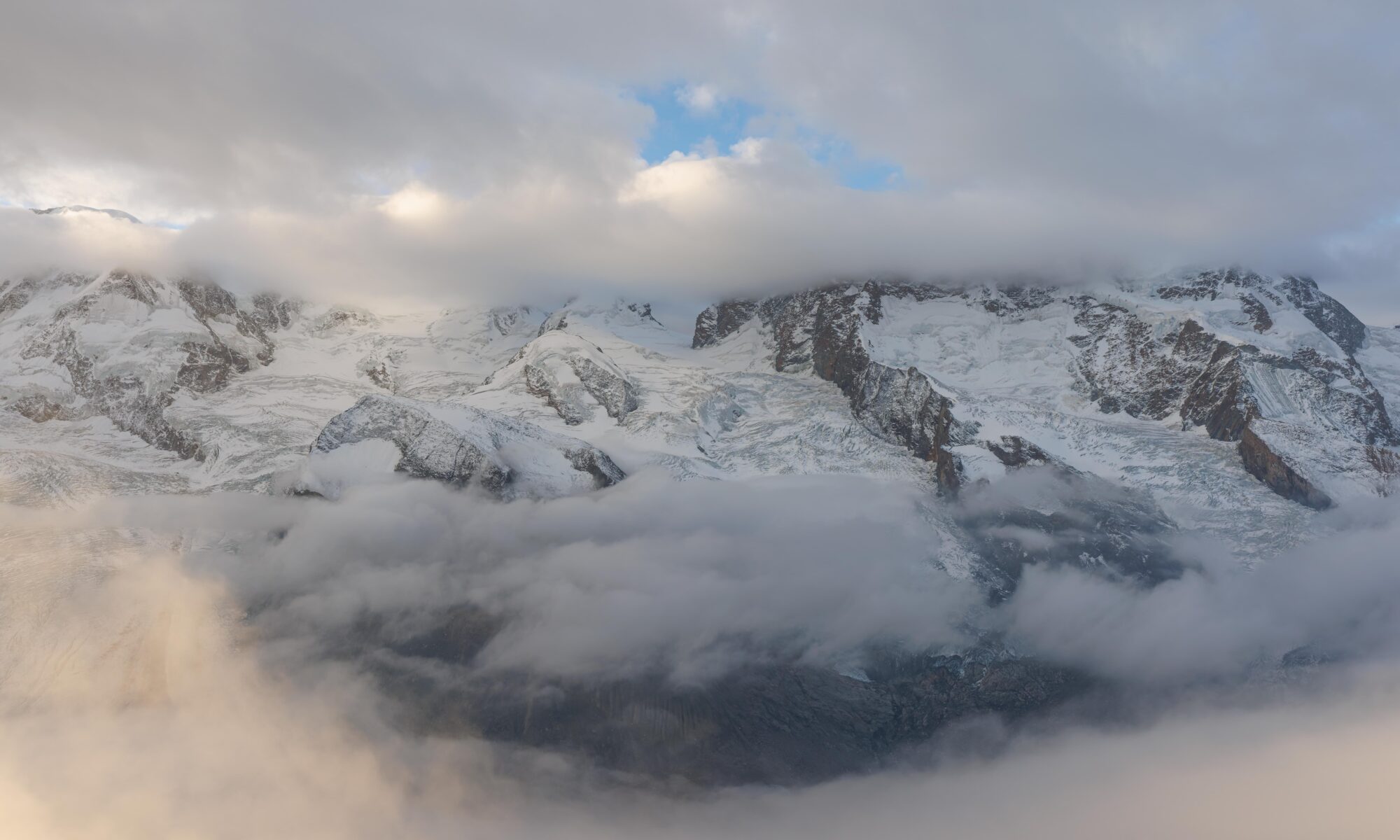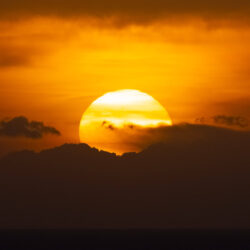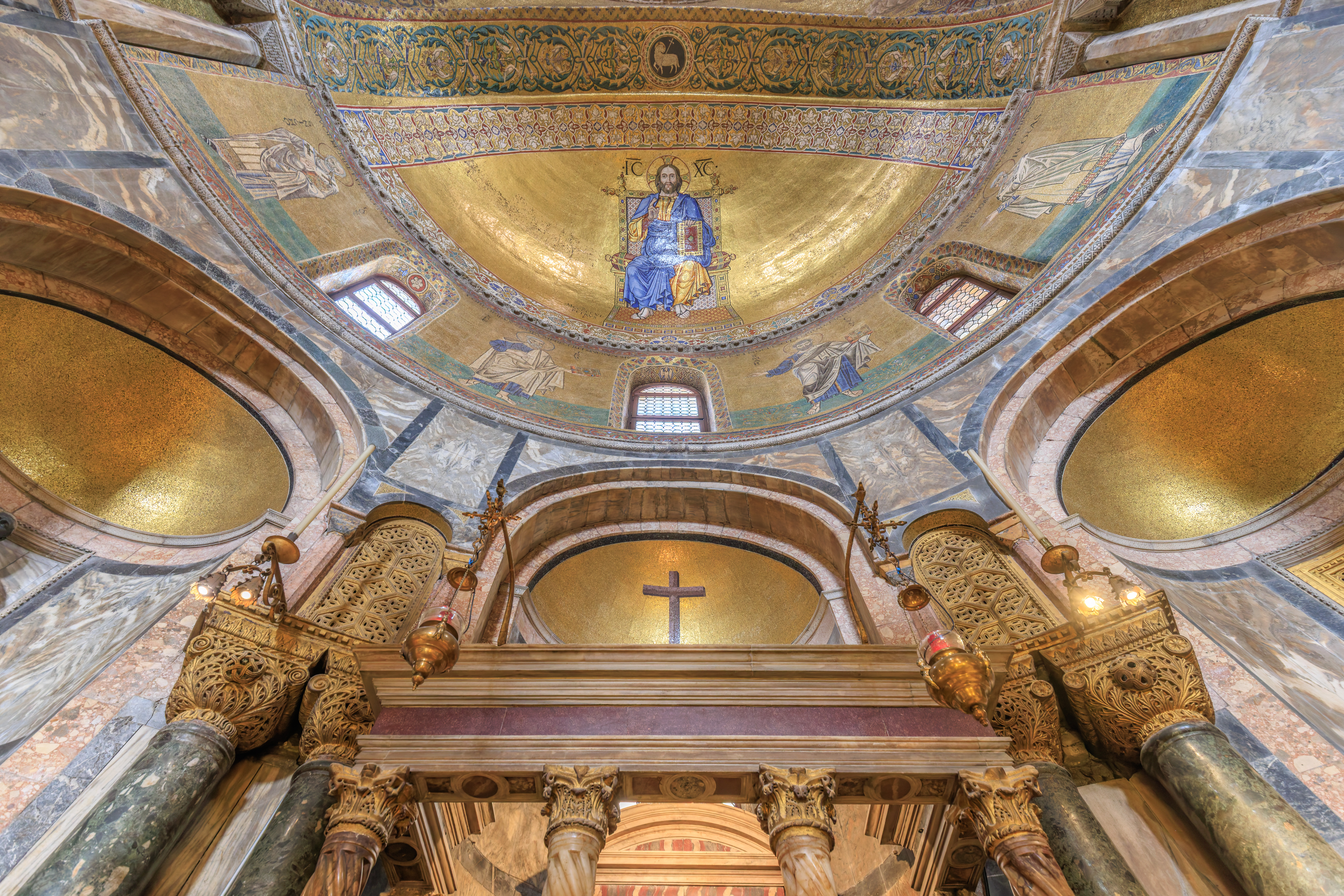After waking up at the Hyatt Centric, we took a vaporetto to Venice‘s San Marco to visit the Museo Correr, followed by the Basilica di San Marco after lunch. We returned to the hotel via the Grand Canal to end the day.
Morning
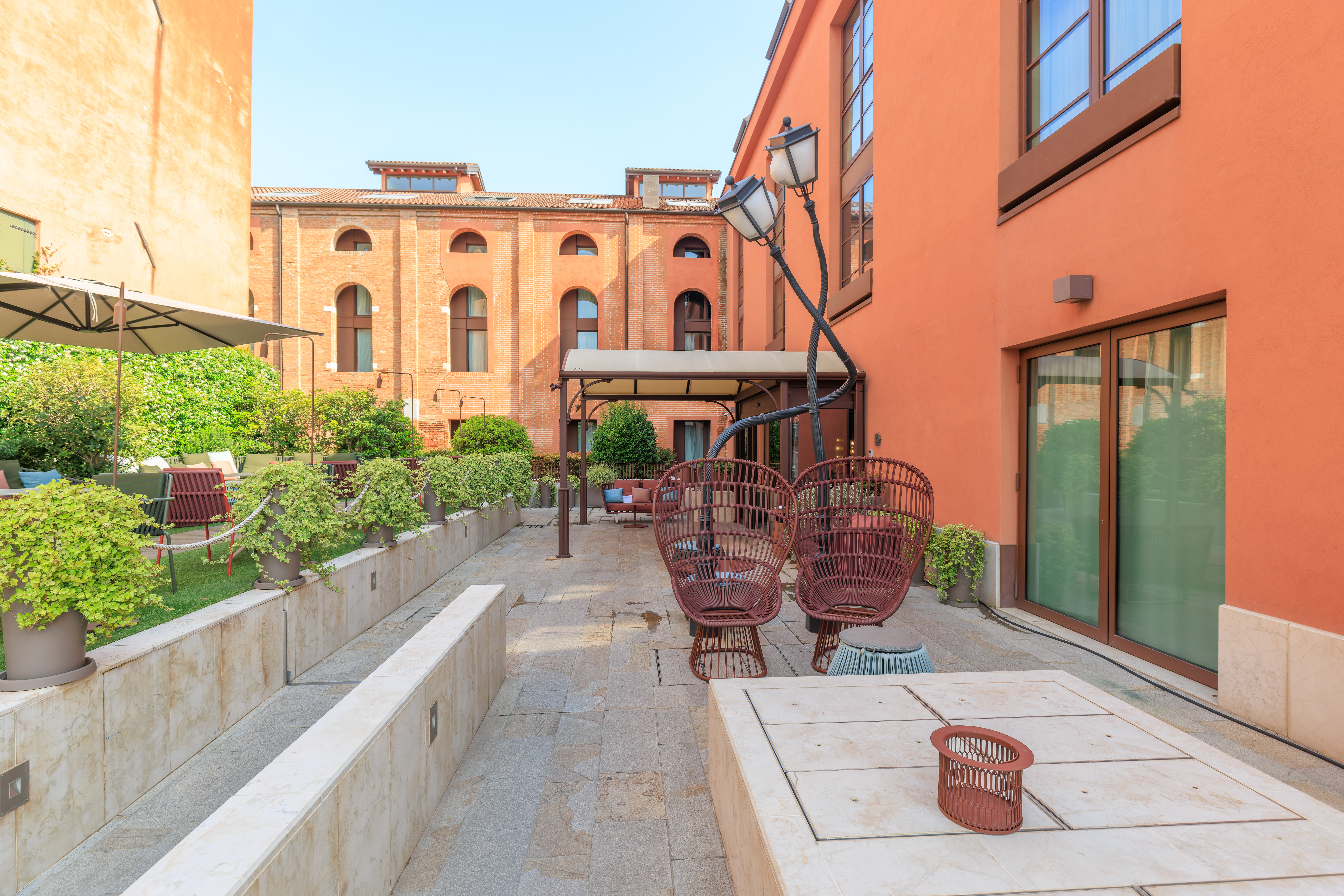
After waking up at the Hyatt Centric Murano Venice, we headed out at around 9:45am. We don’t have complimentary breakfast here as we are not Globalist members of the World of Hyatt program.
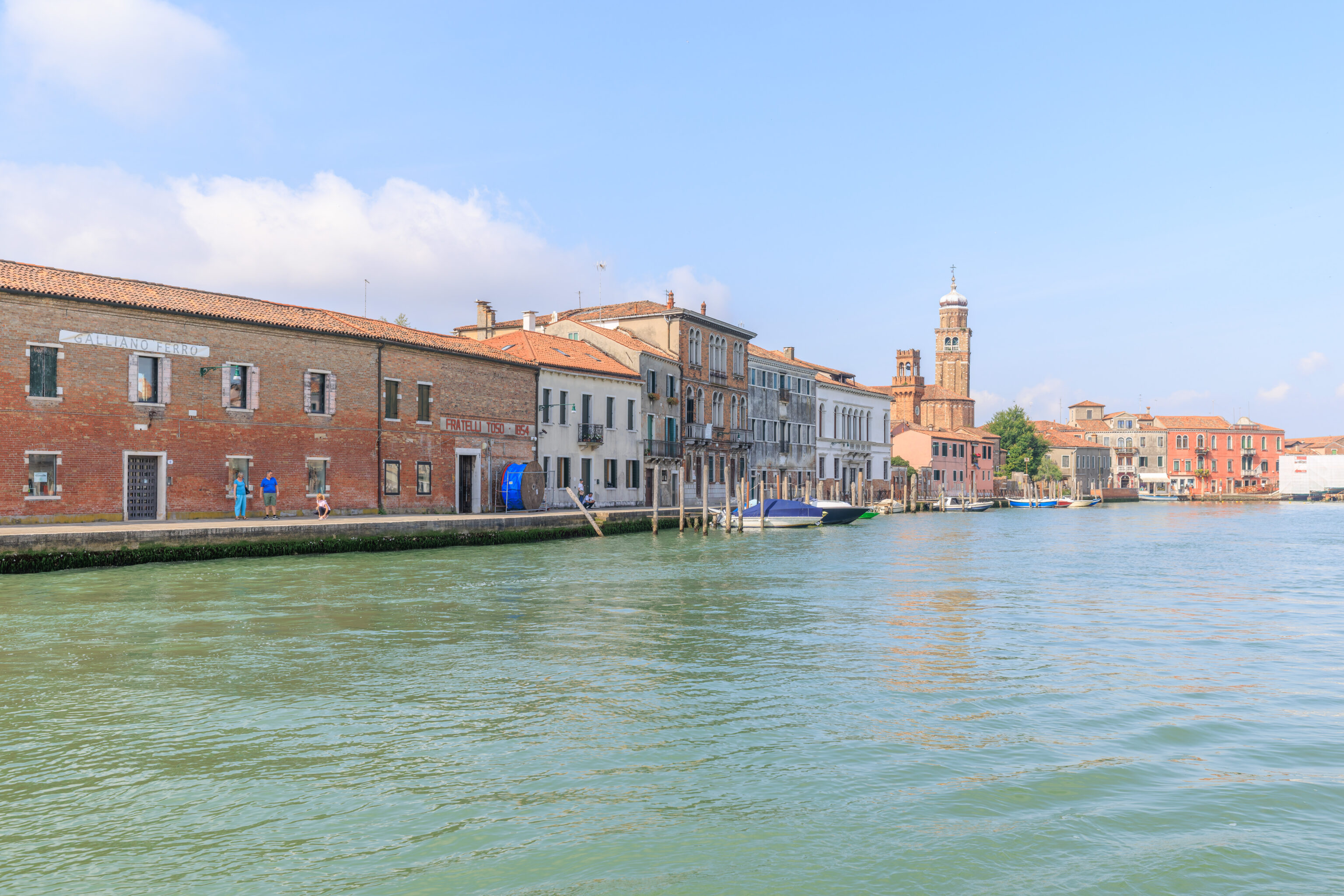
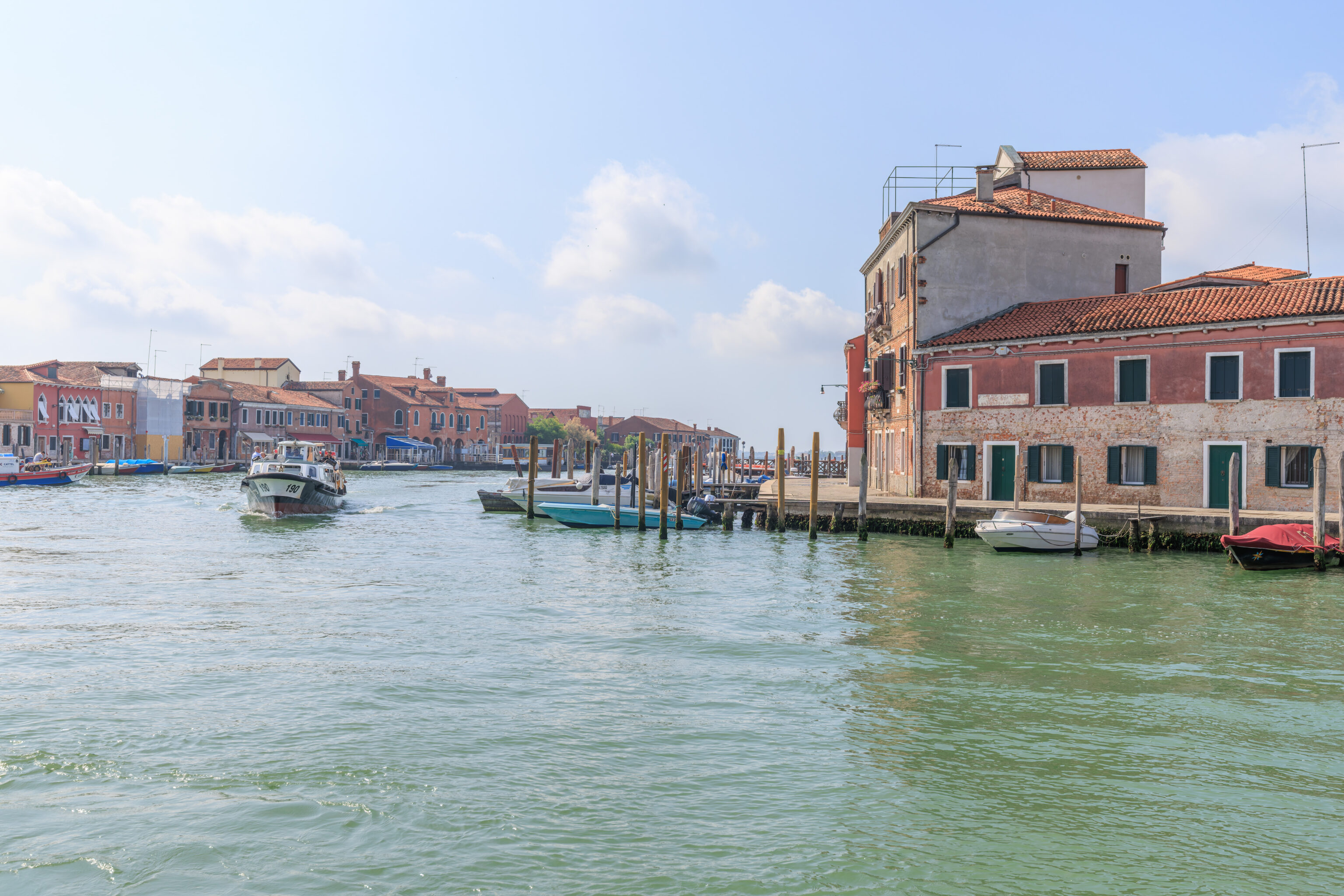
We waited a few minutes for the next vaporetto to arrive.
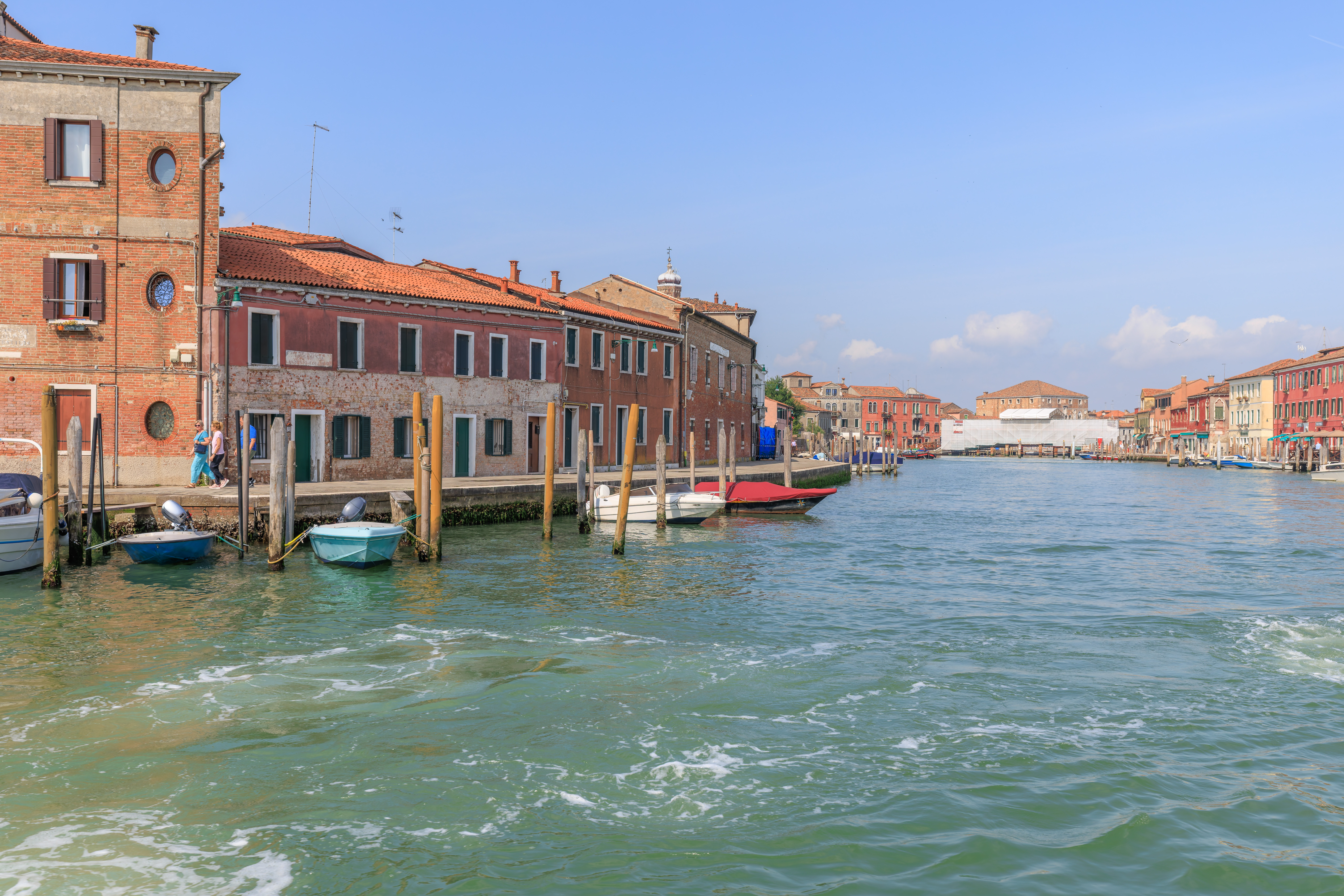
We hopped on the Line 4.2 vaporetto, the counter-clockwise loop route.
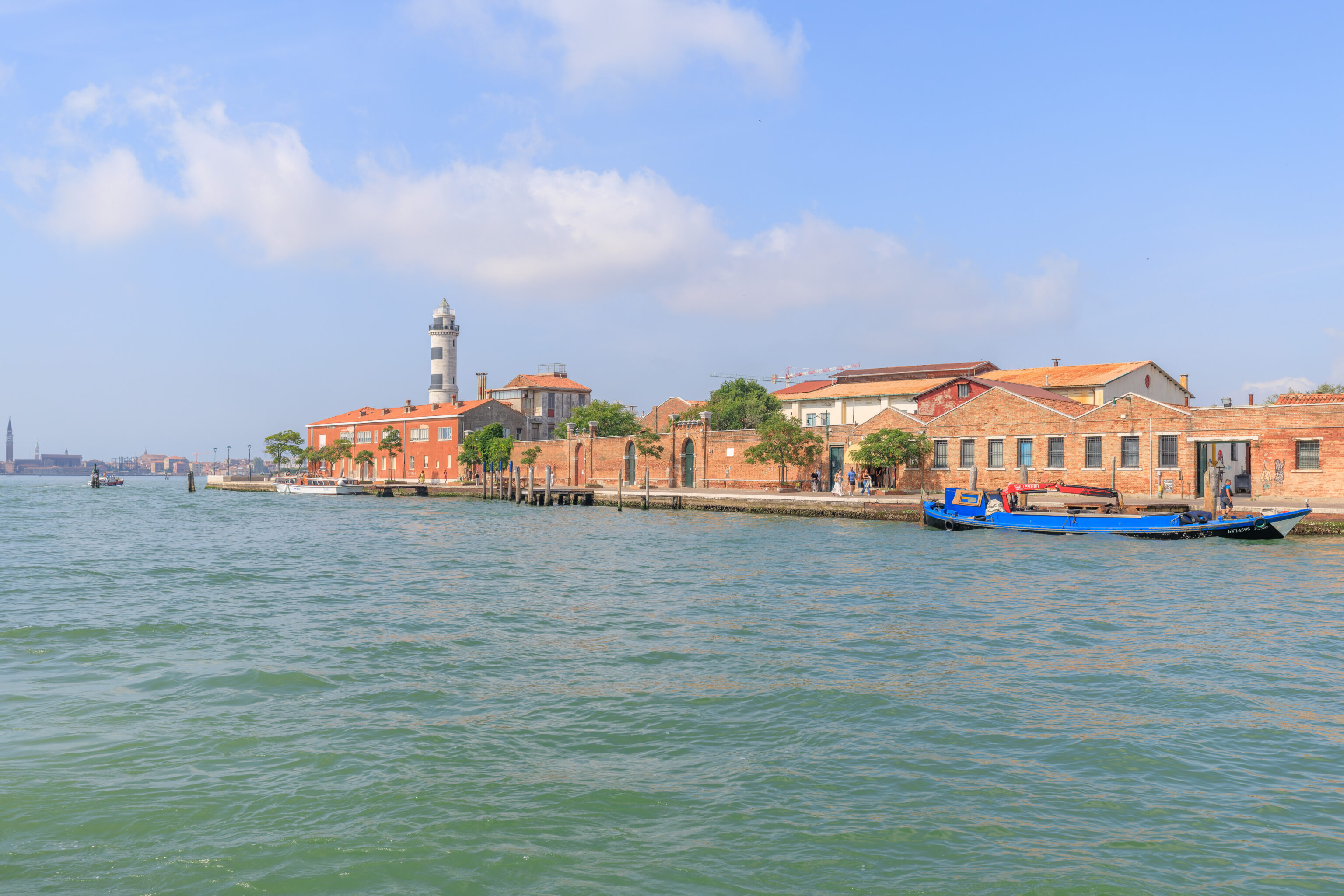
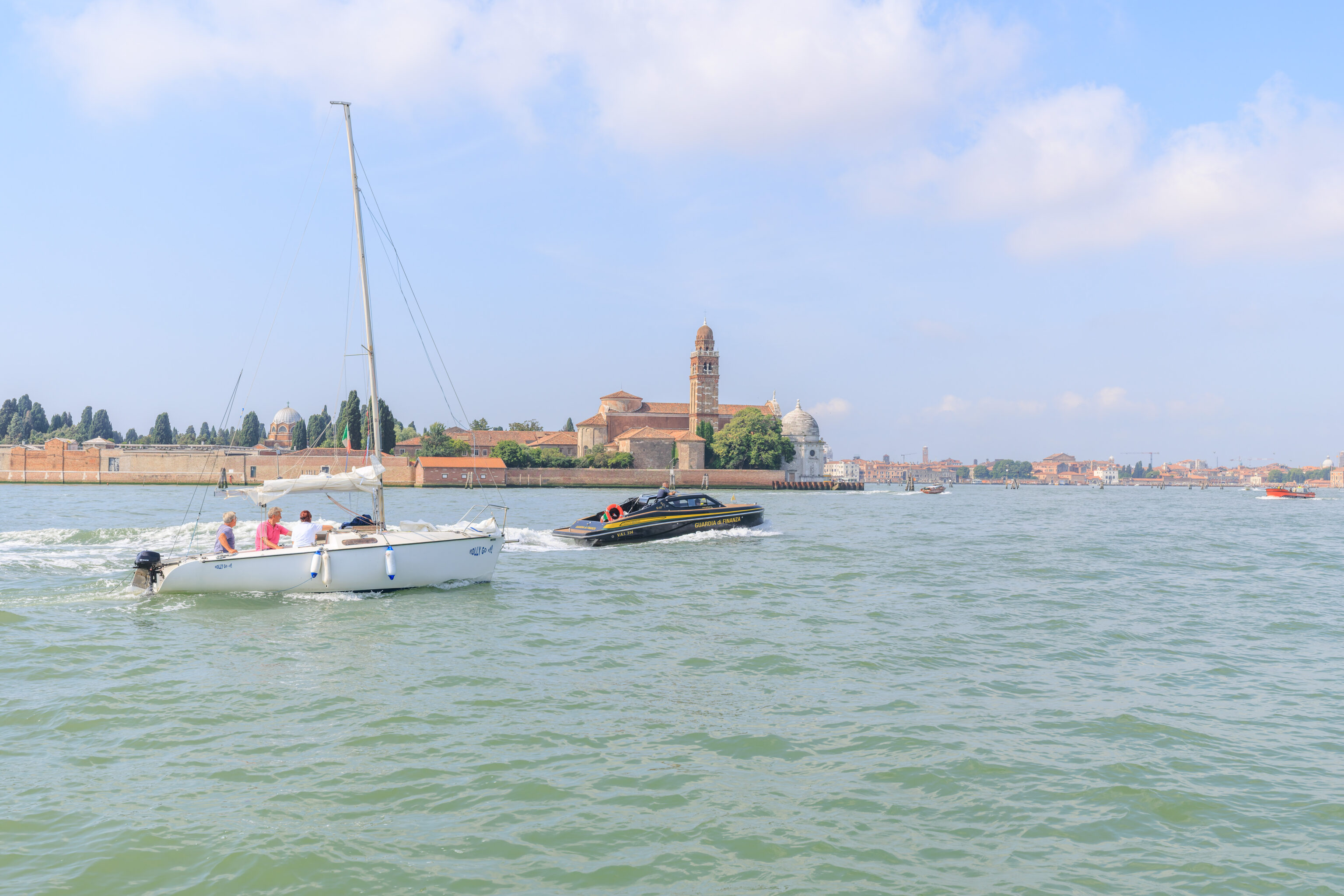
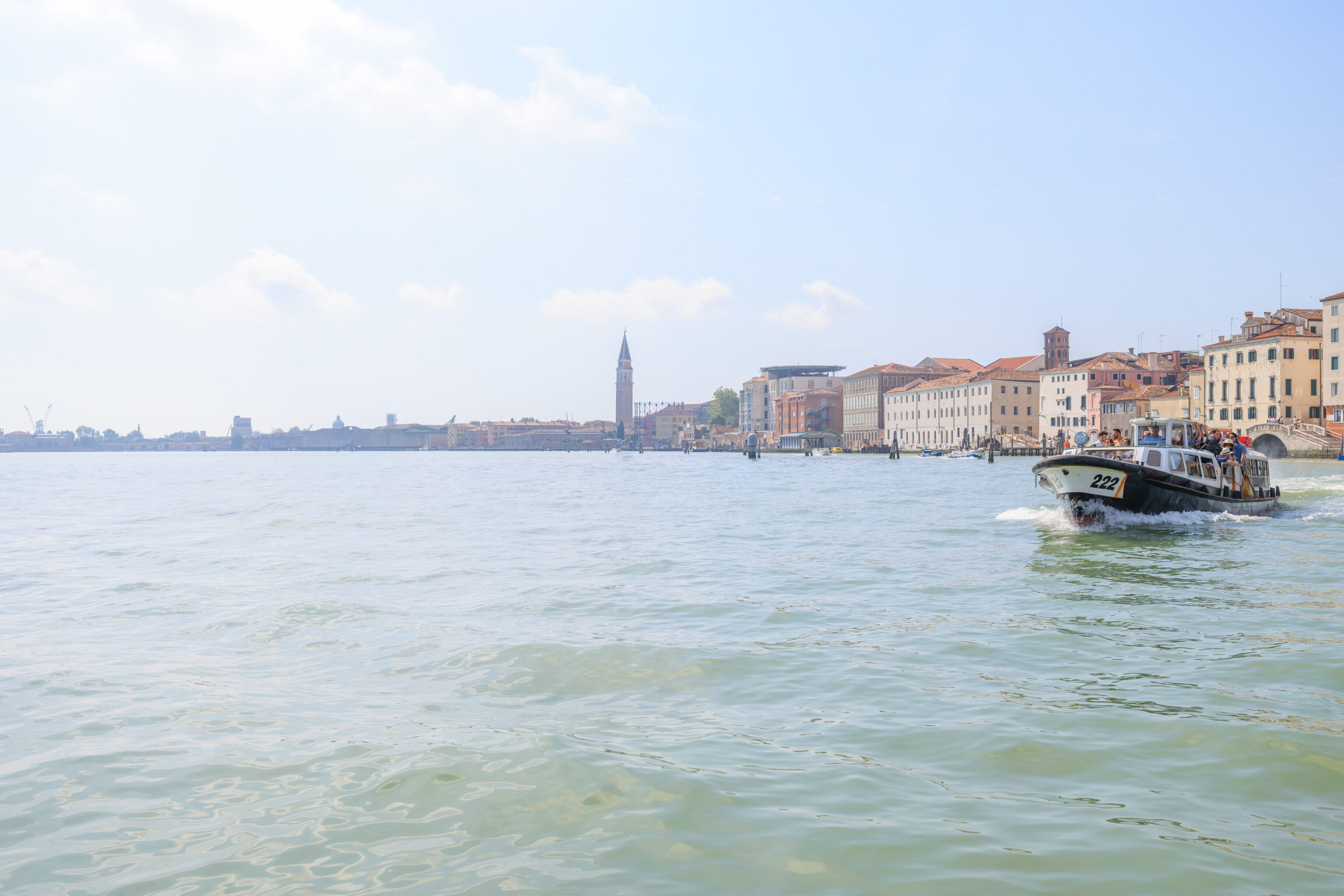
The view was familiar as we headed to Ft.e. Nove.
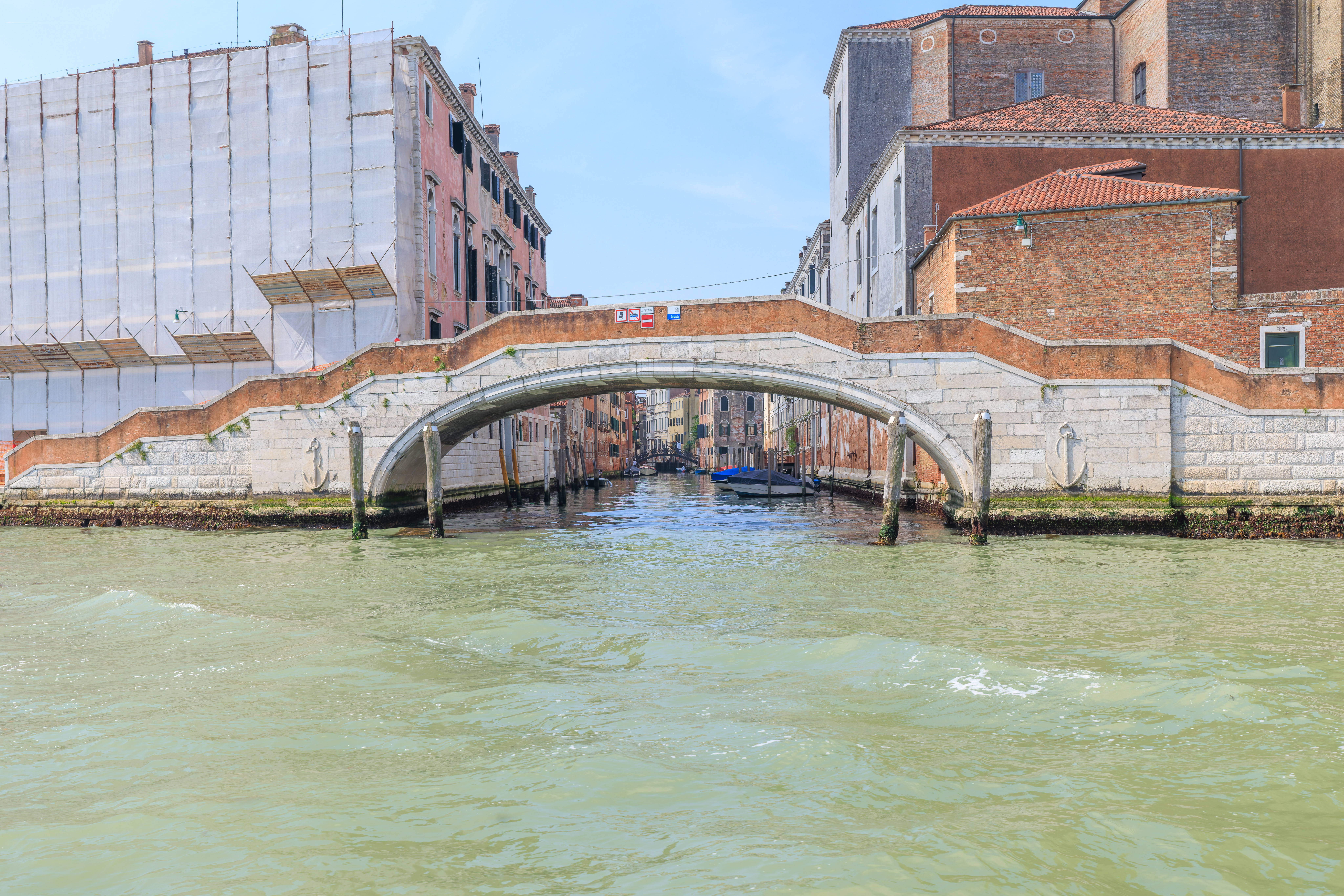
We didn’t get off here though but stayed on. From here, the north side of Venice, we headed to the west.
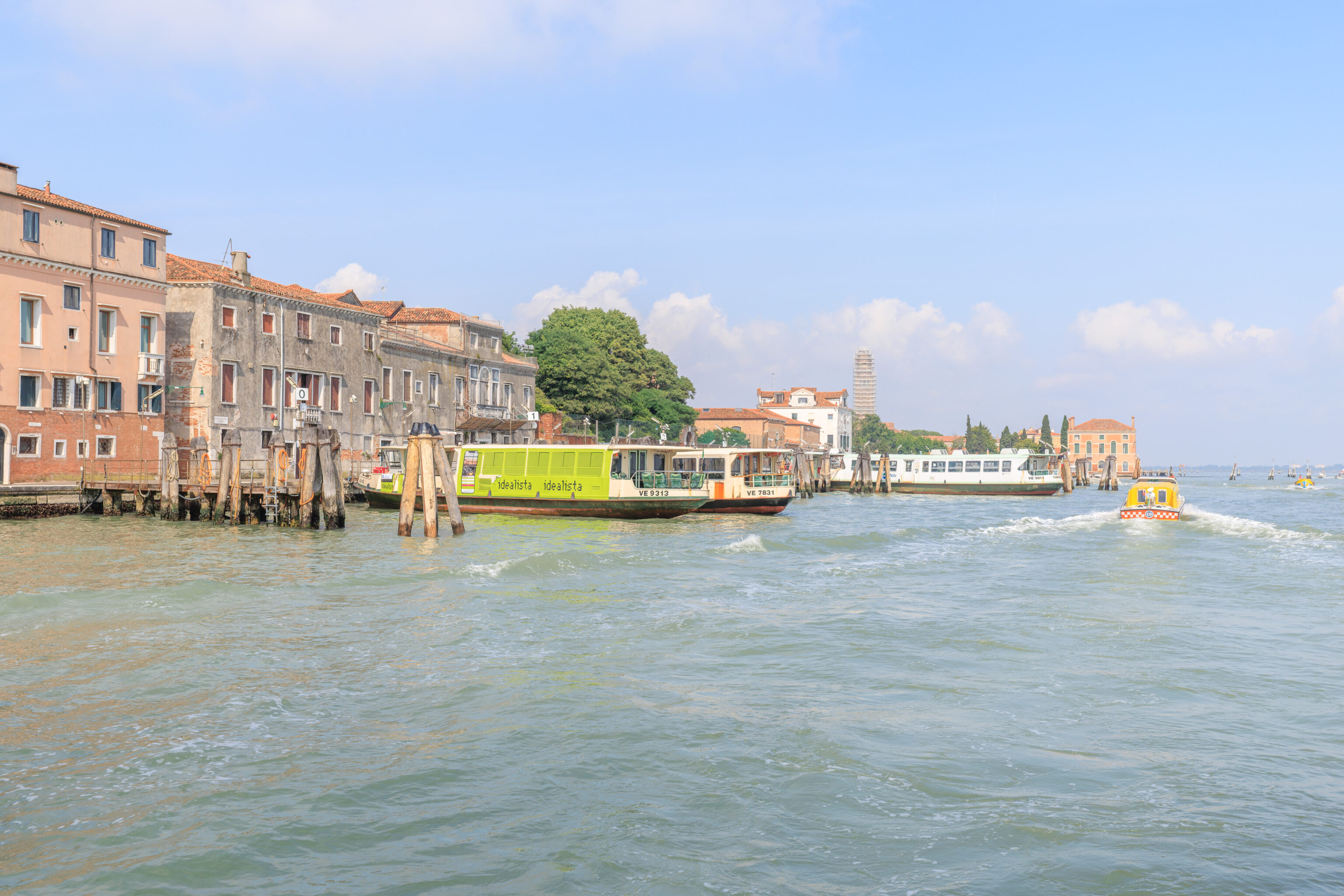
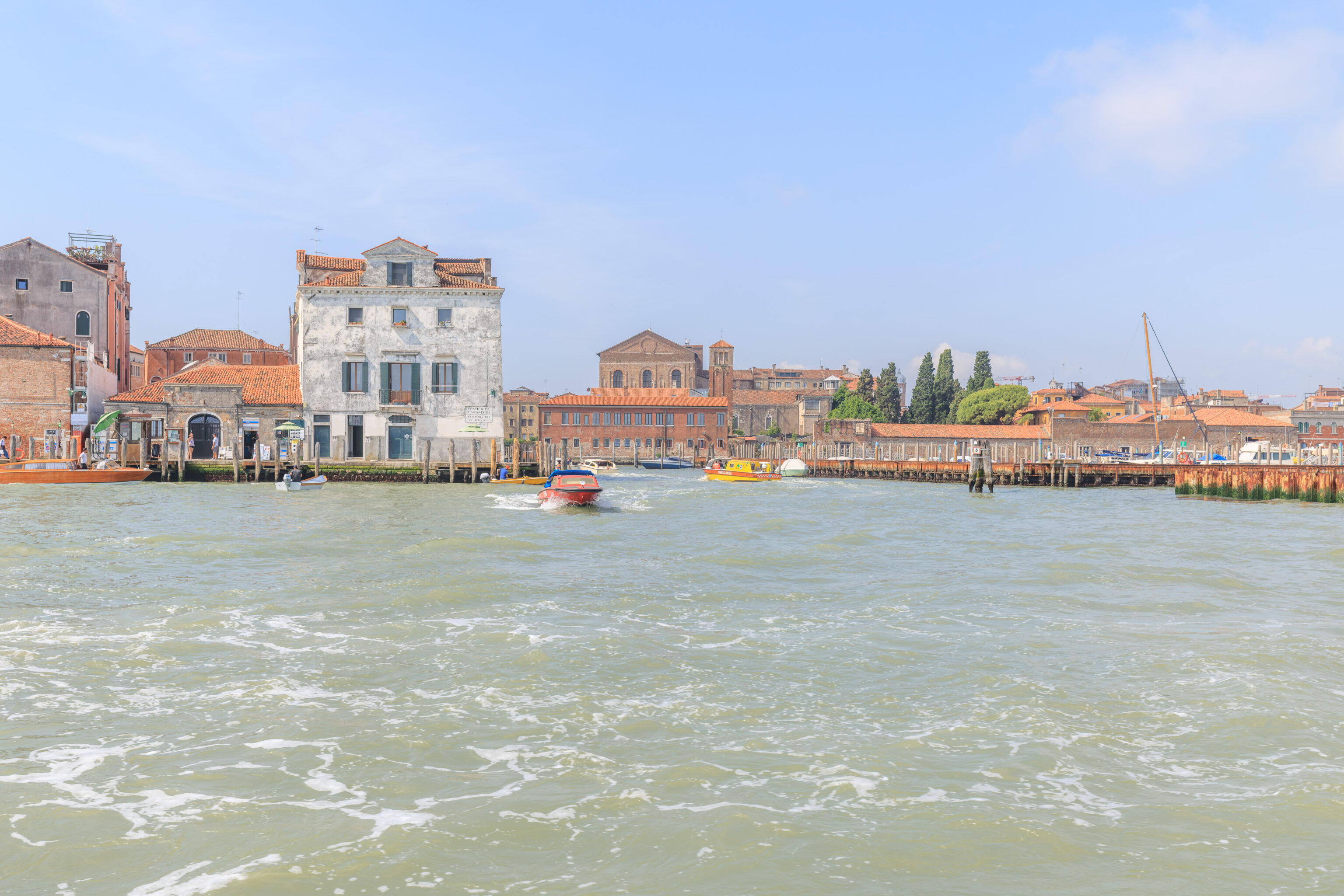
An ambulance boat passed us as we left the quay.
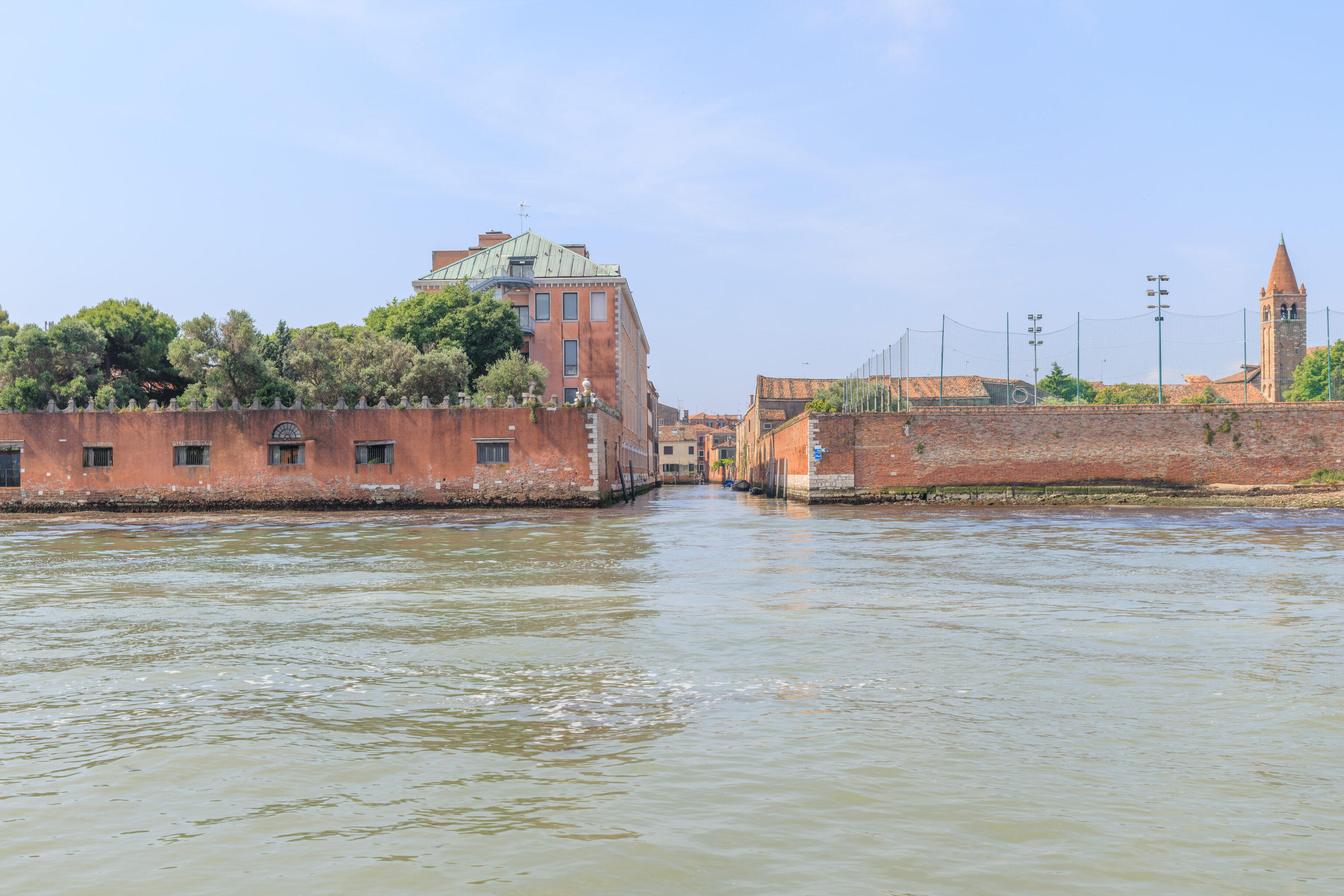

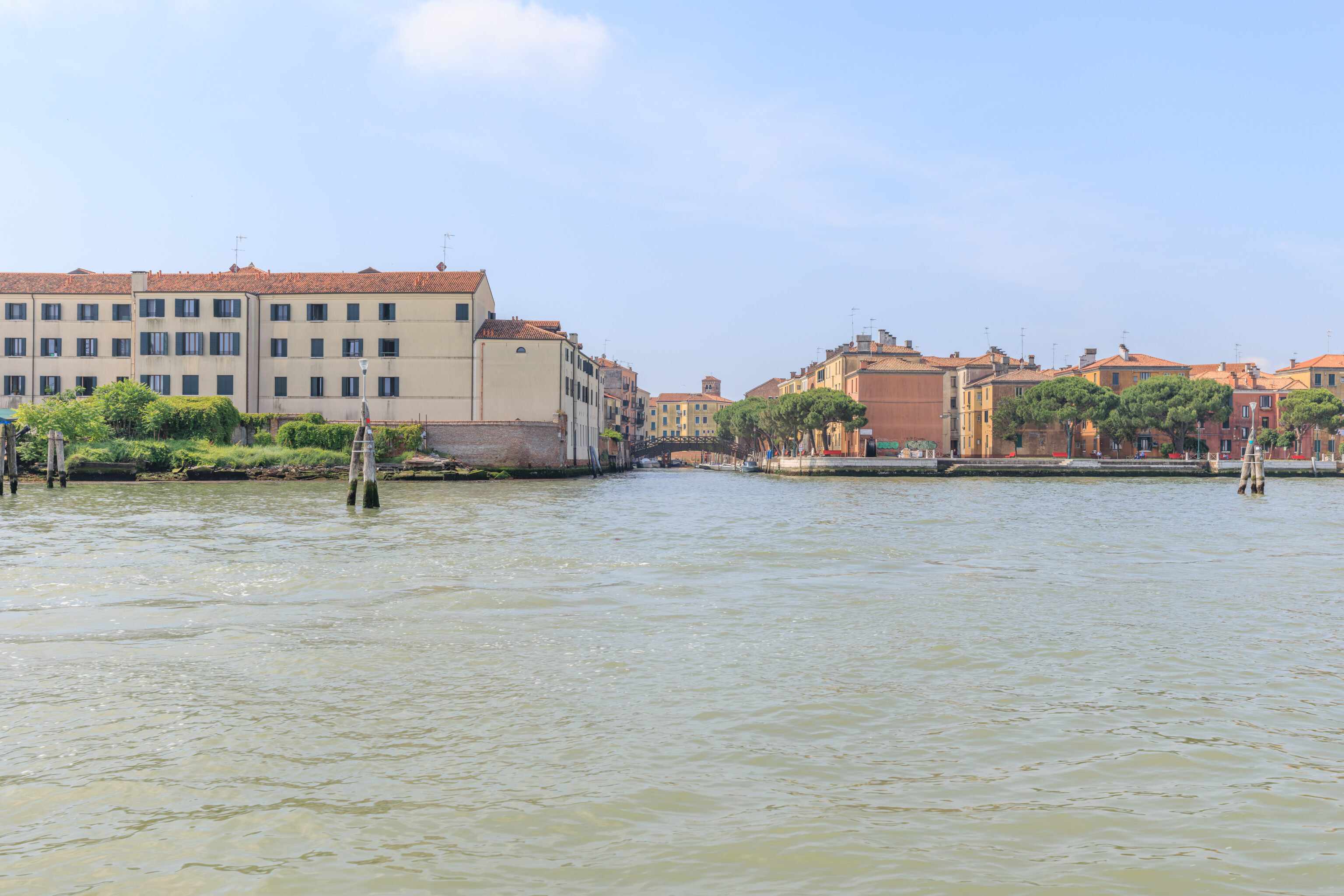
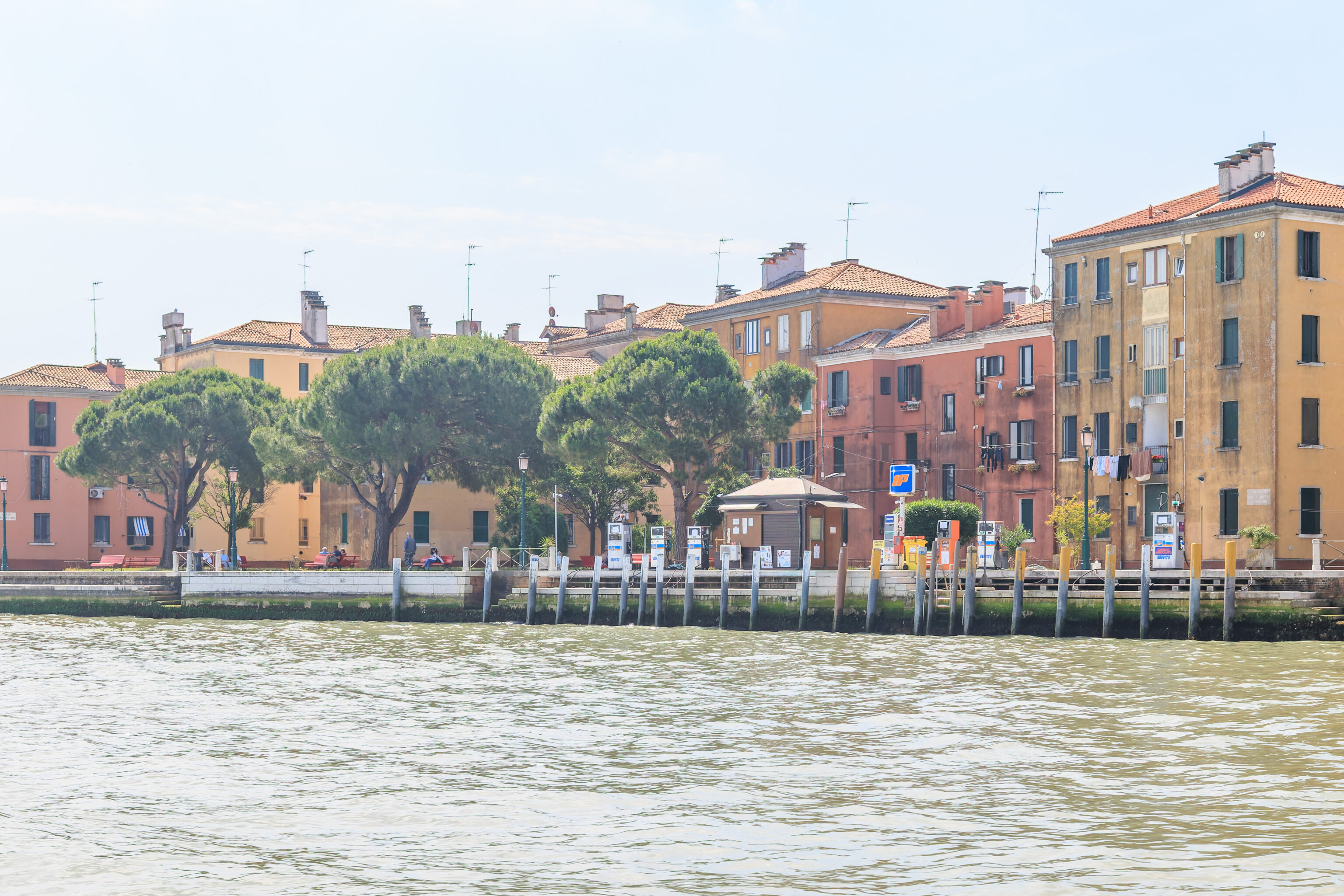
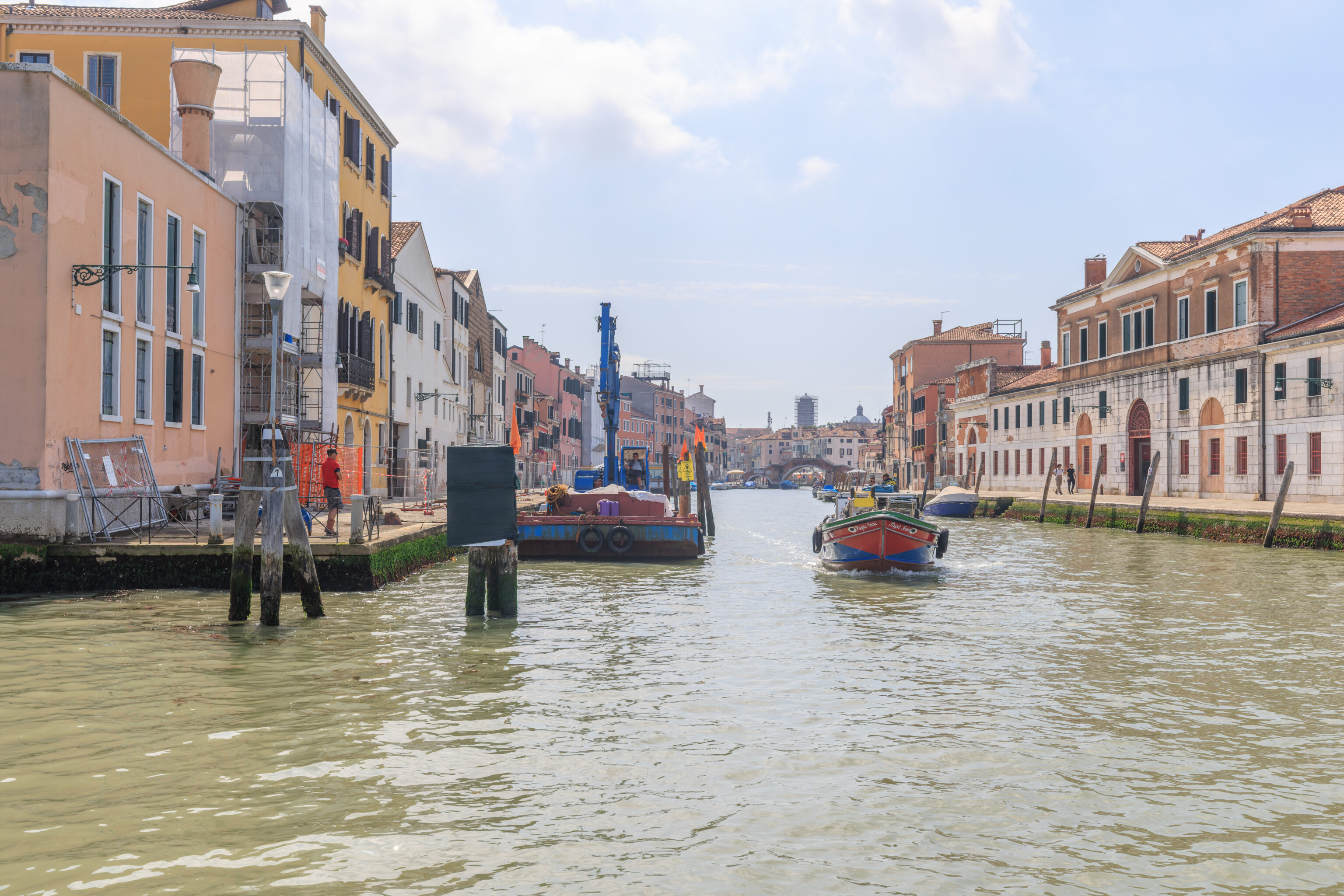
After about ten minutes, the ferry turned to the left into a wide canal, the Canale di Cannaregio. This canal leads to the Grand Canal.
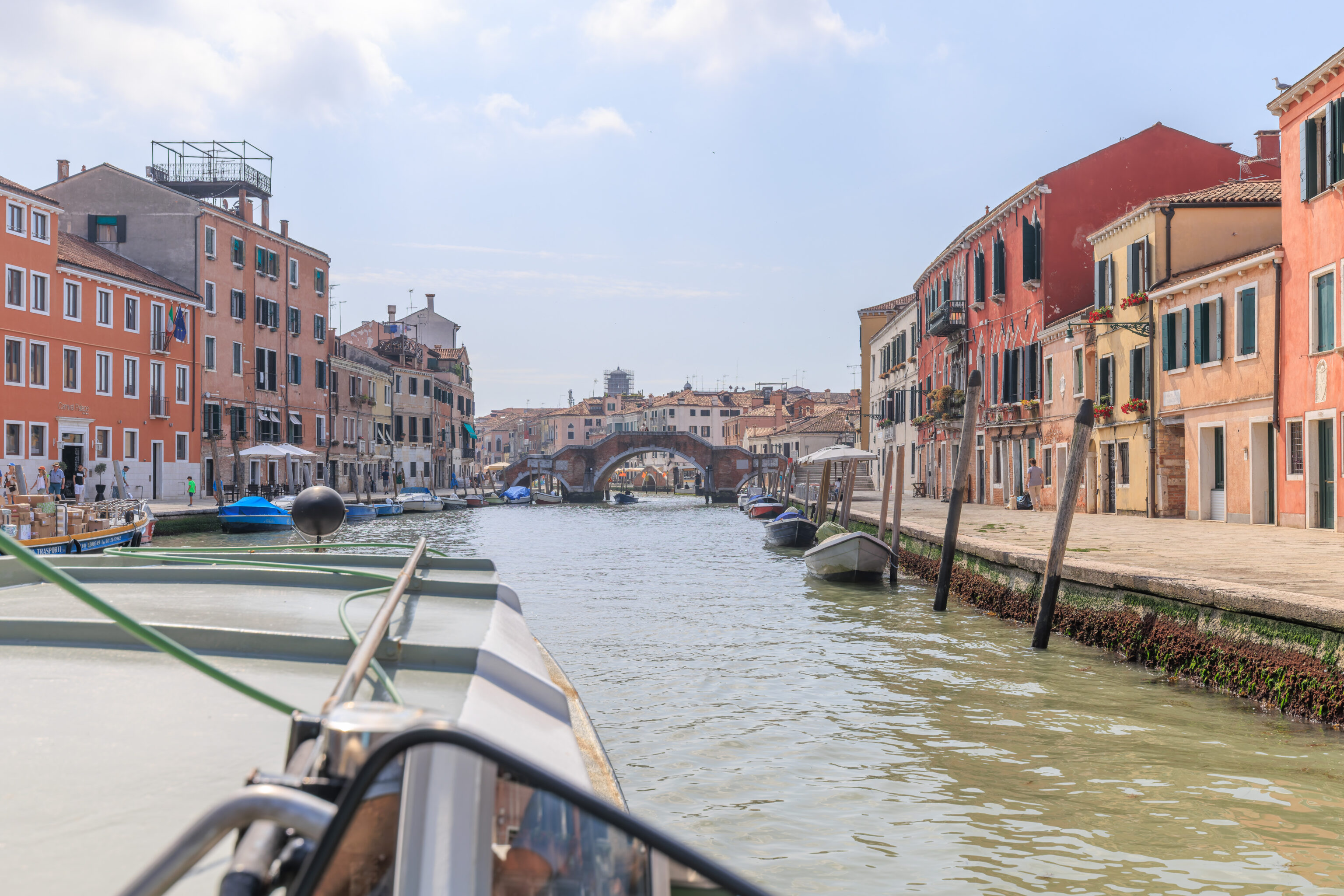
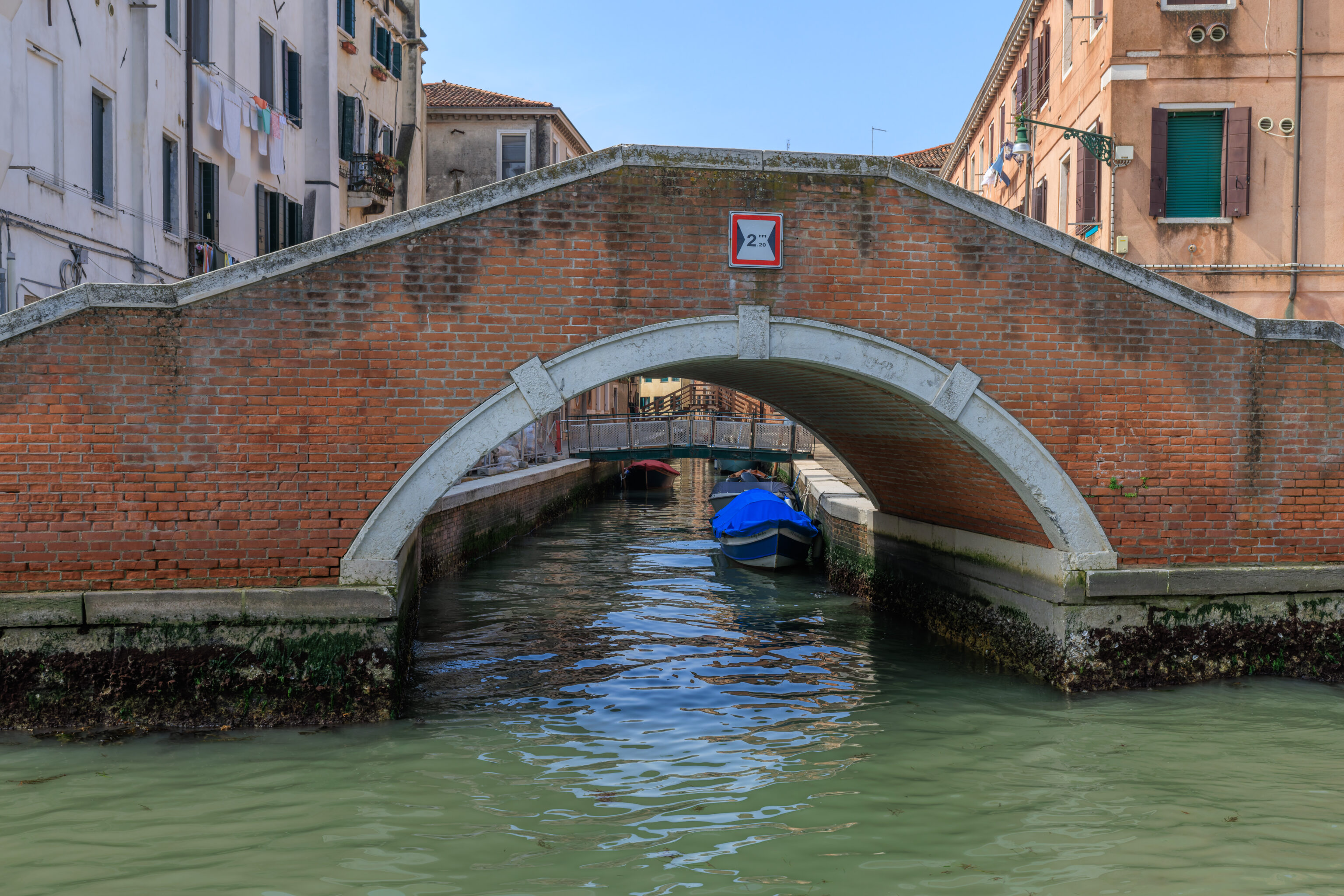
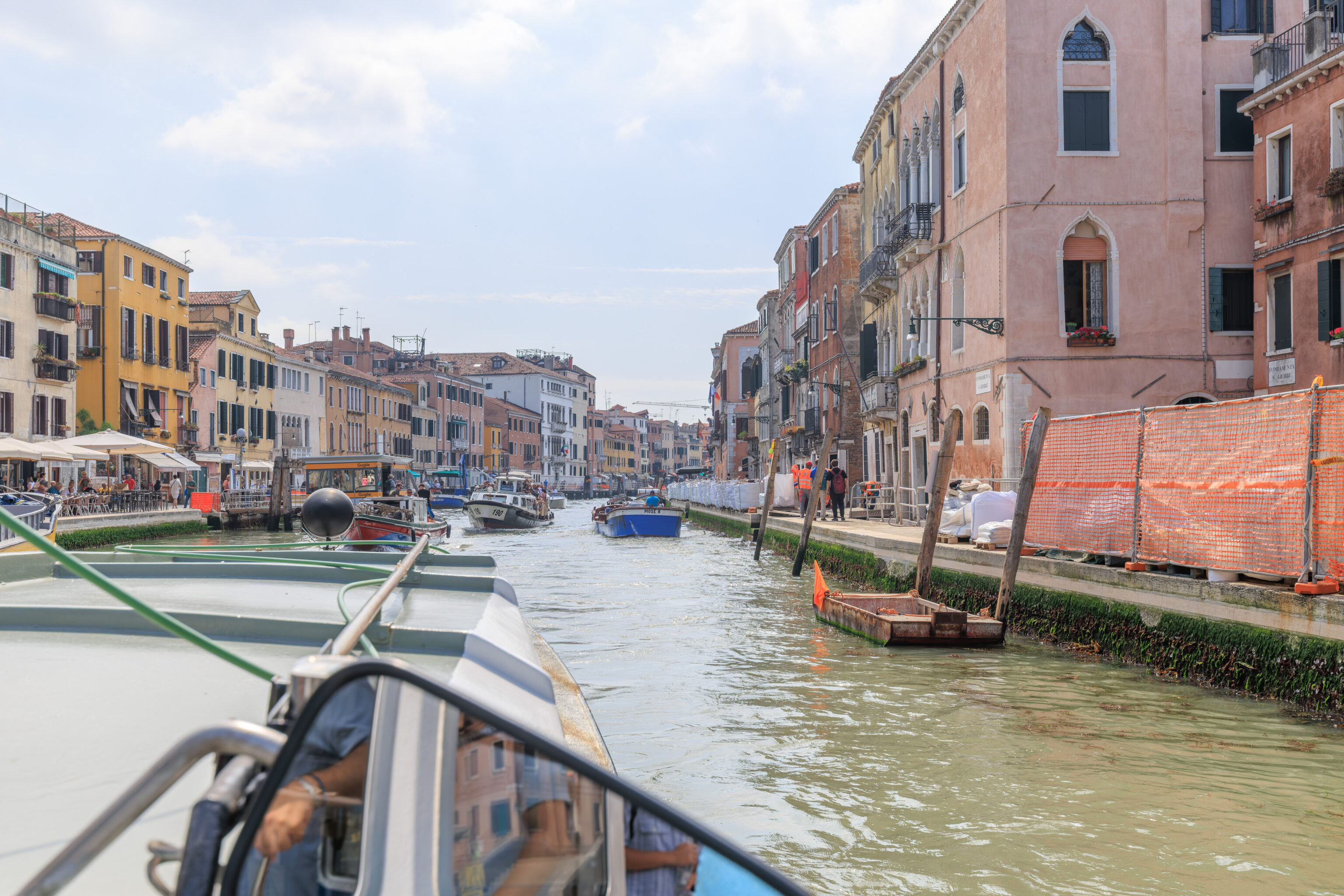
This canal was pretty busy with various types of boat traffic. We were here yesterday but going in the opposite direction when we left the train station on Line 3 to go to Murano. So, while we have been here, this is our first time taking pictures as we had too much luggage to do so when we arrived.
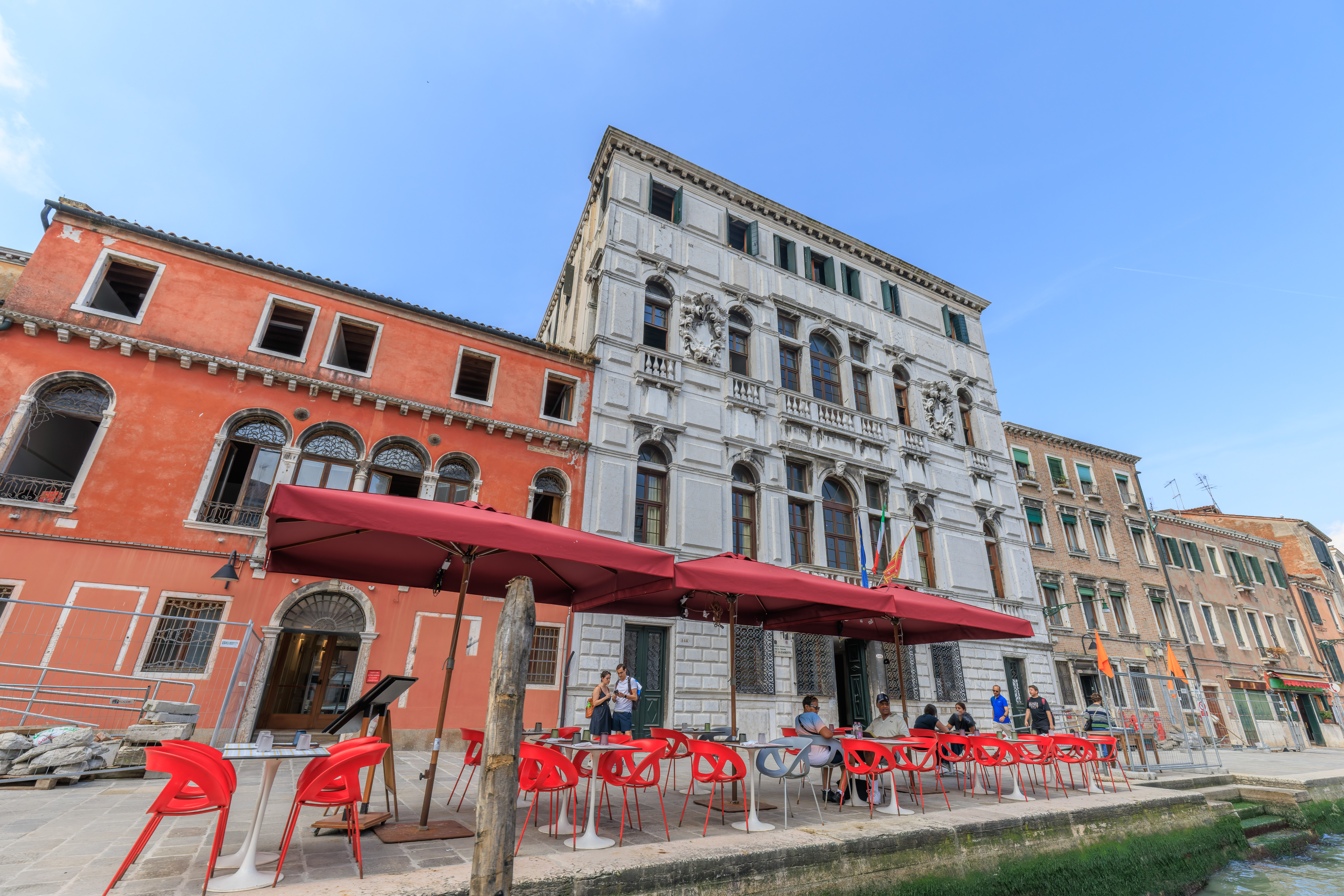
There were various larger buildings here along this canal. The one at center here is the Palazzo Savorgnan, from the 17th century. It seems to currently be used by the Francesco Algarotti Institute of Higher Education.
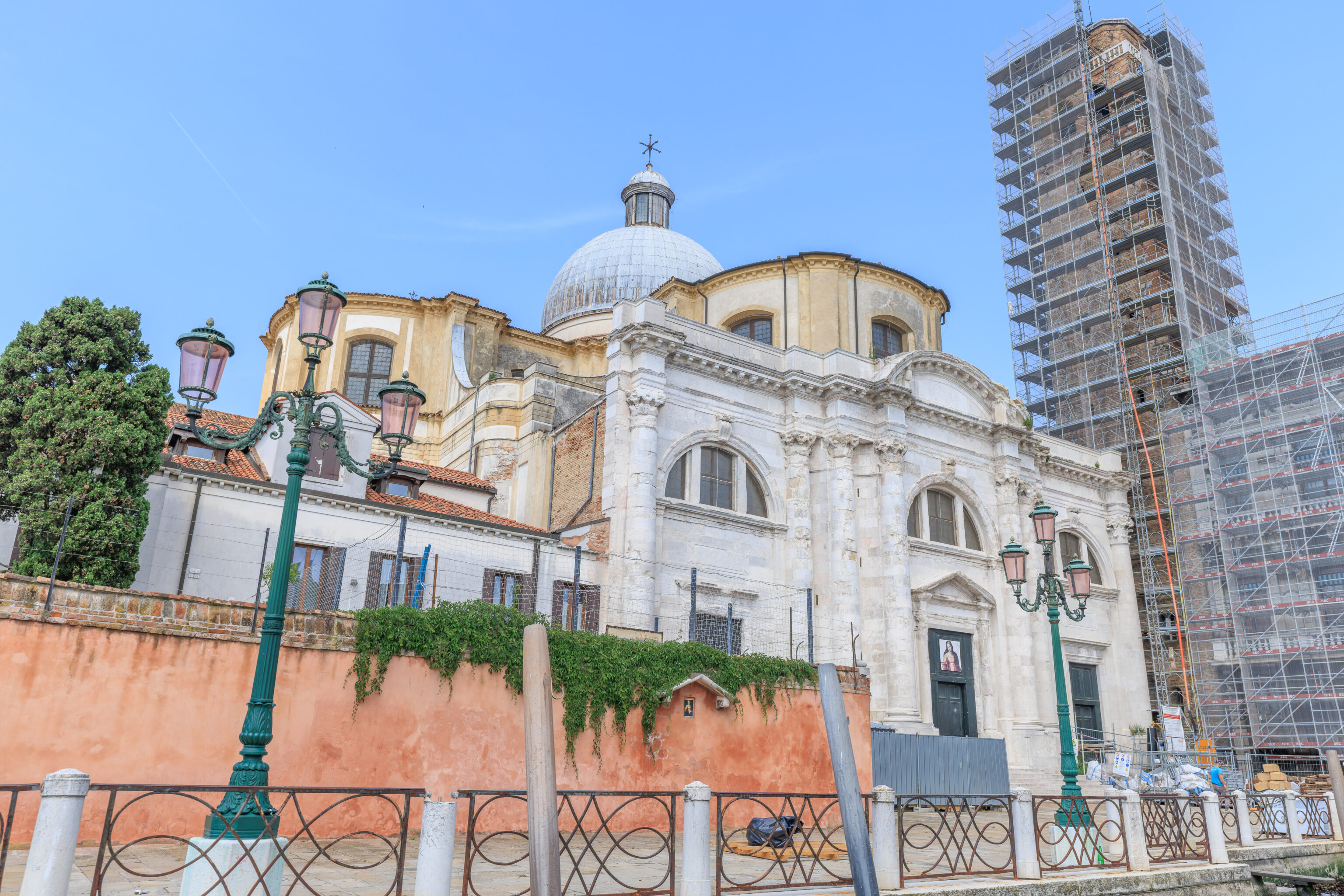
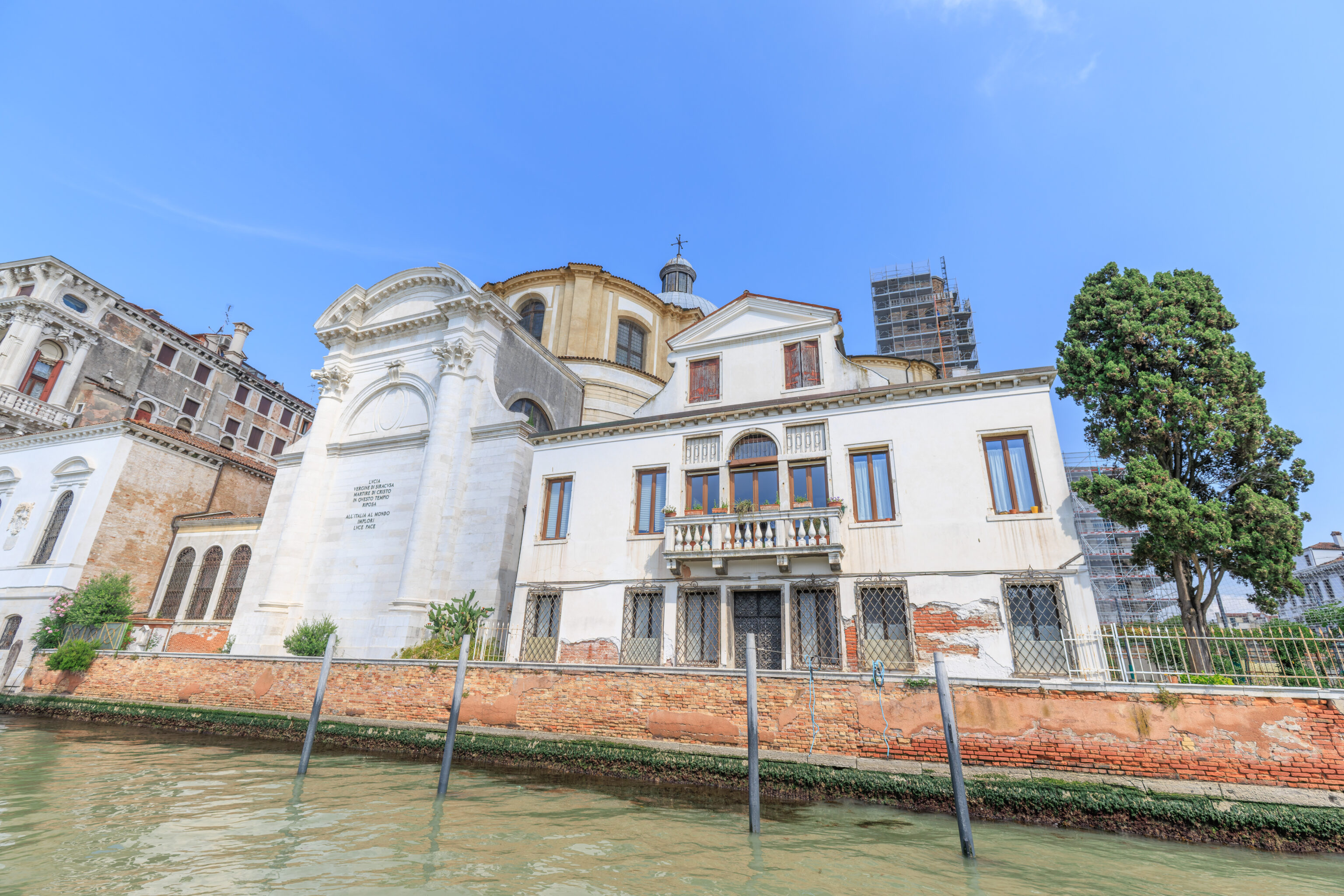
This church, where we turned right into the Grand Canal, is the Santuario di Lucia (Sanctuary of Lucy). The history of this church is confusing to read. It seems there have been multiple churches here, or in this general area, with this current structure built in the 18th century. A past version of this church was dedicated to San Geremia (Saint Jeremiah). However, Saint Lucia‘s body was moved here in the 13th century after drownings during a pilgrimage to the church where her body was previously located due to too many pilgrims. Well, not really here. That church was where the train station now stands nearby. This is why the train station is called Venezia Santa Lucia.
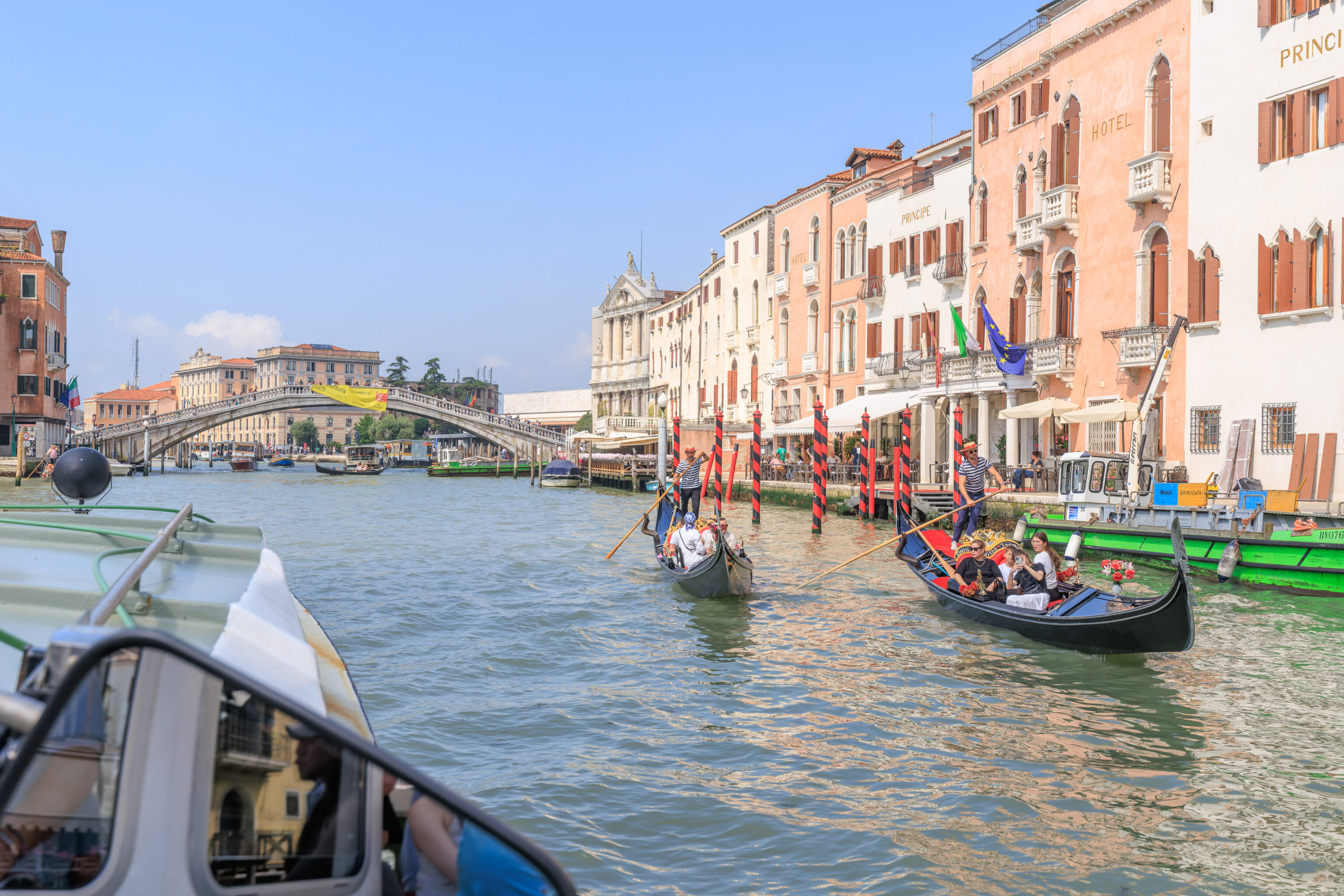
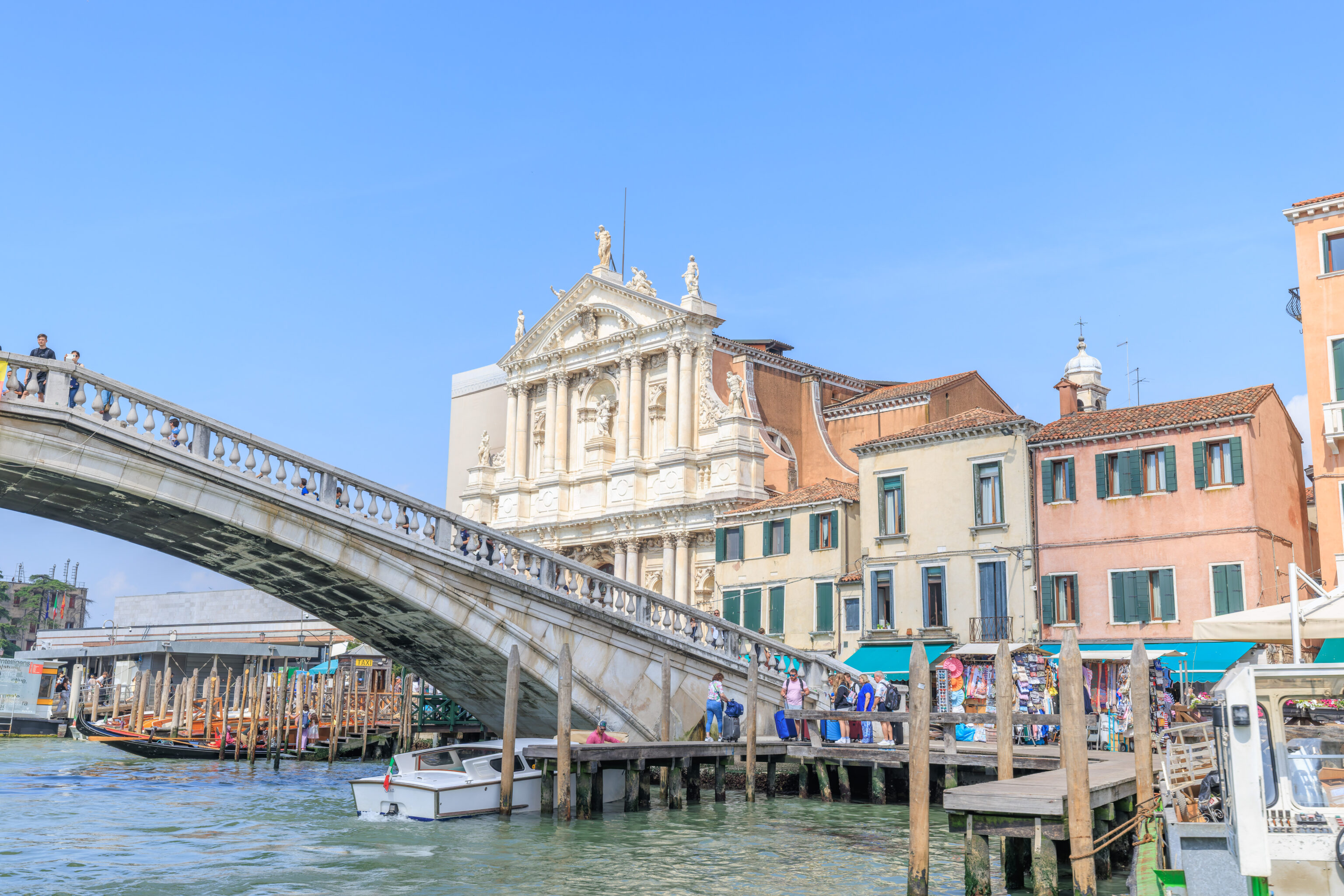
We were originally going to get off the vaporetto here at the train station quay, Ferrovia, and continue on a different line to go through the majority of the Grand Canal. However, we decided to stay on.
The church here by the bridge is the Chiesa di Santa Maria di Nazareth. It is adjacent to the northeast corner of the train station.
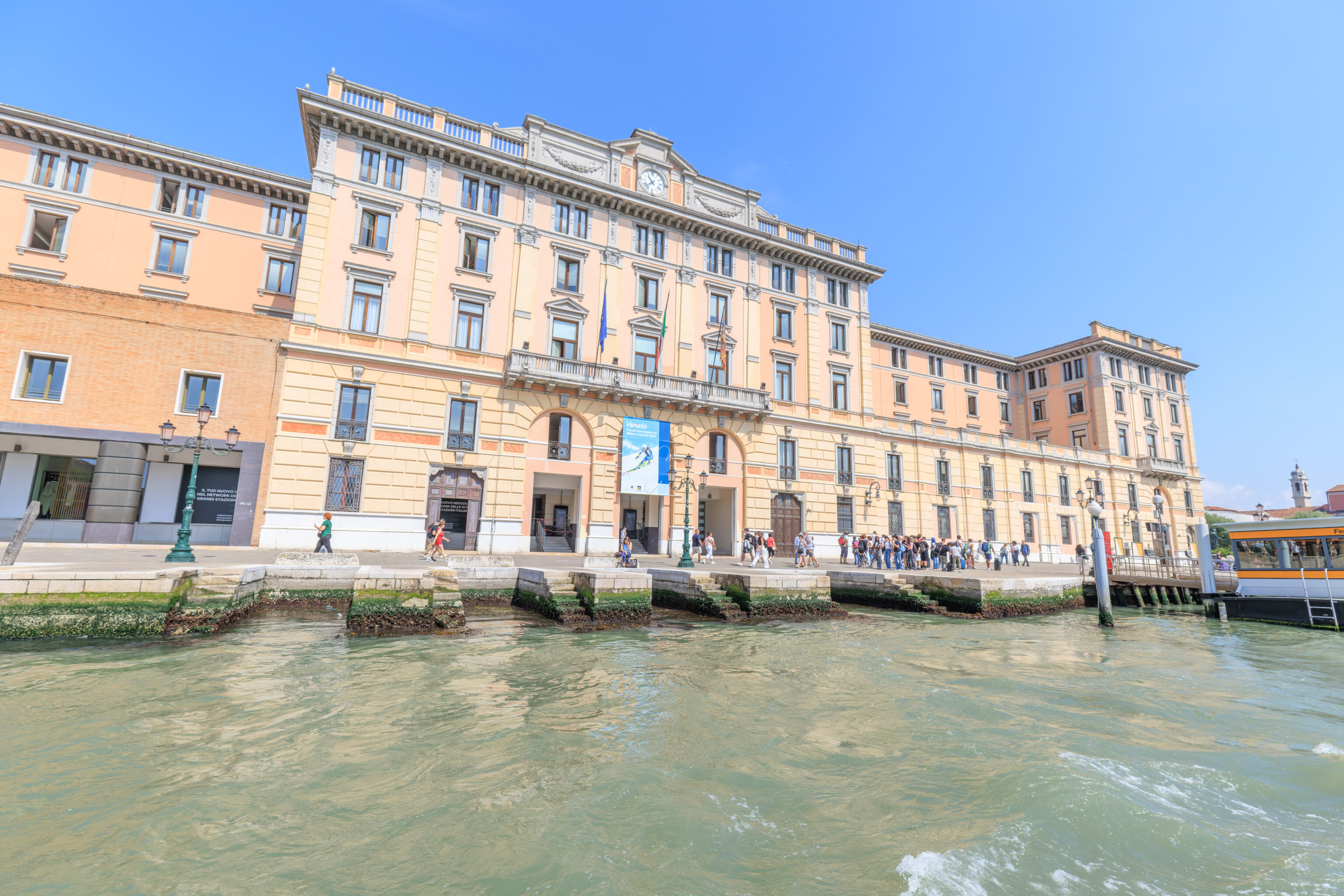
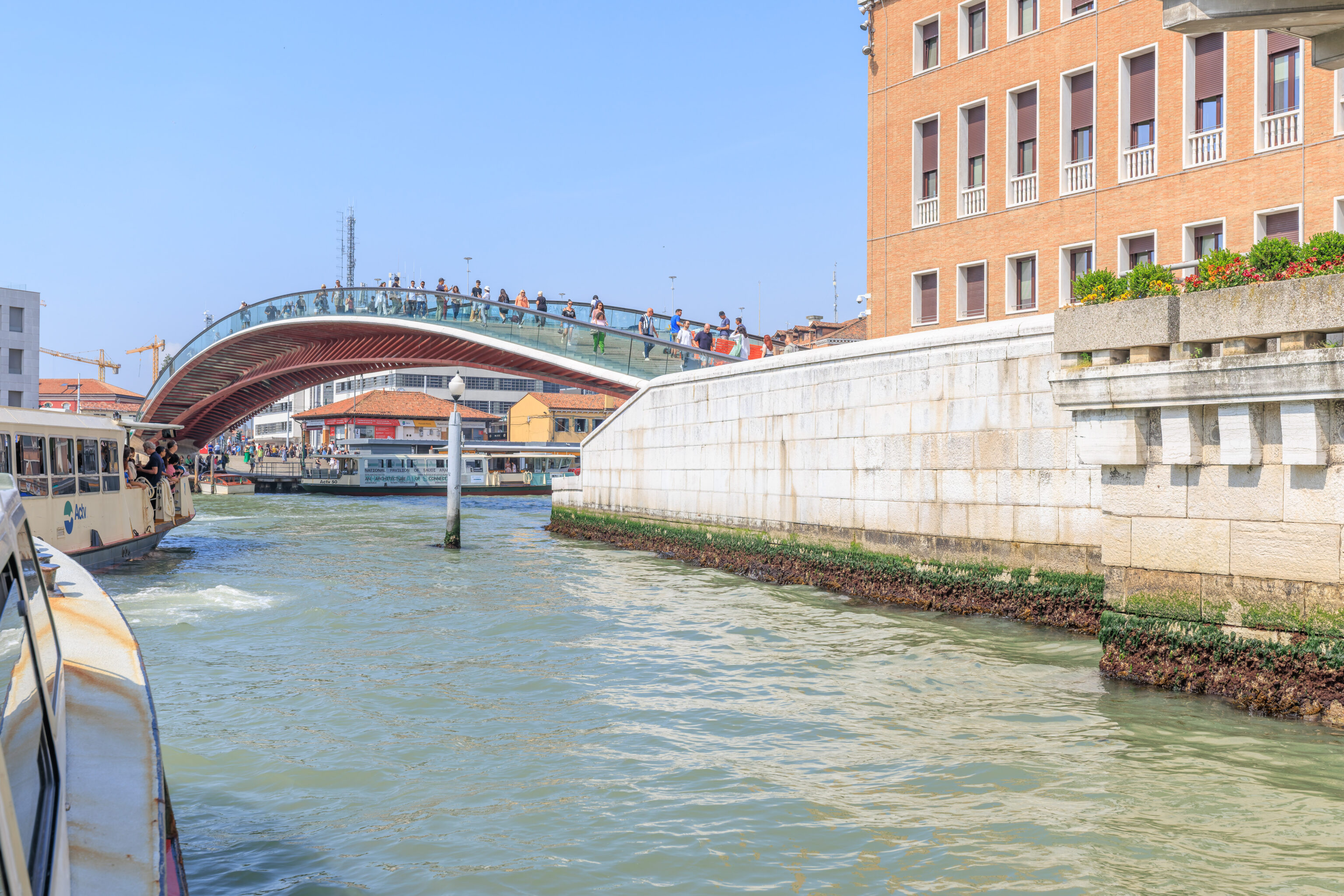
It took a bit of time to get through this area as it was a bit congested.
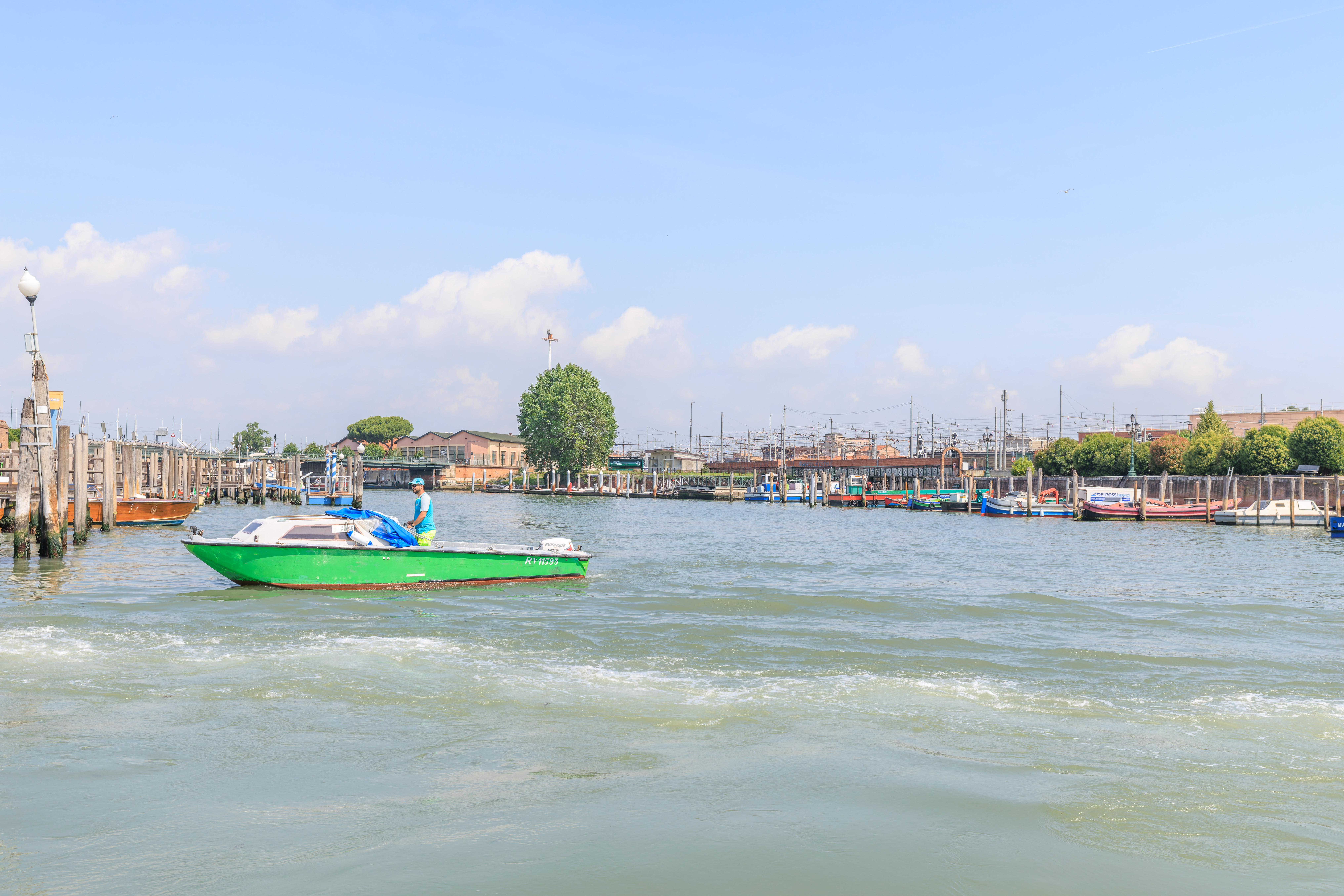
The vaporetto turned to the left and departed the Grand Canal near where it flows out into the lagoon.
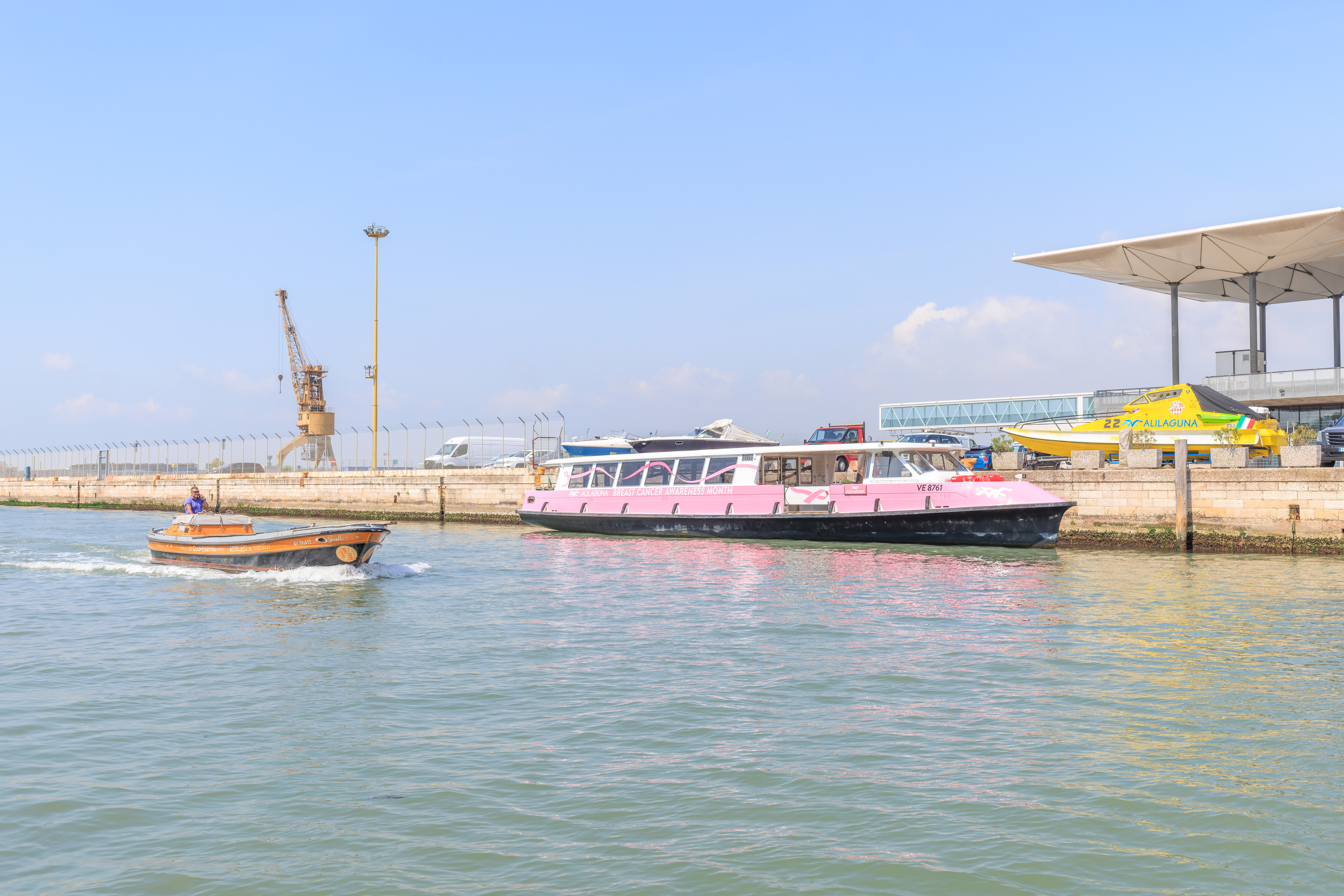
We headed southwest on a very straight canal next to a long pier, possibly part of the cruise ship terminal and also possibly used for freight. We saw a pink boat that belongs to Alilaguna.
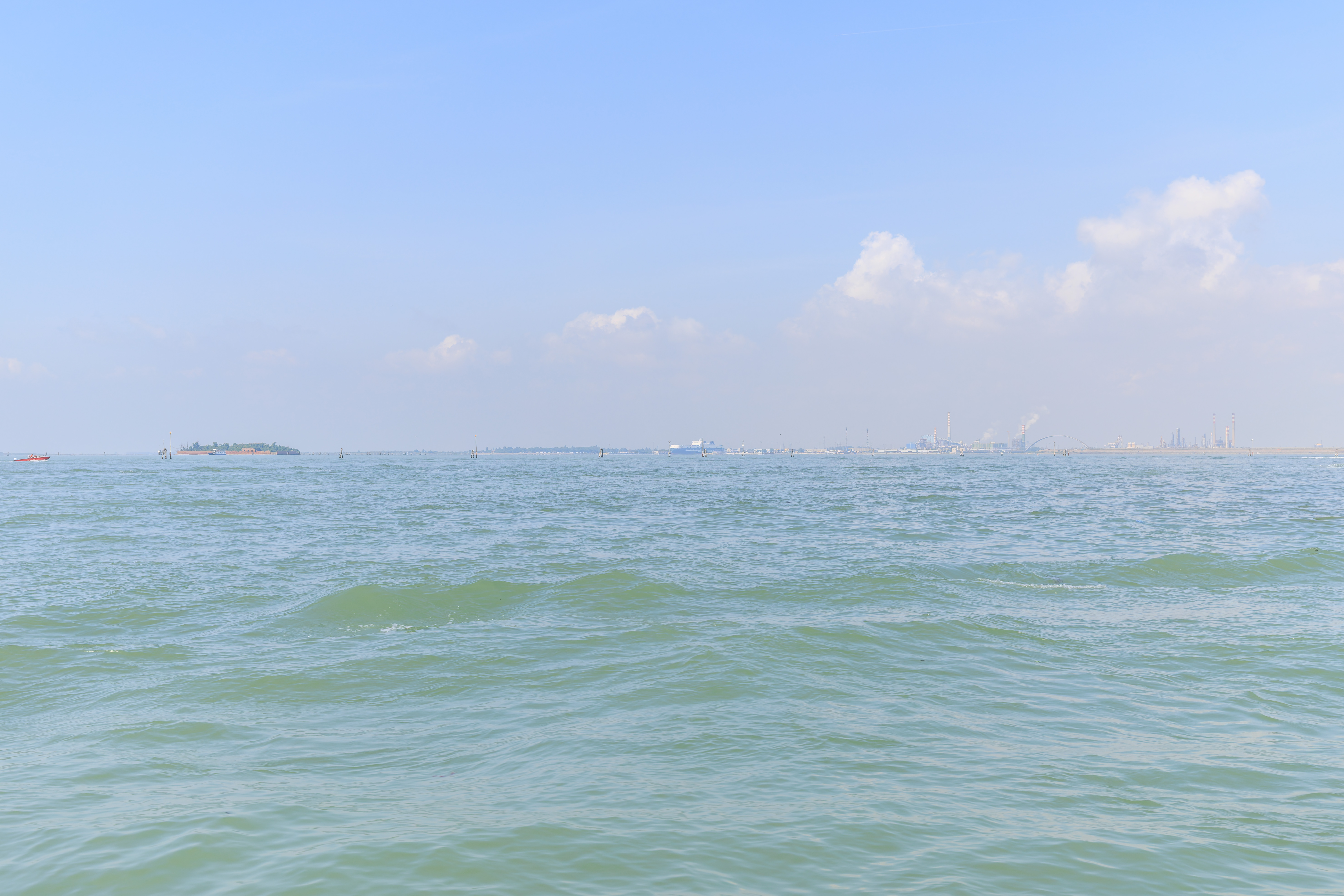
We soon reached the waters of the lagoon. To the west, we could see the mainland of Italy.
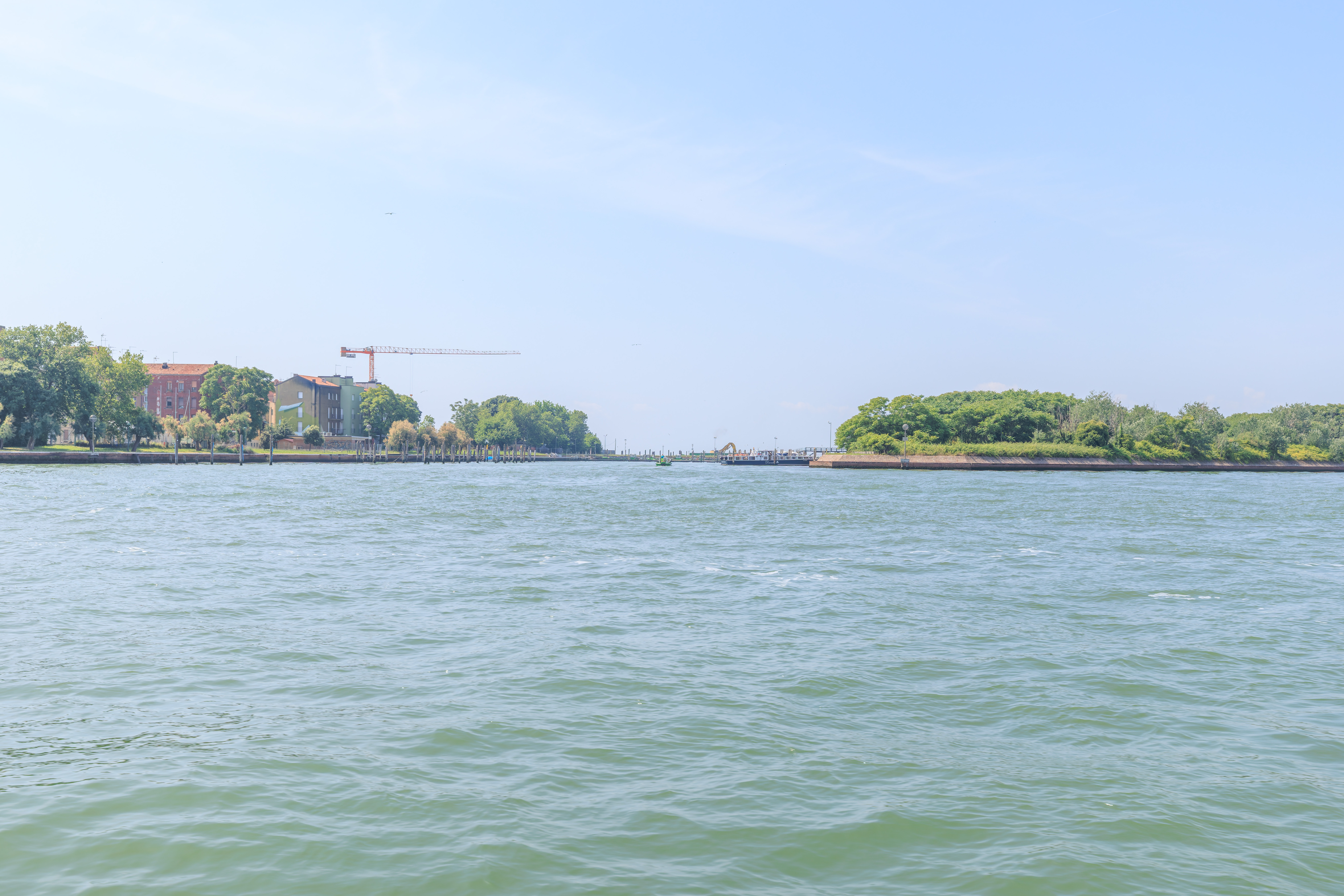
We left, to the east, and entered the channel between the southern edge of Venice and the smaller islands to the south. These islands, or maybe one island split up by canals, are referred to as Giudecca, and this channel we turned onto is the Giudecca Canal. Looking to the south, we could see two of the westernmost islands that make up Giudecca.
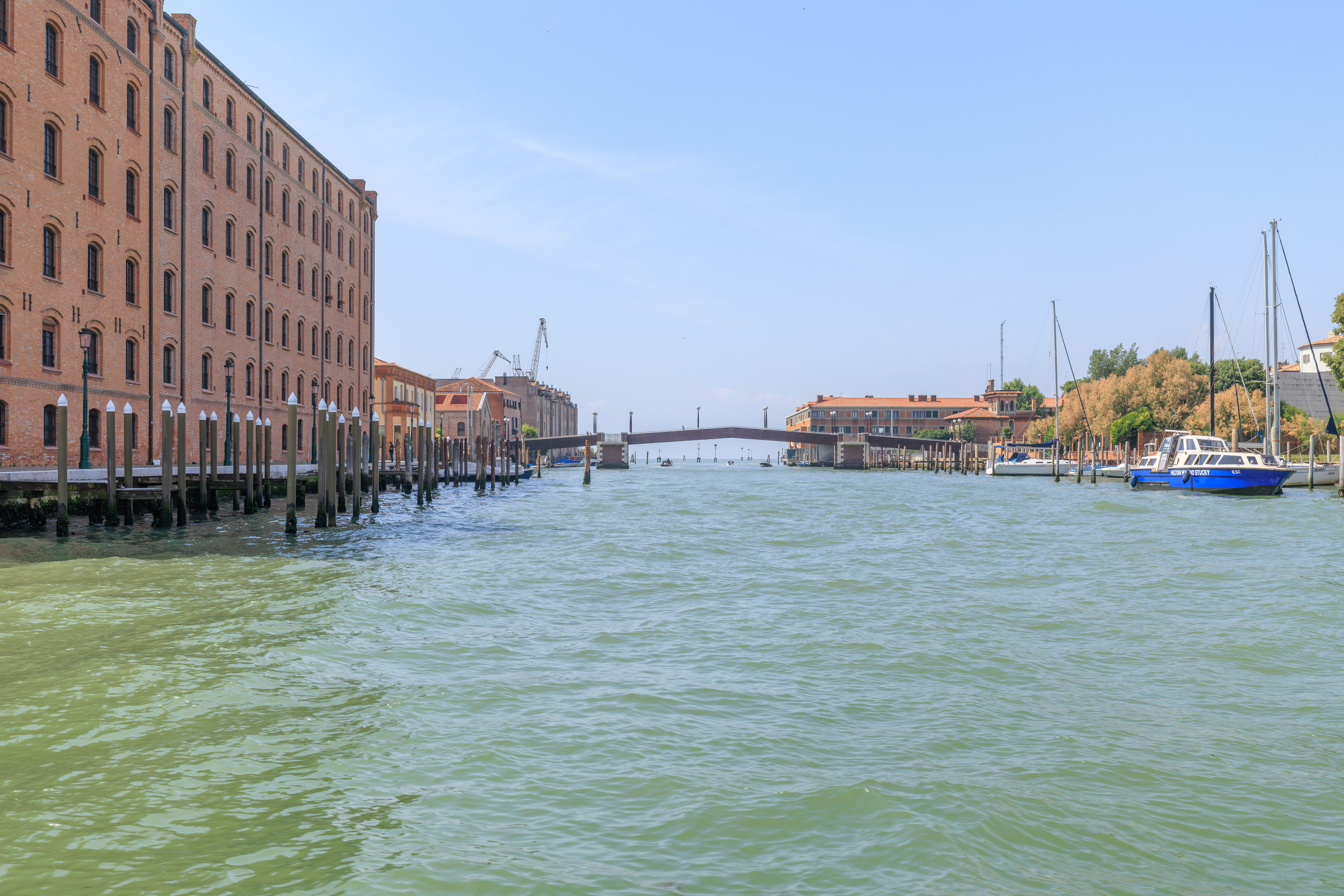
The next canal to the east was pretty wide.
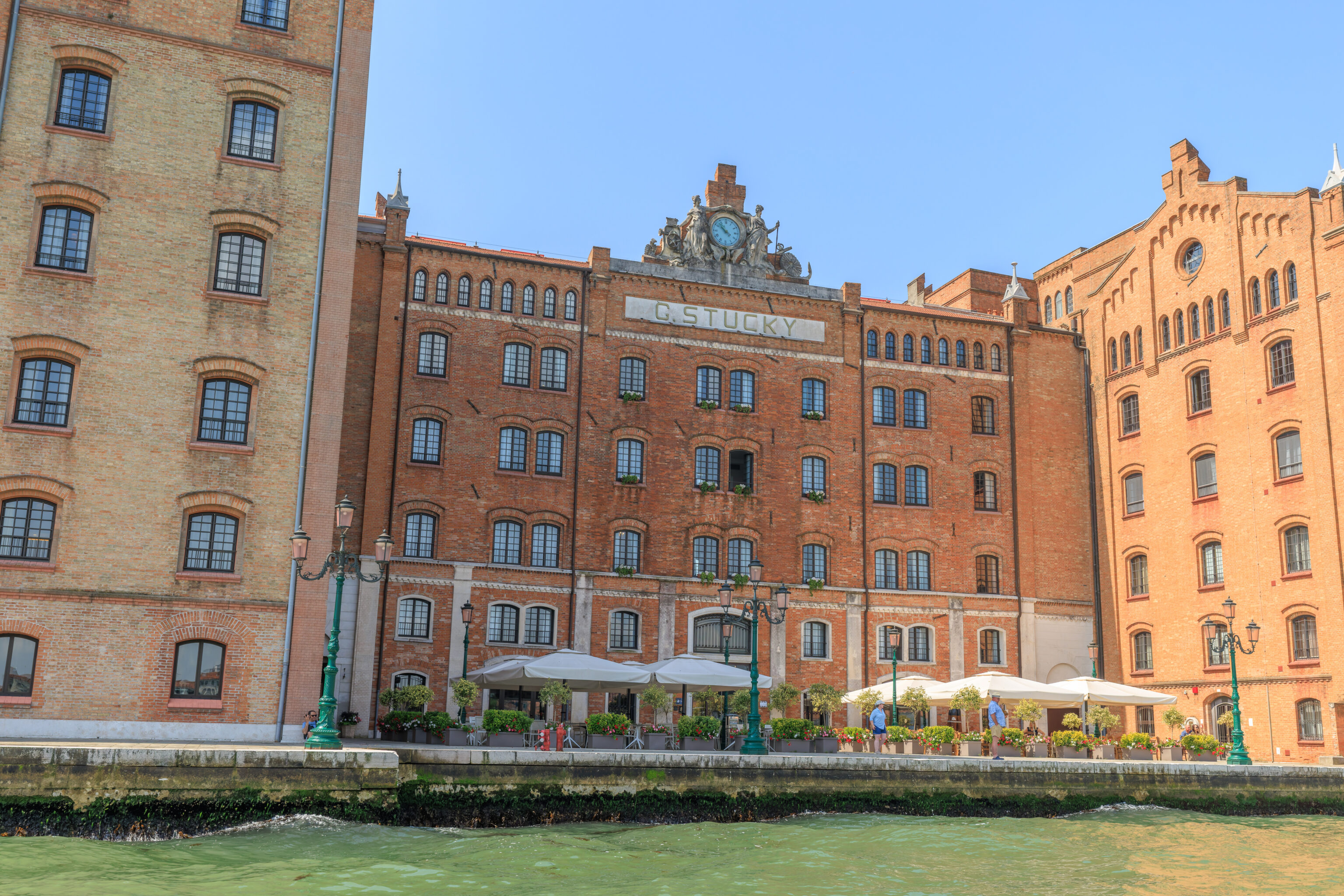
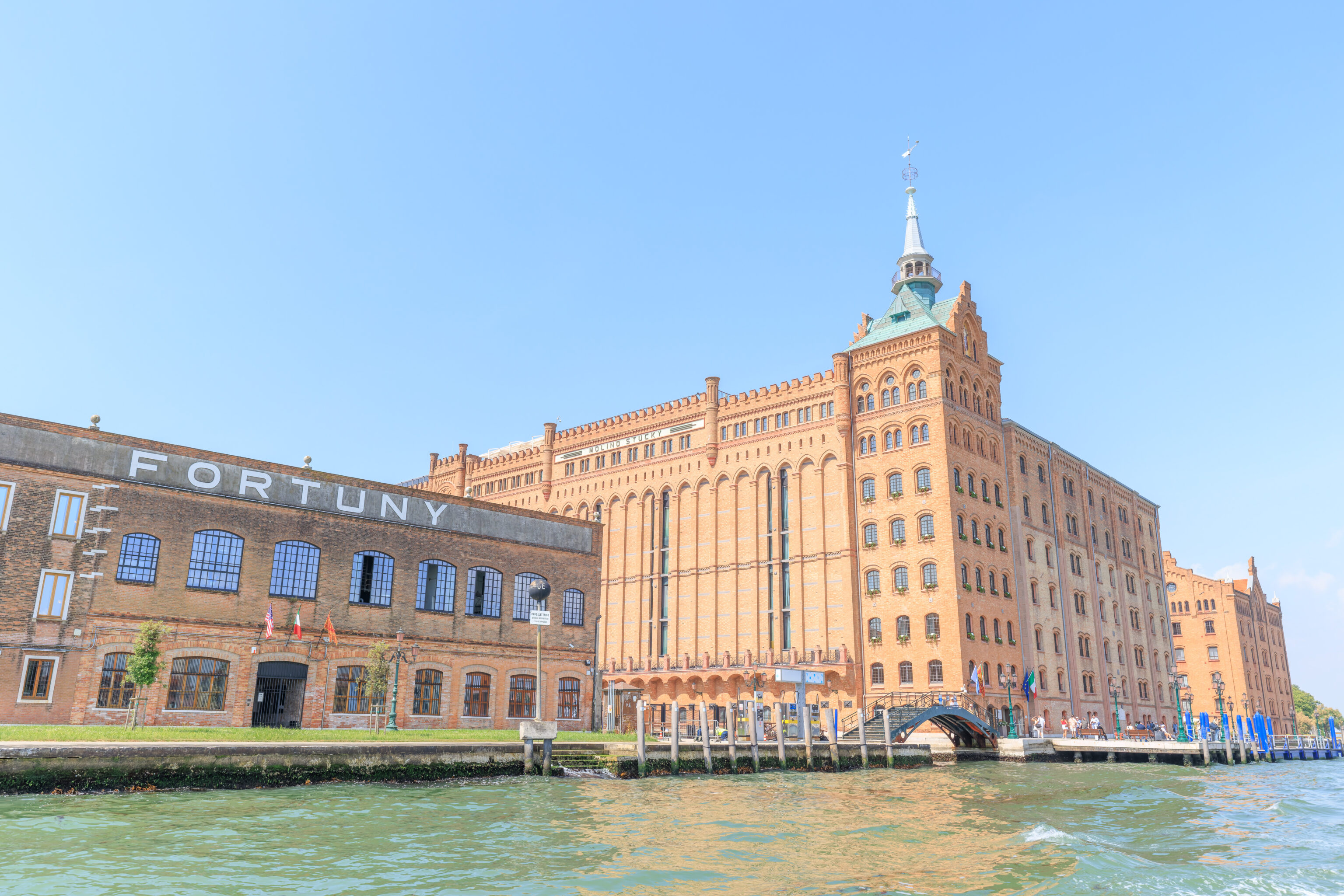
This very large building on Giudecca is the Molino Stucky. It was built at the end of the 19th century by Giovanni Stucky, from Switzerland, as a flour mill. It is now the Hilton Molino Stucky.
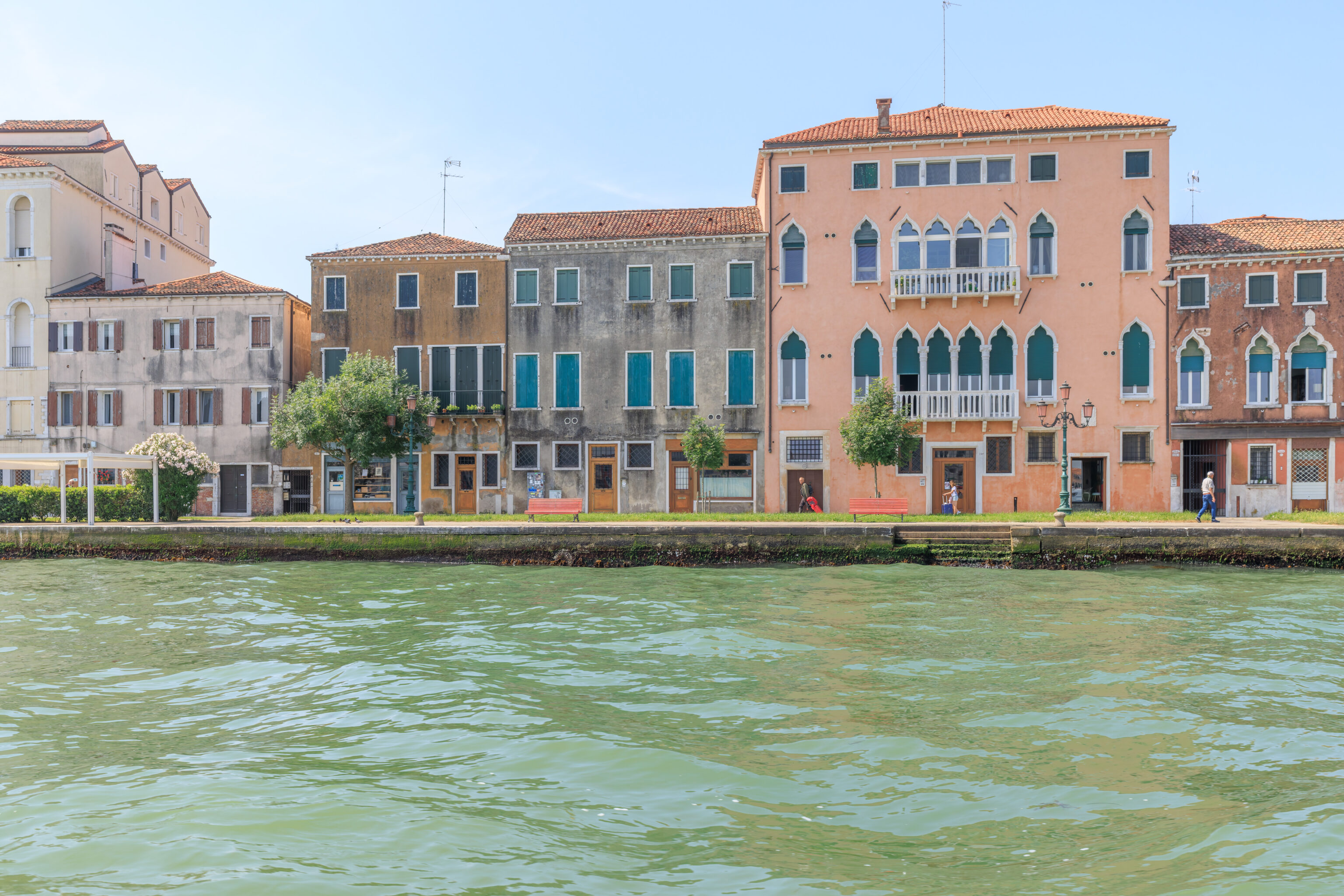
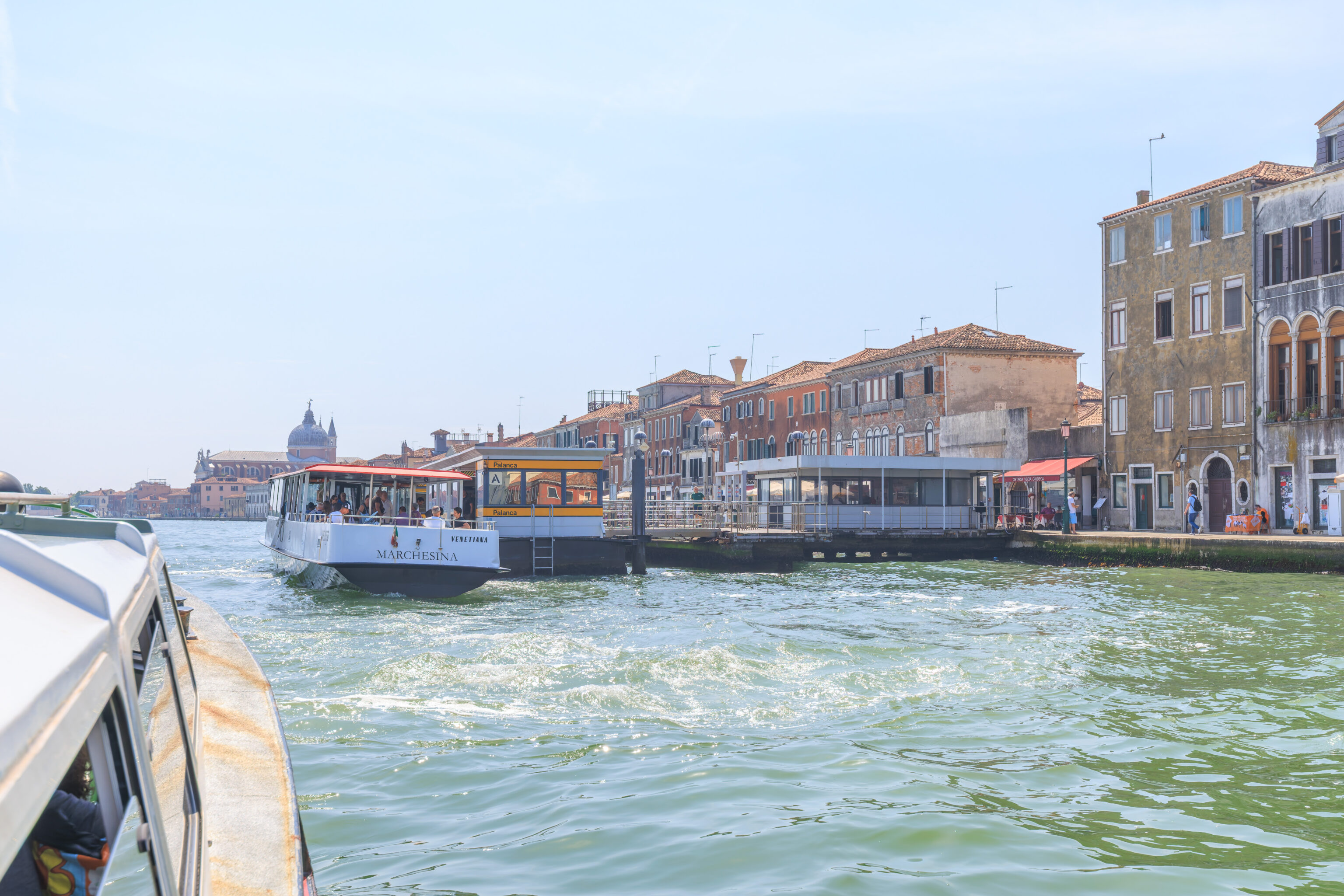
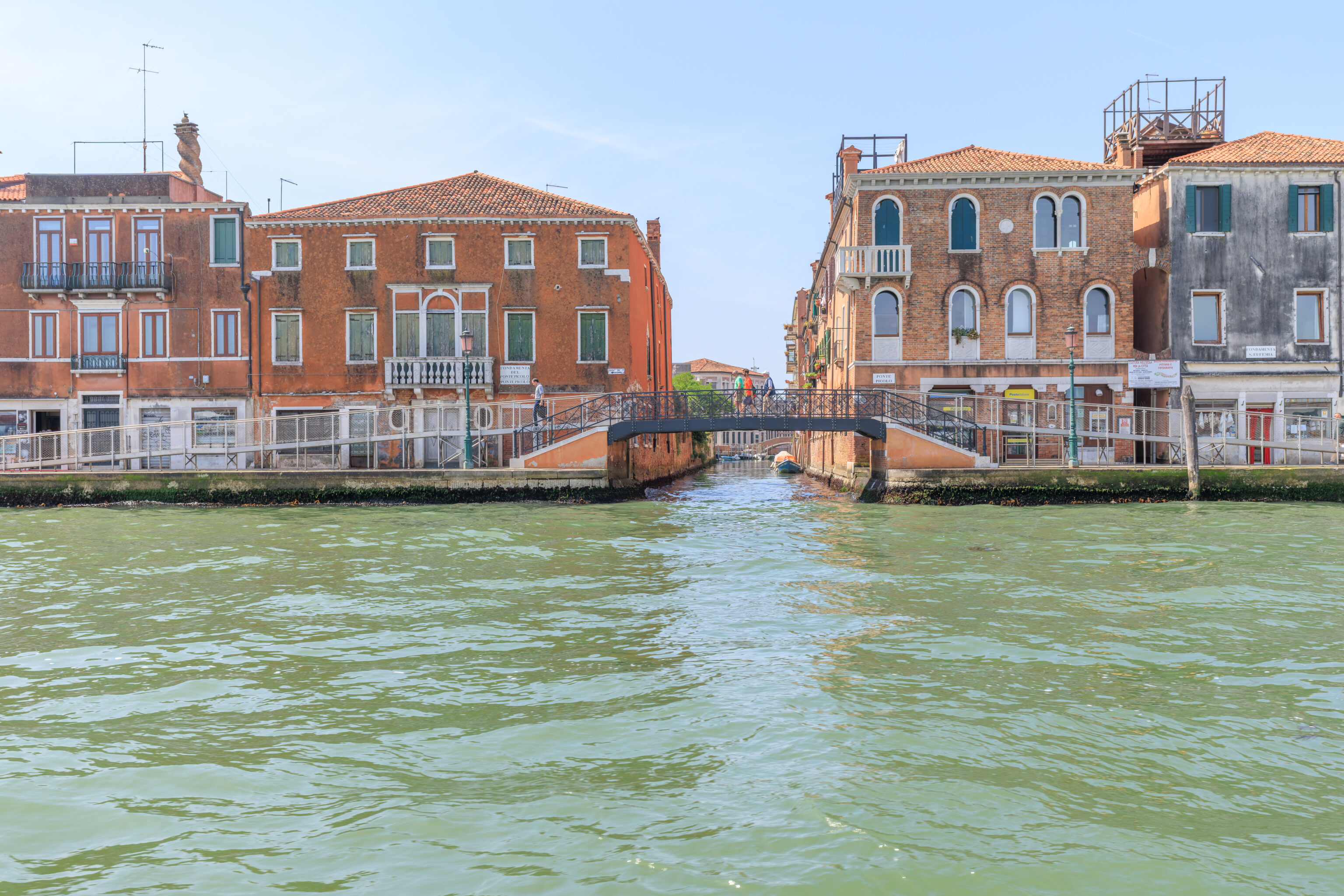
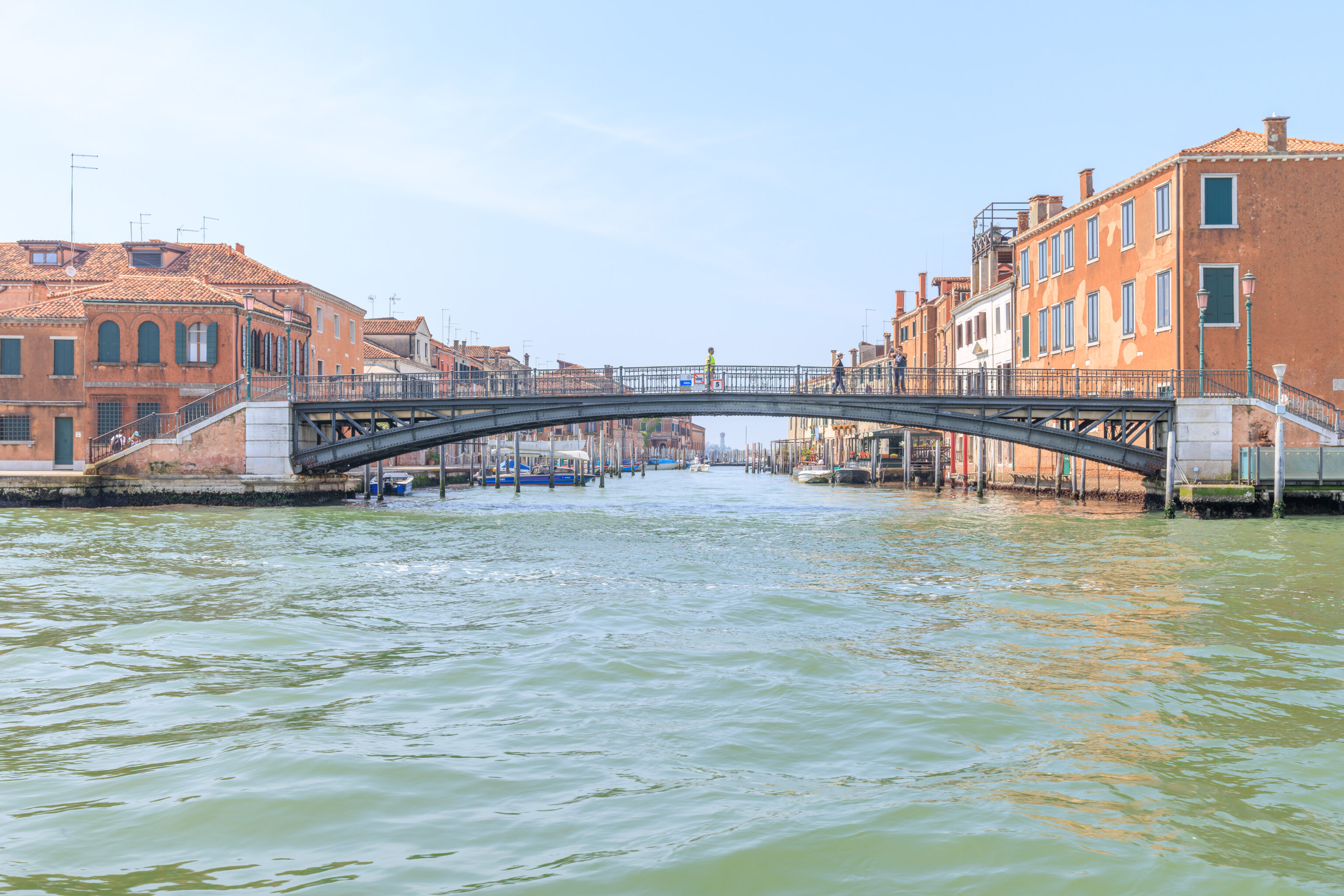
We continued on to the east…
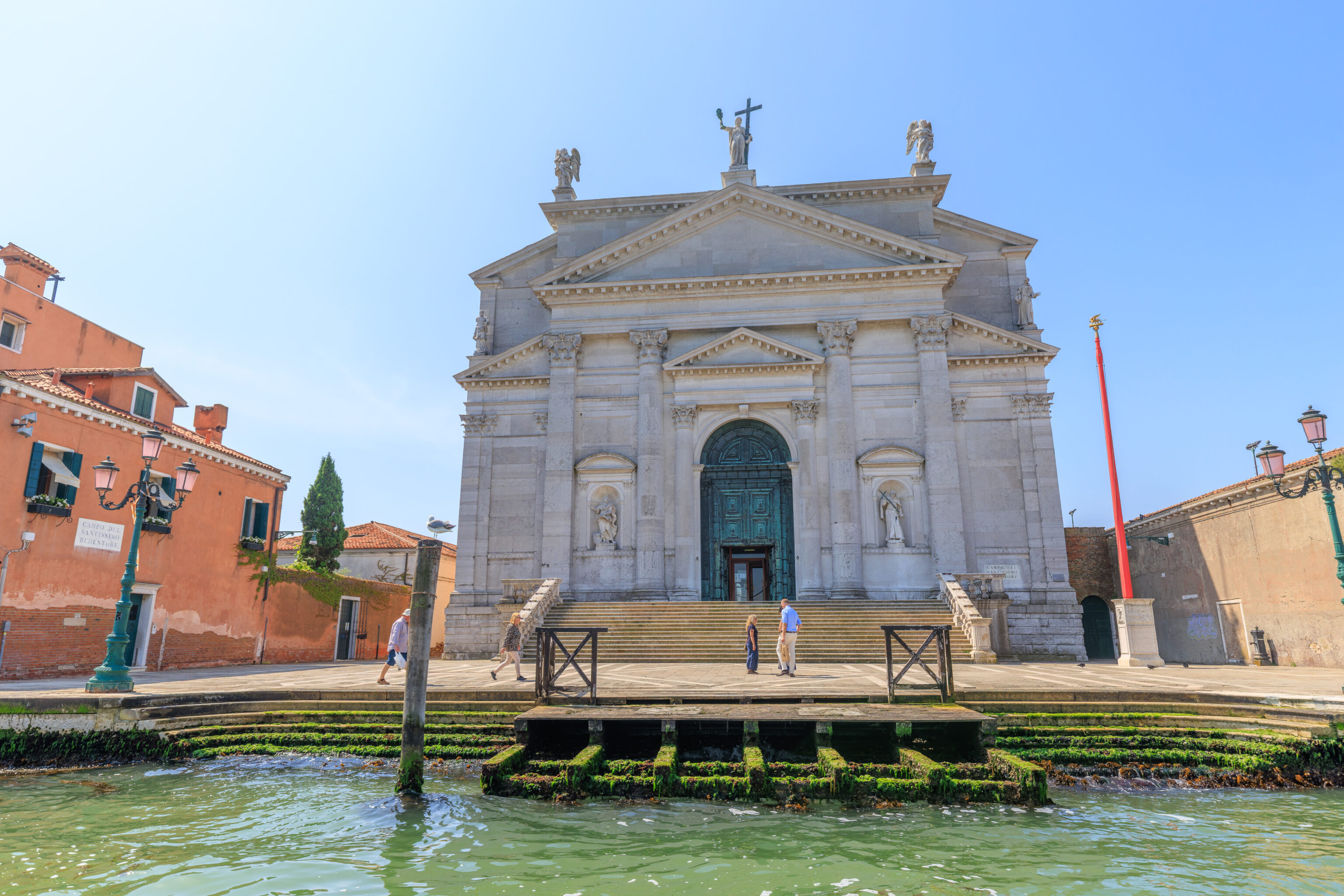
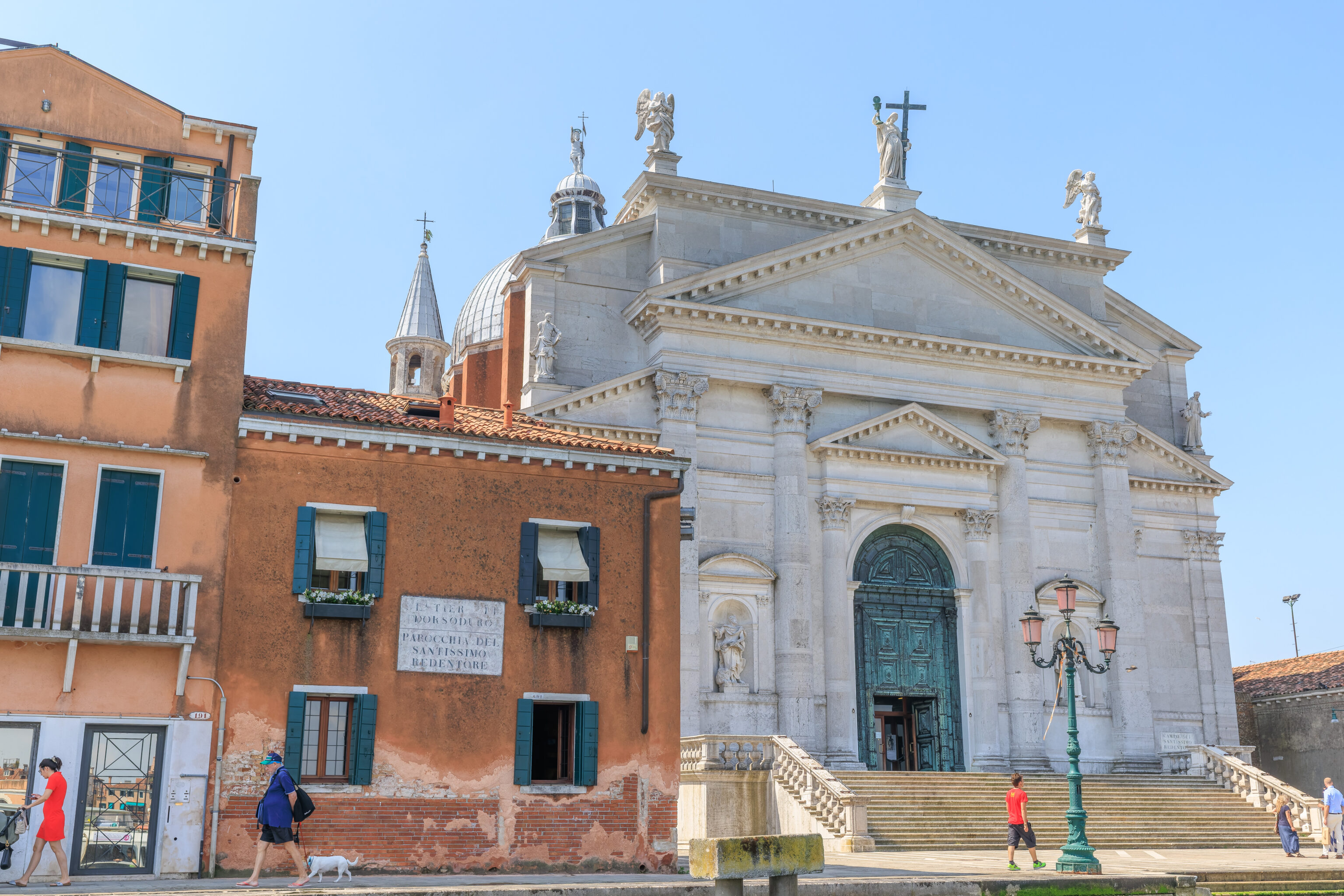
We passed by the Chiesa del Santissimo Redentore, a church from the 16th century.
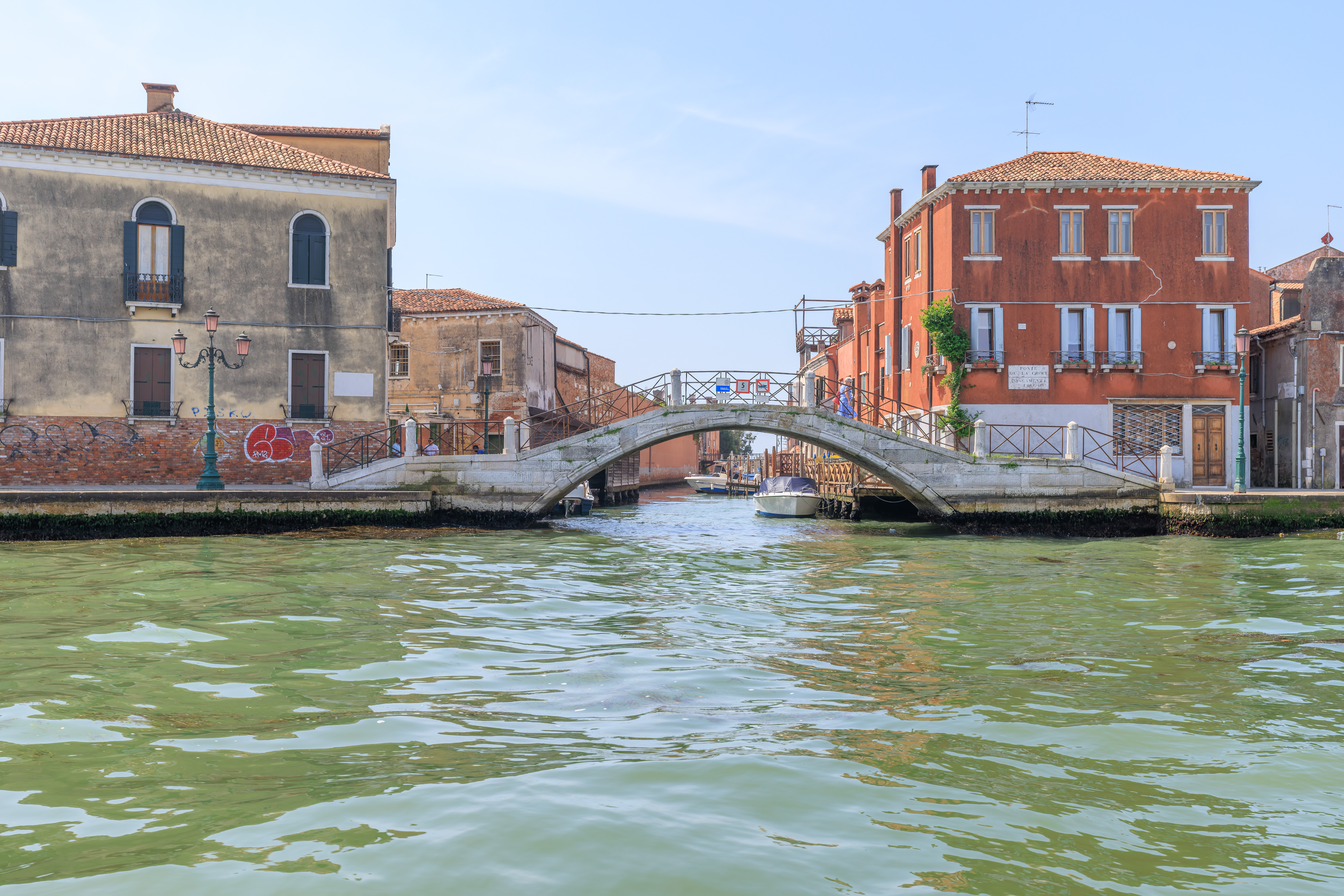
We continued on…
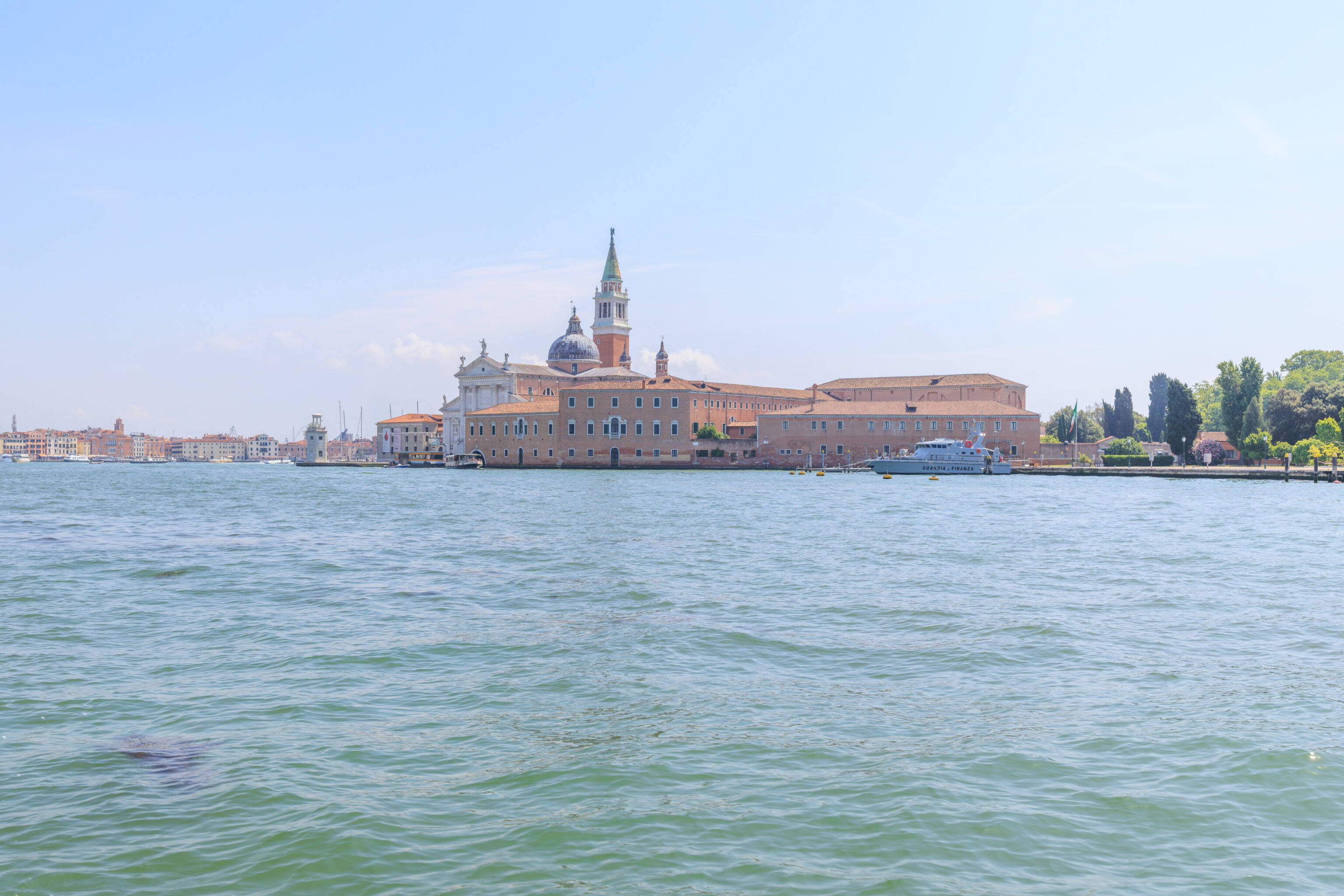
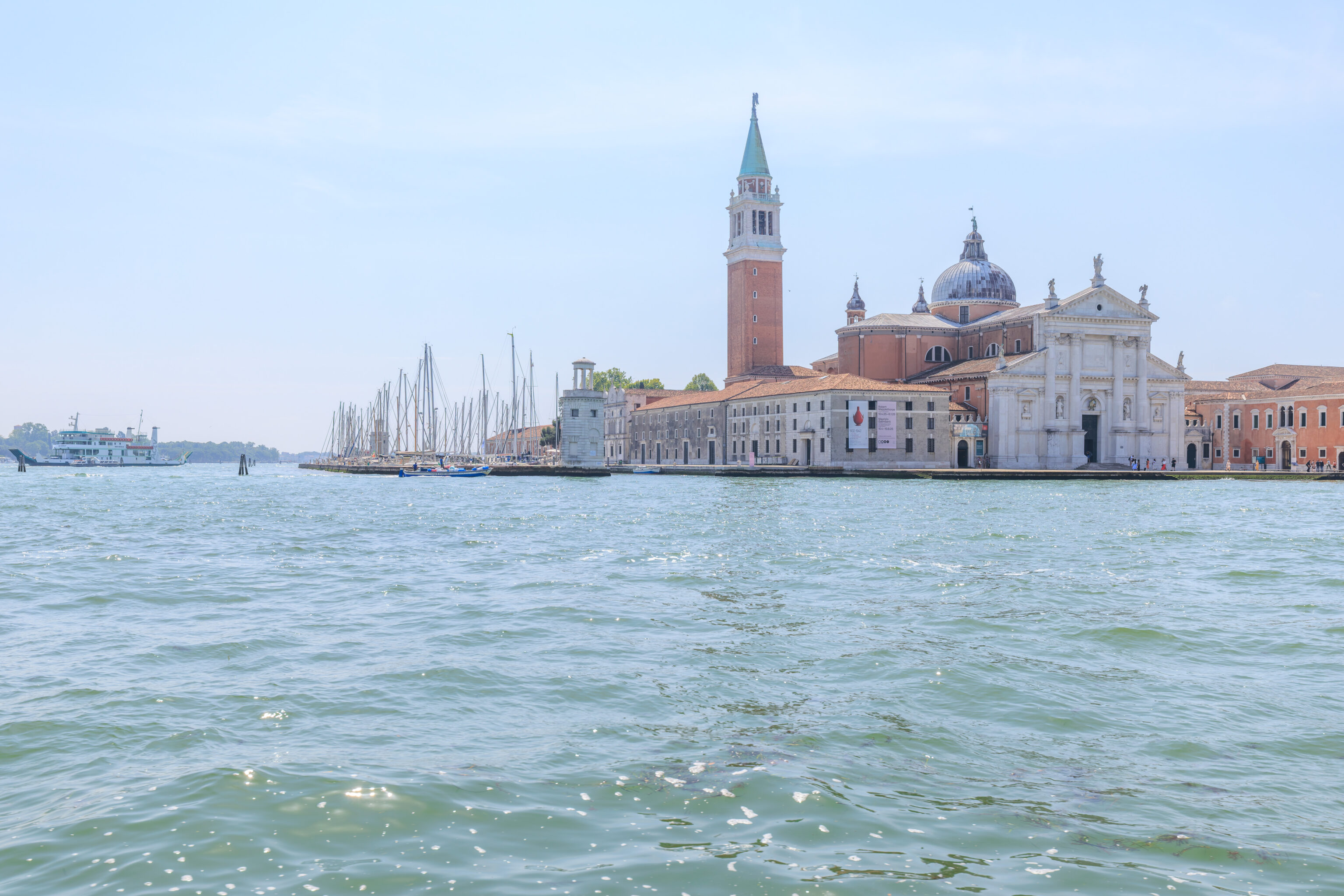
We then saw the final island of Giudecca, San Giorgio Maggiore. It is the only one not connected by a bridge. This island contains the Abbazia di San Giorgio Maggiore (Abbey of Saint George Major) and its campanile (bell tower).
Line 4.1 does not stop at this island. After Zitelle, it crosses this channel to return to Venice.
June 27th, 2025
This is where Jeff Bezos married Lauren Sanchez.
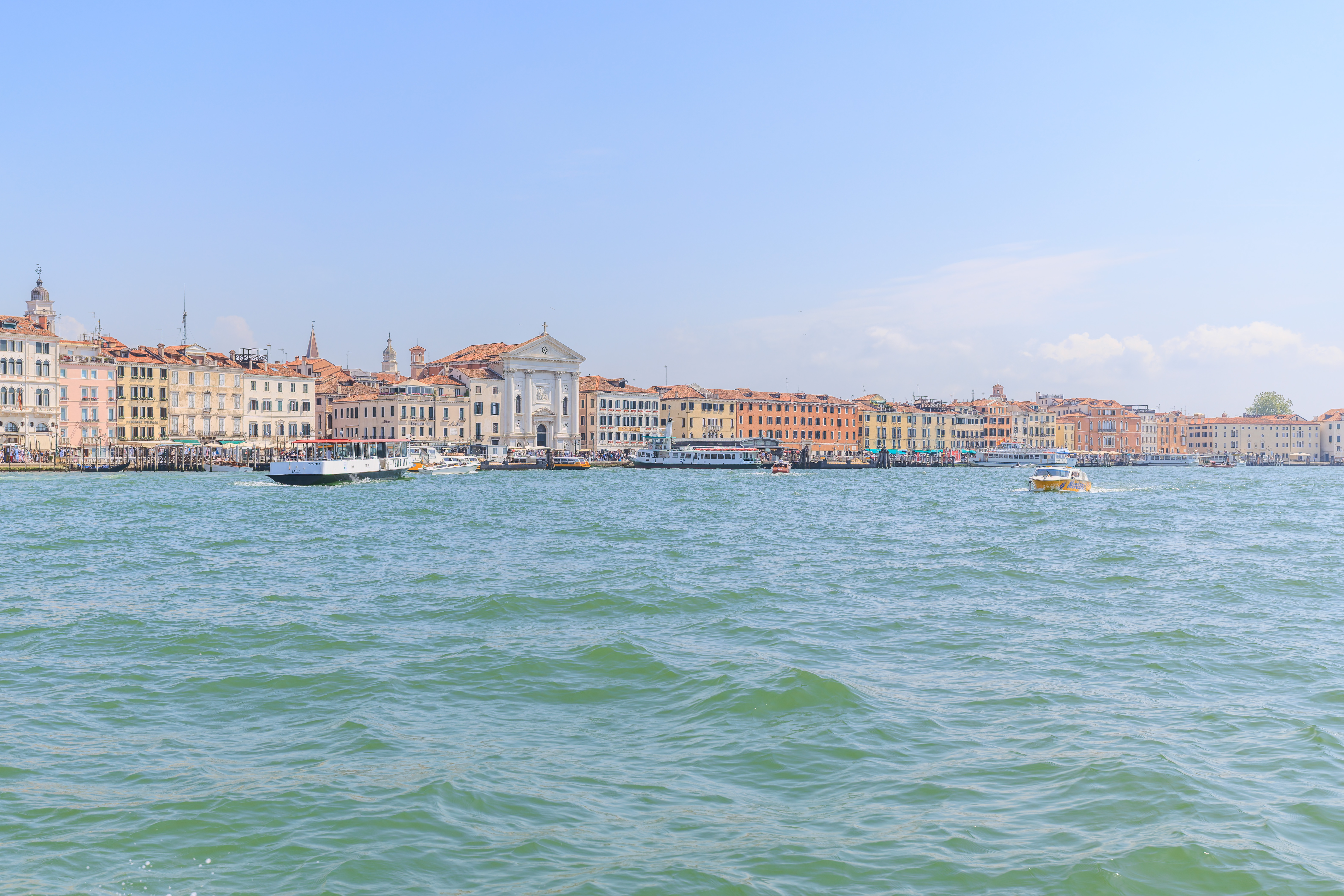
Venice on the left.
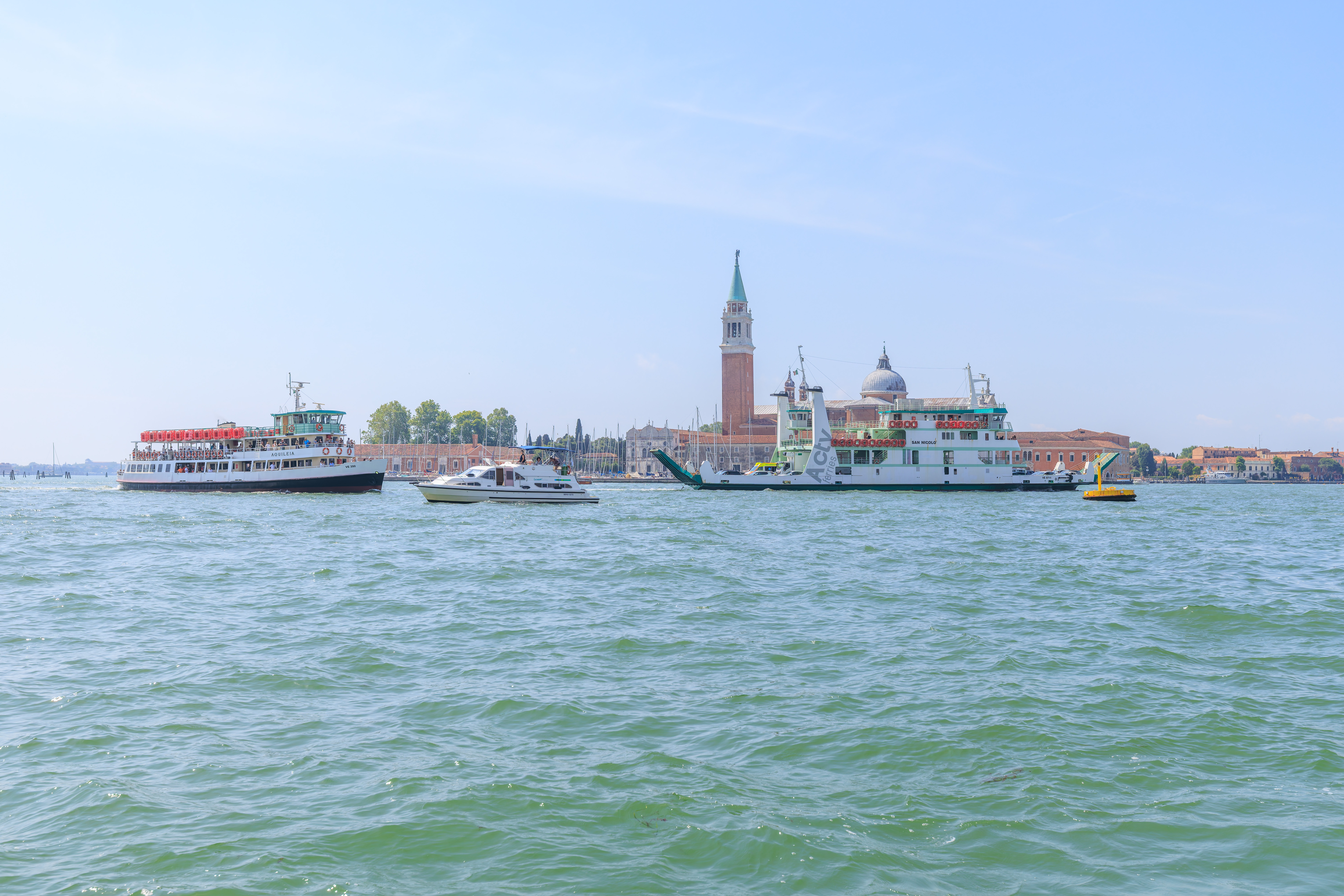
And San Giorgio Maggiore on the right.
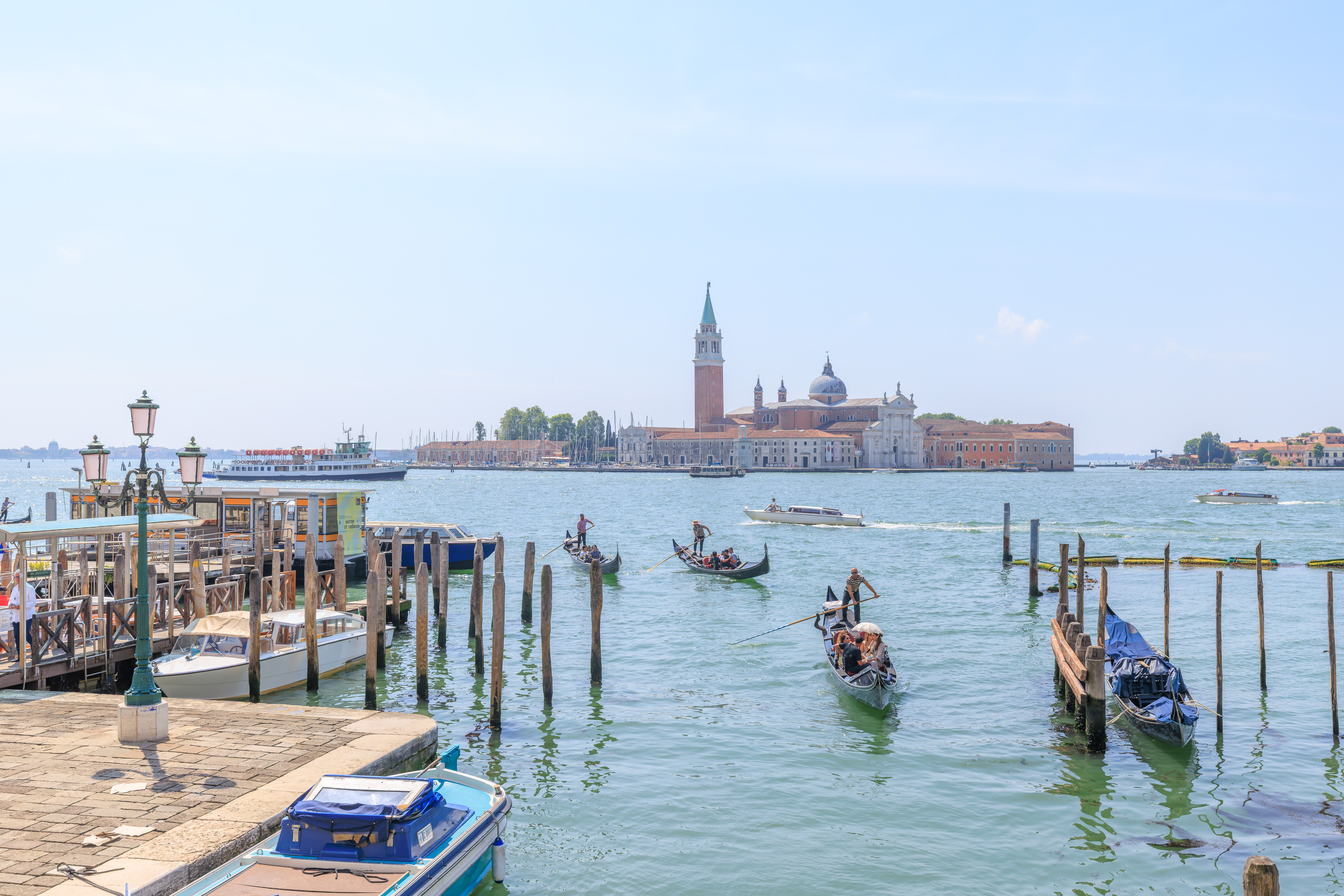
We got off at the next stop, S. Marco-San Zaccaria.
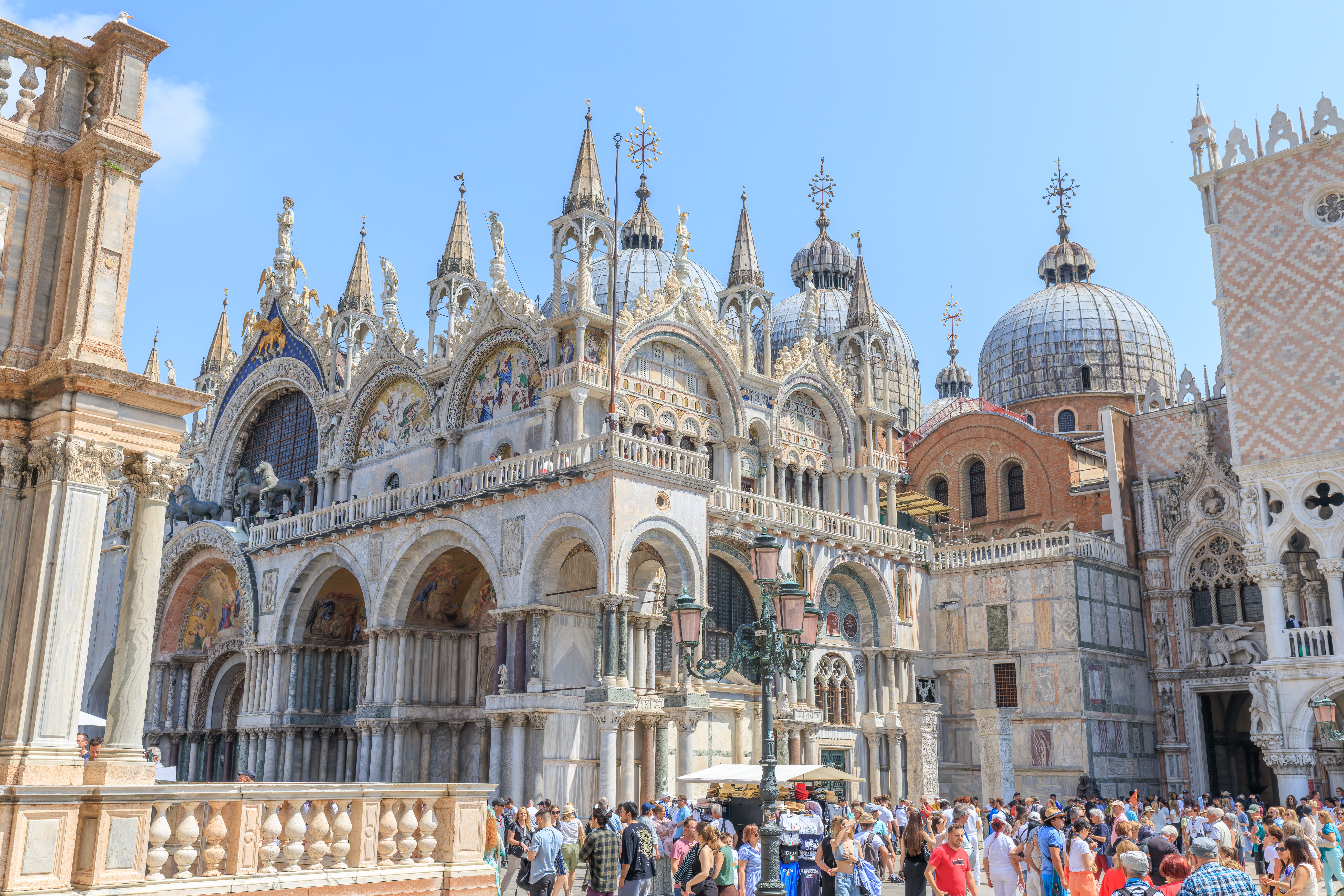
When we arrived at the Basilica di San Marco, there was a very long queue to enter. And most of that queue was out in the hot sun. We decided to come back later.
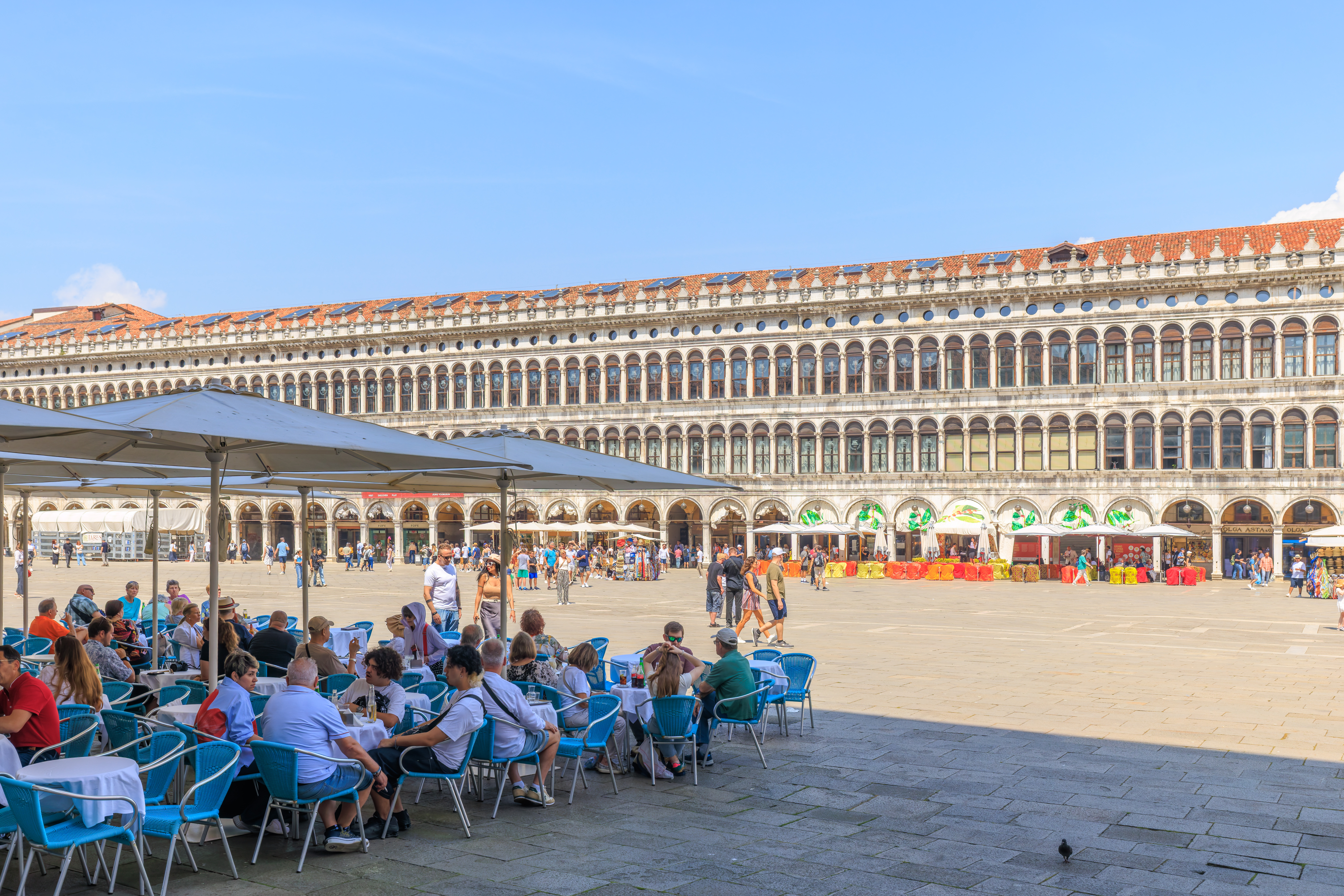
We walked down the Piazza San Marco via the south side, staying in the shade.
Museo Correr
We decided to visit Museo Correr, which is included with the MUVE Museum Pass. We didn’t realize beforehand but the entrance is shared with the Museo Archeologico Nazionale di Venezia (National Archaeological Museum of Venice) and the Sale Monumentali della Biblioteca Nazionale Marciana (Monumental Rooms of the Marciana National Library).
None of these are particularly famous compared to other museums in Venice, however, we were here and we had a pass that allowed us to enter without additional fees.
We started to walk through somewhat quickly, looking at everything as we went.
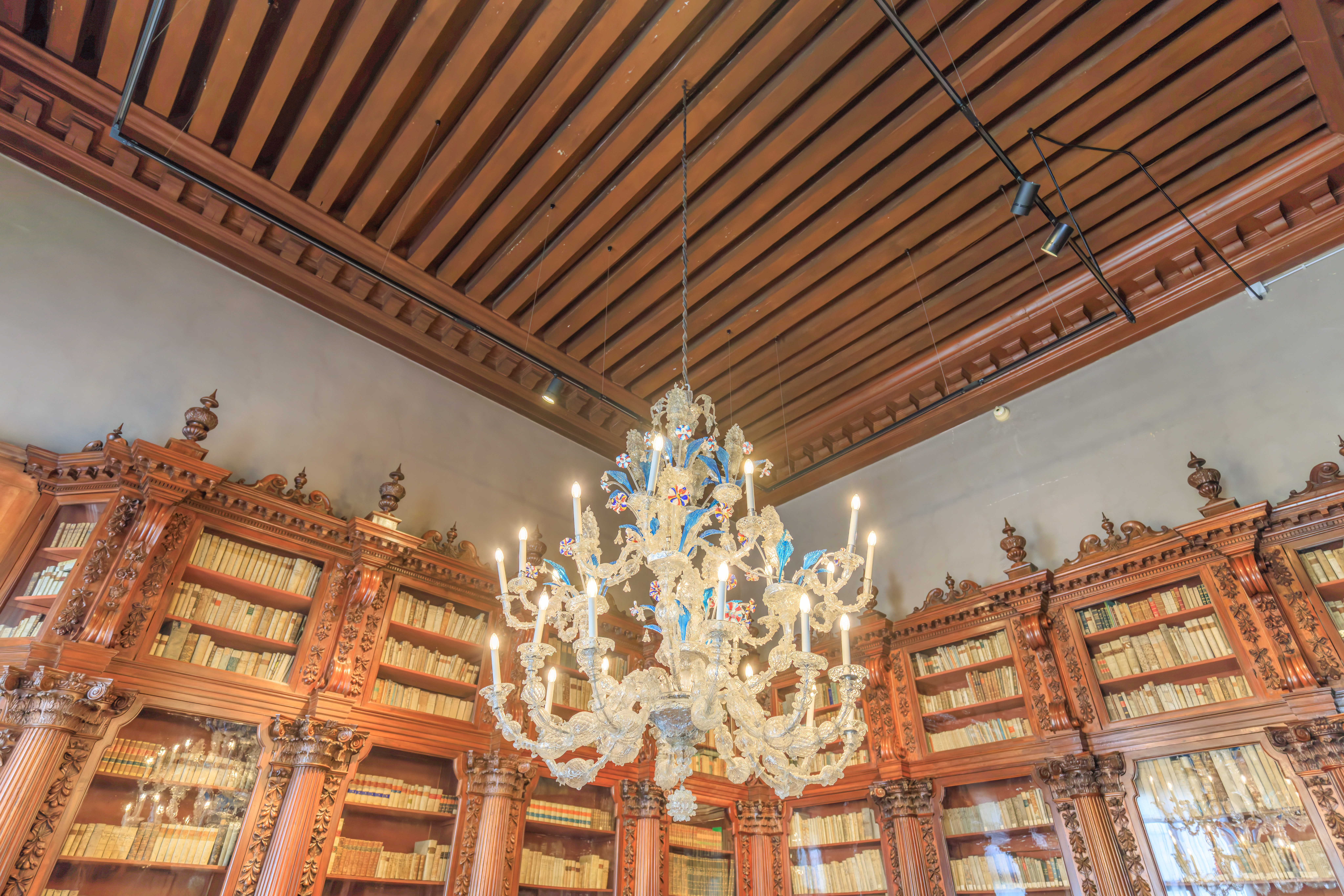
Venice is famous for its Murano glass so it is no surprise to find a glass chandelier here. This one has many colorful elements.

Home! Its not quite right, but we’ve seen worse!
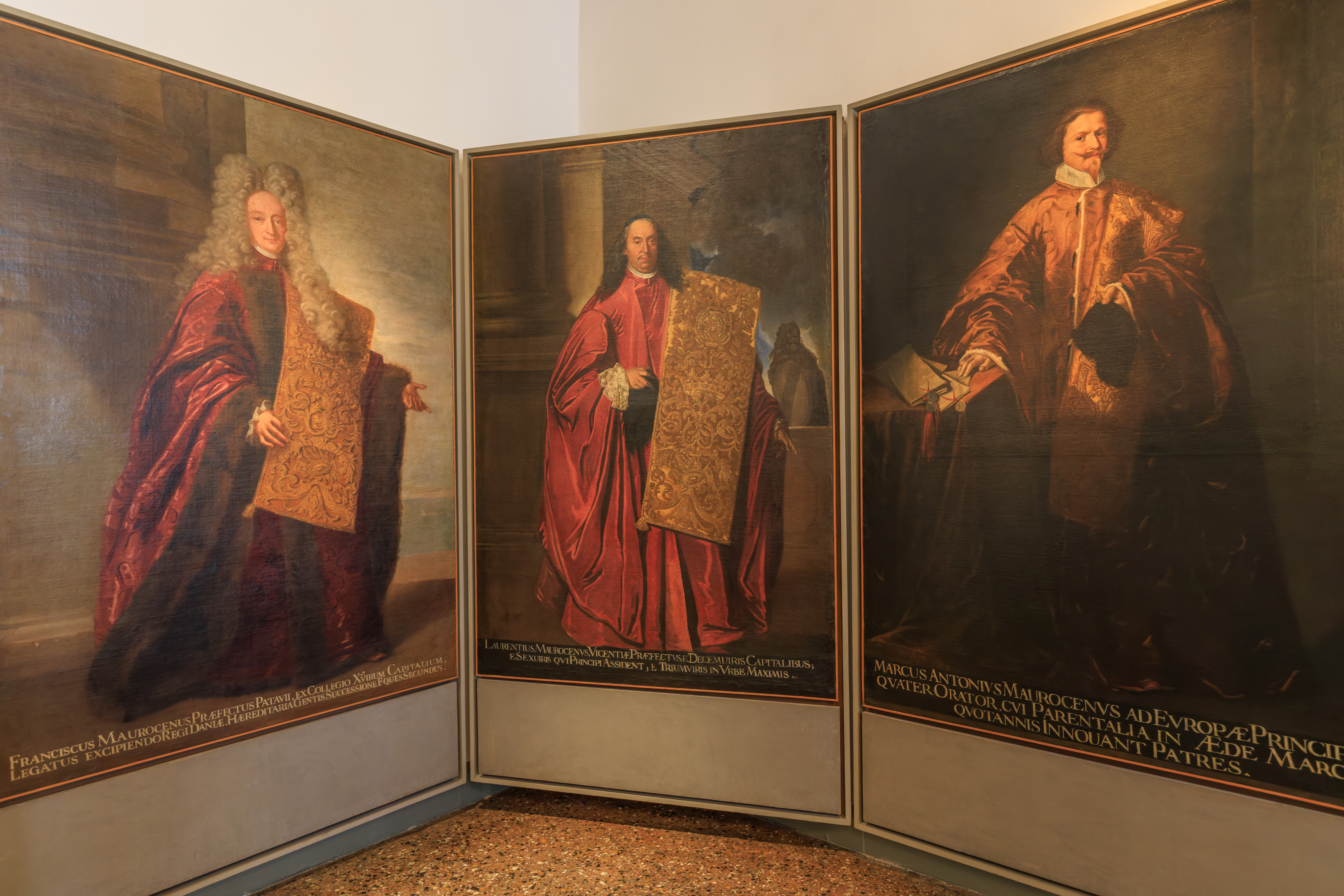
Presumably, these three spent quite a bit of time at the Palazzo Ducale, which we visited yesterday.
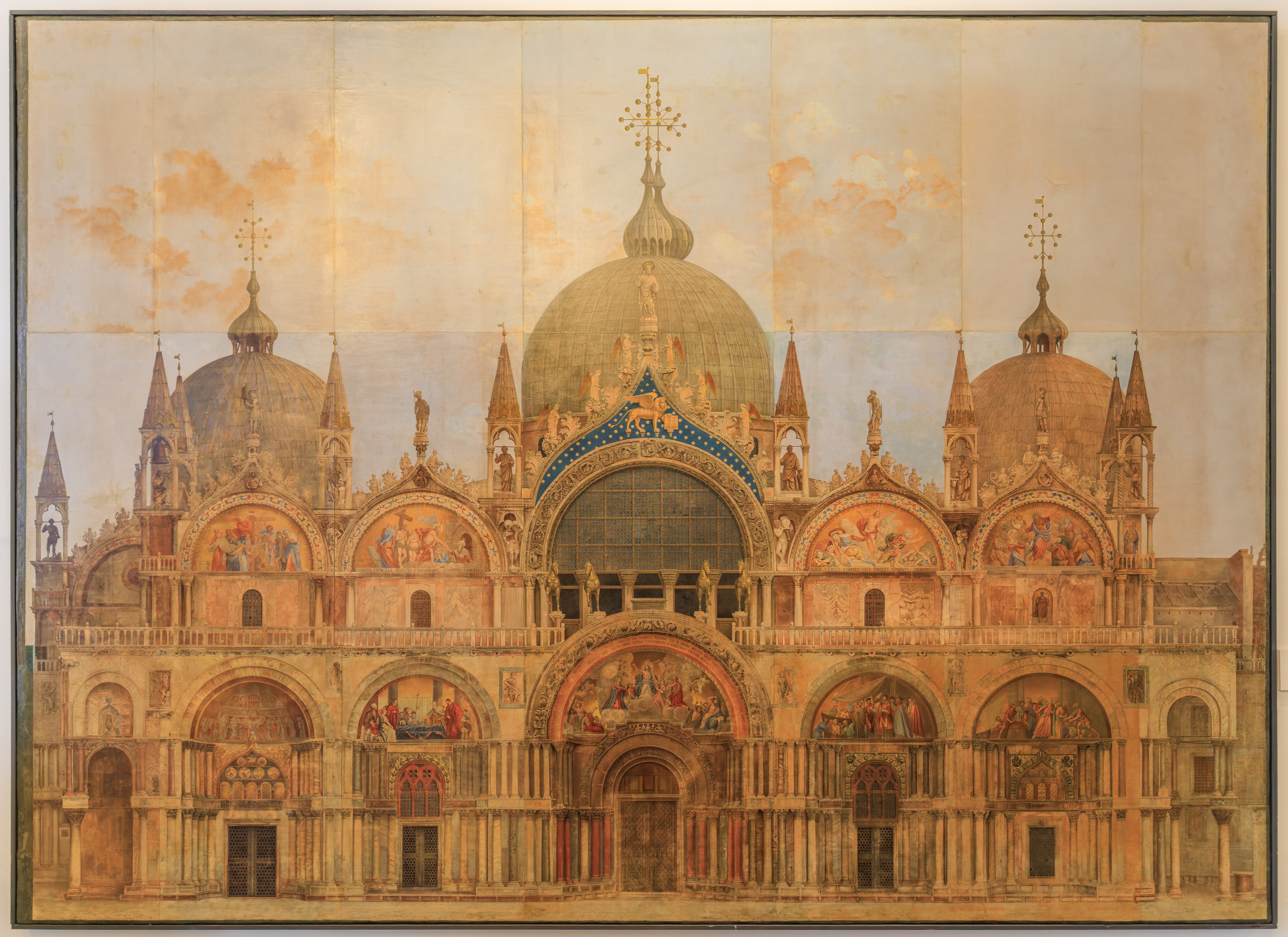
This very realistic depiction of the Basilica di San Marco was created by Alberto Prosdocimi in 1881. It is described as a chromolithograph.
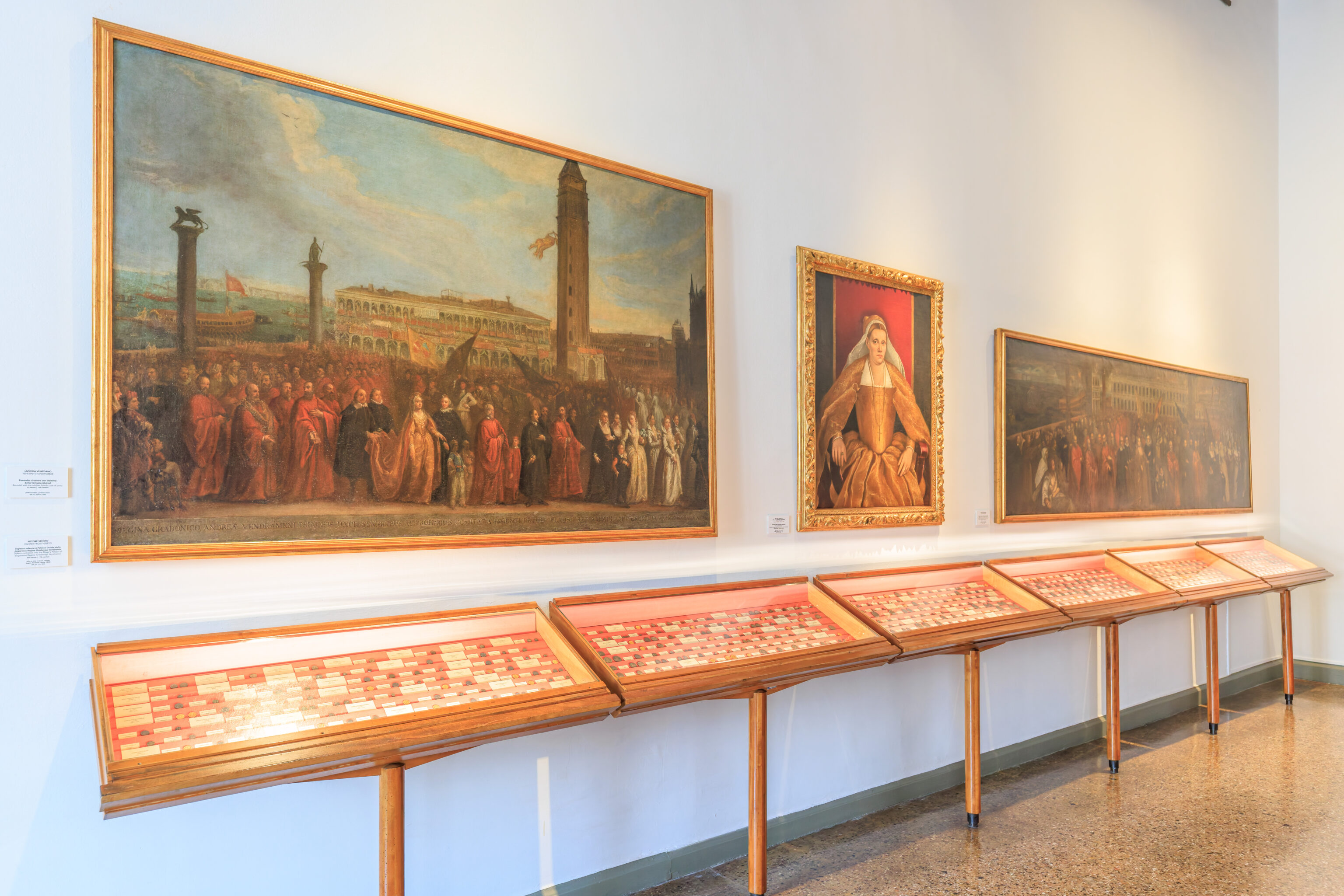
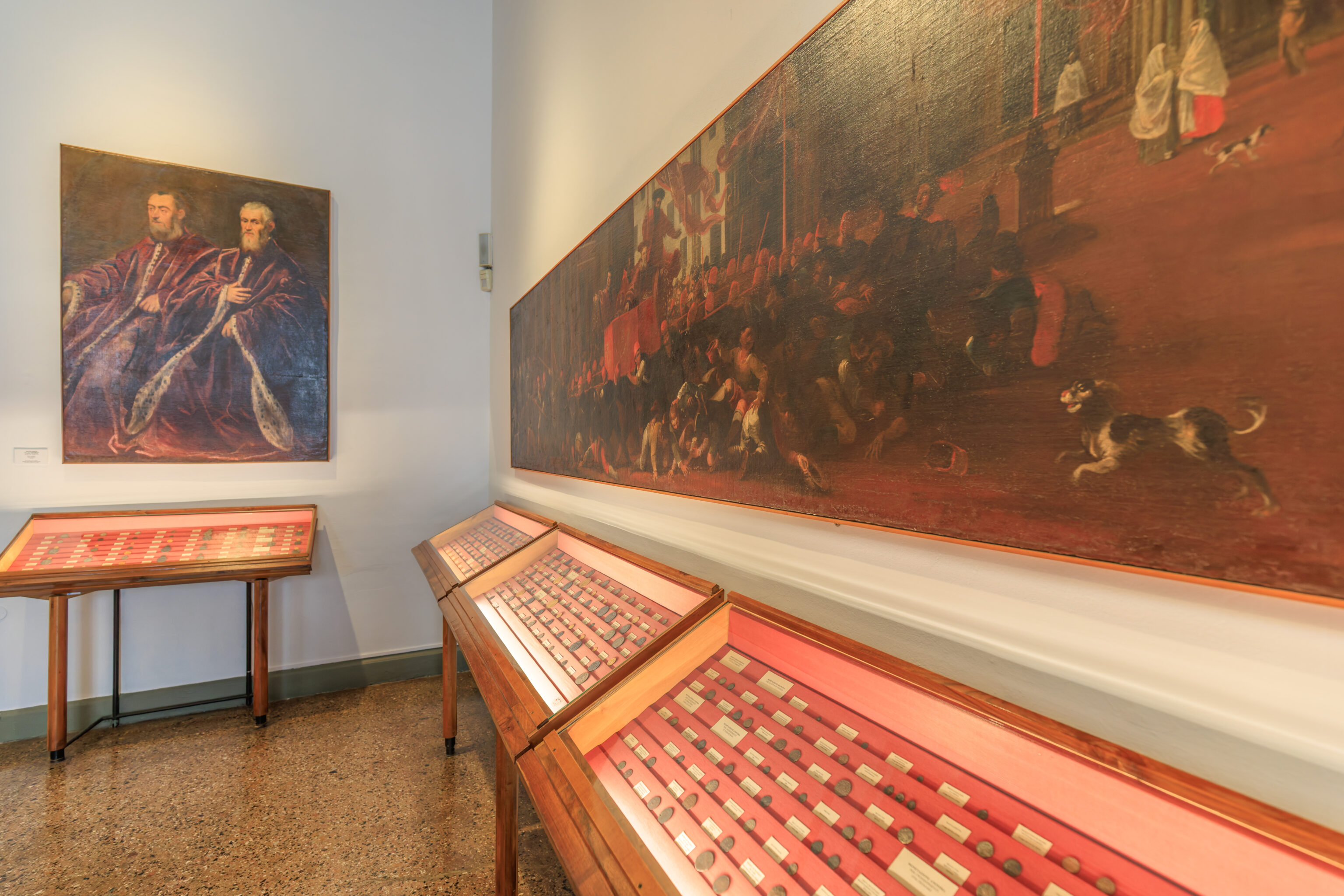
Some additional Venetian scenes…
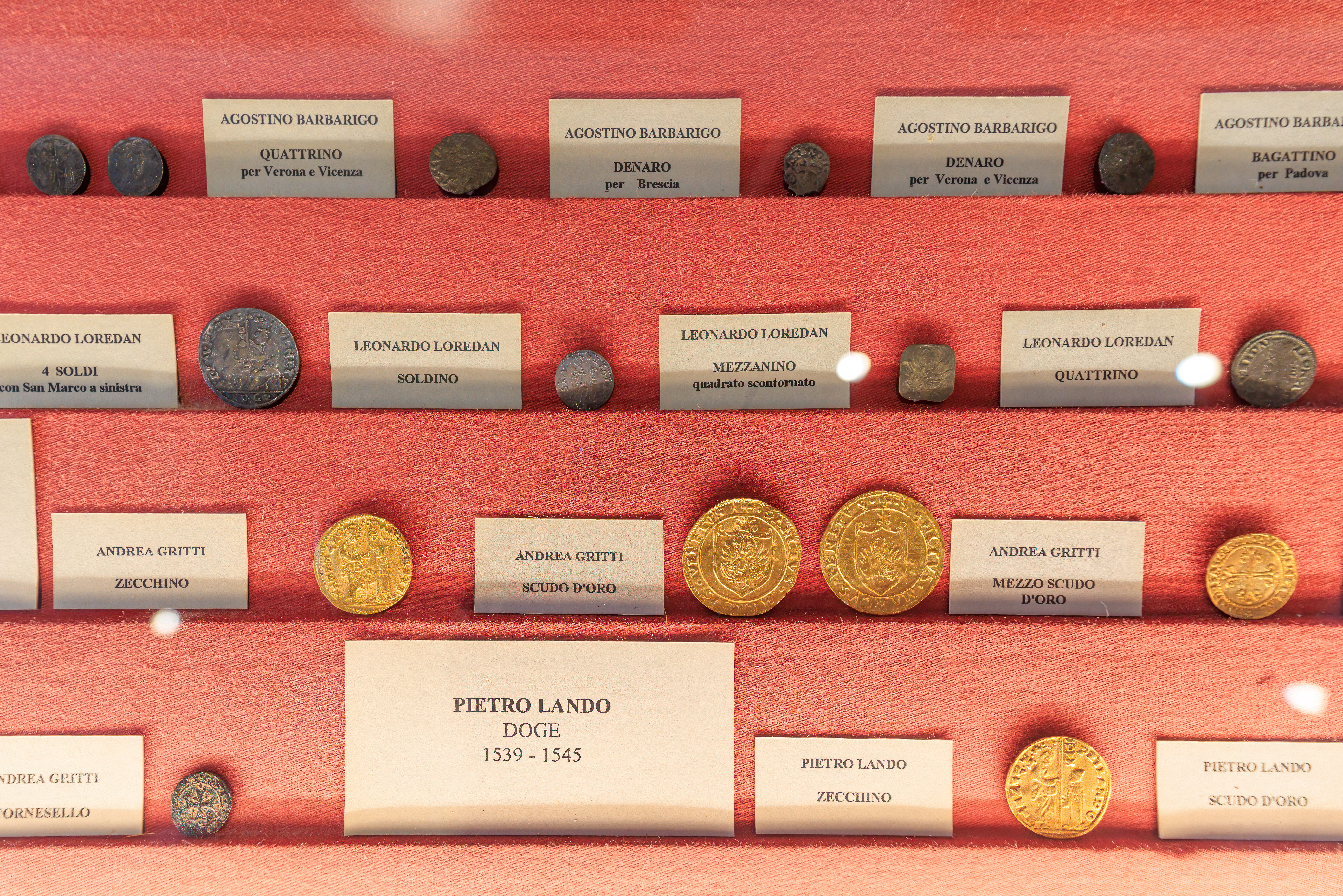
Atop display cases of Venetian coins.
We walked through a naval themed room.
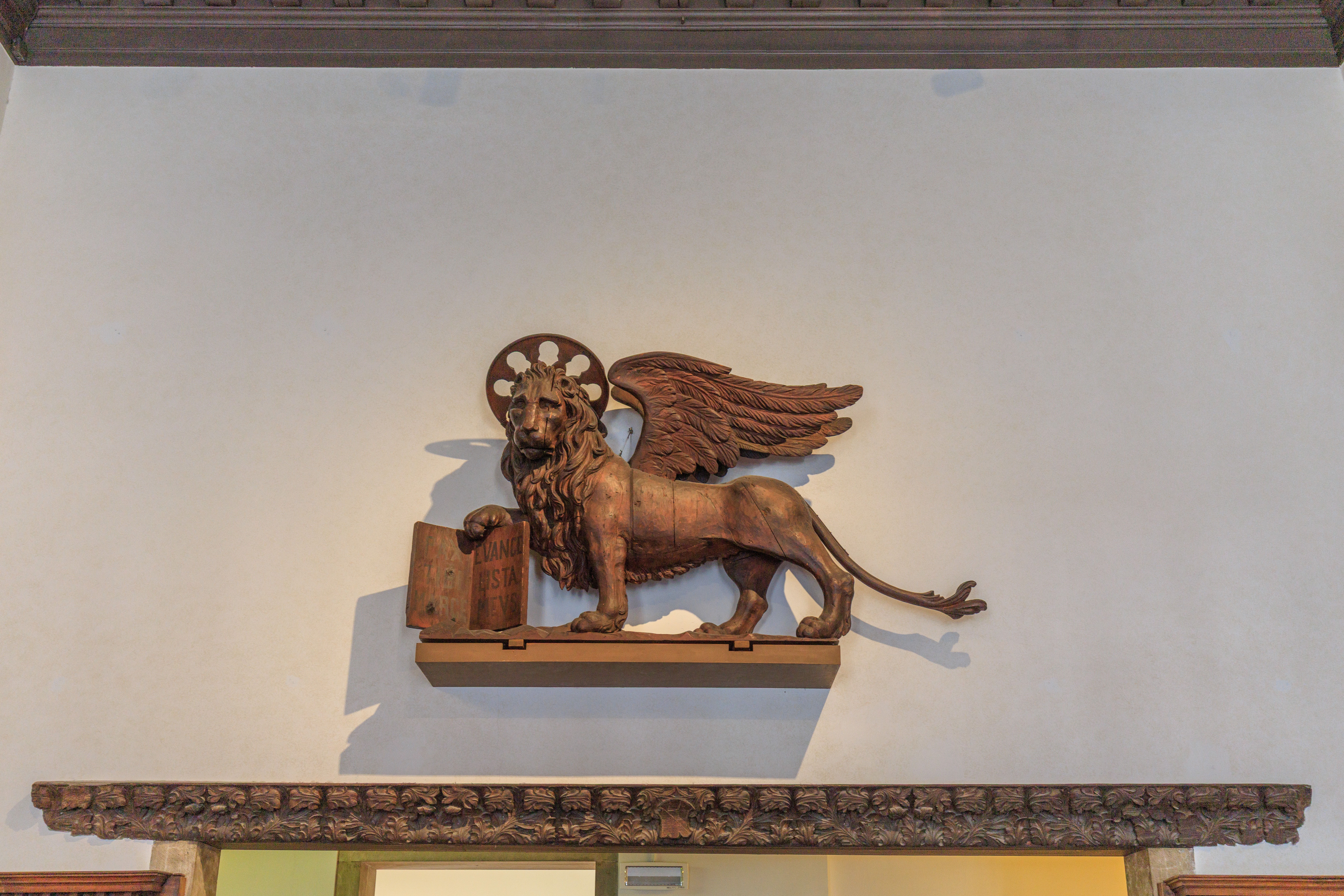
A Lion of Saint Mark!
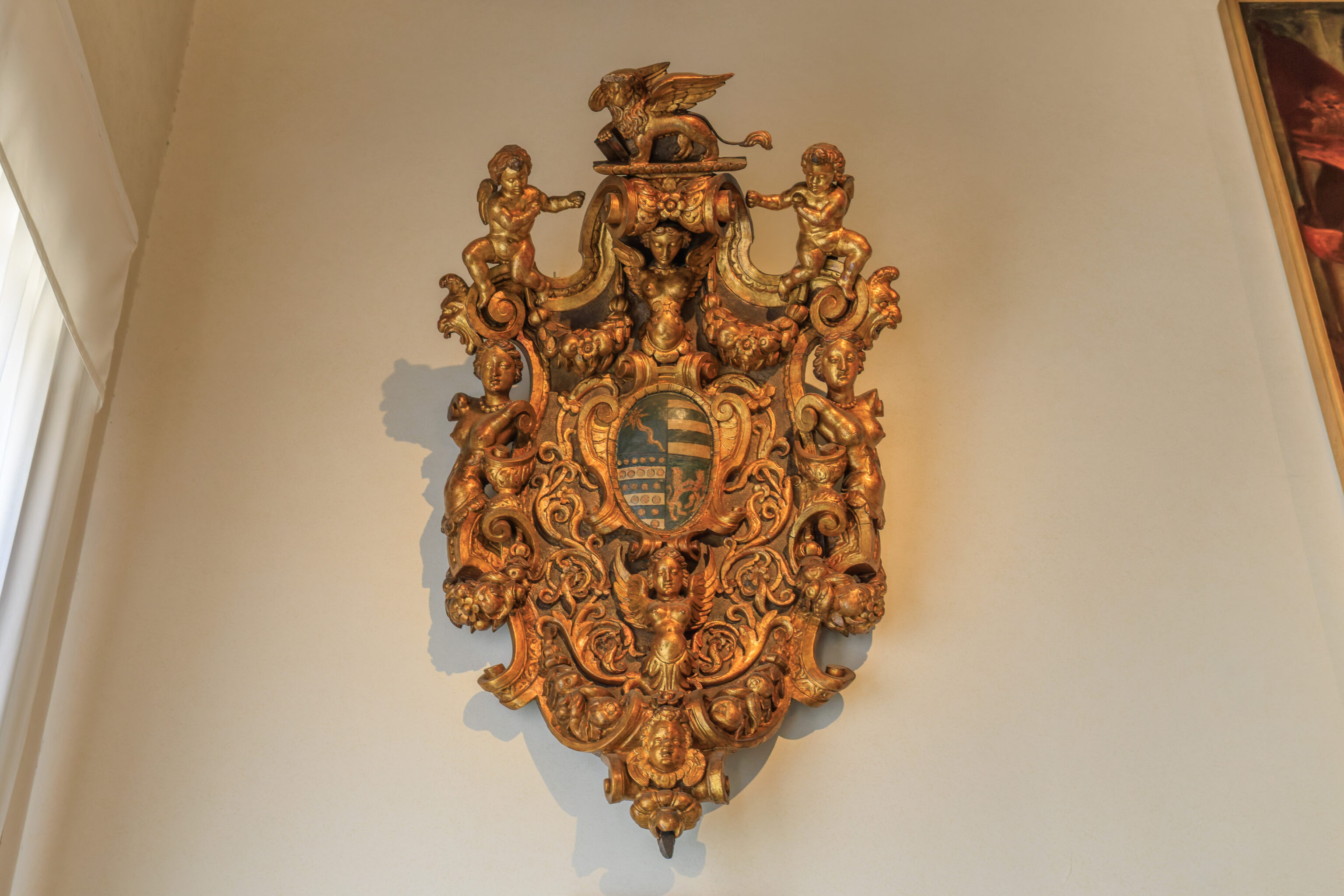

These two ornate items also feature the winged lion.
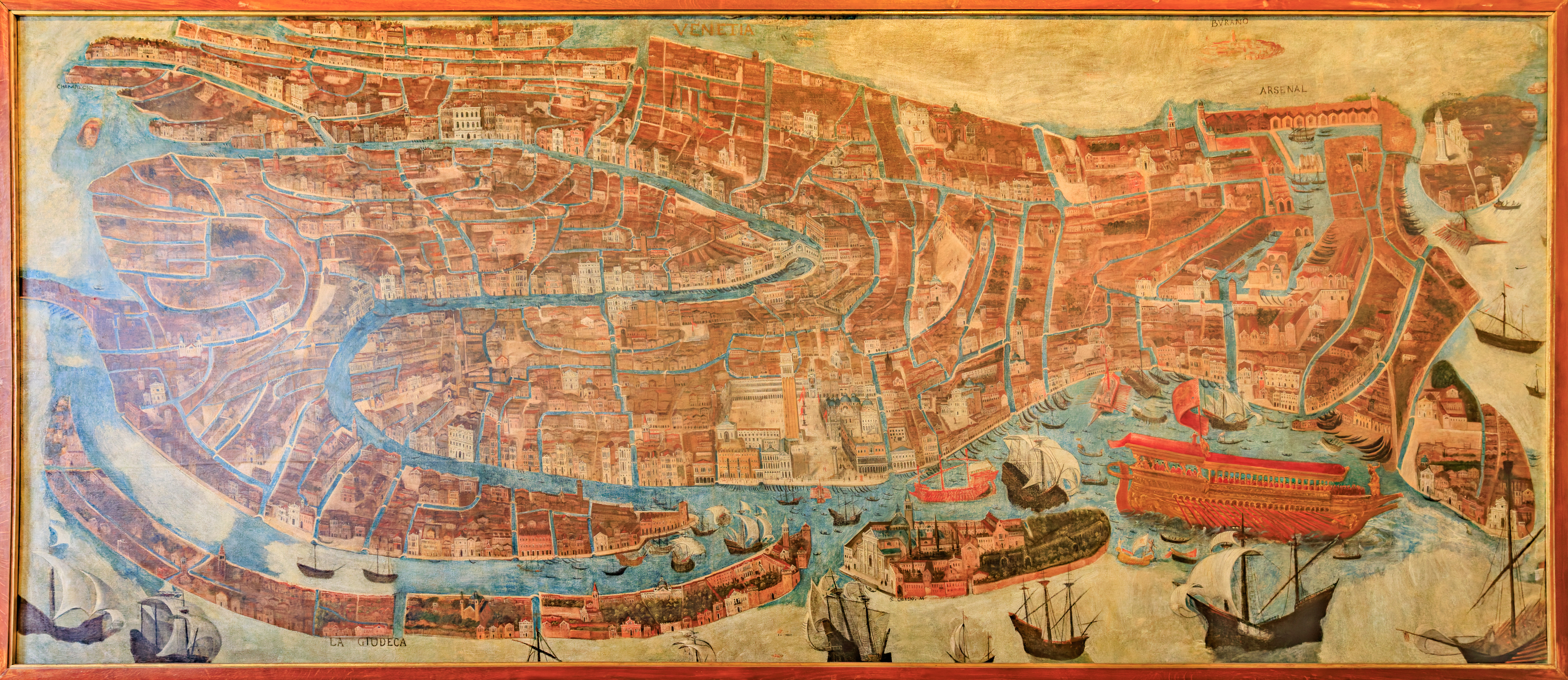
A map of Venice.
We passed through displays of weaponry.
We quickly walked through the National Archaeological Museum, having recently seen tons of this kind of thing in Rome and Athens!
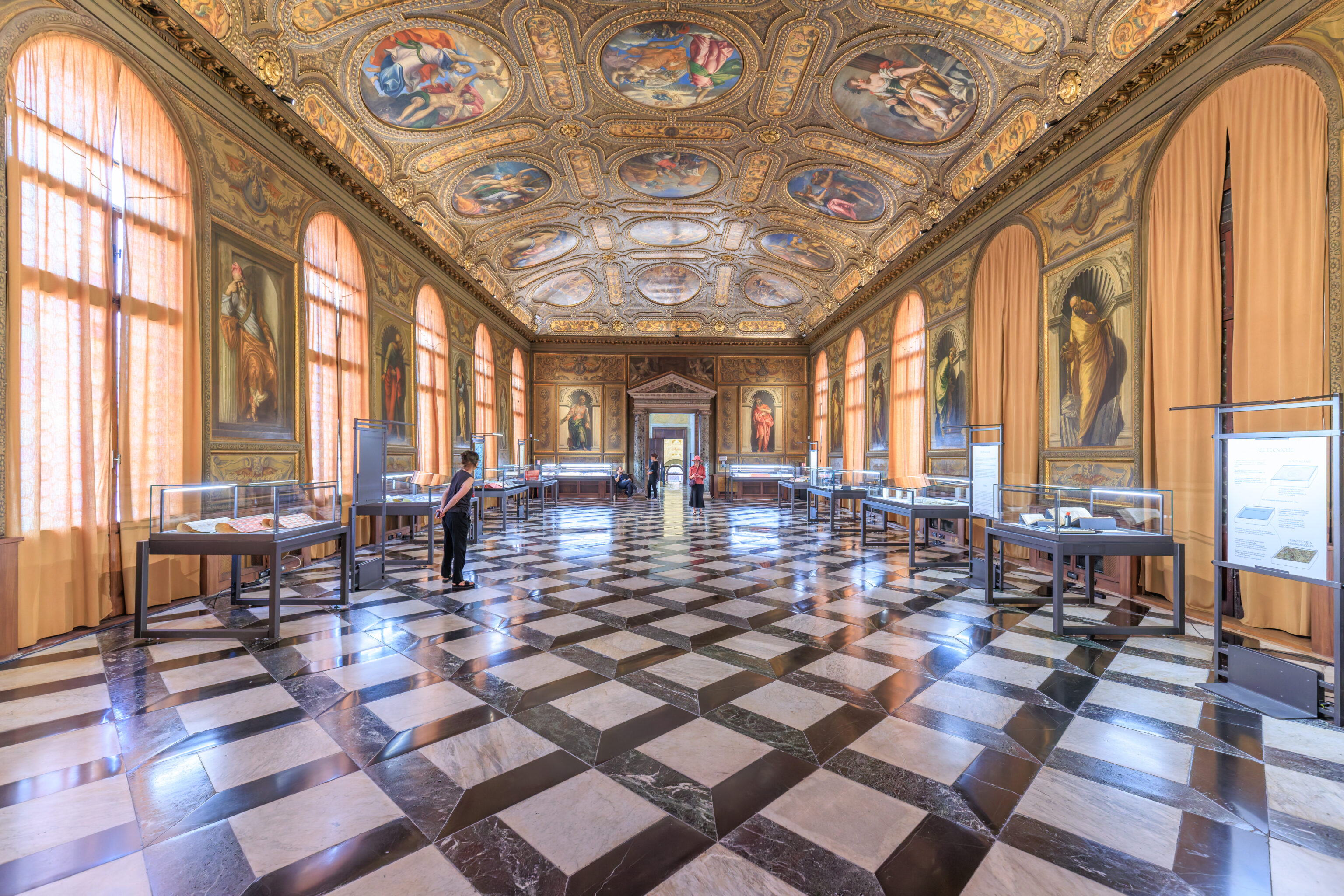
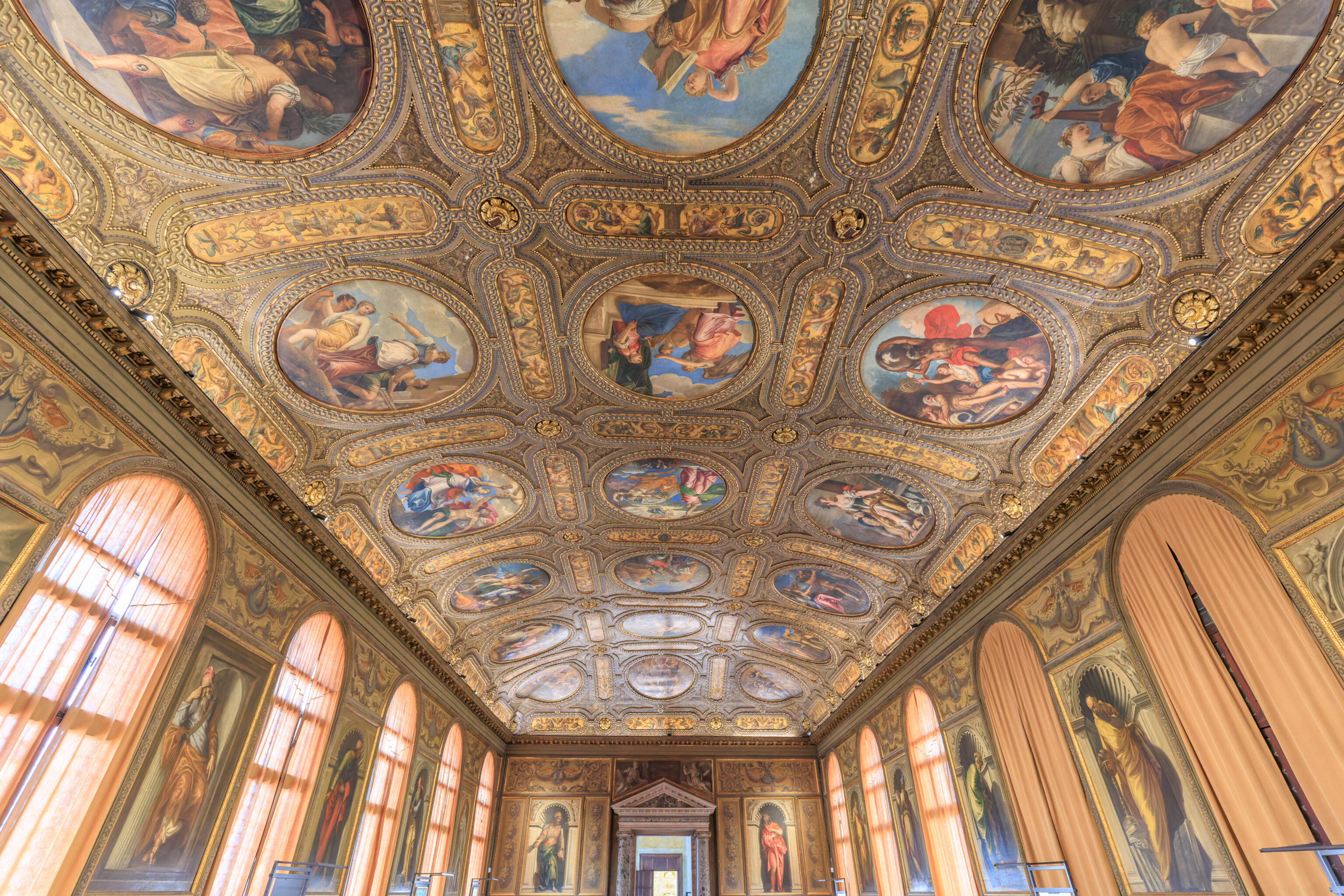
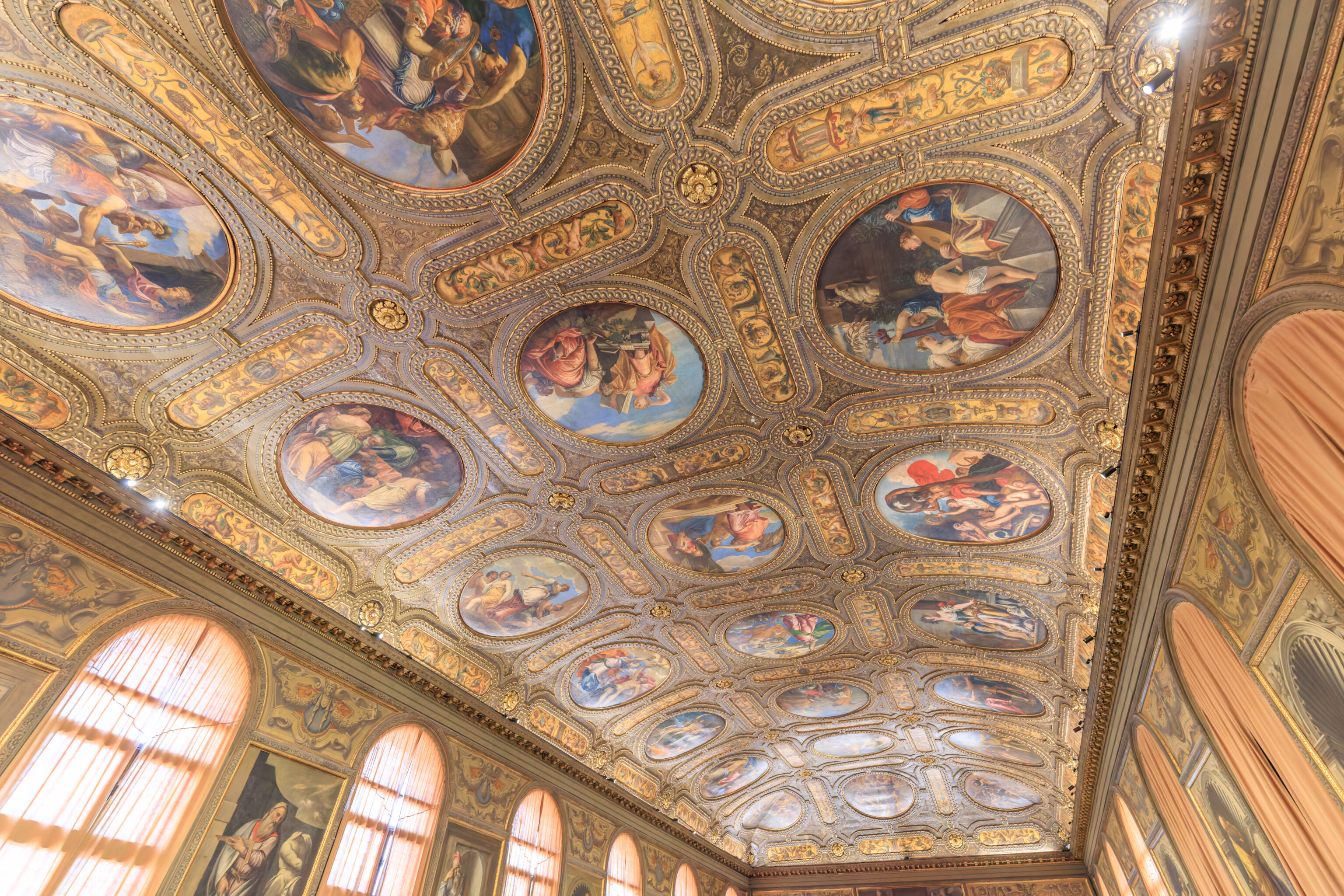
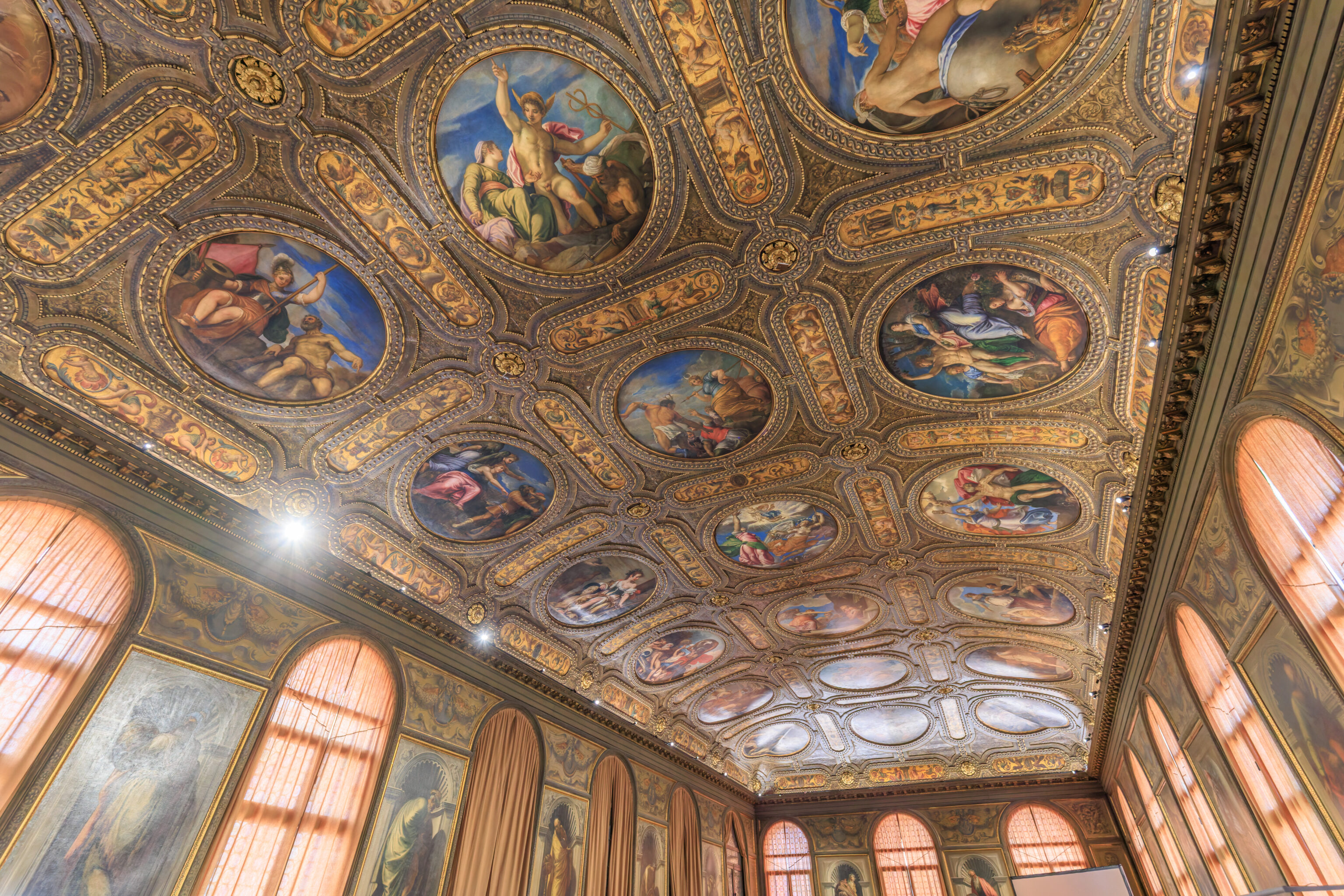
We then entered the Monumental Rooms of the Marciana National Library. Quite impressive!
Monumental Rooms:
Originally accessed from the monumental Staircase, the Library was built by the architect Jacopo Sansovino between 1537 and 1557, the interiors being completed in 1560. It was constructed to house the manuscript collection of the Byzantine cardinal Bessarion, which he had donated to the Republic of Venice in 1468. The priceless codices (nearly a thousand, mostly in Greek) were placed on wooden tables located in the Reading Room.
The Vestibule, or Antechamber, initially served as a hall for lectures on humanistic subjects given to patricians and citizens. But when the Patriarch of Aquileia Giovanni Grimani donated his collection of antiquities to the Republic in 1587, the architect Vincenzo Scamozzi redesigned the space together with Grimani himself in order to display the collection, consisting of some two hundred statues and reliefs.
The ceilings and walls of these rooms are decorated with complex images, derived from classical philosophy. They represent the process of the soul's ascent: the passions and appetites limit individuals, who nevertheless manage to elevate themselves through the study of the Liberal Arts and the exercise of Virtues (depicted in the Staircase). By completing this path, they are prepared to govern the Venetian State with wisdom, knowledge, and righteousness (paintings in the Vestibule and the Library).
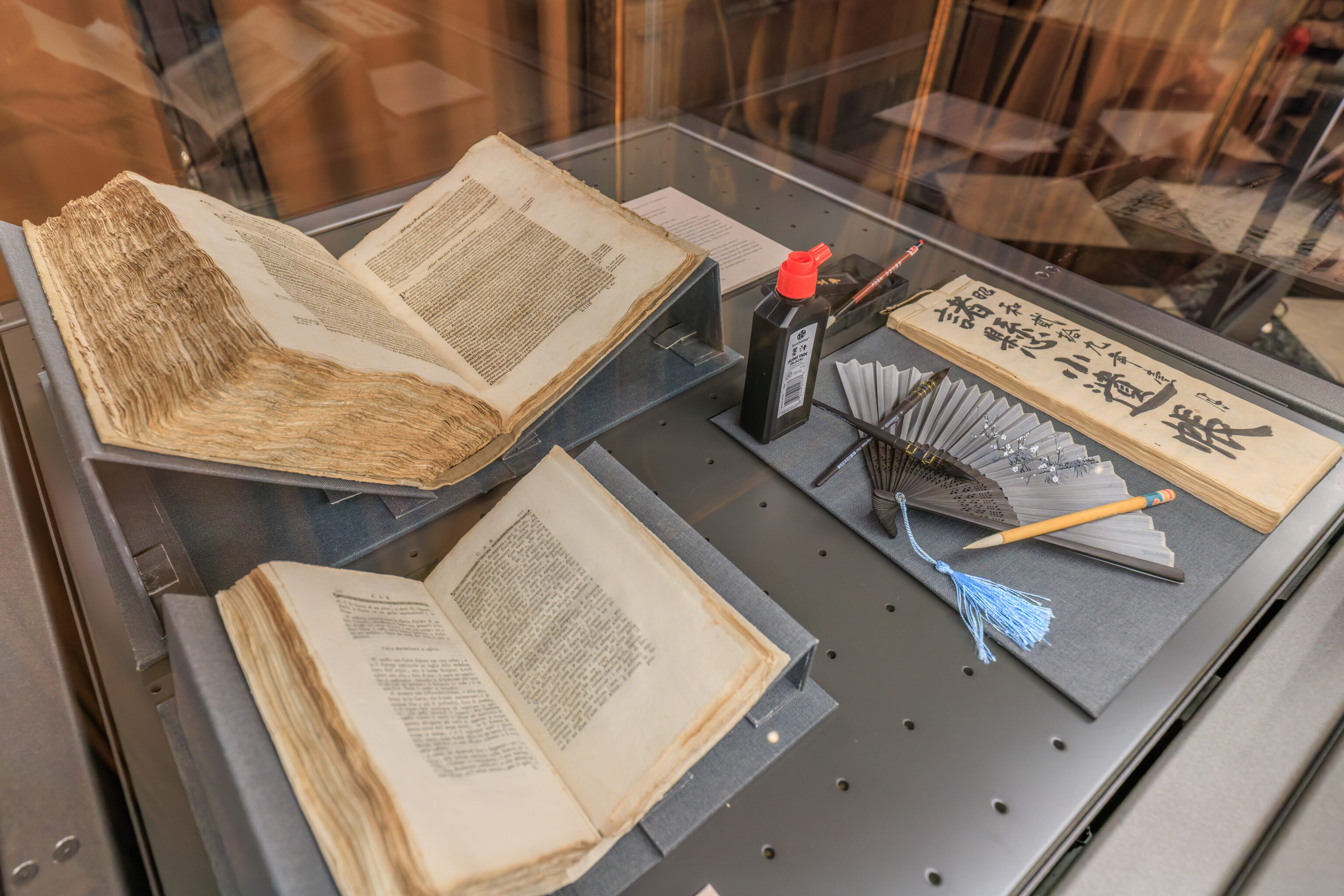
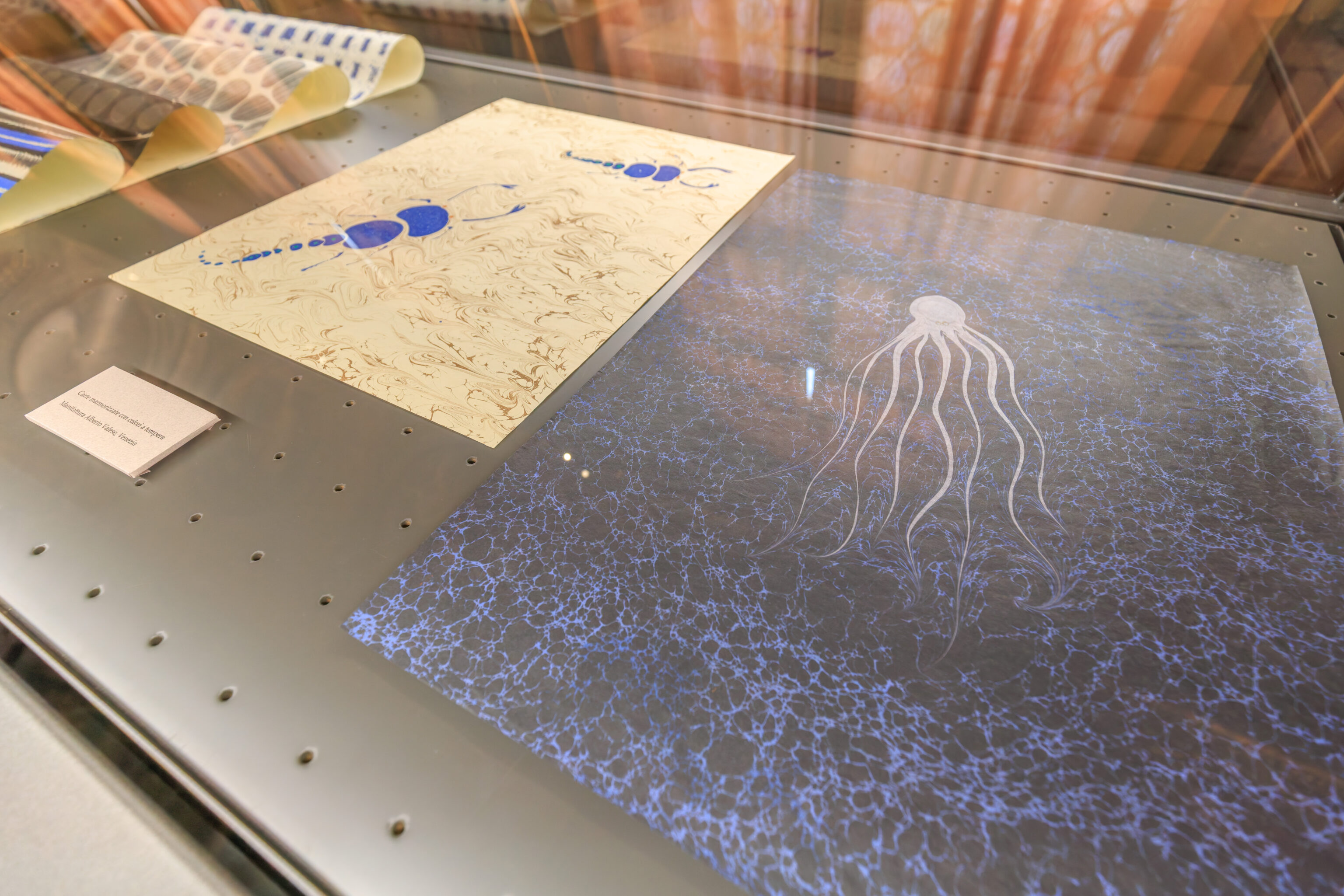
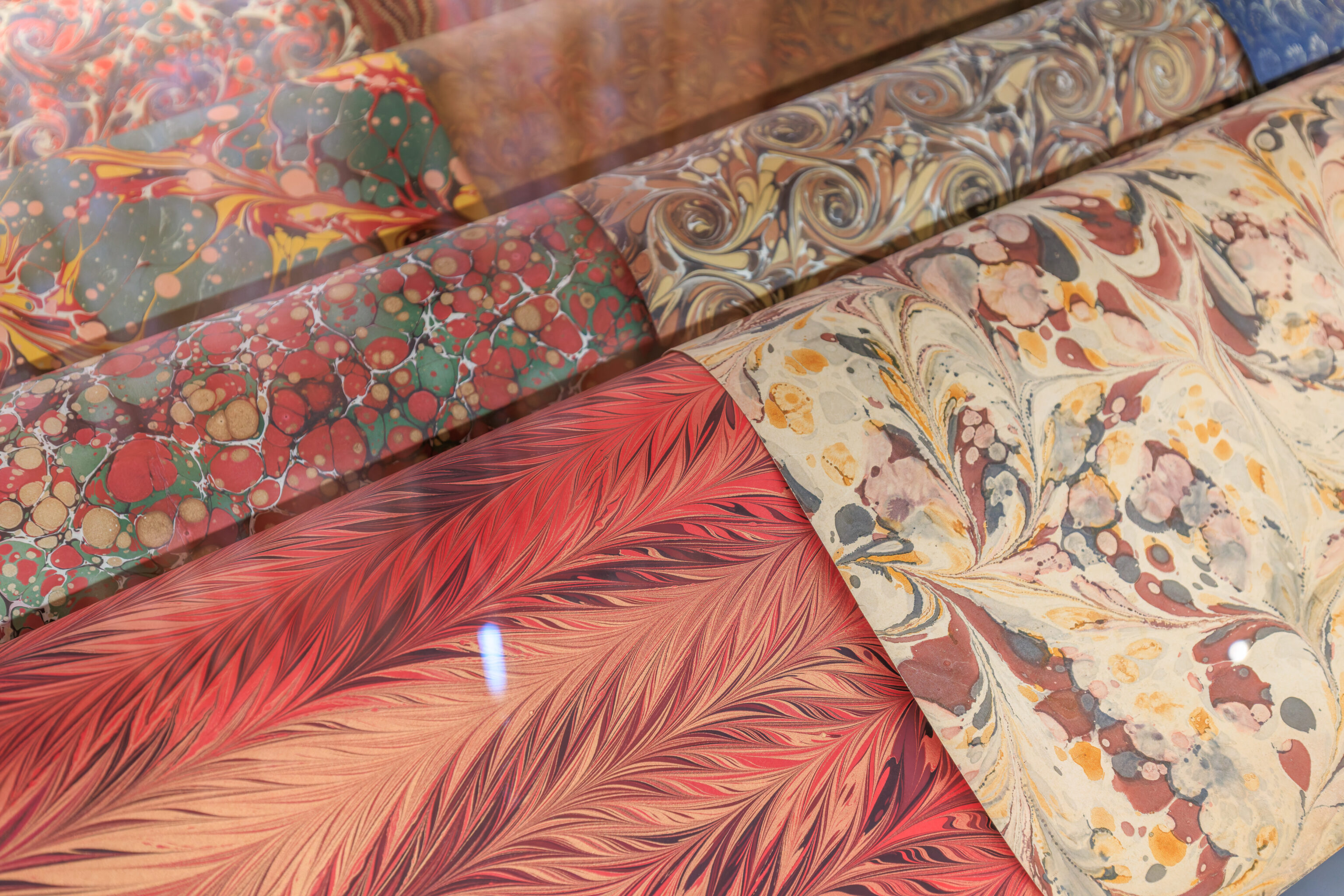
There was an exhibition in the room related to paper and writing.
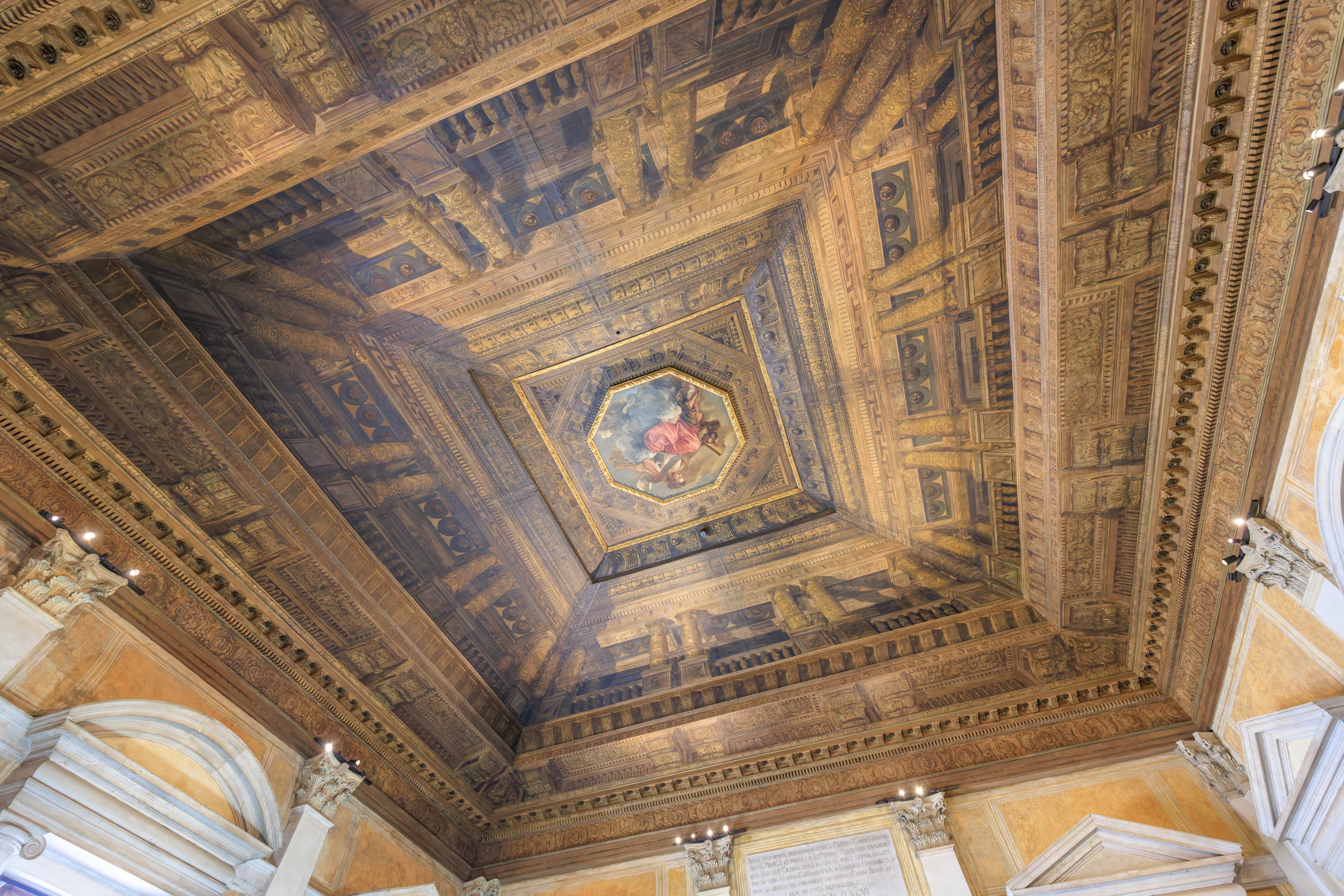
The ceiling here has a very realistic three dimensional effect!
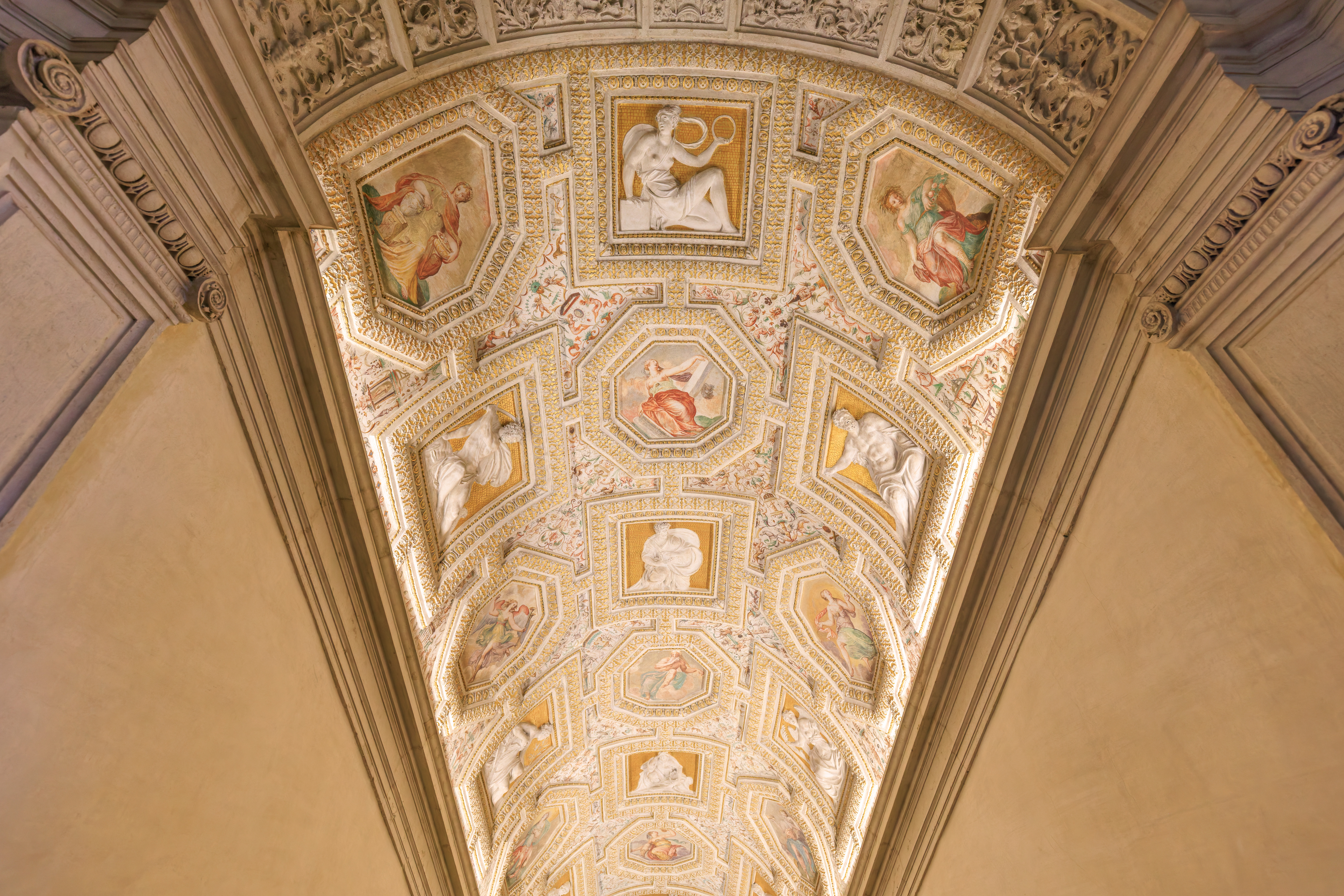
This stairway is reminiscent of the Scala d’Oro that we saw yesterday in the Palazzo Ducale.
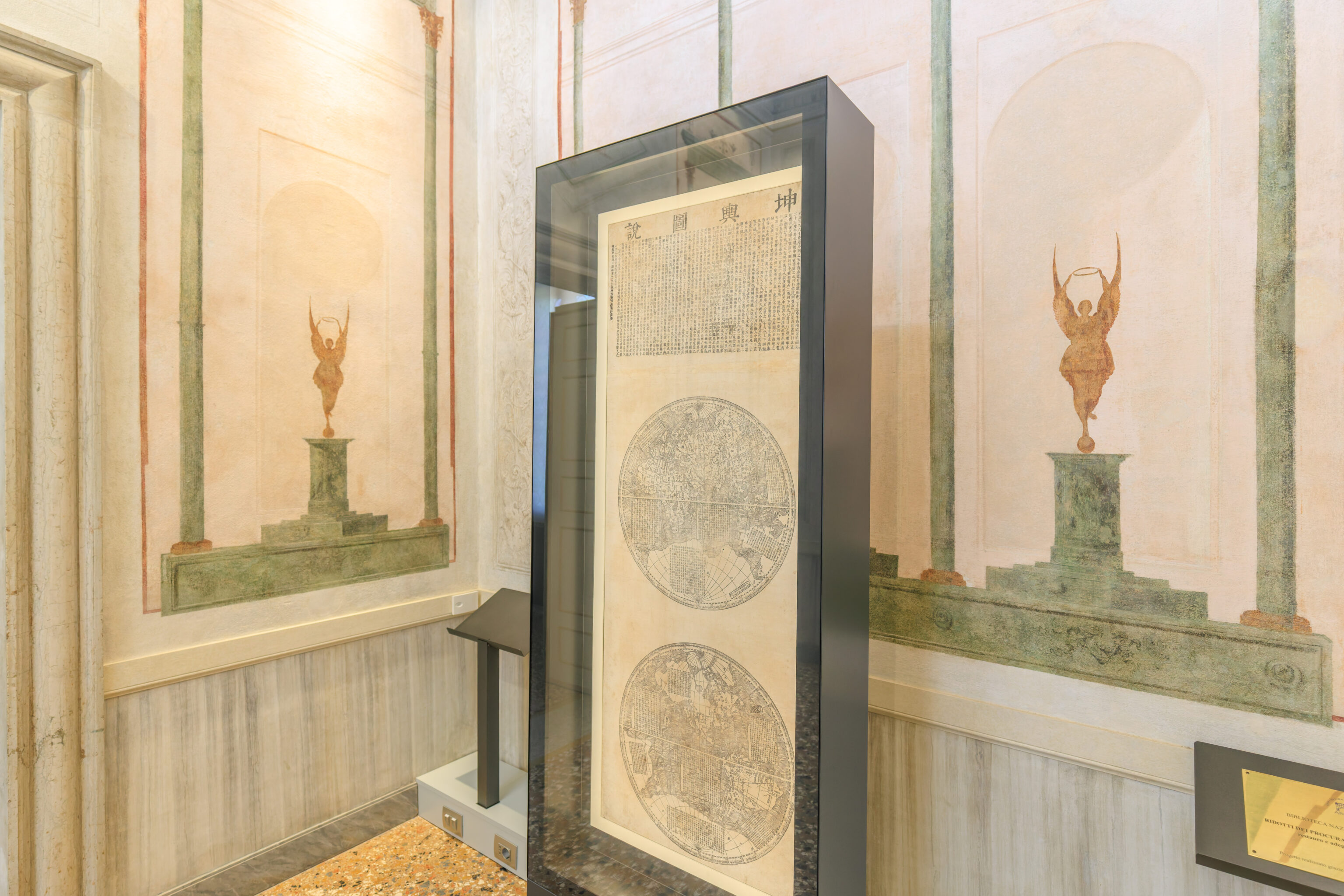
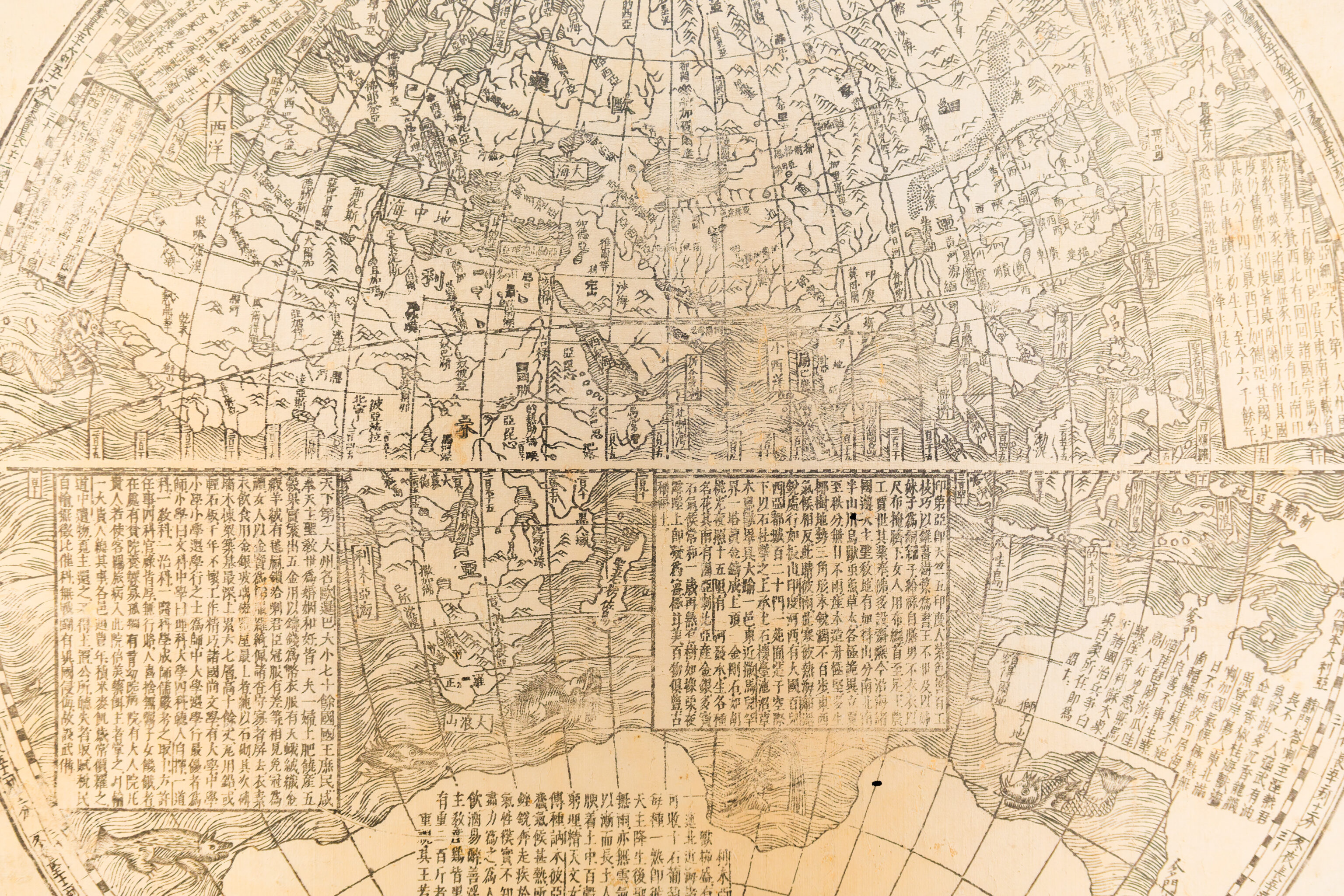
We were extremely surprised to come upon this display. It shows maps of both hemispheres in Chinese!
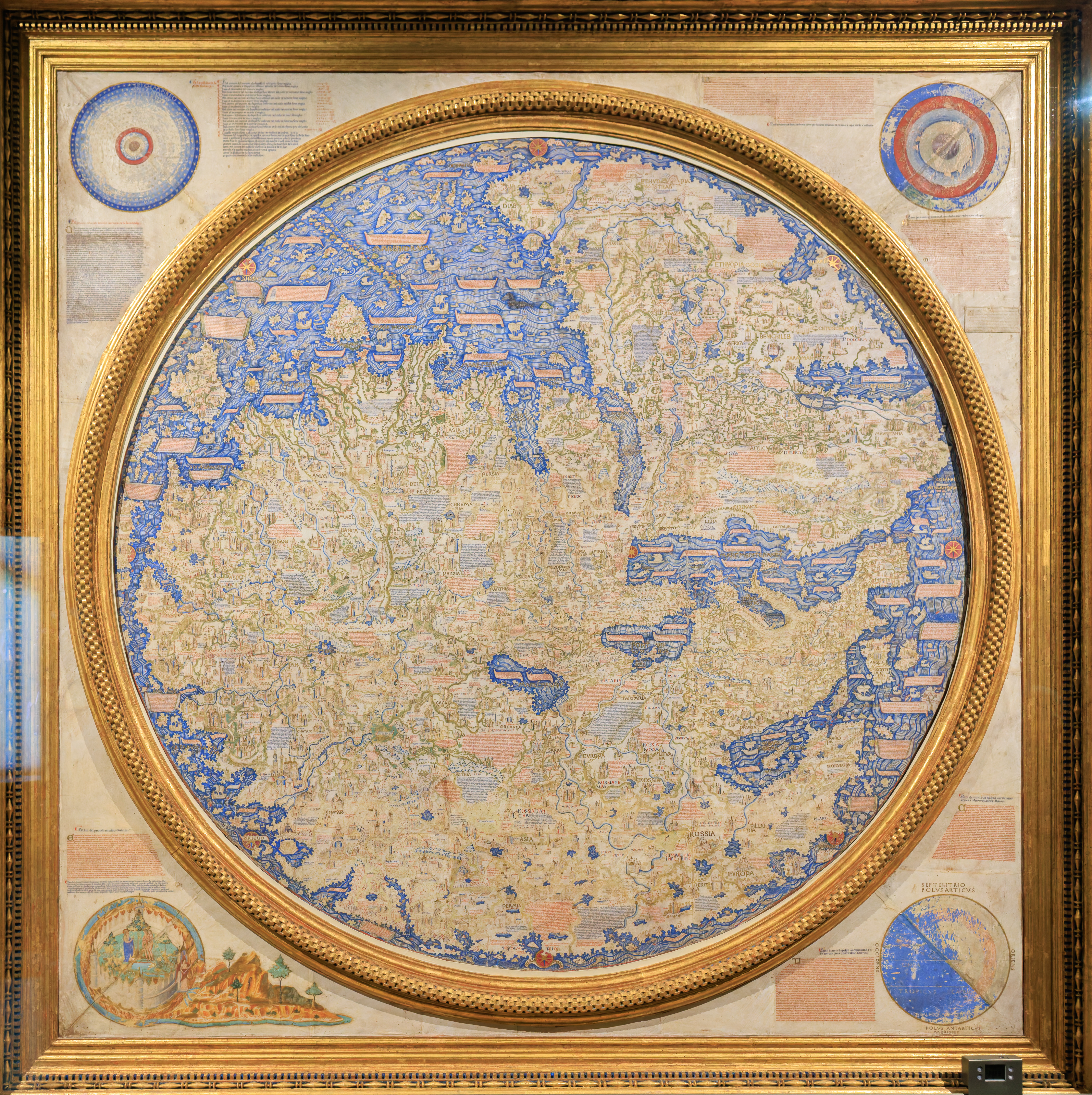
There was also an extremely detailed map of the then-known world created by Fra’ Mauro here in Venice in the 15th century.
Fra’ Mauro’s World Map
Venice, 1457-1459
Manuscript, parchment on wood, 196 x 193 cm
[wooden frame 223 x 223]
Considered one of the greatest masterpieces of cartography of the late Middle Ages, the Fra Mauro's World Map contains about three thousand inscriptions, and reproduces the ecumene completely surrounded by seas, with a drawing oriented to the South, from the southern limits of the African continent to the northernmost part of Permia, beyond Urals, from Java to Madeira.
Knowledge and number of sources are certainly the biggest difference between the representation of the world made by Mauro and the previous cartography, in fact it contains an extraordinary synthesis of different languages: cartographic, historical, literary and oral testimonies. The illustrated space is represented by images and texts: the former reproduce rather conventional stylistic features, while the texts offer descriptions and discursive explanations. The notes - all in Venetian vernacular - contain news, observations, comments and reflections, which undoubtedly imply a sure knowledge of the writings of classical, late Latin and early medieval authors.
The awareness of the importance of the work that Mauro carried out and of its novelty are perfectly synthesized in a cartouche placed to the South of Brittany: «In this work, for necessity's sake, I have agreed to use modern and vernacular names because if I had done otherwise, few would have understood me except for a few literary men ... ».
The new display of the Fra' Mauro's World Map was possible thanks to the generous support of the Ba'a Foundation - Saudi Arabia and of the Associazione Amici della Marciana.
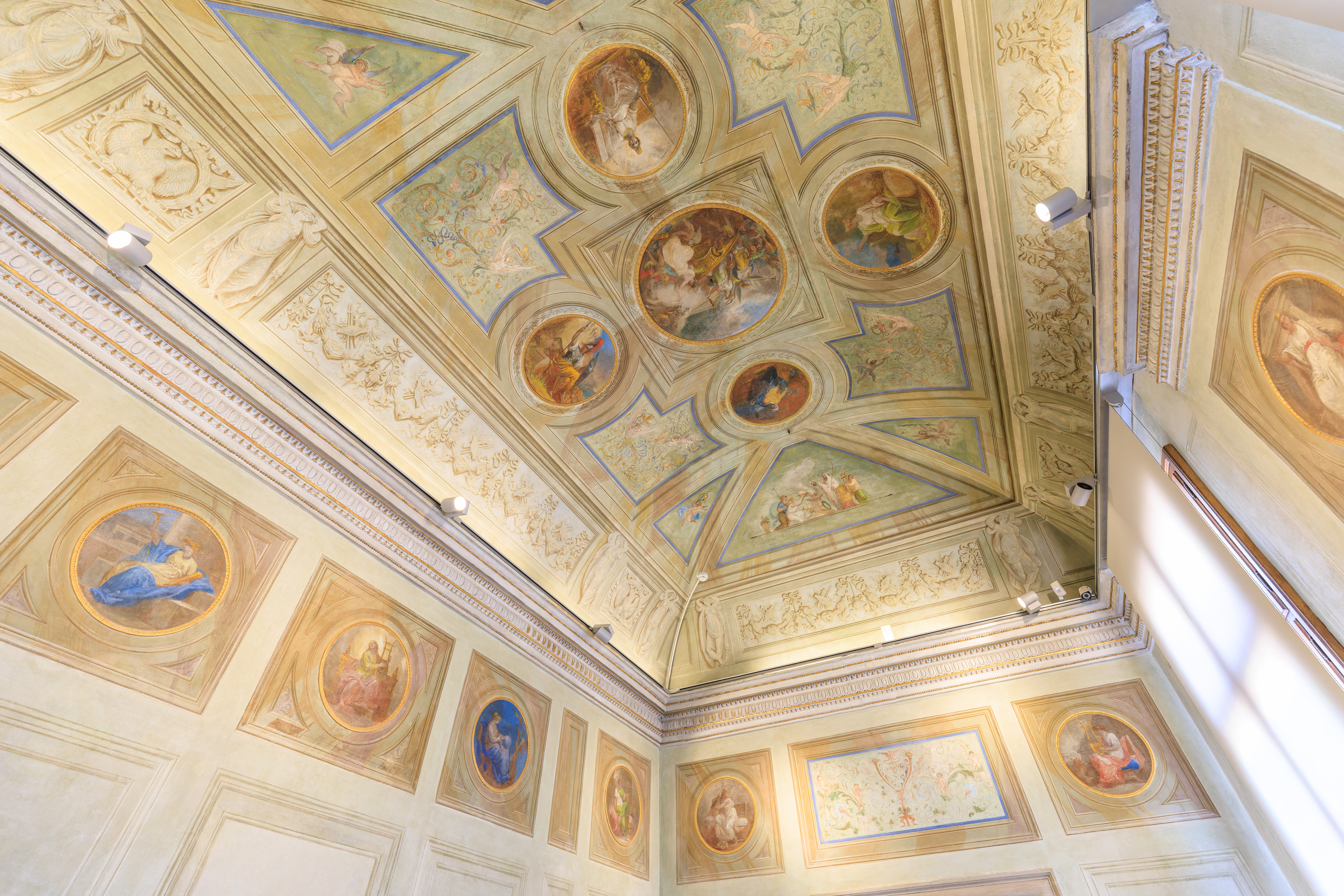
This room was not as ornate as the others.
We continued on, returning to the National Archaeological Museum.
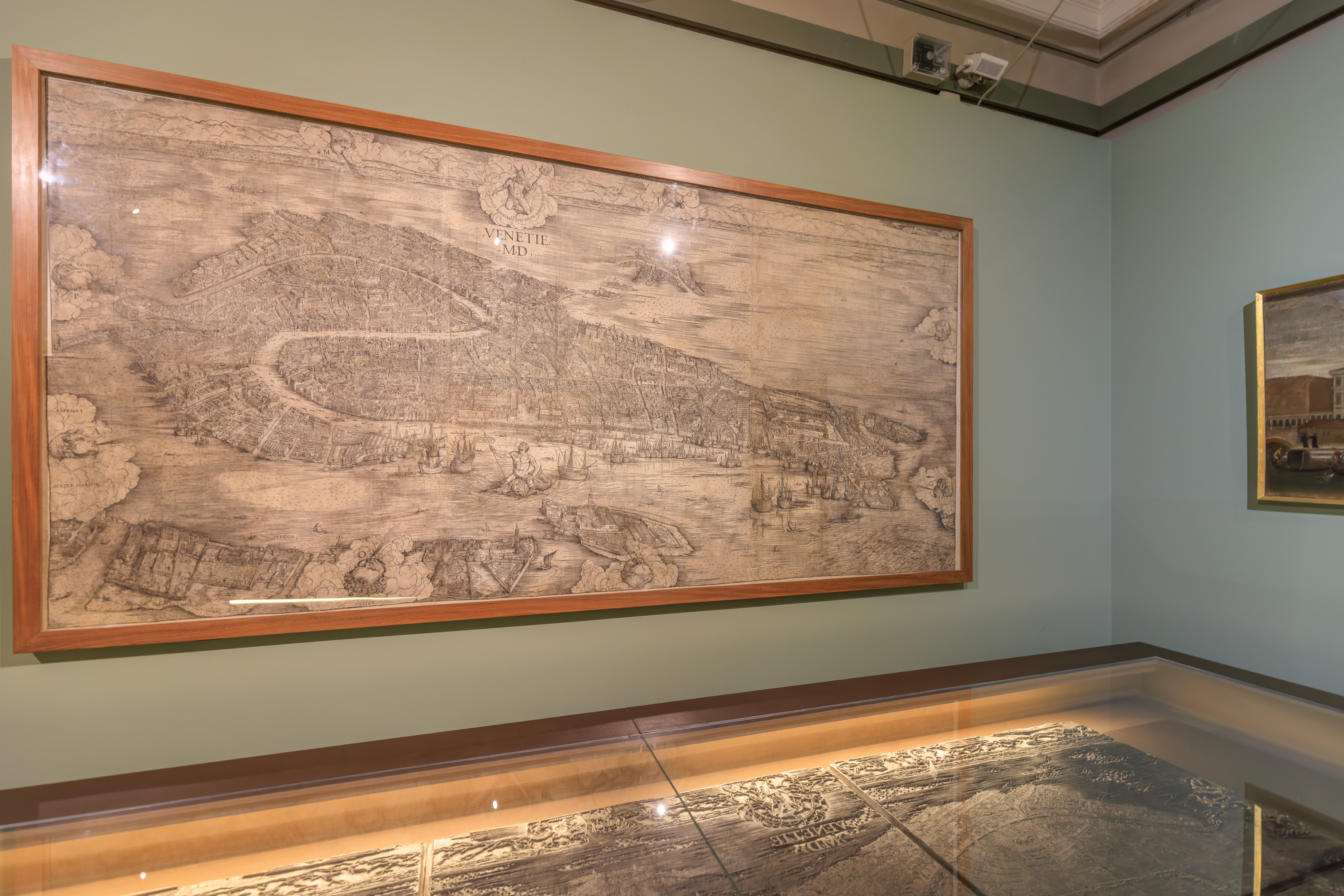
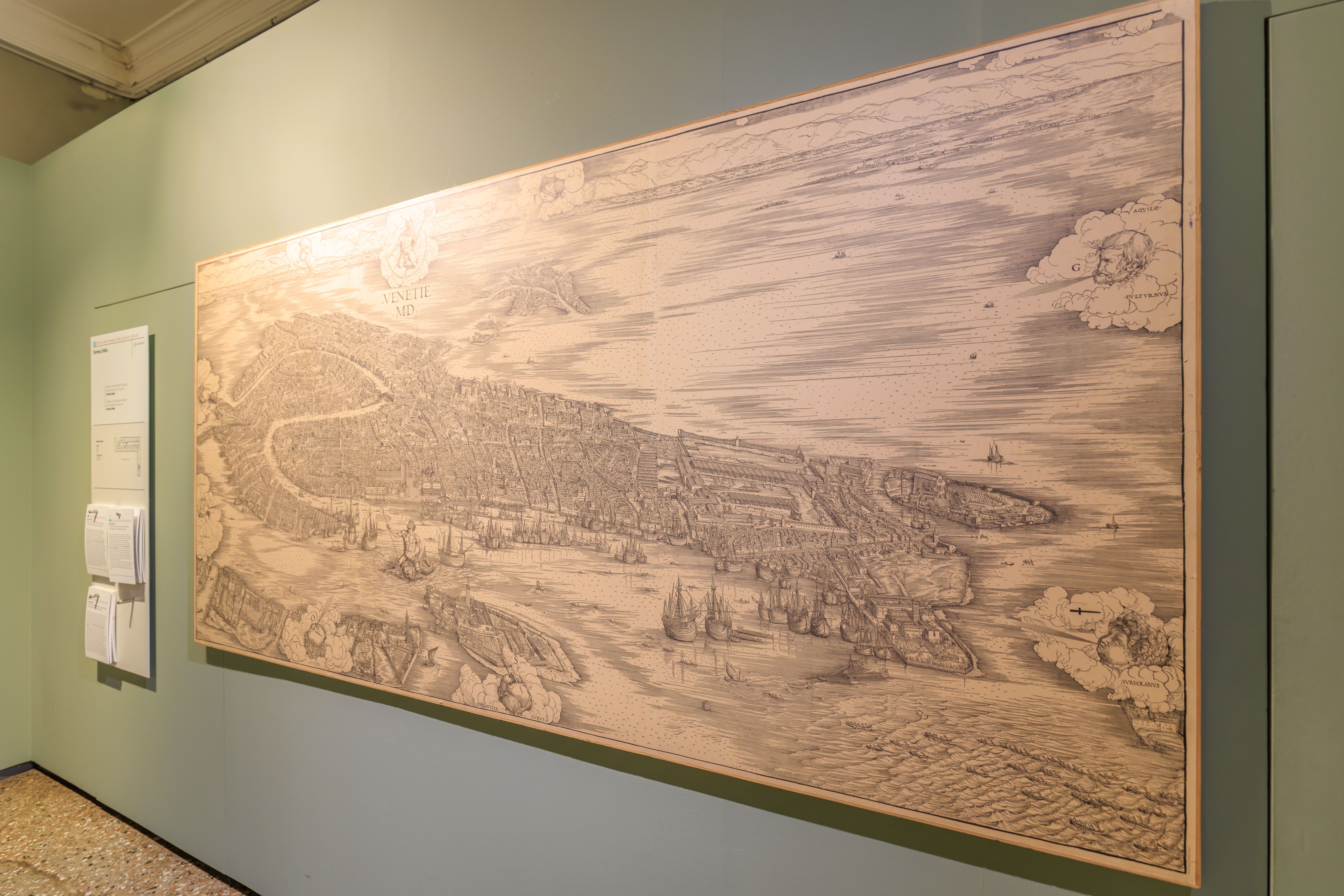
These displays show an incredibly detailed map of Venice.
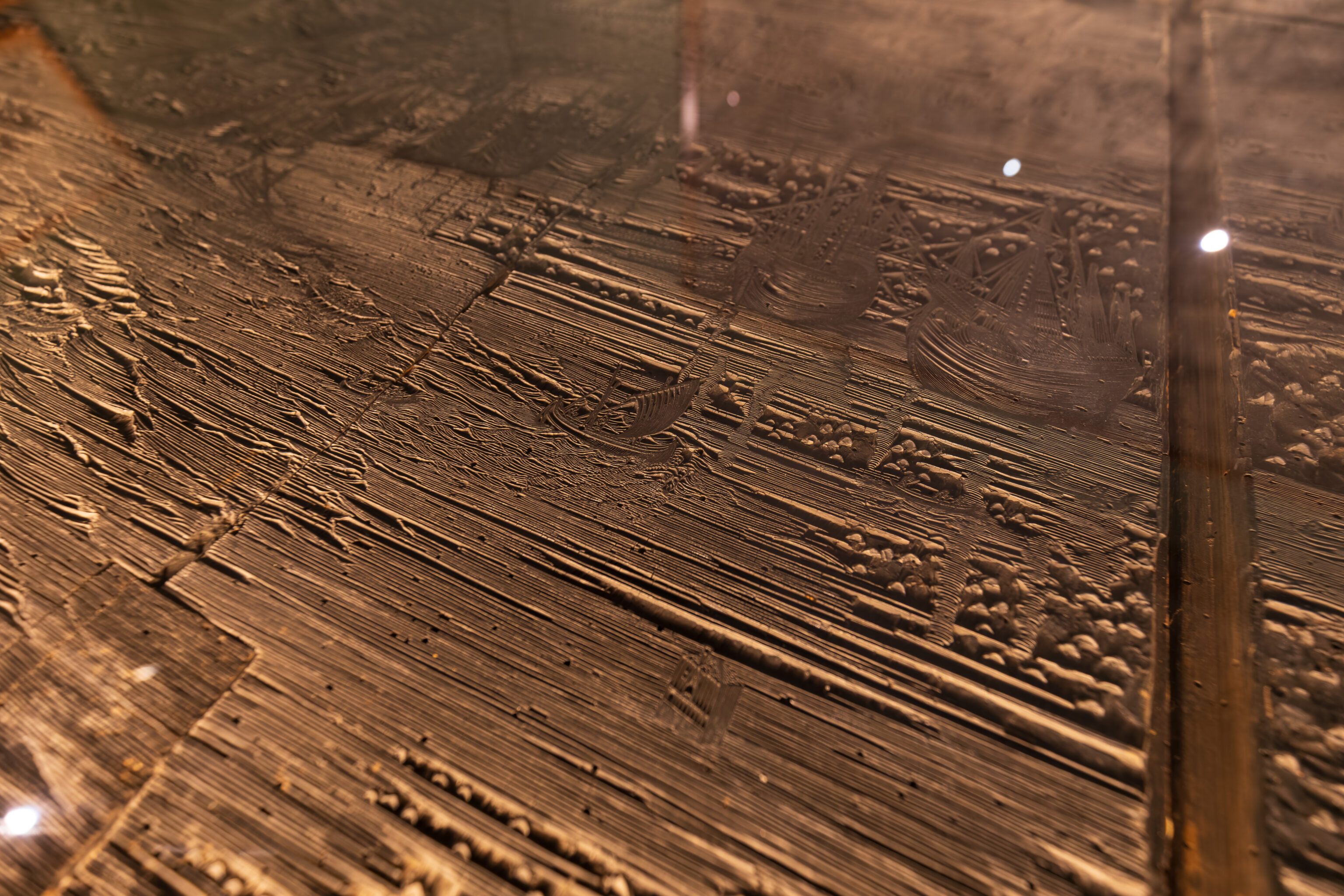
The map was created using this wooden printing plate. It is unfortunately under glass so the reflections somewhat mar the view of it.
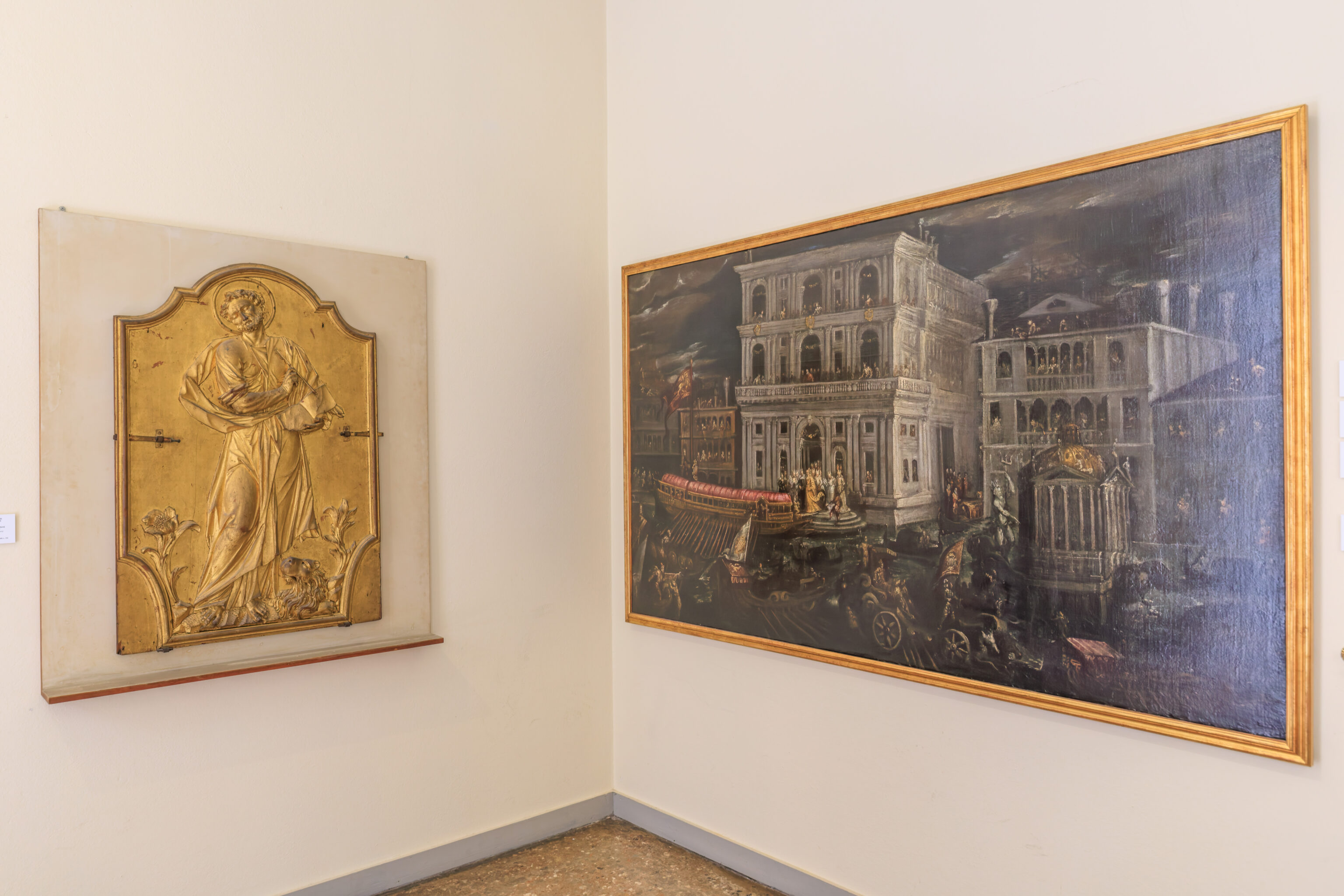
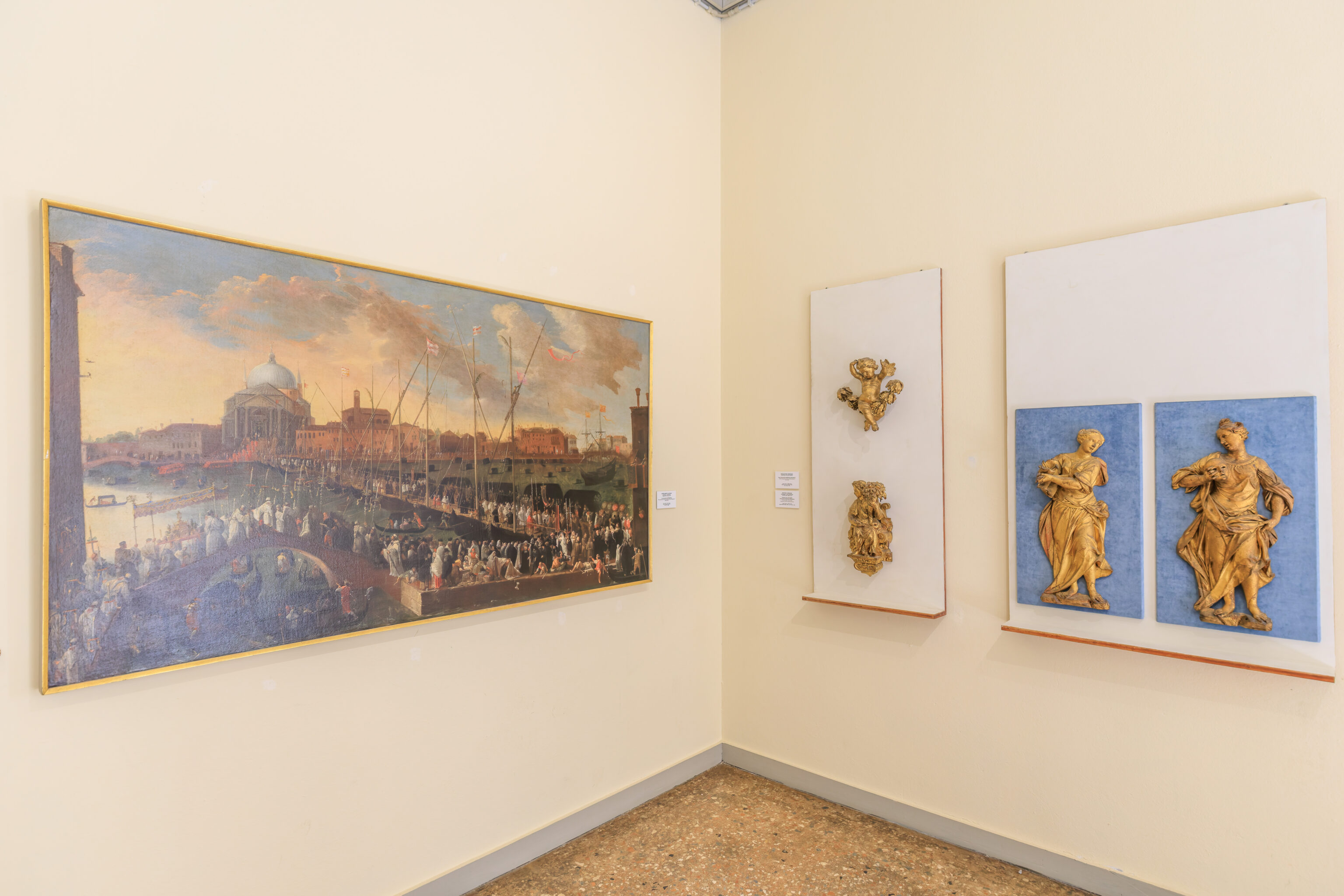
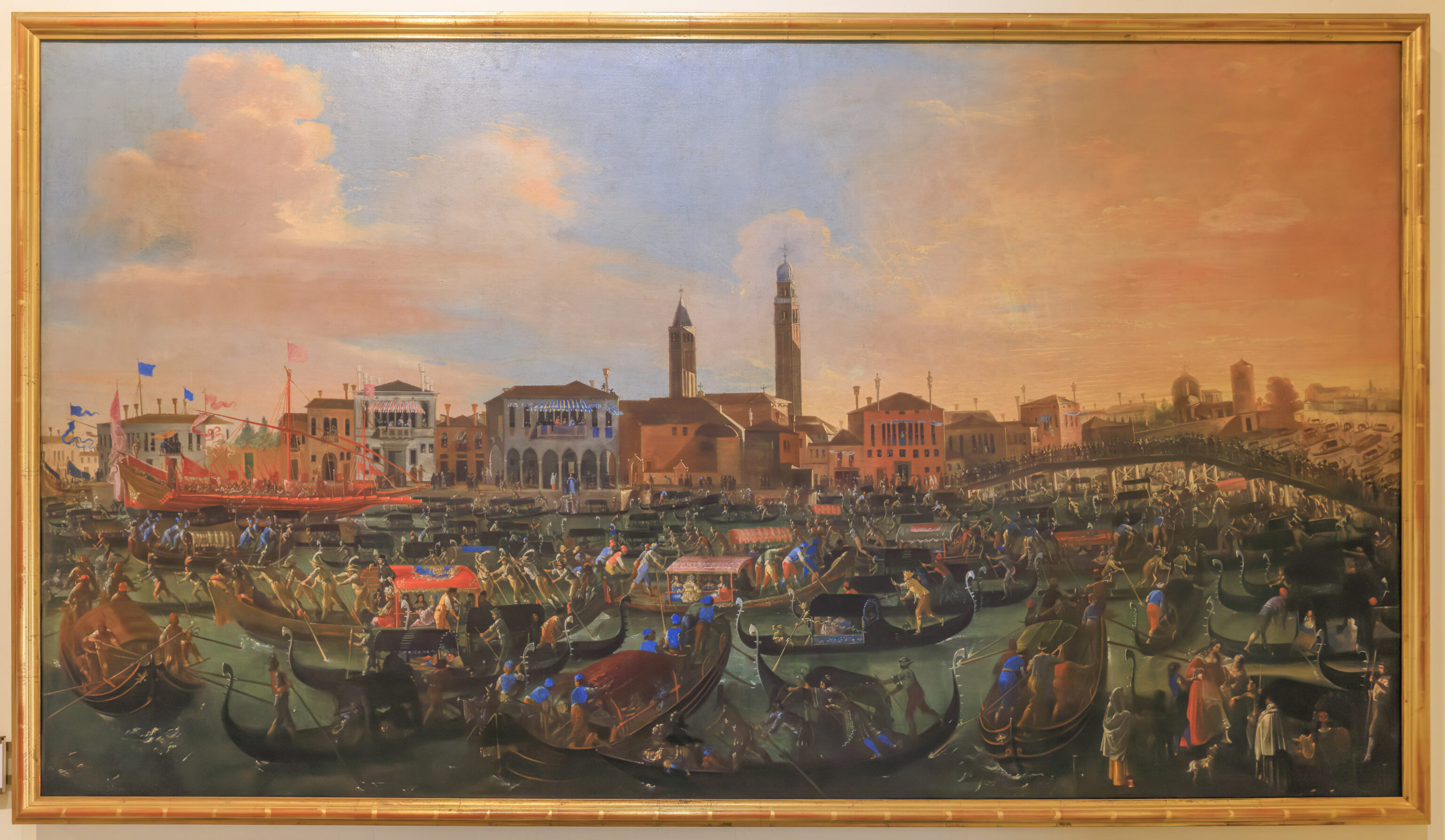
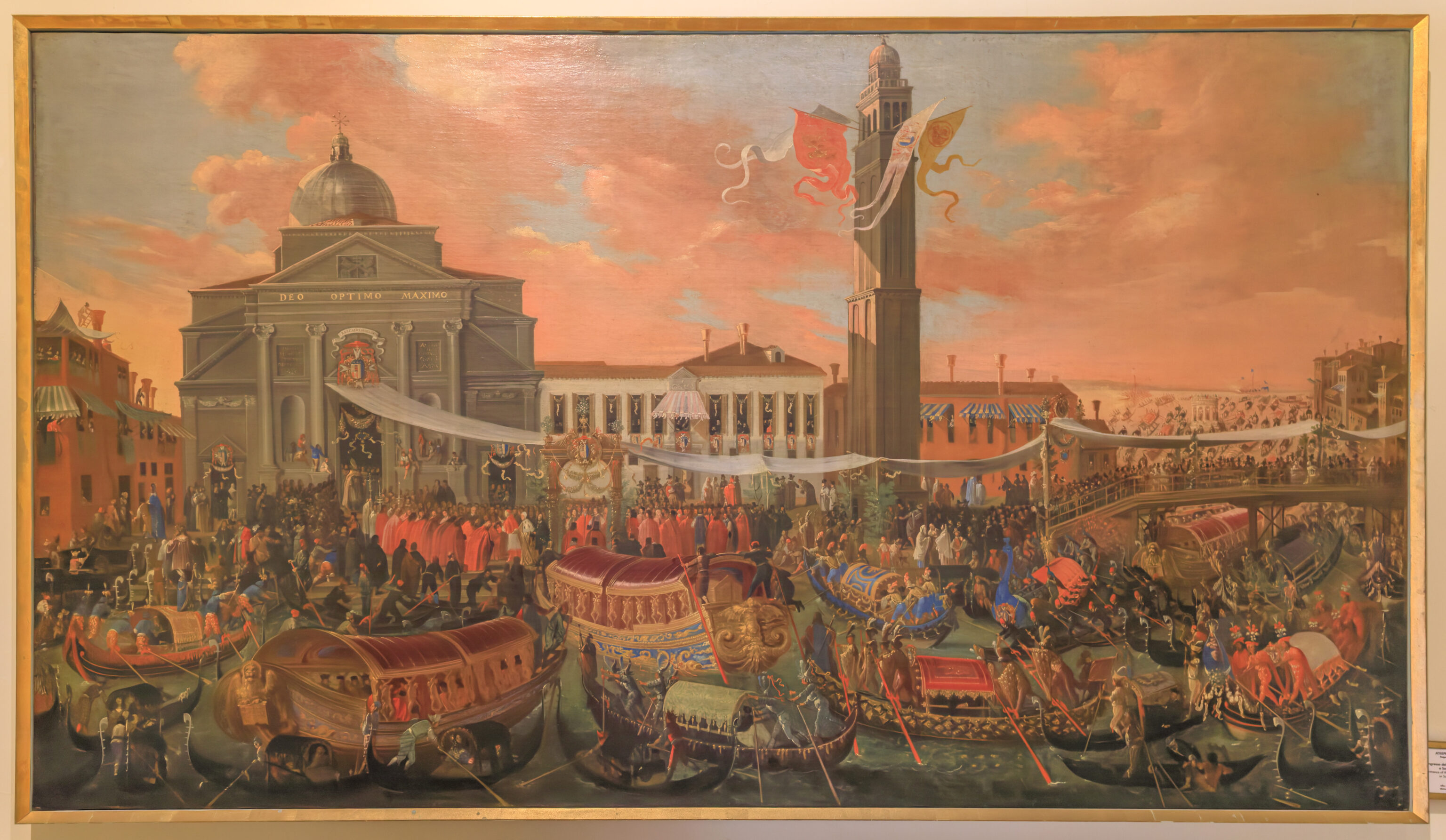
We continued on, passing by very detailed Venice related art.
We continued on, walking through the remaining rooms.
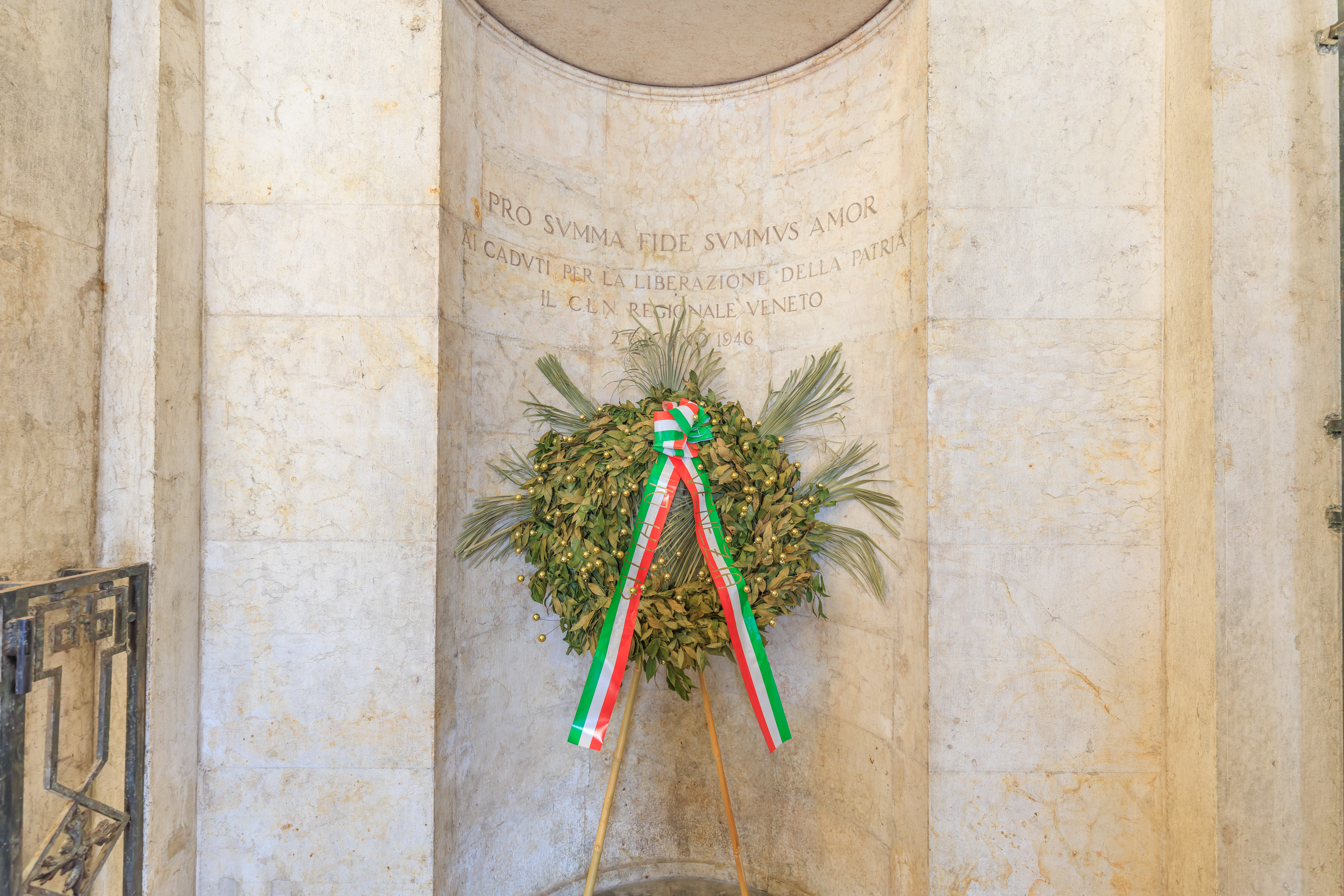
This wreath is for the Festa della Repubblica, which was yesterday, in honor of the June 2 referendum of 1946 which created the modern Italian Republic.
Lunch
We exited just before 1pm. Time for lunch! We decided to eat at Al Mercante, a restaurant near where had dinner yesterday. We actually considered this restaurant yesterday but ended up going to La Piazza instead.
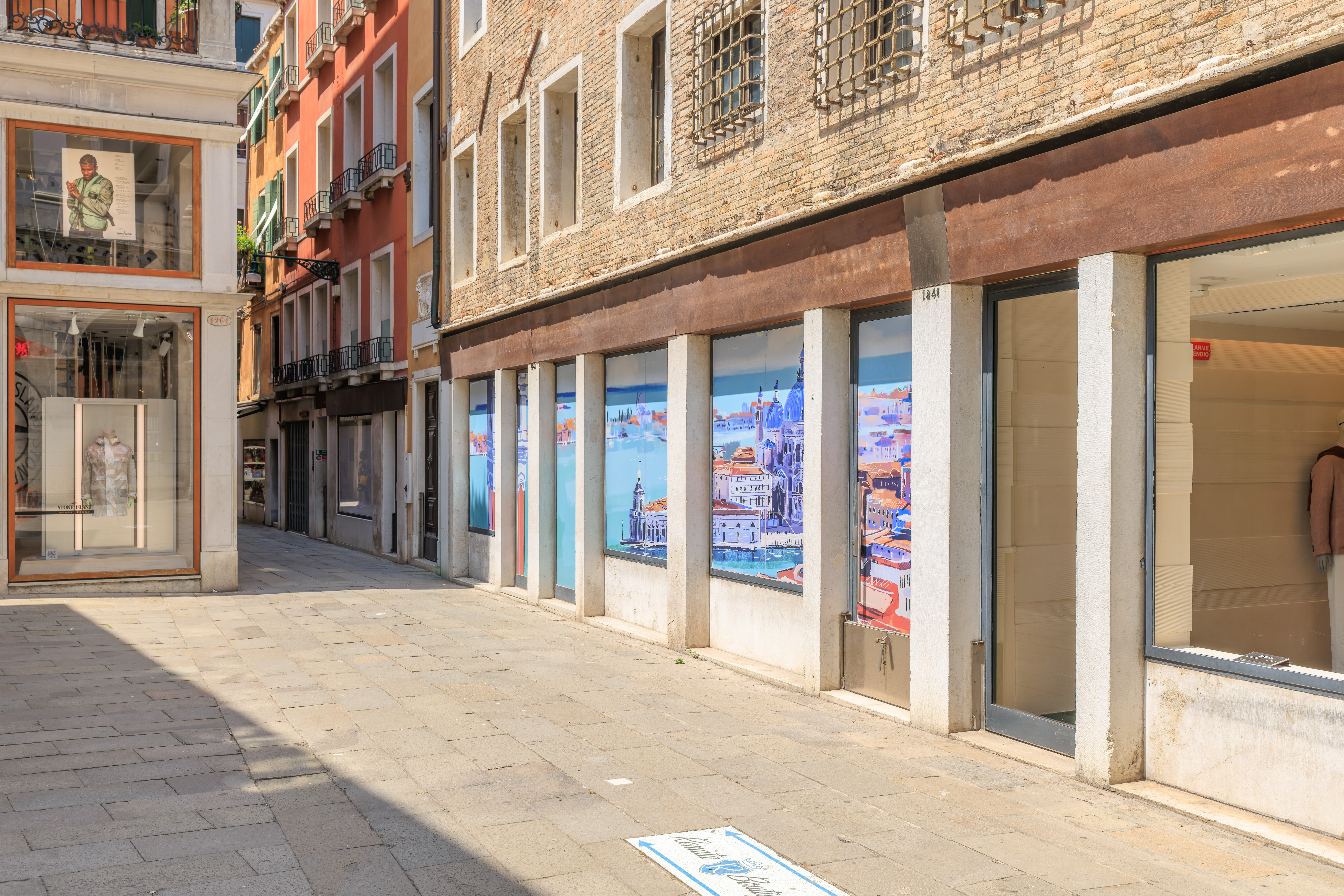
These windows of what seems like an unused storefront had a pretty nice mural of Venice.

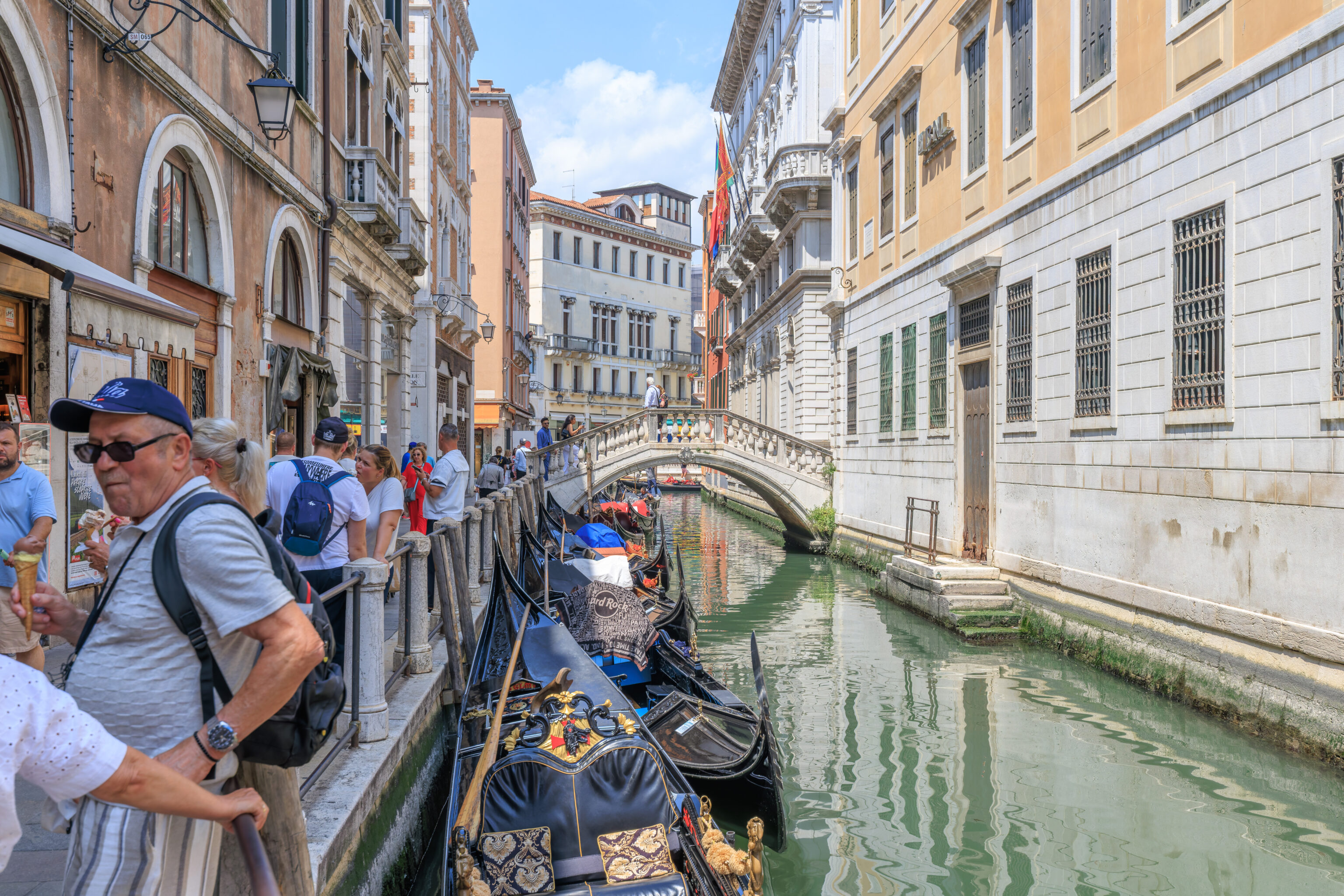
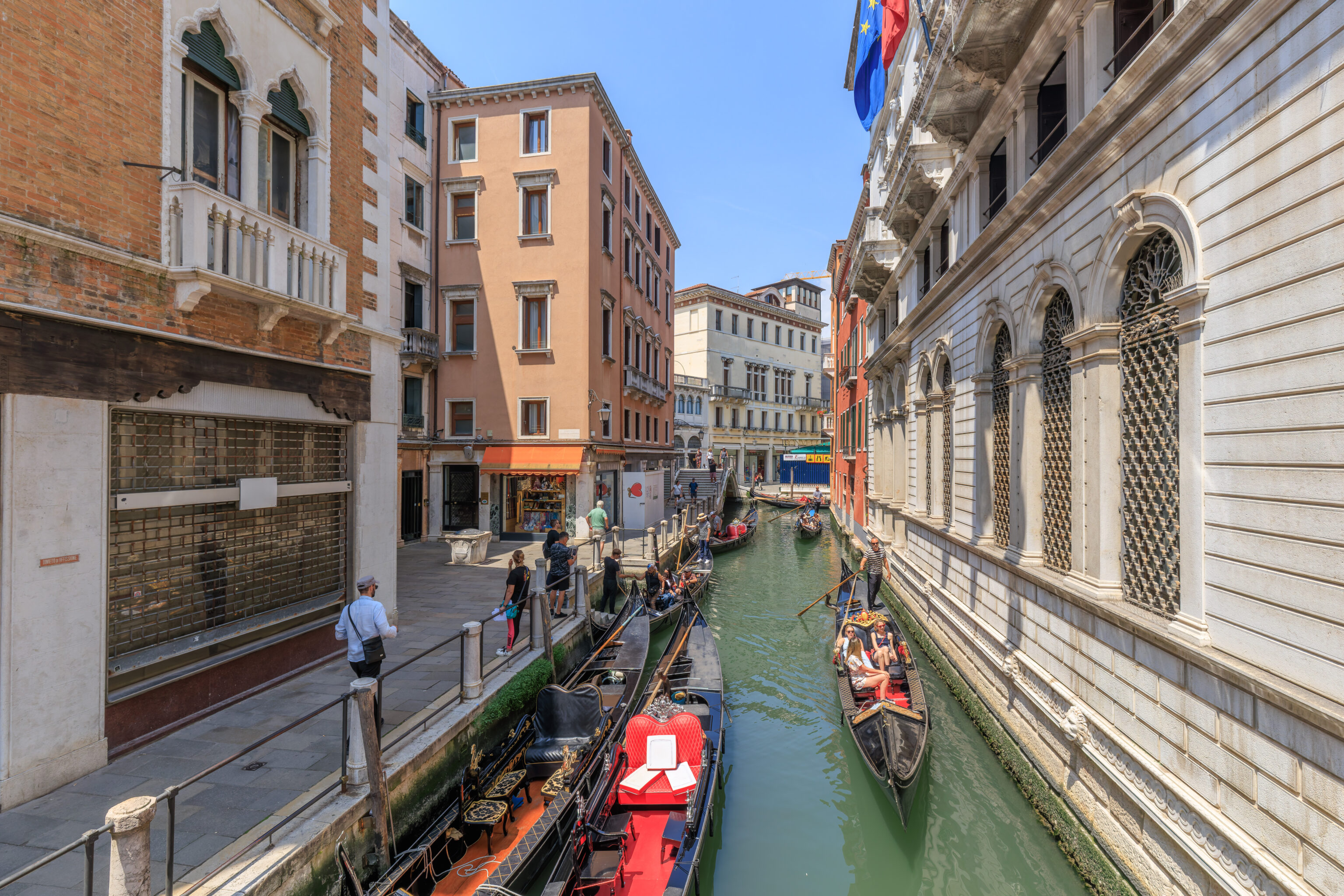
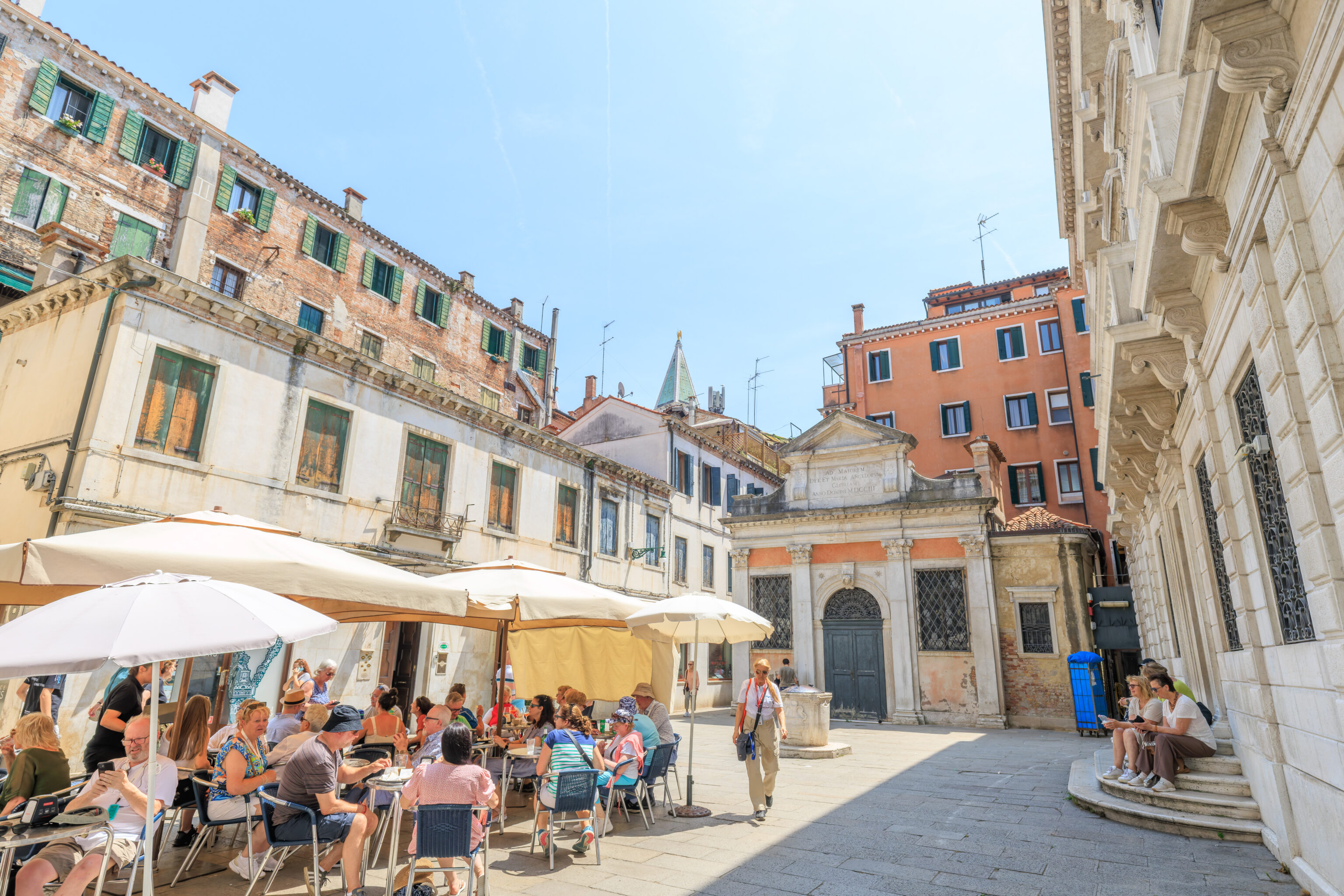
After walking about a block to the north beyond the Piazza San Marco, we turned and started walking east. On the way, we noticed that most of the canal gondolas were docked. It seems it is lunch time for nearly everyone right now!
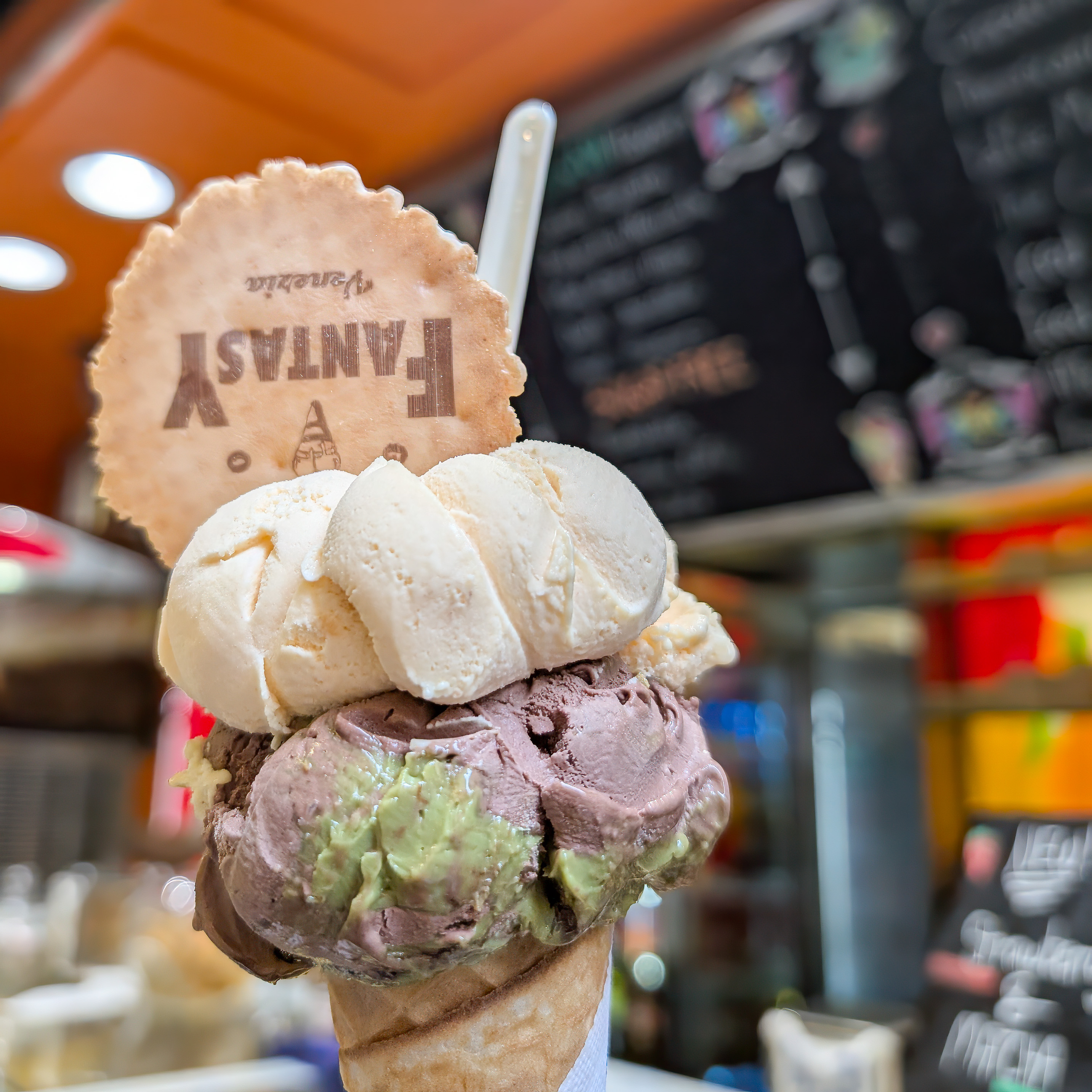
We stopped for gelato on the way at Gelato Fantasy. We got a cone with Dubai chocolate and mandarin. Both great flavors.
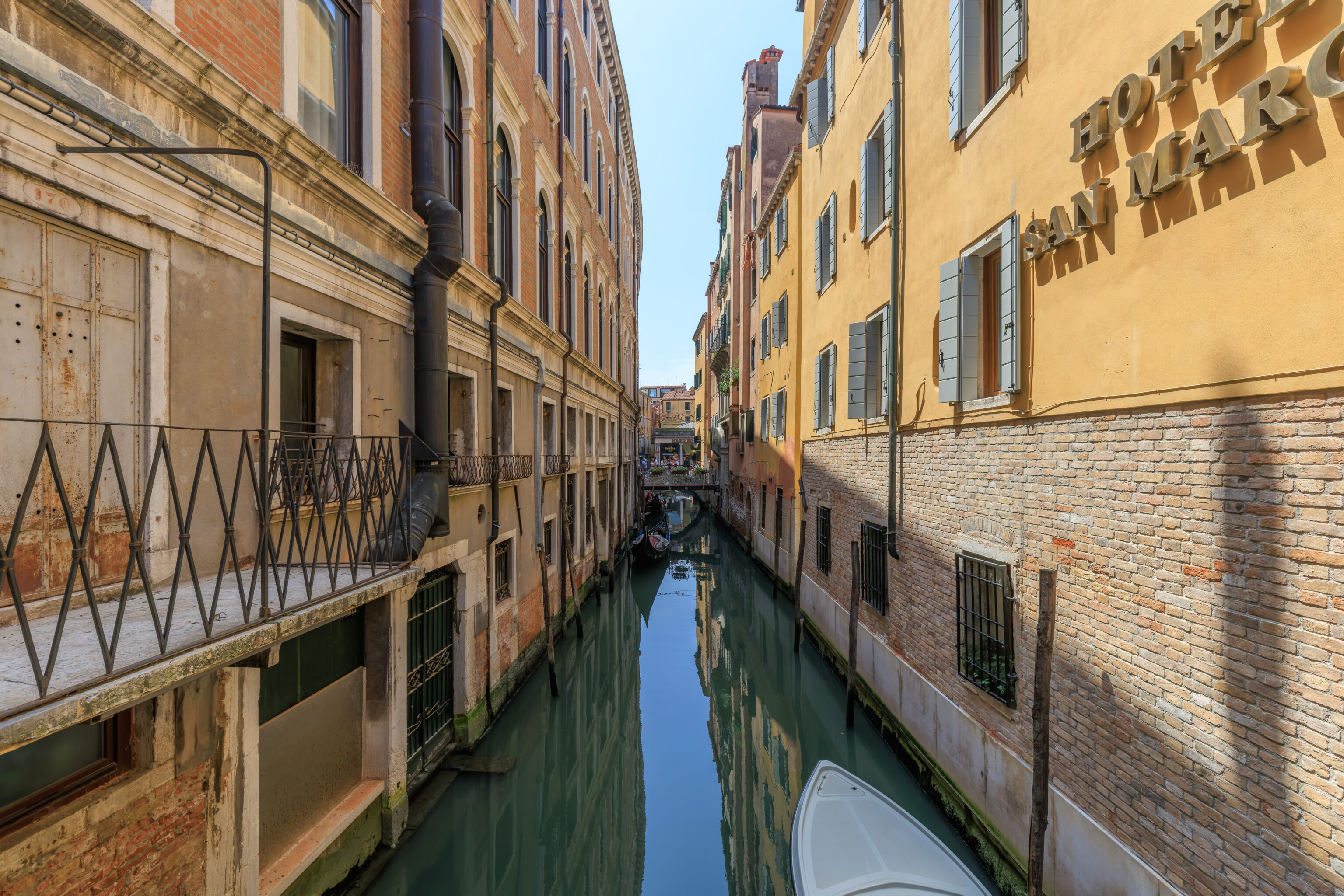
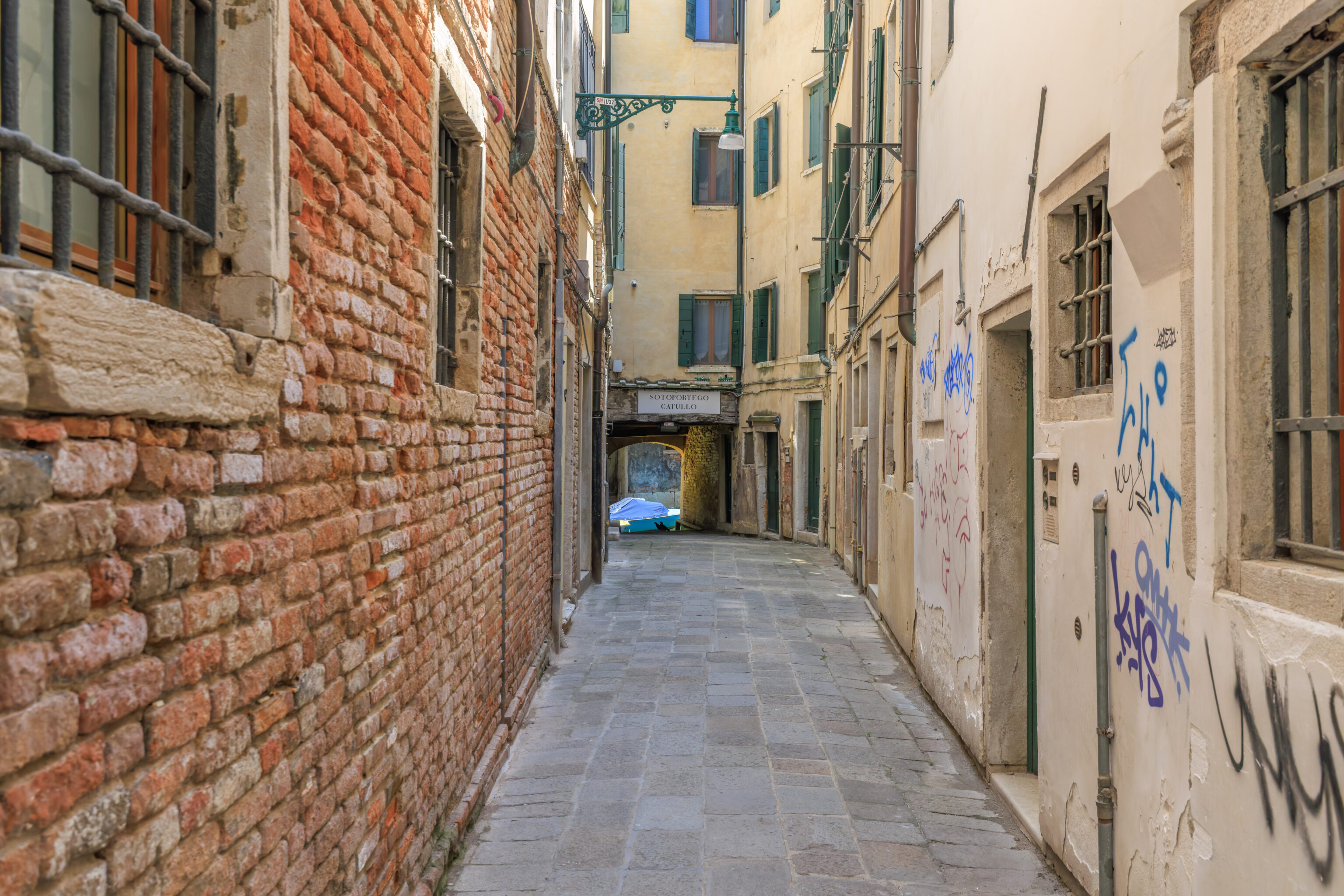
We continued walking to the east.
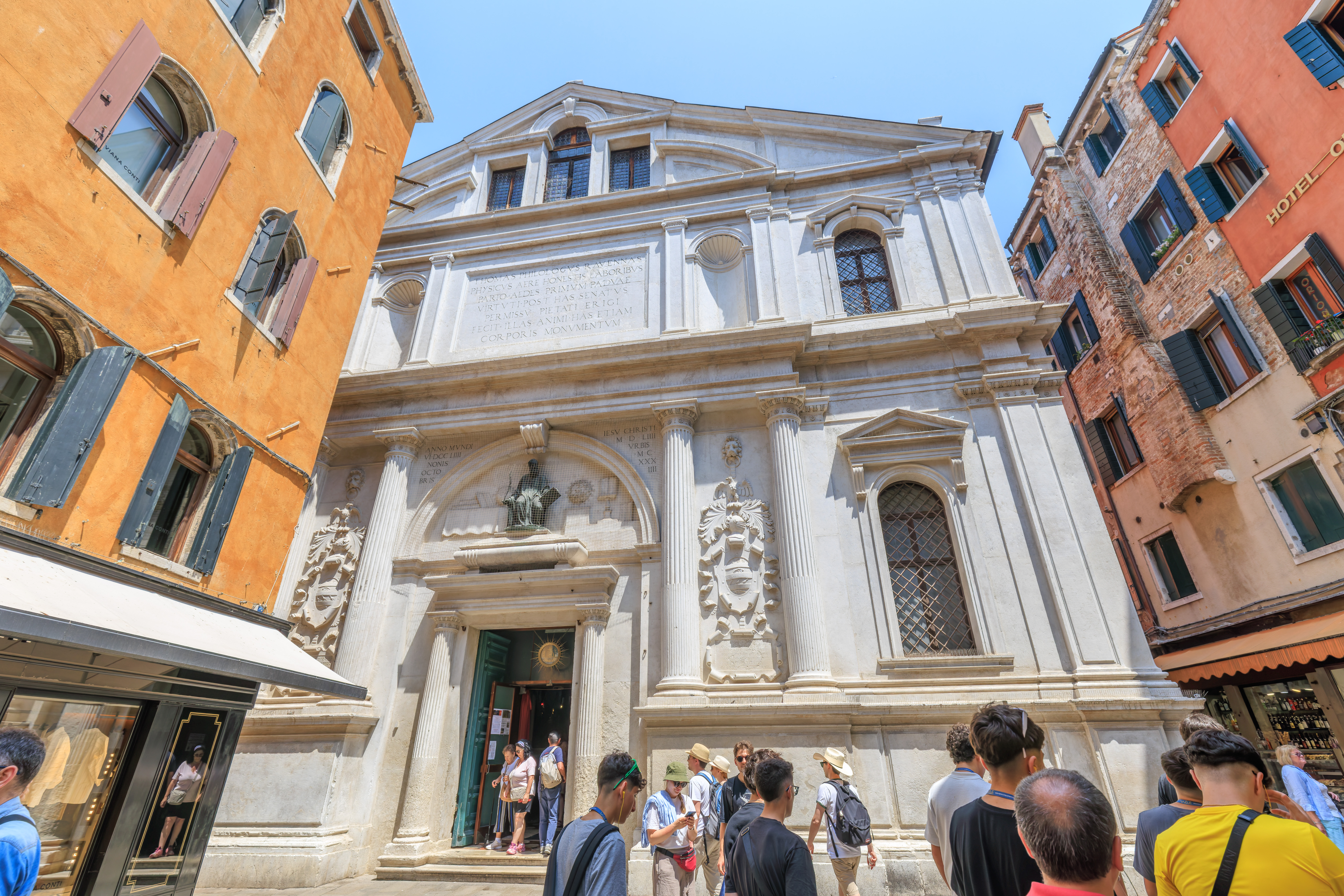
This church, the Chiesa di San Zulian (Church of Saint Julian) is right by where we ate yesterday evening, La Piazza. Our destination is near the rear of the church.
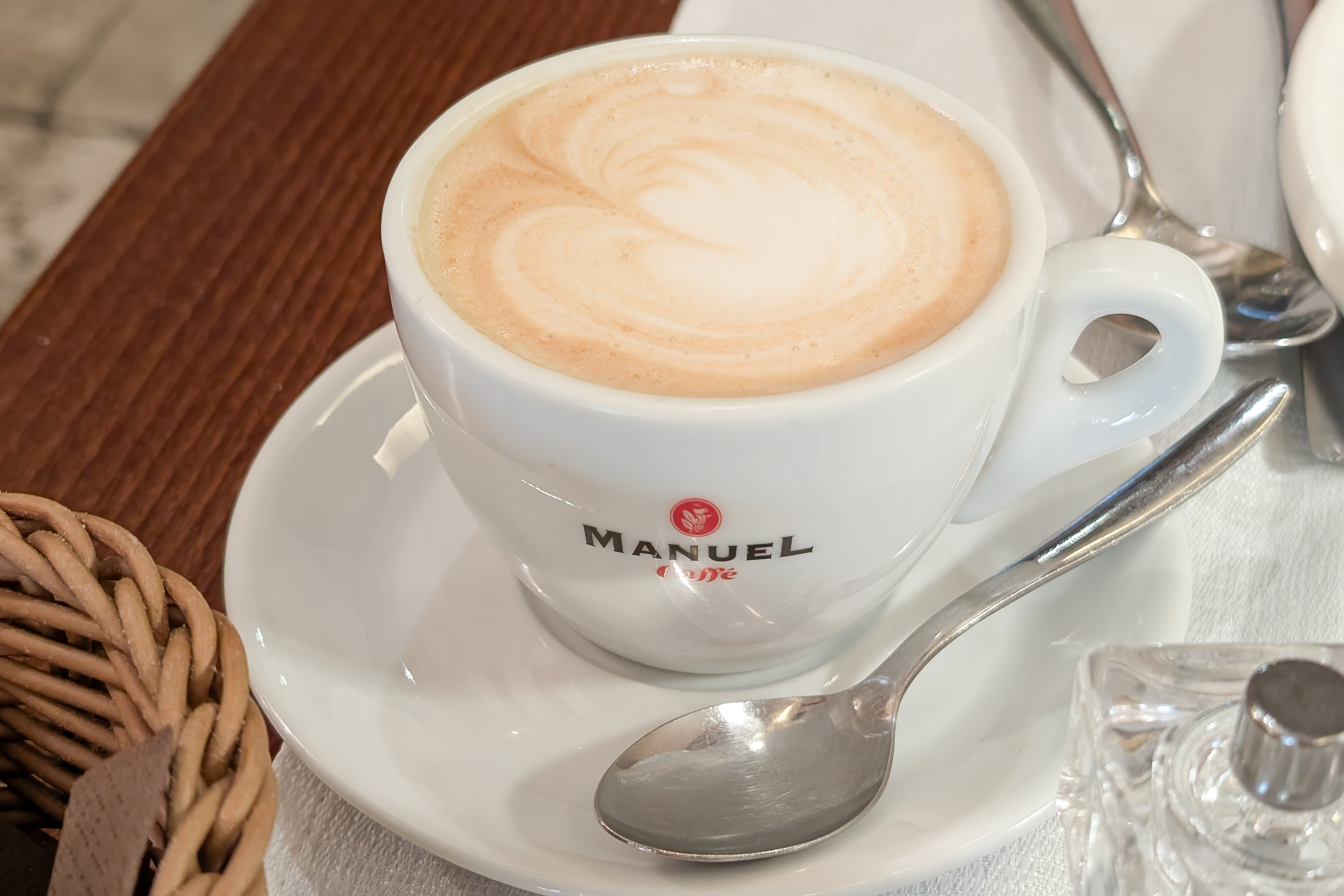
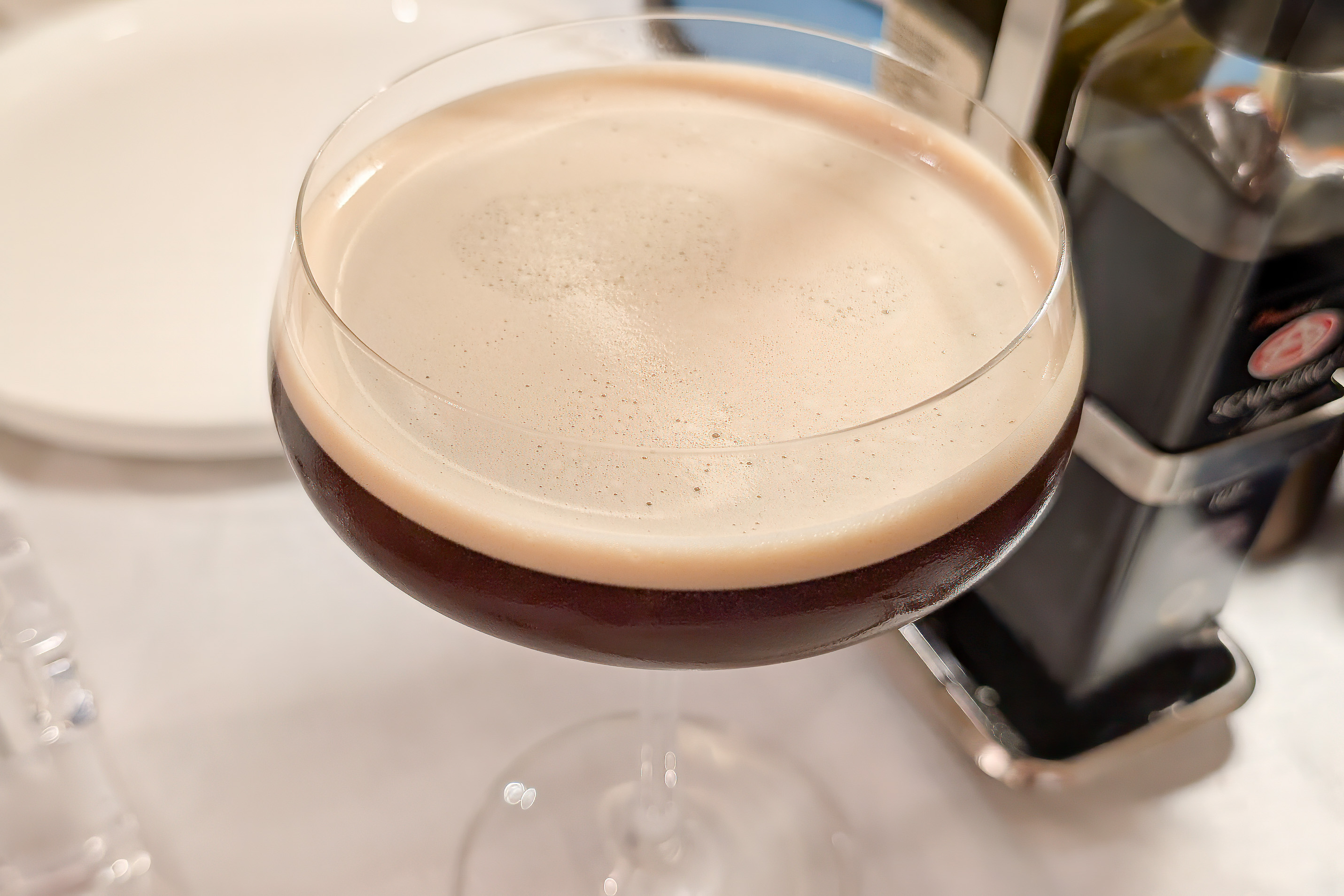
After arriving at Al Mercante, we ordered some drinks.
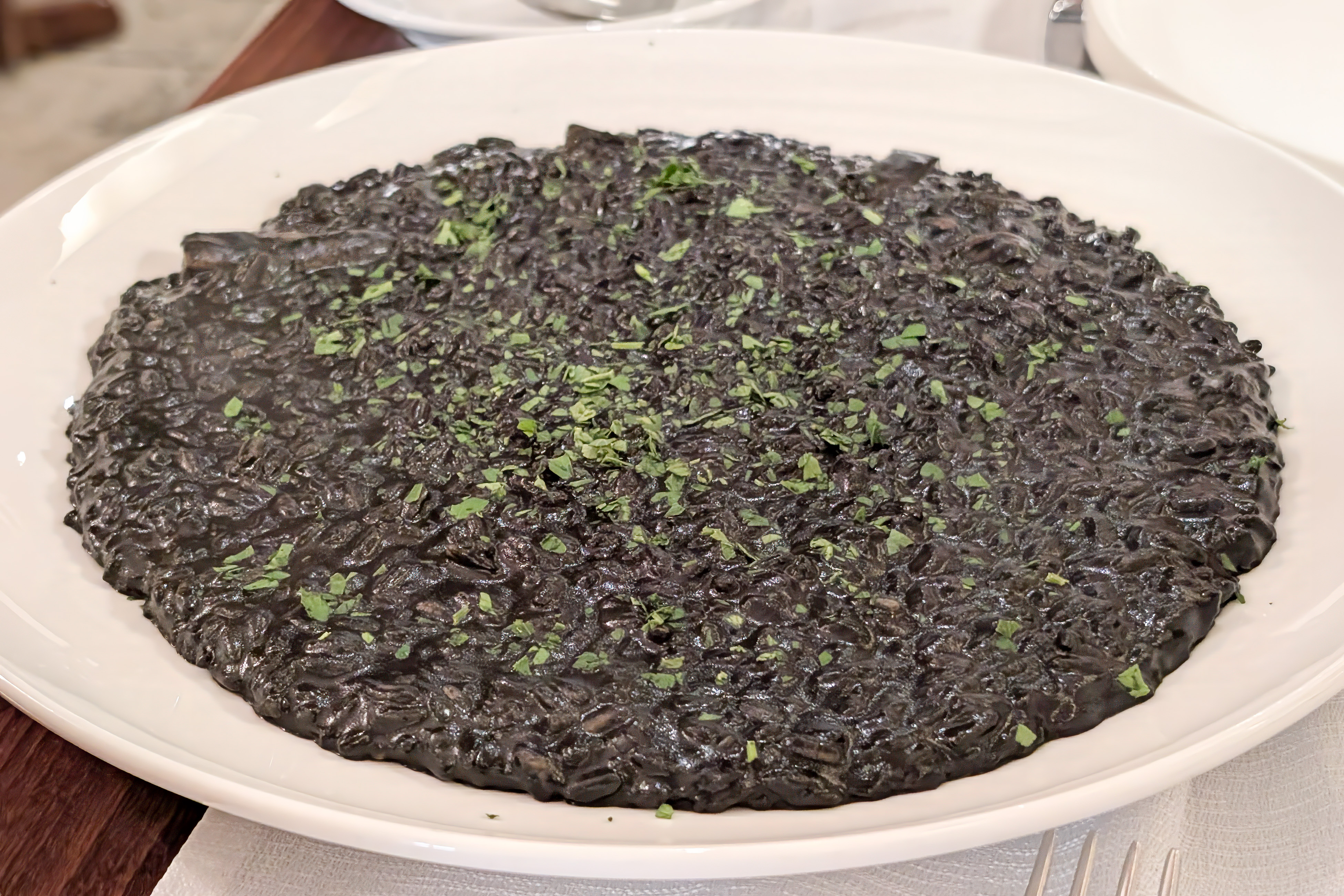
The cuttlefish ink risotto had good flavor and what seems to be the typical just barely fully cooked enough rice that is used in risotto. We’ve had risotto a few times now in the region so we think that authentic risotto is just a bit too undercooked for our preferences.
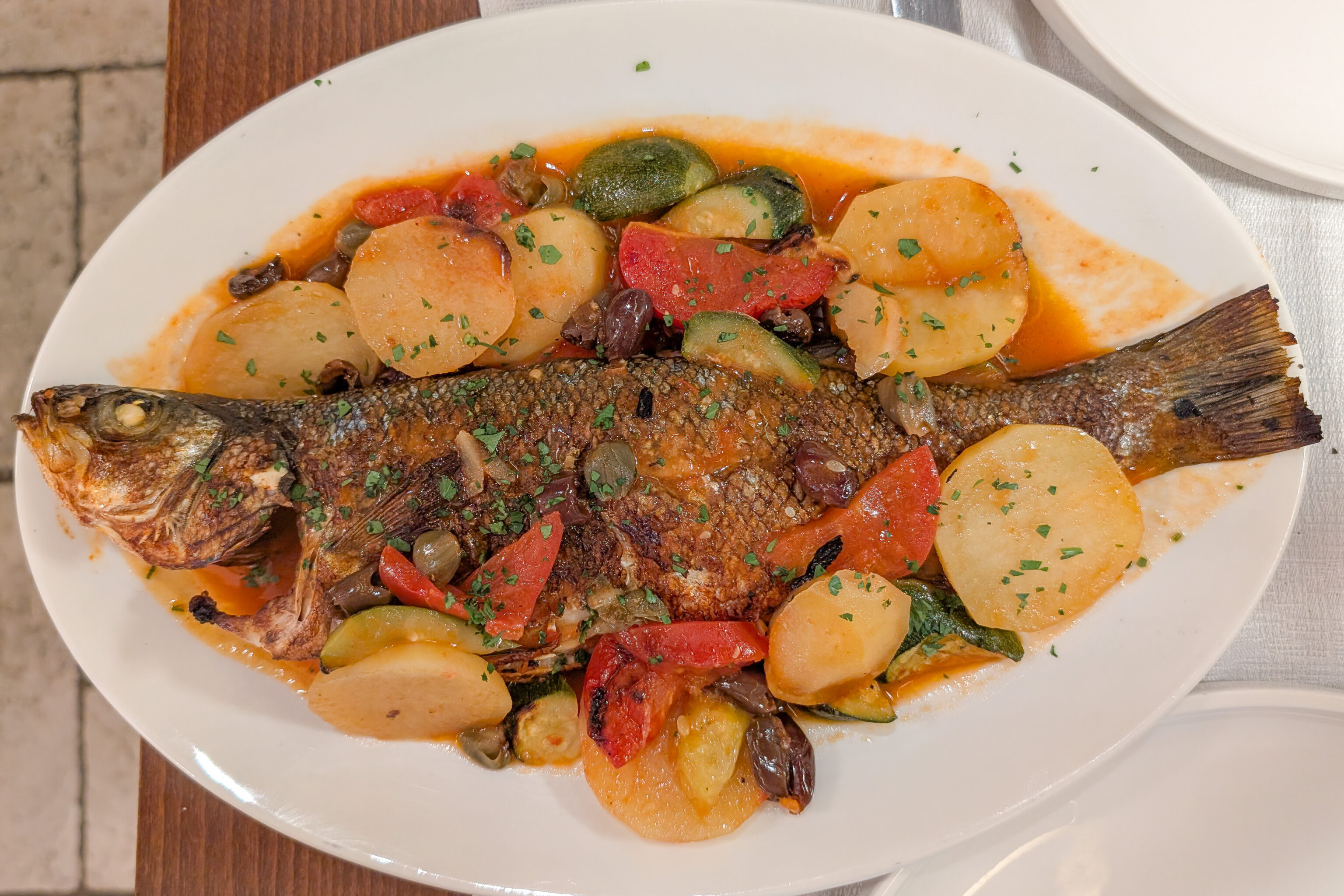
The branzino was surprisingly good! It was basically like how fish would be prepared by Chinese, other than the sauce of course. The fish skin was nice and crisp and the meat was moist and tender.
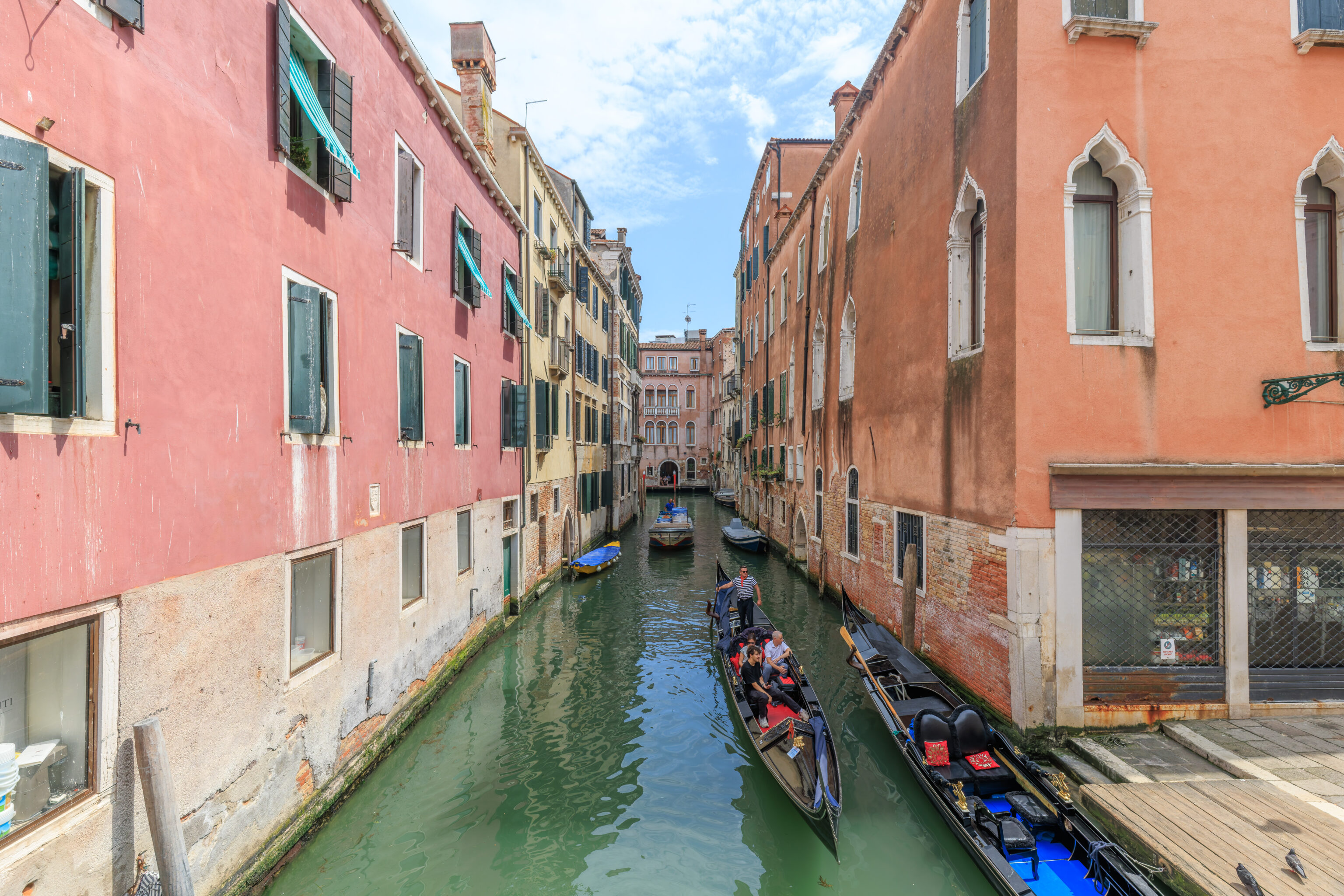
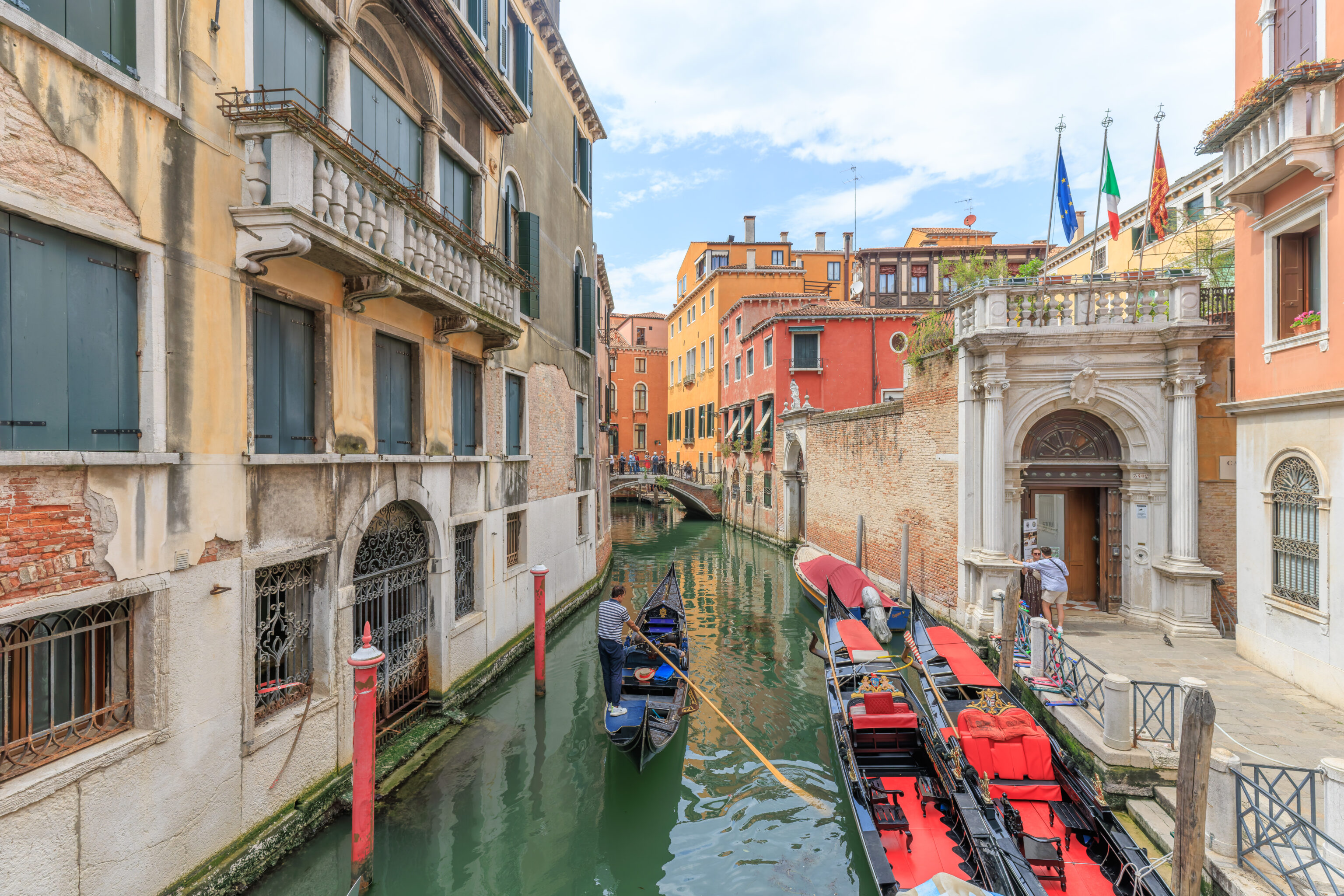
After lunch, we walked first to the east to take a route that we haven’t taken before to return to the Basilica di San Marco.
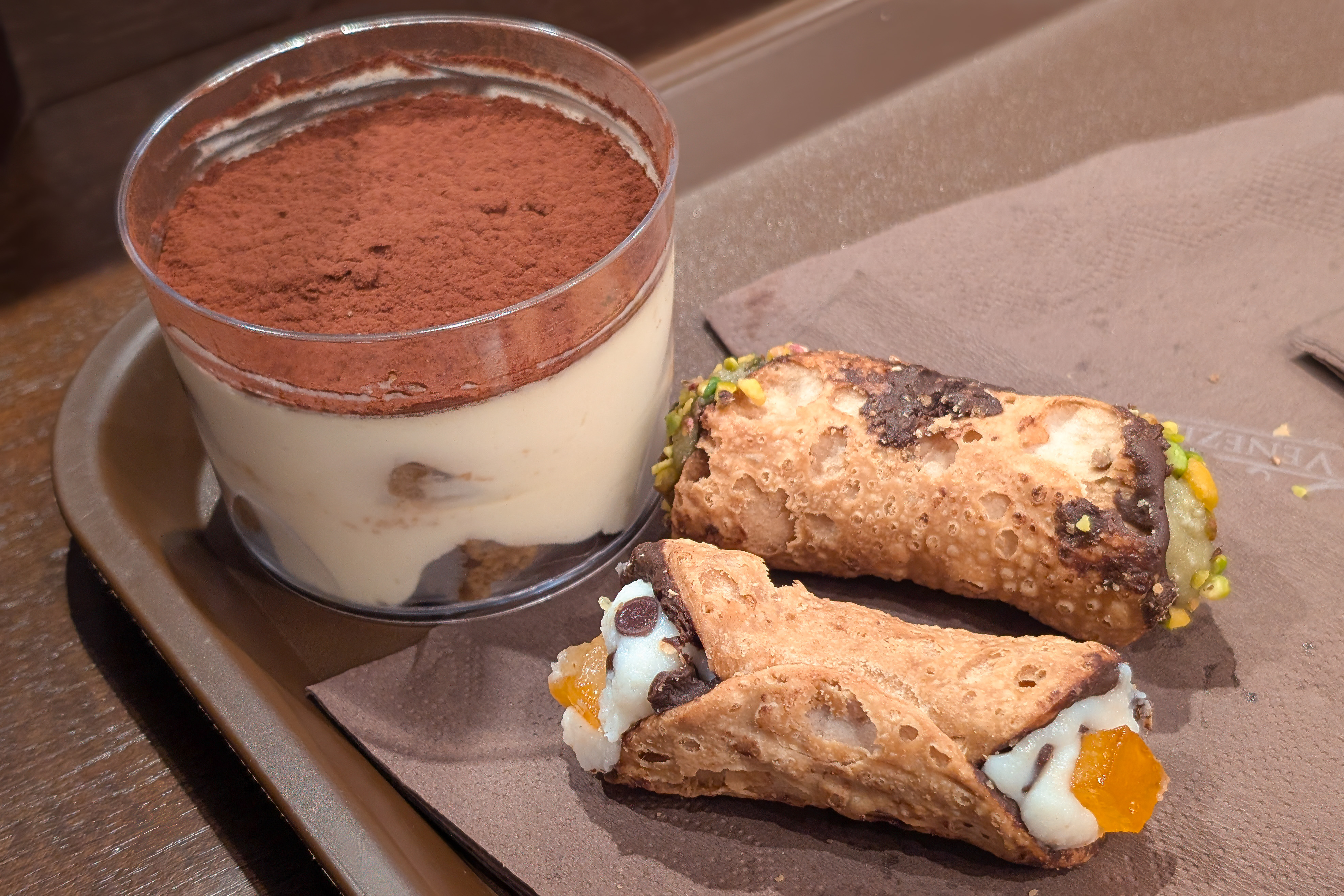
We decided to stop at I Tre Mercanti, on the other side of the first canal that we crossed, for some dessert. We had some tiramisu and two cannoli. The shop was a bit busy and had a significant portion of the interior setup for queuing. There was a small area with counter seating for eating.
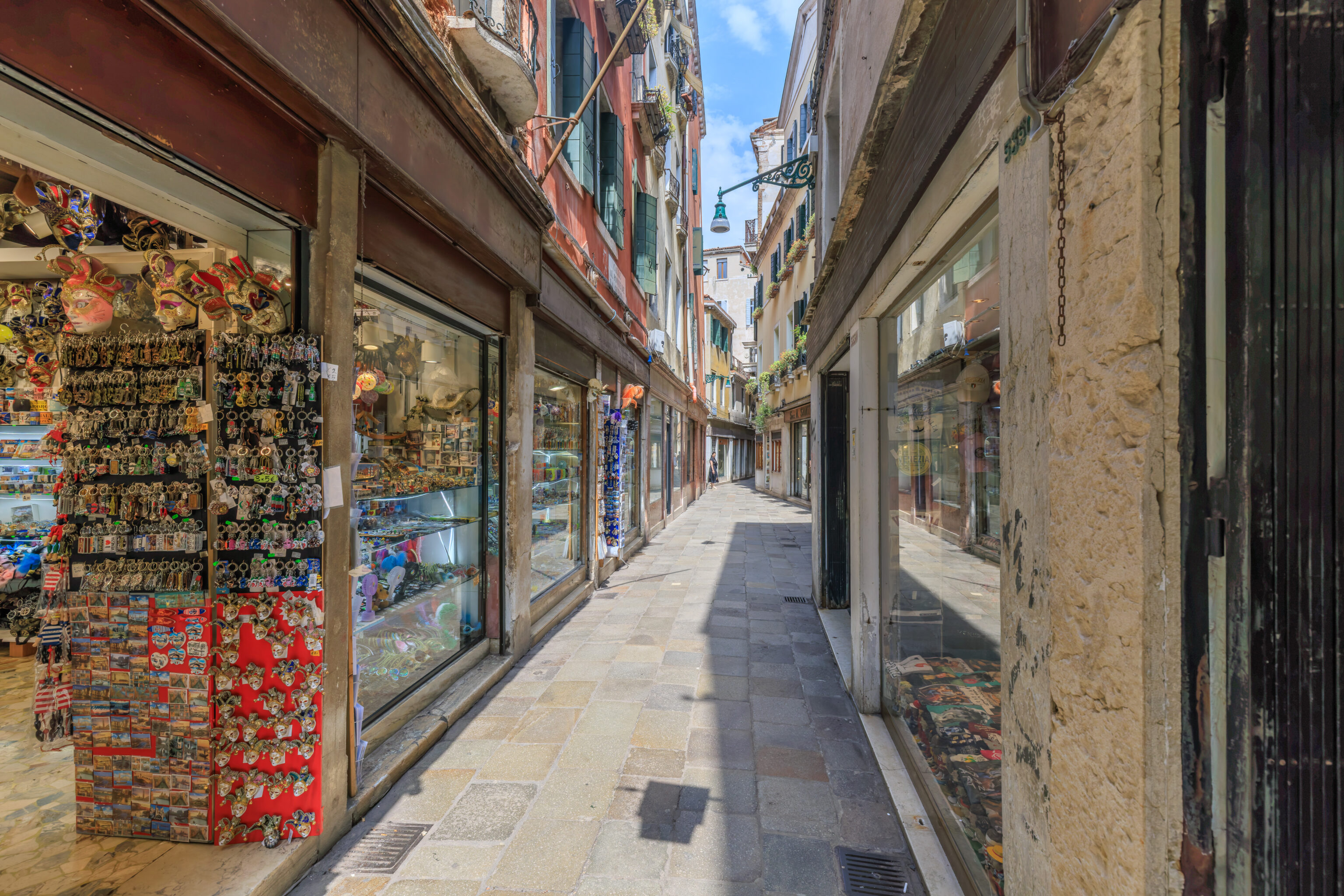
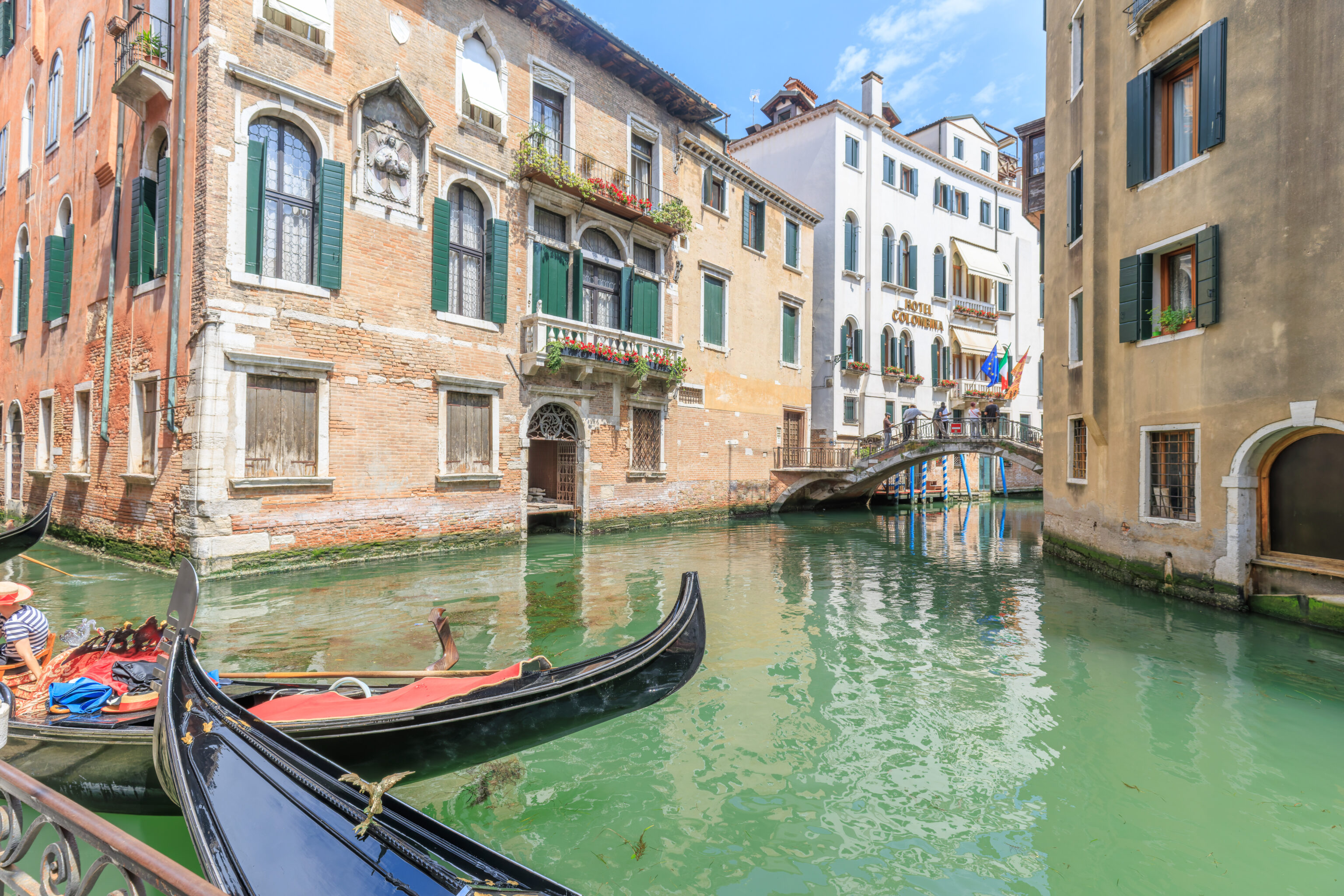
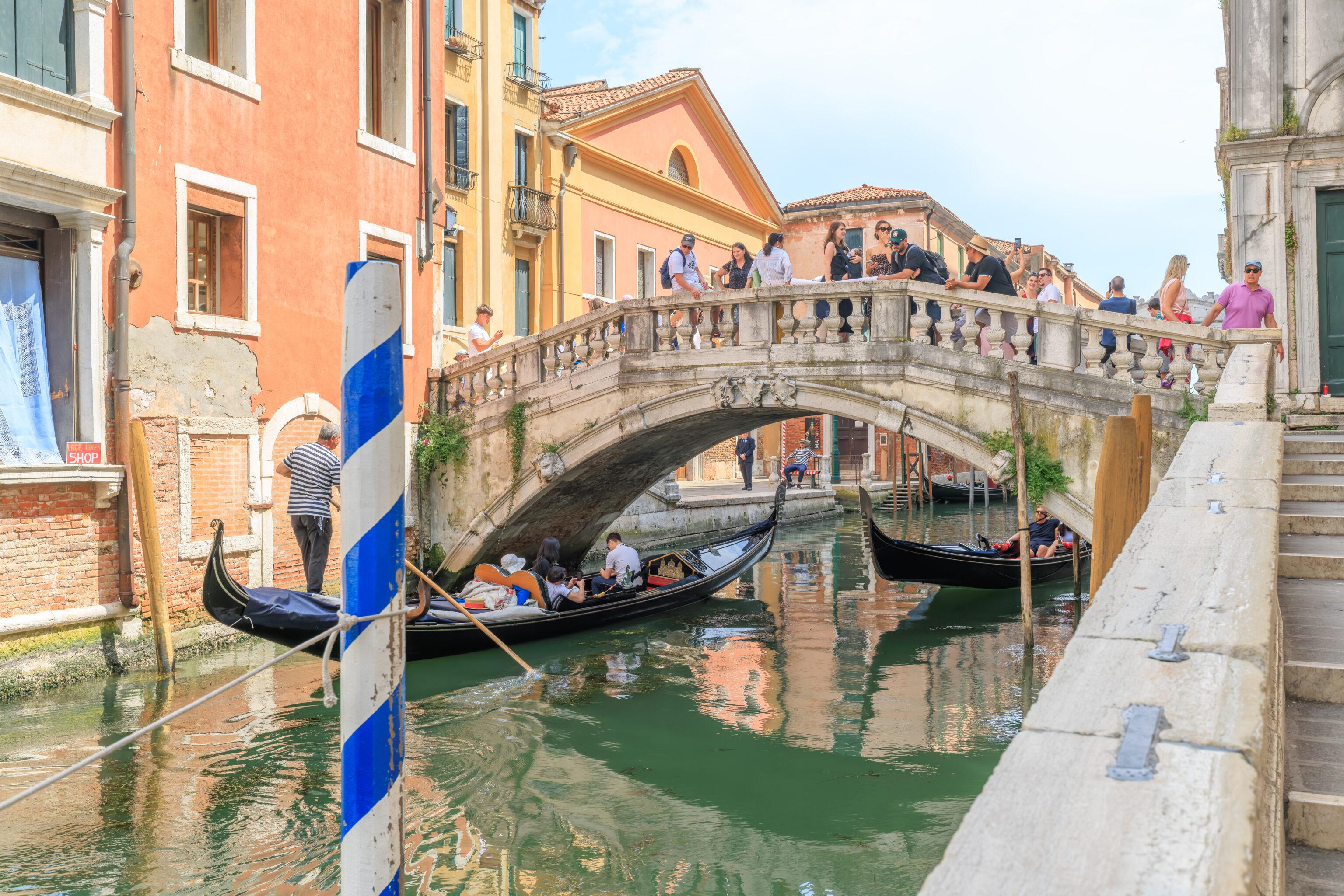
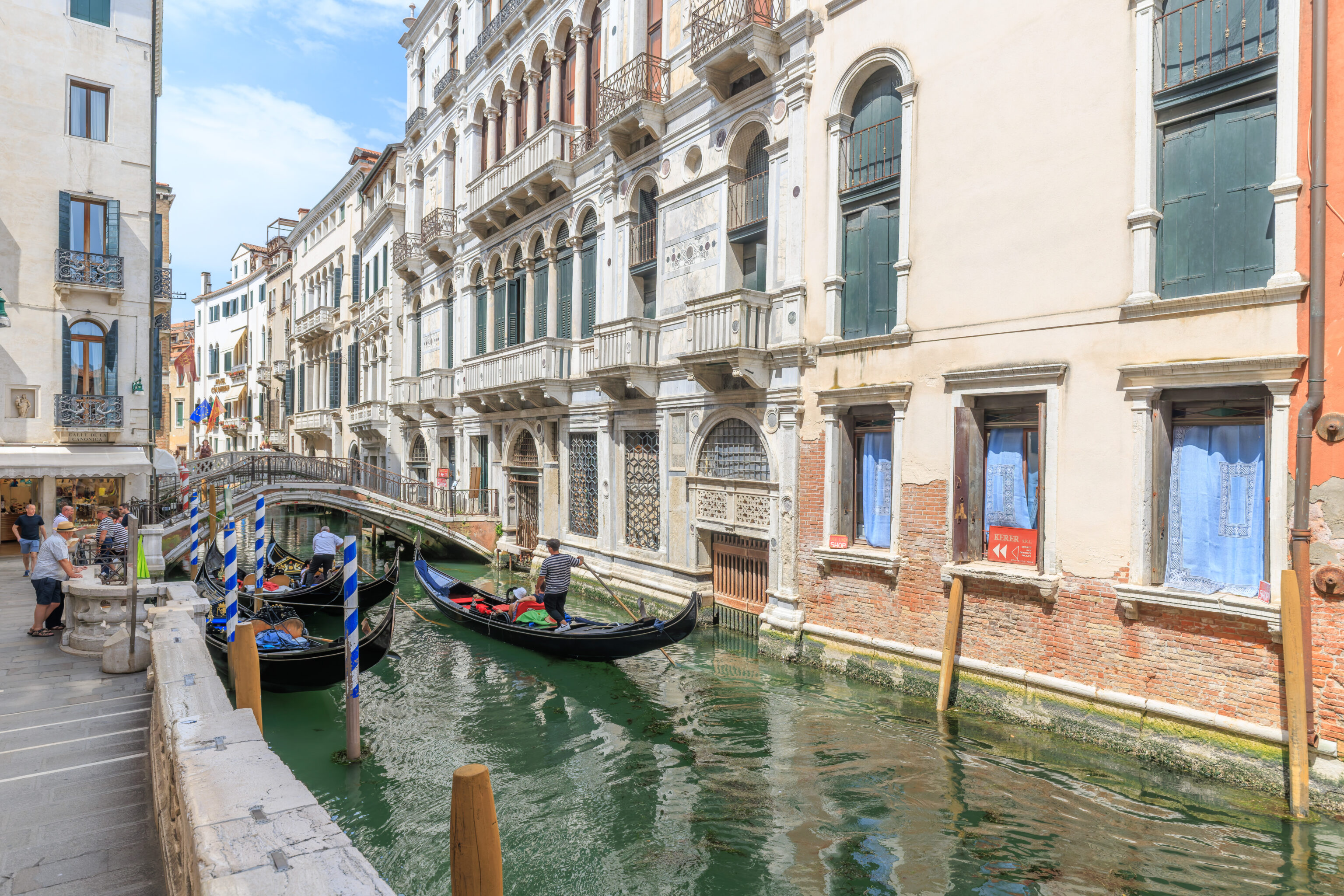
We walked a bit more to the east, and then to the south, and then to the west. More or less.

We crossed the canal on the east side of the Palazzo Ducale. Looking to our left, the south, we could see the Bridge of Sighs. The next bridge beyond it, the Ponte della Paglia, was extremely busy with tourists photographing the Bridge of Sighs, just like yesterday and probably every single day of the year!
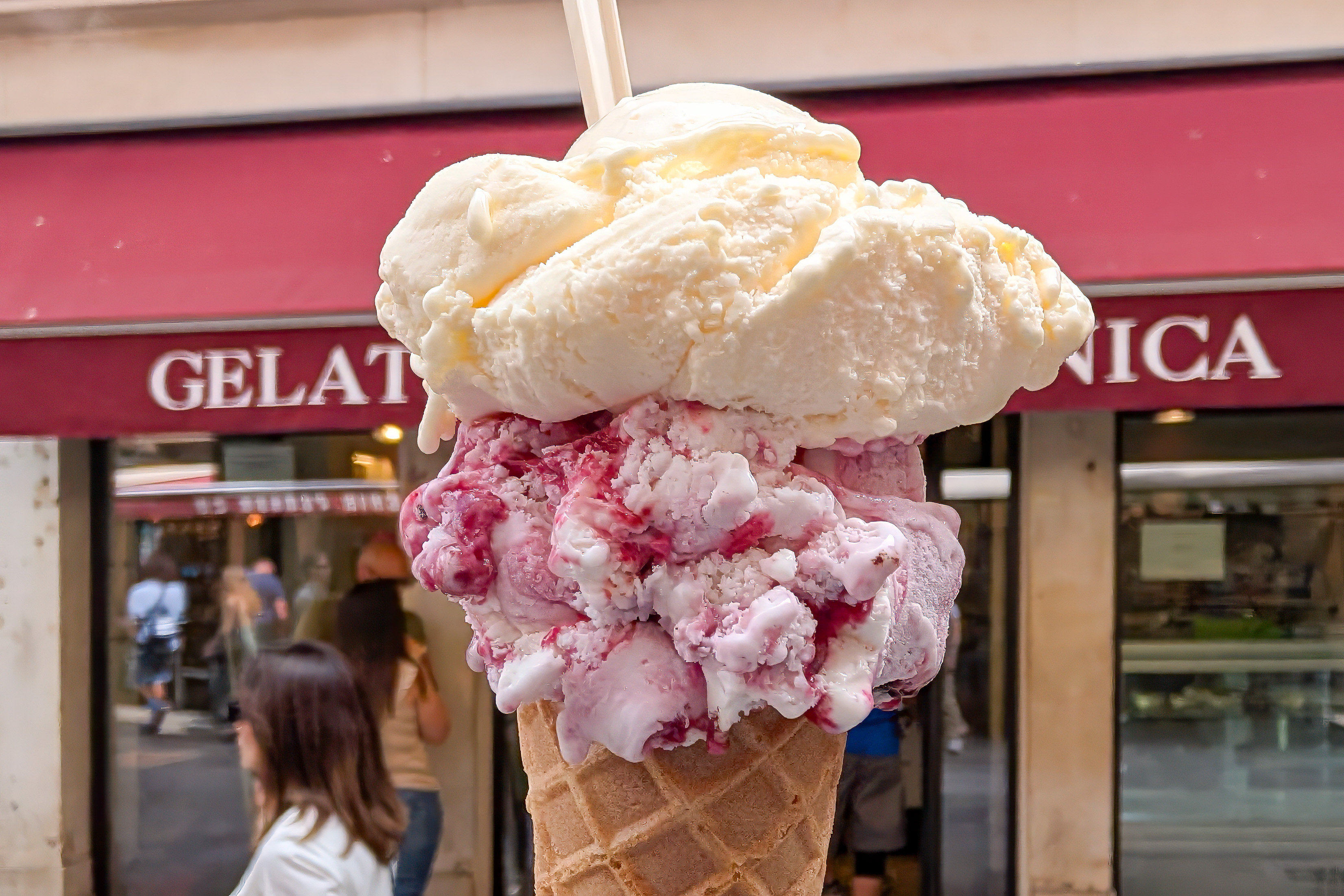
We actually walked to the east from here, away from our destination, for more gelato! We got peach and cherry from Gelateria Canonica. Again, both flavors were very good! This seems like it may be a new business as it doesn’t have very many reviews.
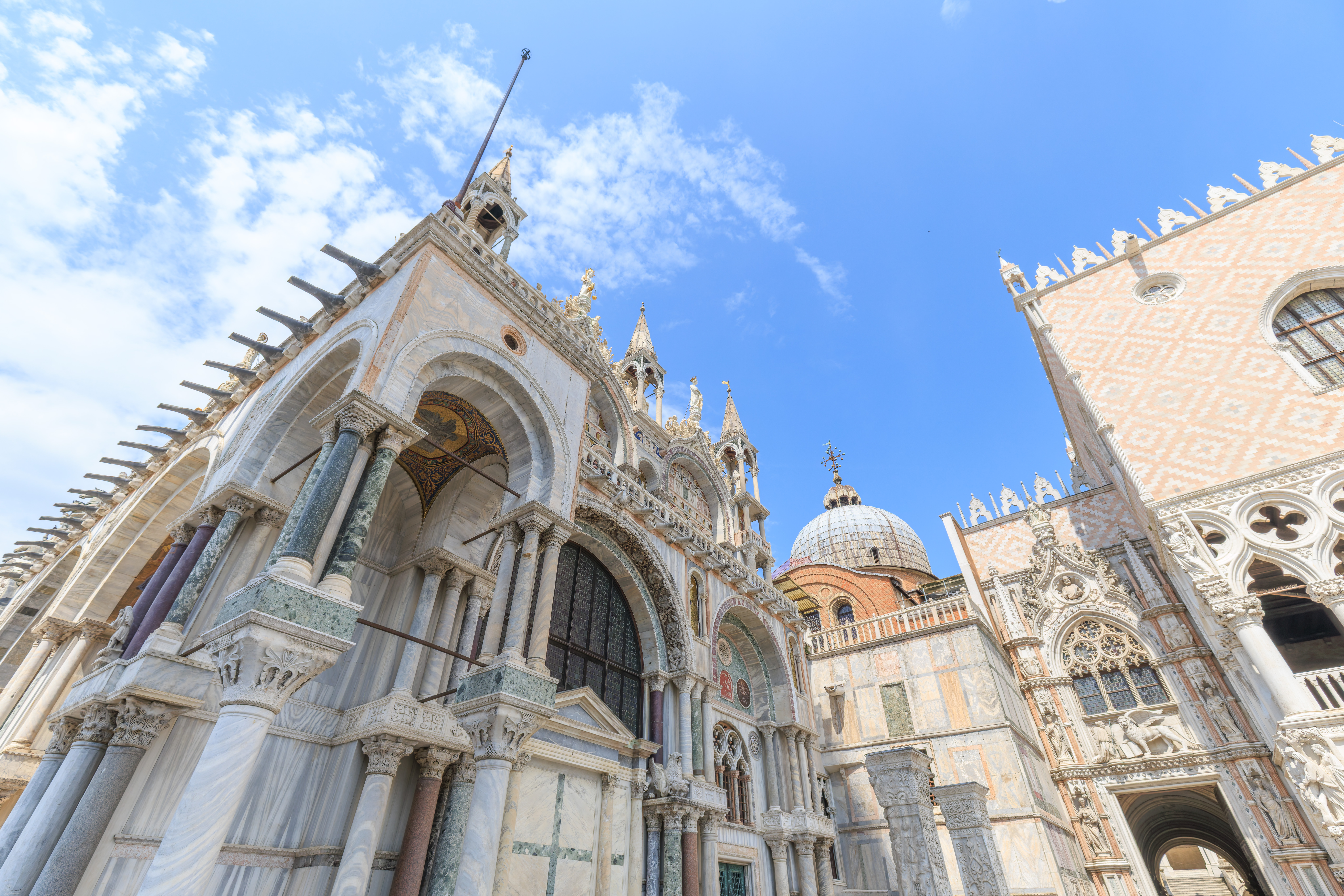
We finally returned to Basilica di San Marco. The good news was that the queue was shorter. The bad news was, not by much!
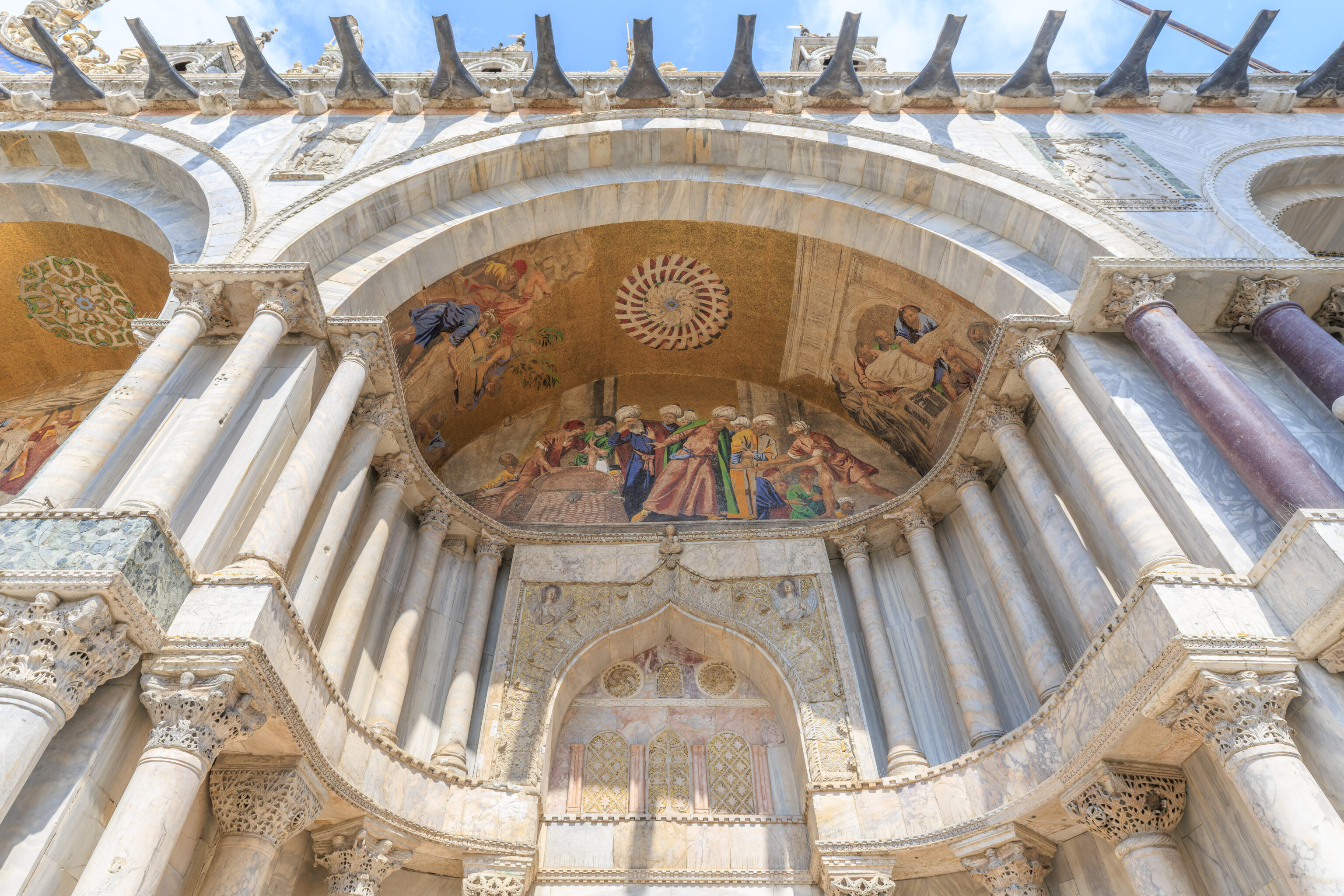
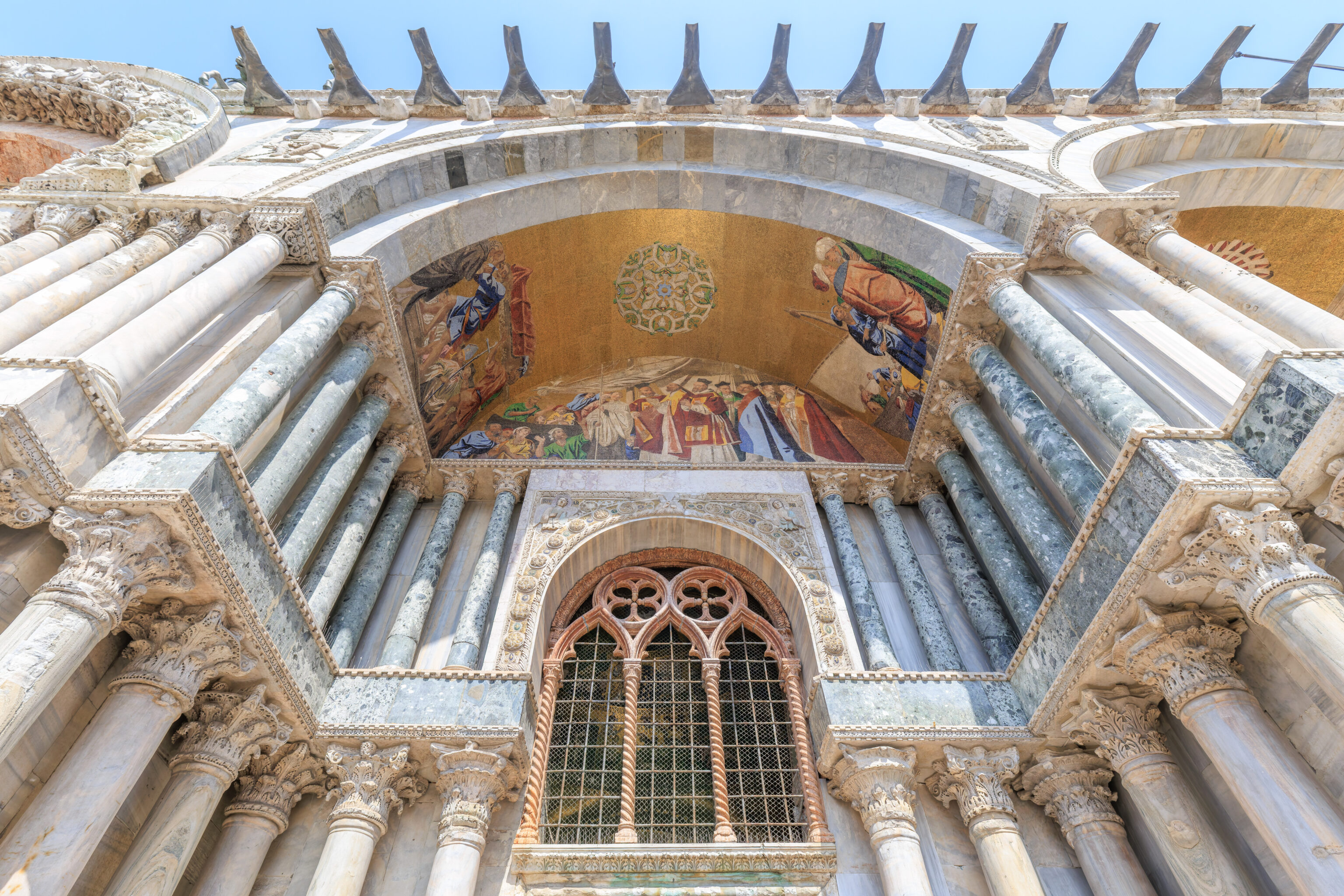
The wait wasn’t that bad though.
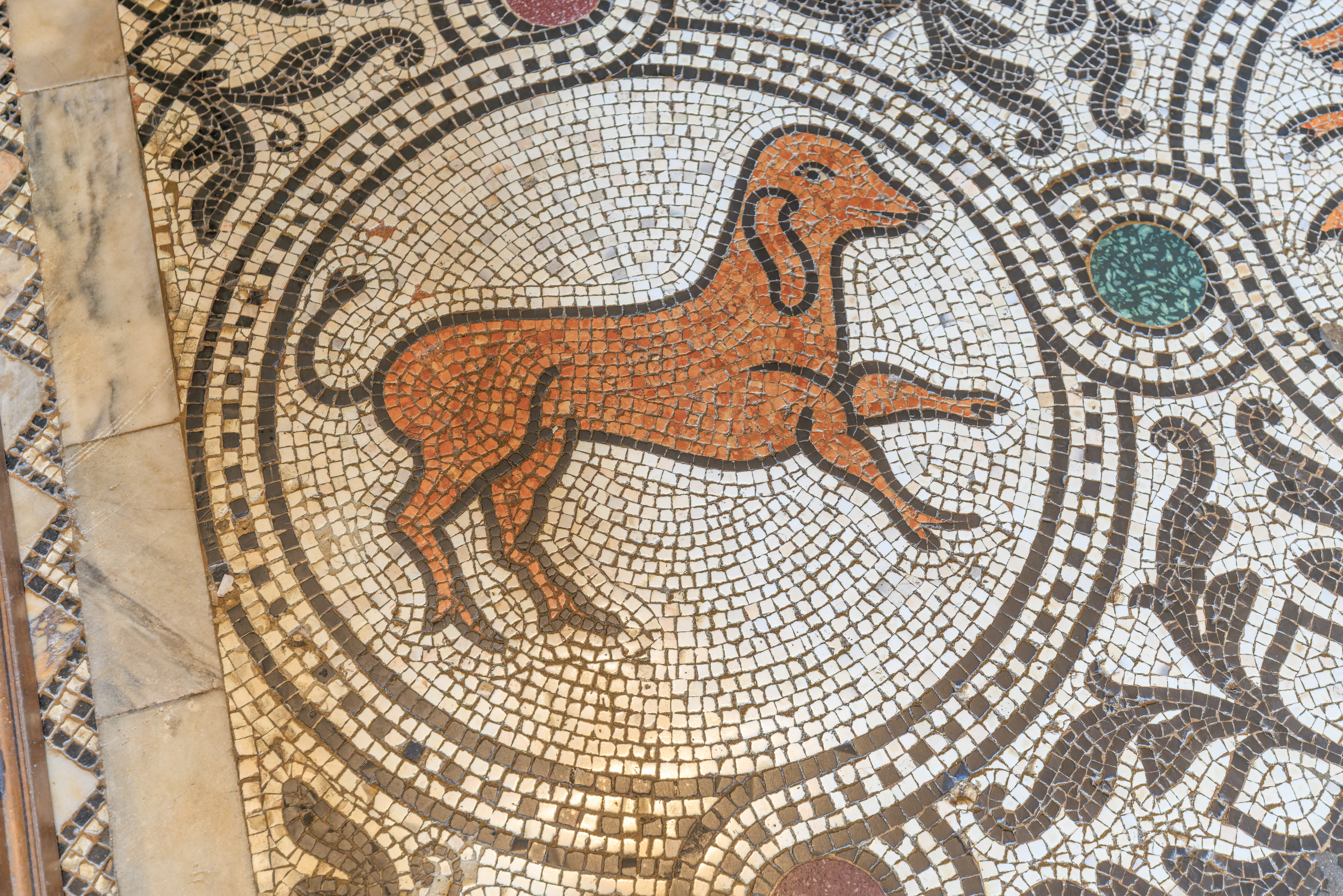
Soon, we had our tickets and entered the basilica. We quickly noticed the mosaiced floor and this lamb, which kind of looks like it has chicken legs.
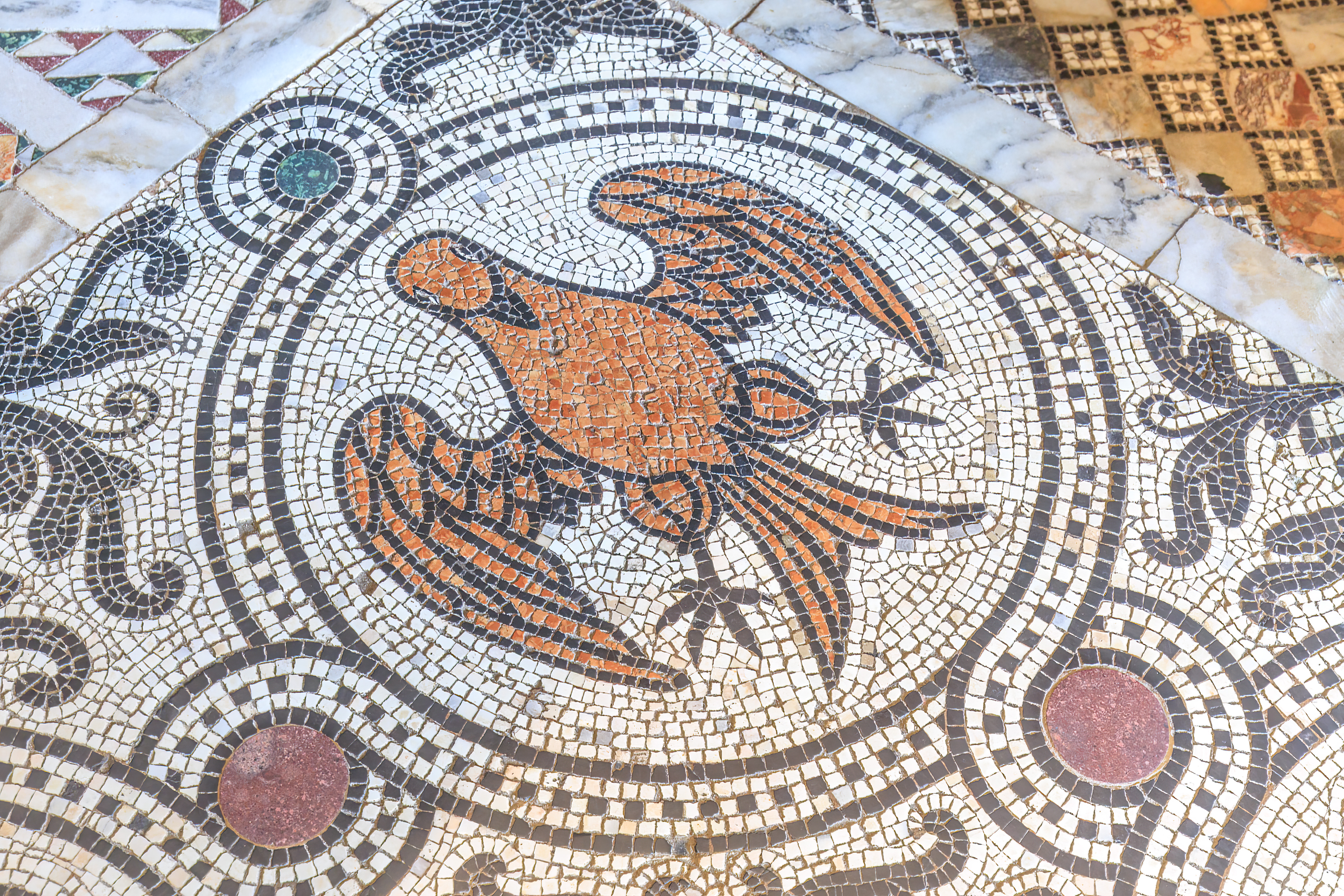
There was also a dove? It kind of looks like one.
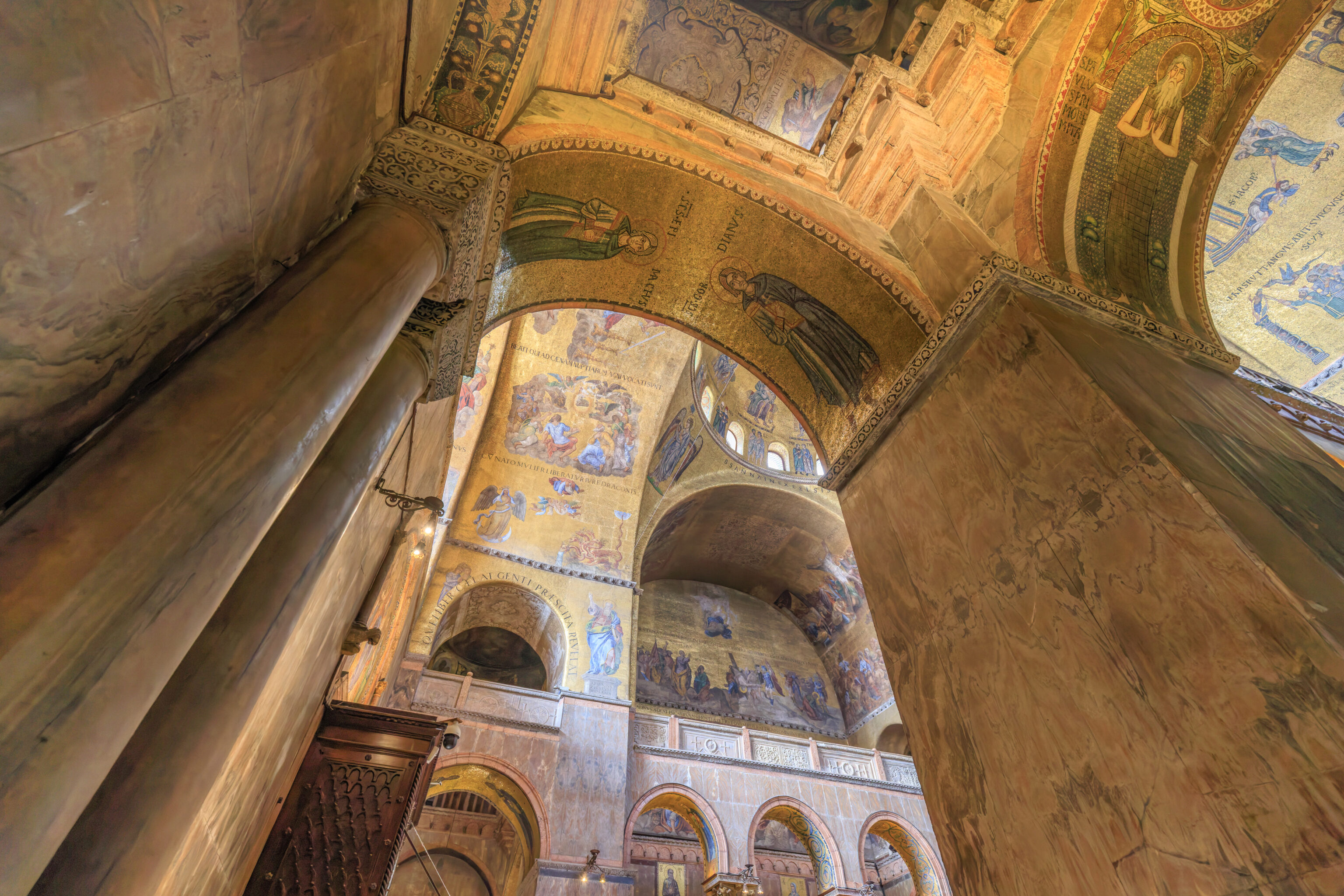
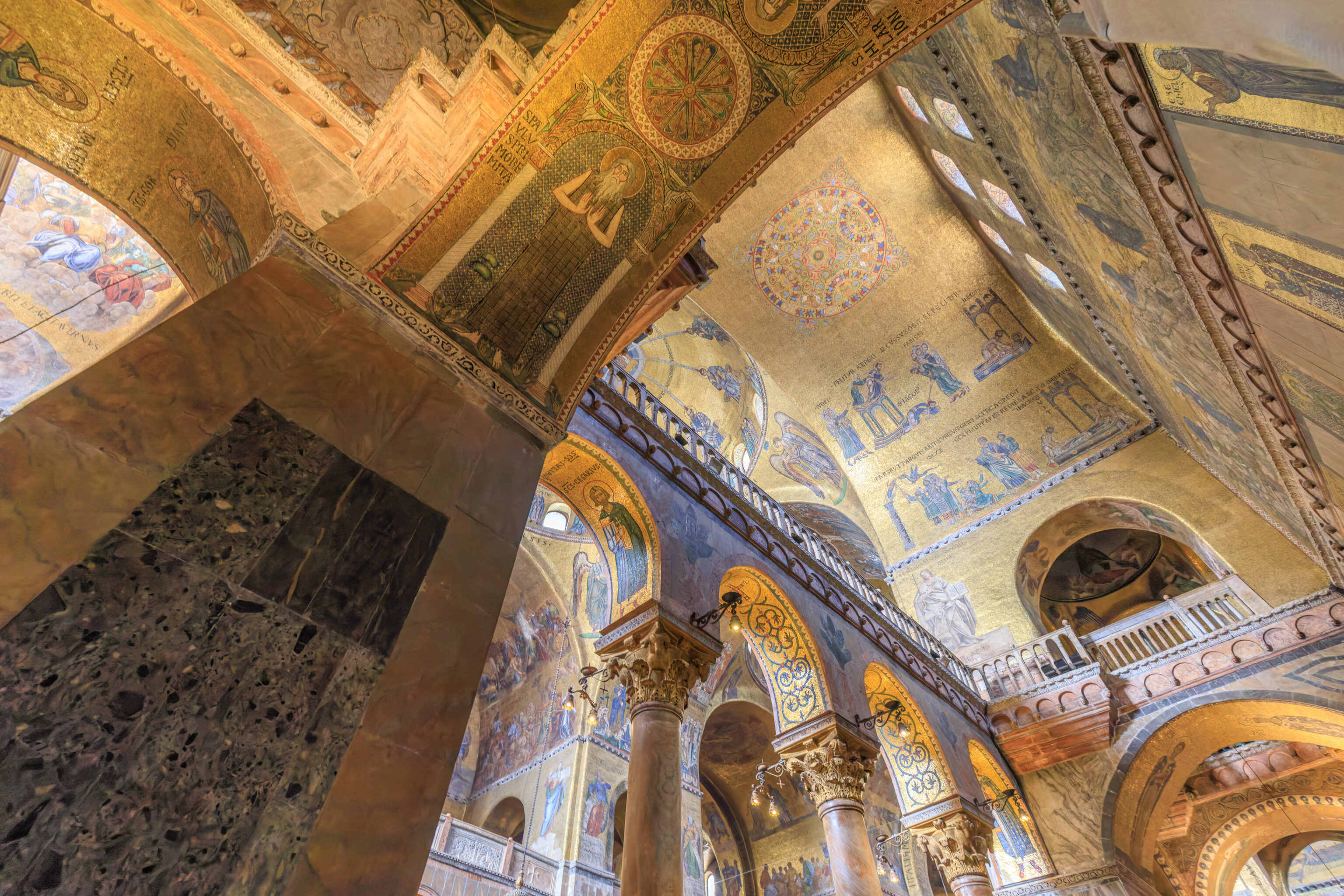
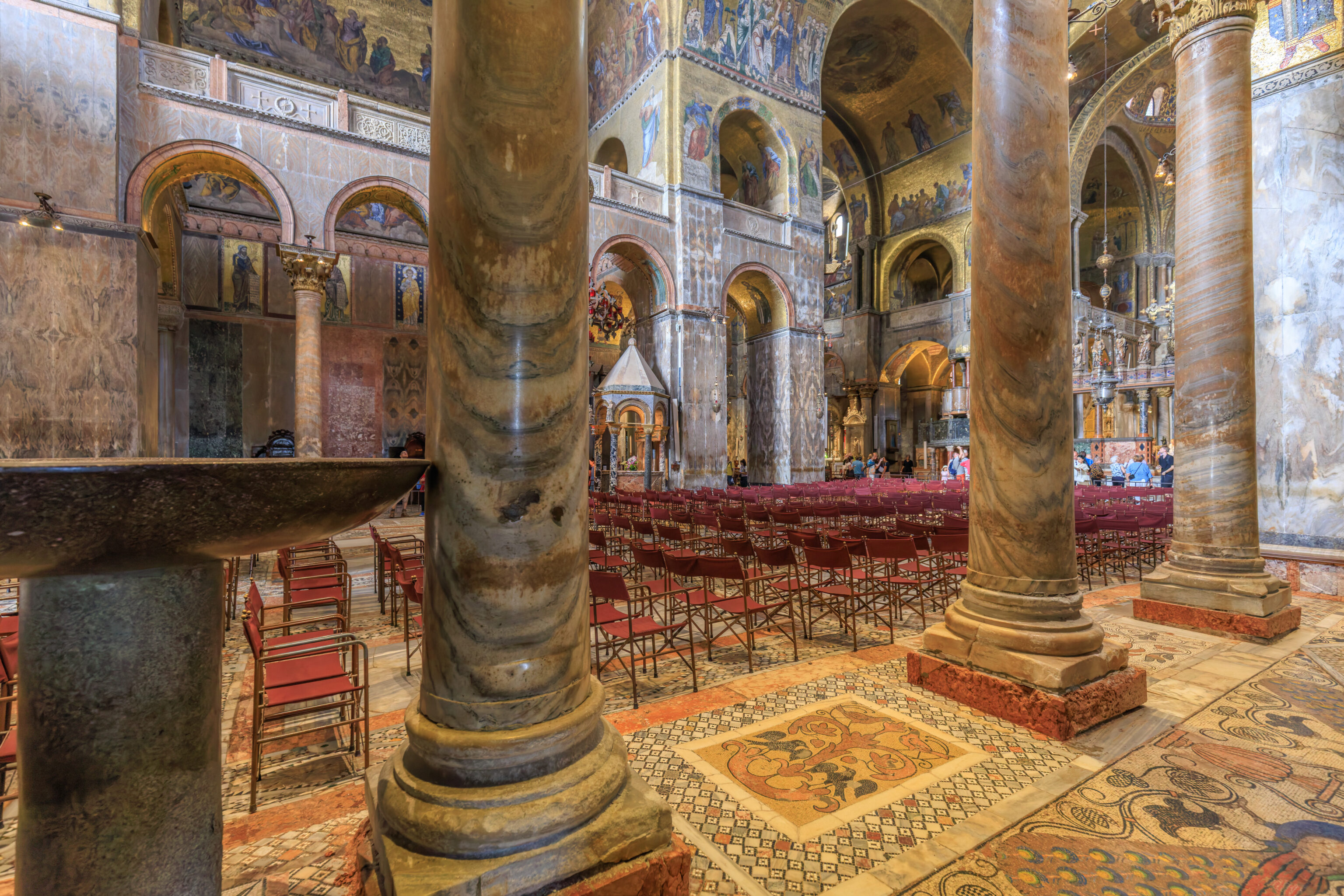
Its hard to describe the interior. It was pretty unique compared to what we’ve seen. There was lots of use of what seems like gilded gold. There were also colorful elements as well as patterns in the marble. It seems as if marble slabs were thinly sliced and laid out opposite to each other to make mirrored patterns.
The design seems more like what we imagine is Byzantine than the more familiar Roman Catholic and other western churches that we’ve been to.
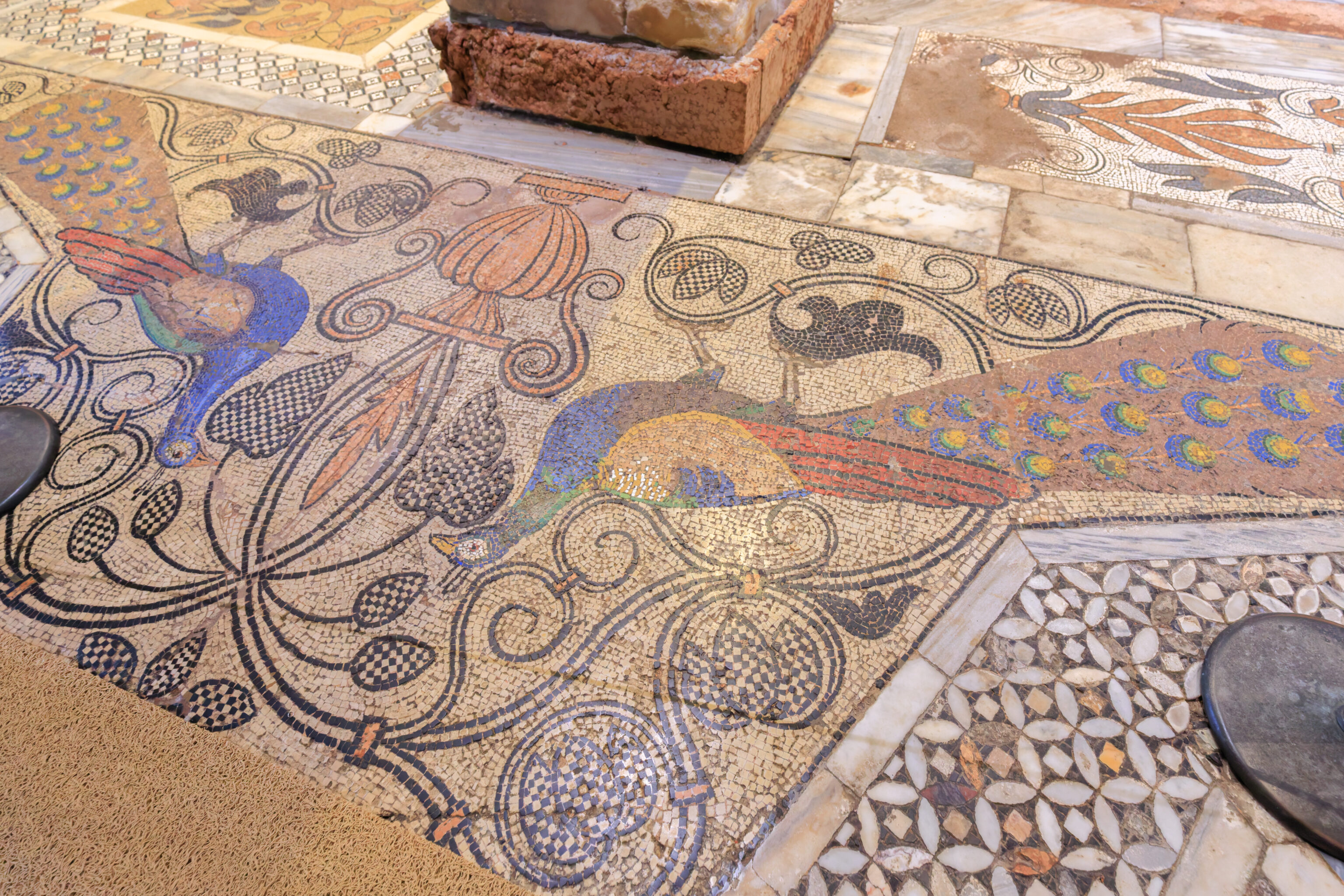
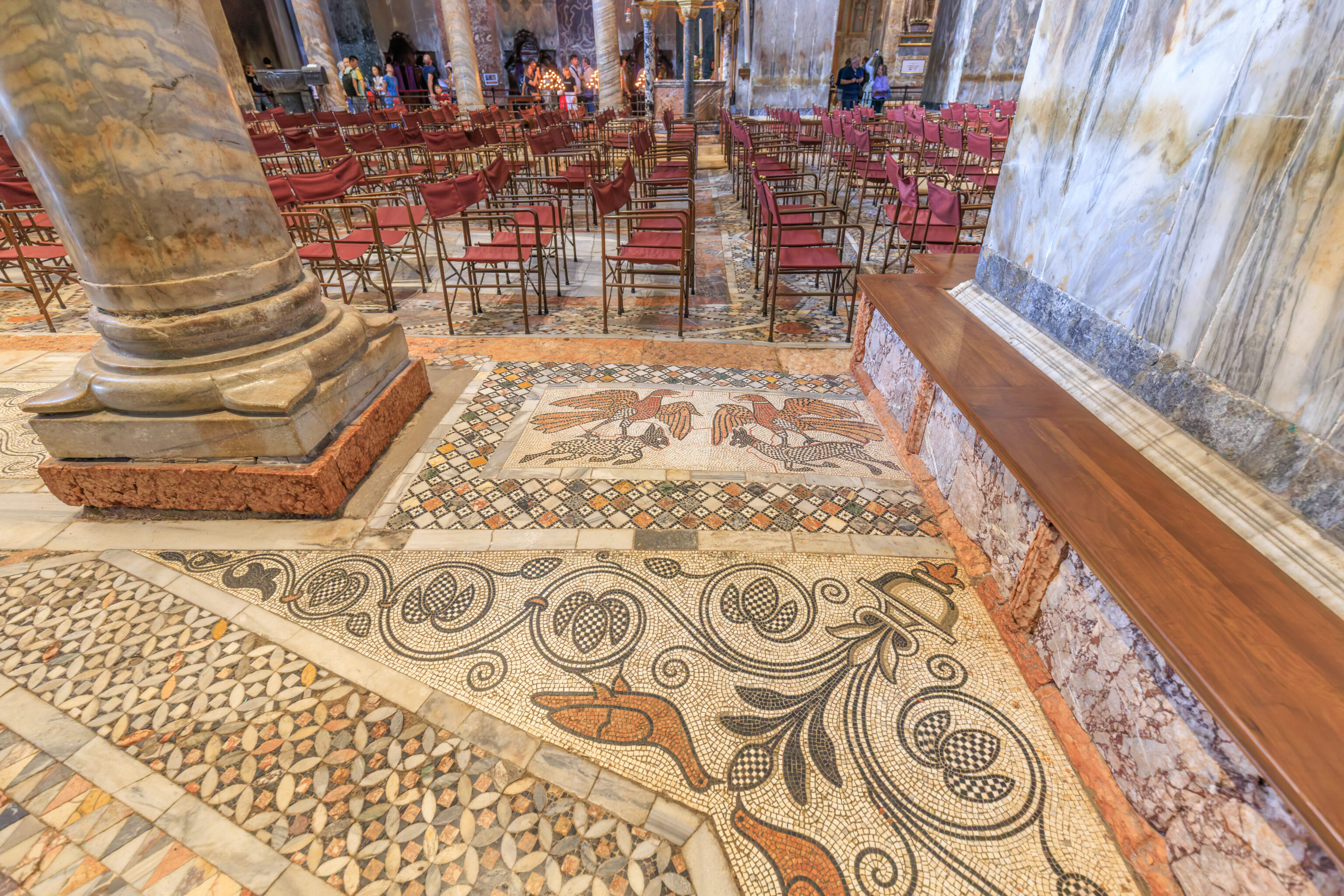
There was heavy use of mosaics on the floor.
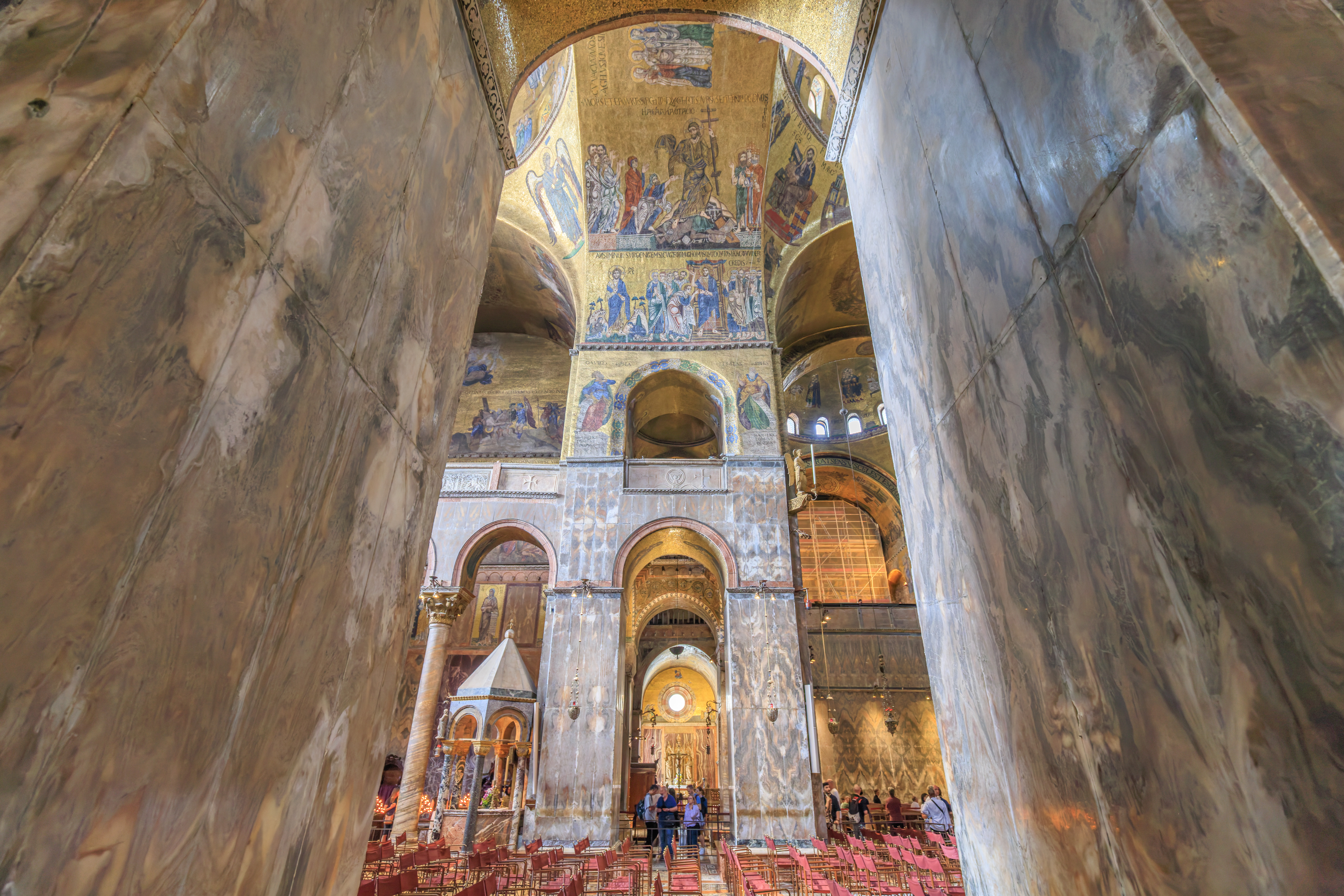
The interior was quite impressive and worth the entry fee!
As we approached the far end of the basilica, we came upon a sign for the Pala d’Oro. What is it?
Pala d’Oro:
The Pala d'Oro is the world's only intact example of large size Gothic goldsmith's art.
Pala derives from the Latin palla, cloth, sometimes decorated with images of saints and used to cover the altar or embellish its background during the church service. These cloths were then replaced by gold or silver - frequently found at least in Venetian lagoon area churches - hence the name Pala d'Oro (gold) or d'argento (silver). The most famous of all is the one in St. Mark's, ordered from Constantinople by the doge Ordelaffo Falier in 1102 and completed in 1105.
It consists of 2 parts: the Pala d'Oro proper and the wooden container behind it.
Since its origins it has been opened only during liturgical celebrations in the Basilica, a tradition that continues today. The rest of the time it is covered by another altar-piece known as "ferial", a painting on wood. The oldest of these was done by Paolo Veneziano and his sons in 1343-1345 depicting stories of St. Mark and other saints. It is now in the Church Museum. The present day one, the work of a late Gothic master, dates to the first half of the 15th century and may be admired on the rear side of the retable.
In the centre of the precious piece the majestic figure of Christ blessing is dominant, surrounded by the Evangelists holding open the book in which the words of holy scripture are replaced by gems, thus highlighting the preciousness of the word. Beneath Christ, Virgin Mary praying and, at her sides, the doge Ordelaffo Falier and empress Irene.
Above Christ, the etimasia, the preparation of the throne of the Last Judgement, for God's second coming to earth, between two cherubim and two archangels. Above: the Crucifixion.
At the sides, in three registers one above the other, there are twelve prophets, twelve apostles and twelve archangels. Aligned above are almost all the celebrations of the Byzantine Church: from the left, the Annunciation, the Nativity, the Presentation at the Temple, the Baptism of Jesus, the Last Supper, the Crucifixion, the Descent into Limbo, the Resurrection, the Incredulity of Thomas, the Ascension and Pentecost.
At the sides in a vertical position there are ten small pictures: on the left the salient events in the life of St. Mark and, on the right, episodes relating to his martyrdom in Alexandria and the transfer of his body to Venice. The great upper frieze from one of the three churches in the monastery of Christ Pantocrator in Constantinople shows the archangel Michael in the centre and six panels with Christ's Entry into Jerusalem, the Descent into Limbo, the Crucifixion, the Ascension, Pentecost and the Virgin Sleeping (Dormitio Virginis). The altar panel is completed by numerous enamelled medallions portraying saints worshipped by the Venetians.
Three phases may be identified in the history of this precious work:
1. The lower part dates to the time of doge Ordelaffo Falier (1102 1118). The enamels on the side frames, with stories of St. Mark, and on the upper frame with six deacons and the Christological celebrations of the liturgical calendar date to the same period, as does the central Pantocrator group;
2. The upper part belongs to the second phase. The series of six Byzantine celebrations and the archangel Michael in the centre perhaps arrived in Venice from Constantinople after 1204;
3. The third intervention occurred between 1343-1345 when, at doge Dandolo's behest, two Venetian goldsmiths were entrusted with the task of framing the whole within a Romanesque arch (upper part) and a Gothic arch (lower part), and distributing the 1,927 precious stones and gems.

There was another ticketed area to see this Pala d’Oro. We weren’t actually sure exactly what it would look like as the textual description on the sign was hard to visualize. It was €5 per person to see. So, we paid the entrance fee inside and proceeded to take a look.
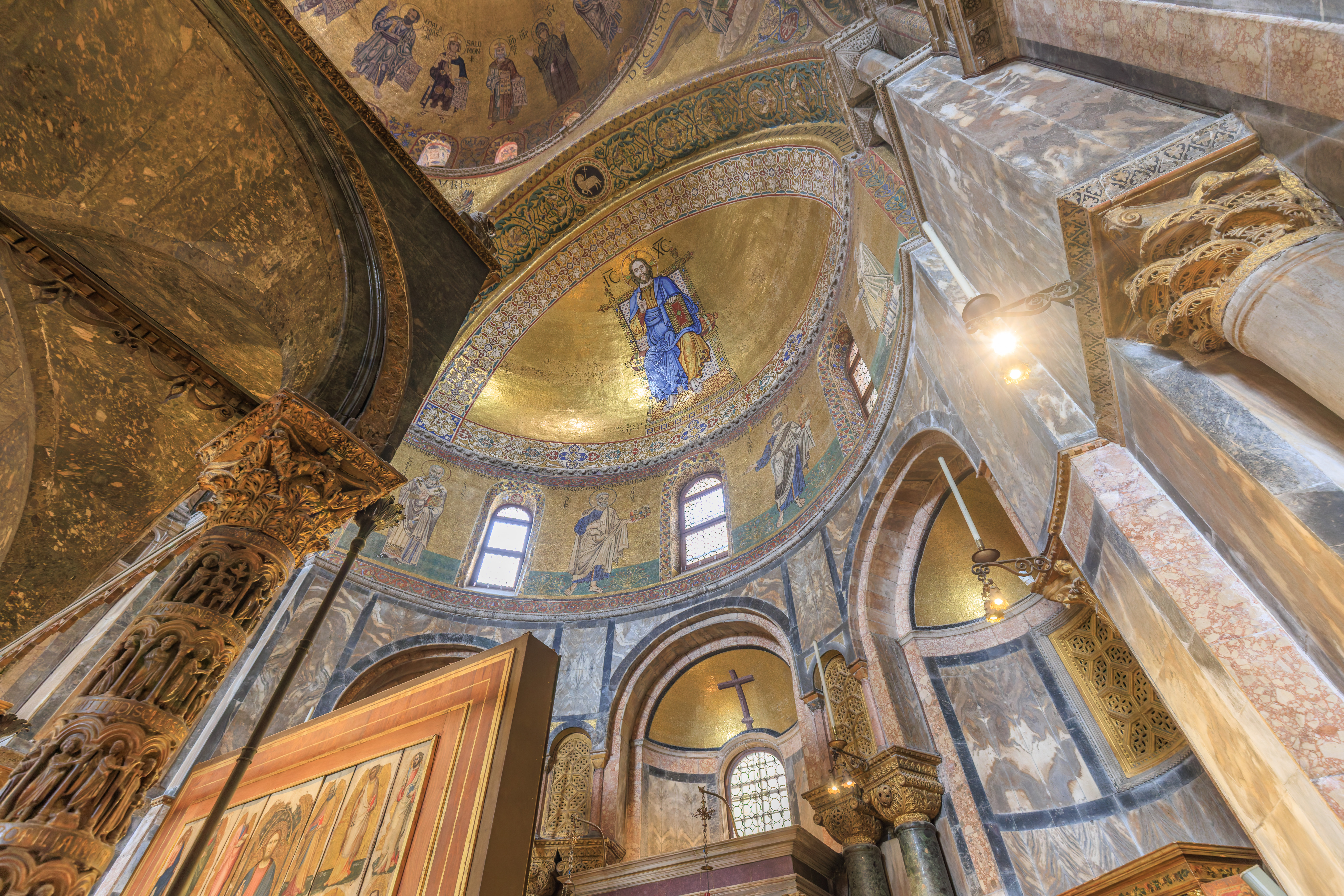
The Pala d’Oro is at the back of the church behind the altar.
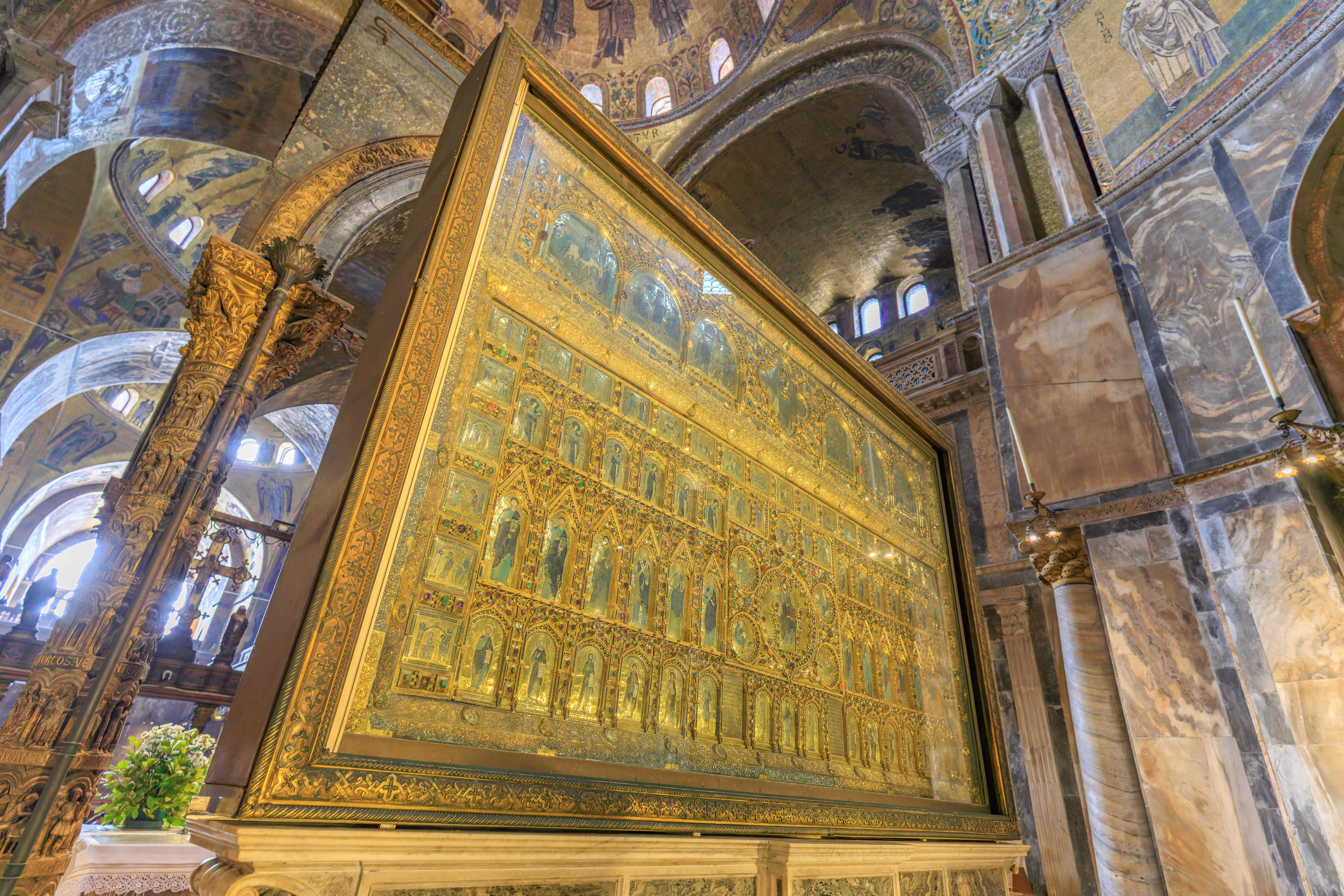
It is, indeed, a panel of gold. It is quite impressive.
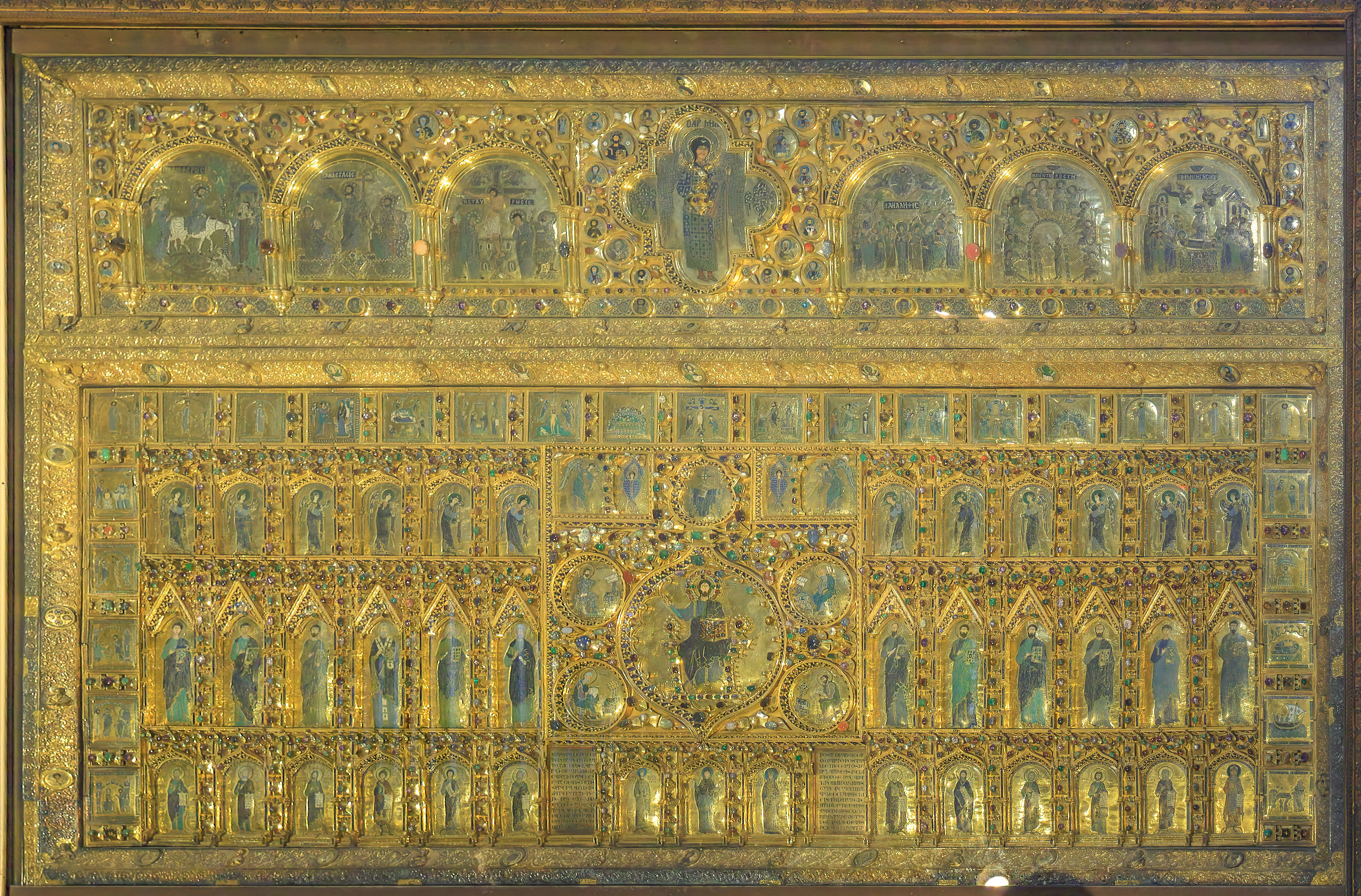
Photos don’t do it justice. It is behind a clear protective panel so there were unfortunately reflections from all the lighting within the church. Lightroom’s new AI reflection removal actually helps a bit, though it wasn’t entirely effective.
Pala d’Oro
The Pala d'Oro (the altar retable) has remained in its original position behind the high altar.
It is an altar piece with about 250 cloisonnés enamels of different sizes and epochs (10th - 12th century) on sheet gold. It was commissioned in Byzantium by the Venetians.
In the lower panel, above the great Christ Pantocrator in the centre there are evangelists, prophets, apostles and angels. The small bordering panel portray episodes from the life of Christ and of St. Mark.
The gilded silver Gothic frame was made in Venice in the mid 14th century. Numerous pearls and precious stones are set in the enamels.
The Pala d'Oro is the world's only intact example of large size Gothic goldsmith's art.
The high altar retable of St. Mark's - the Pala d'Oro - is universally considered to be the most precious and refined expression of Byzantine genius and the cult of light, understood as the raising of man towards God.
Definitely worth the €5!
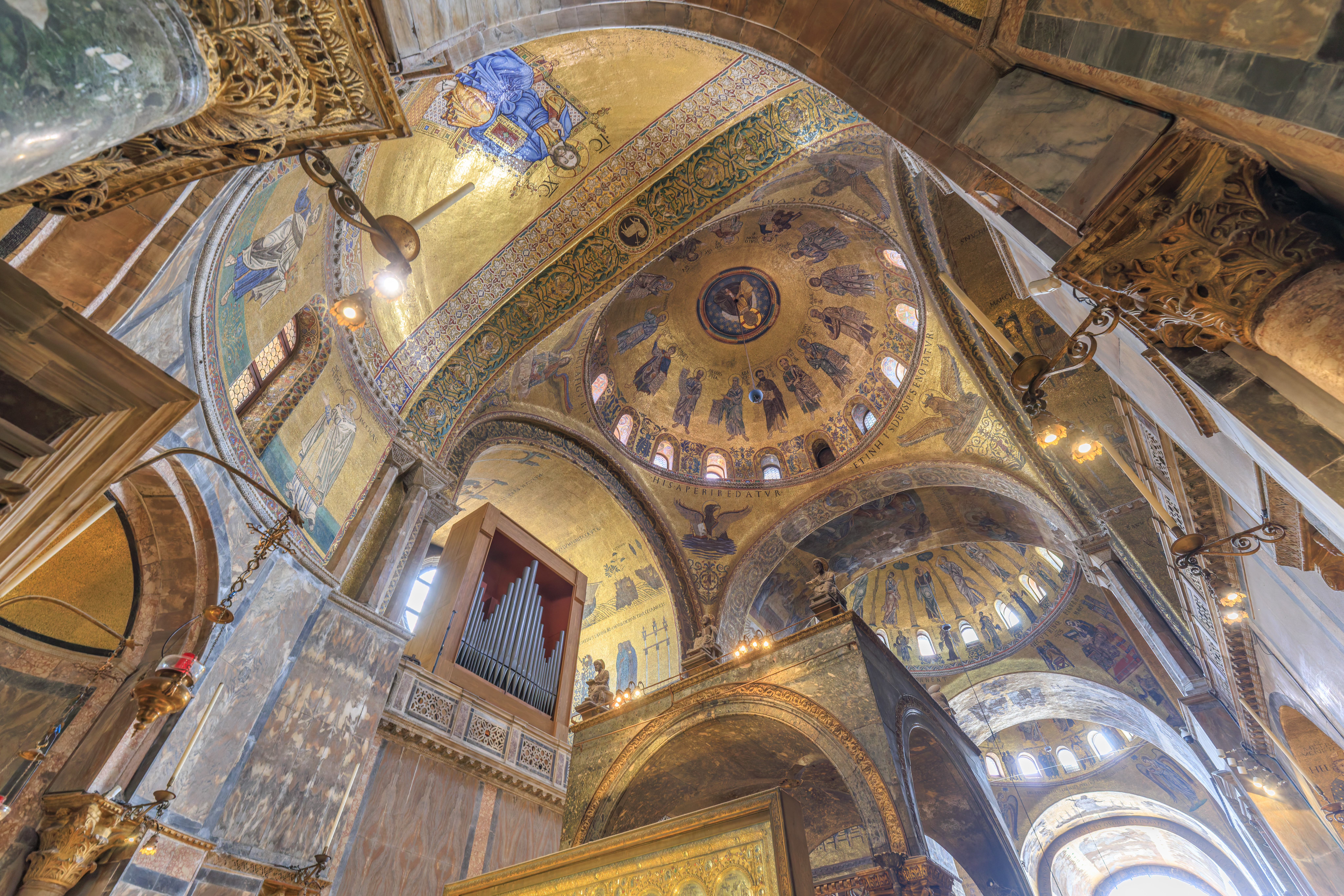
The view looking up. There is an organ here on the side of the basilica rather than in the front which generally seems to be more common.

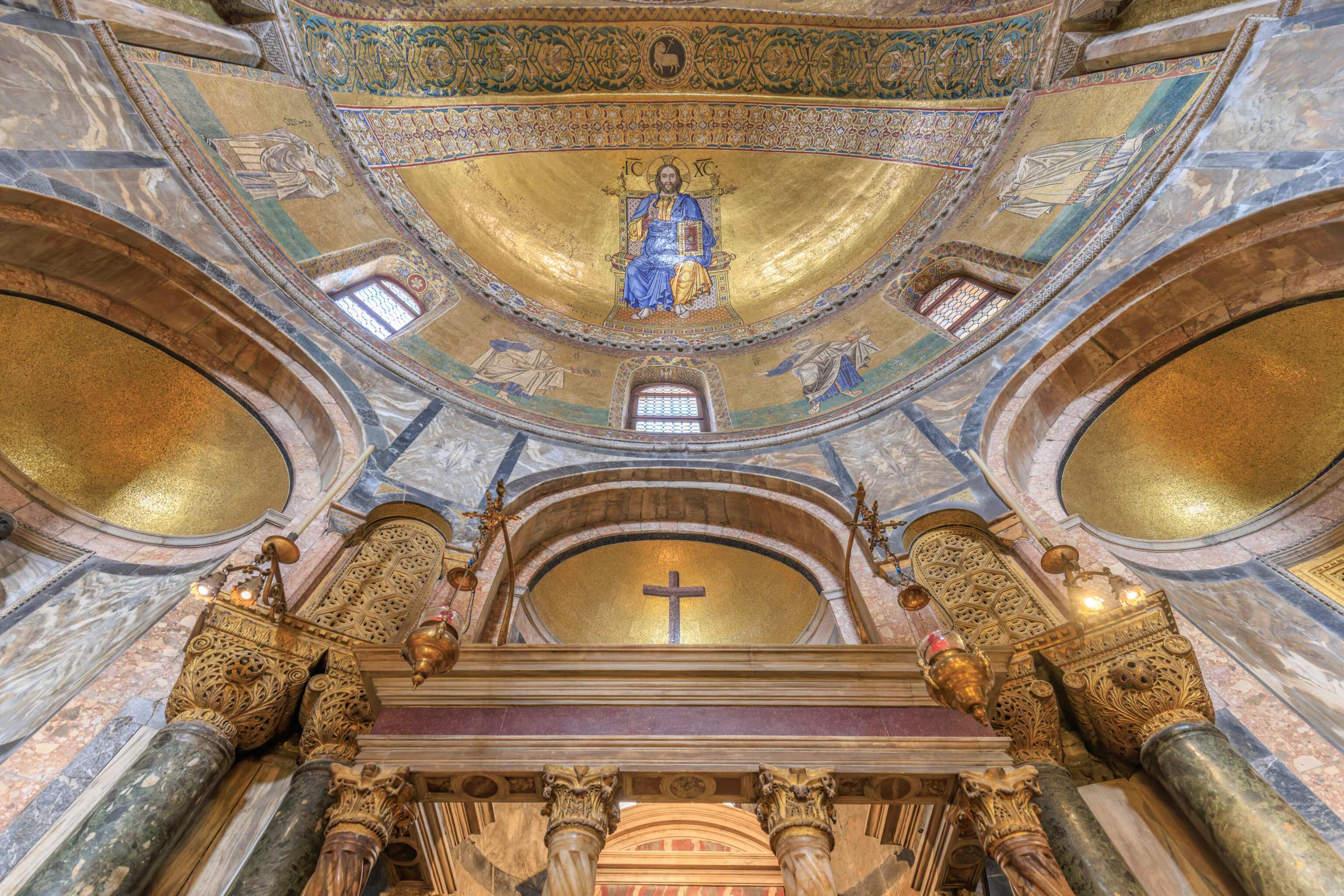
The very rear of the church, as seen from in front of the Pala d’Oro.
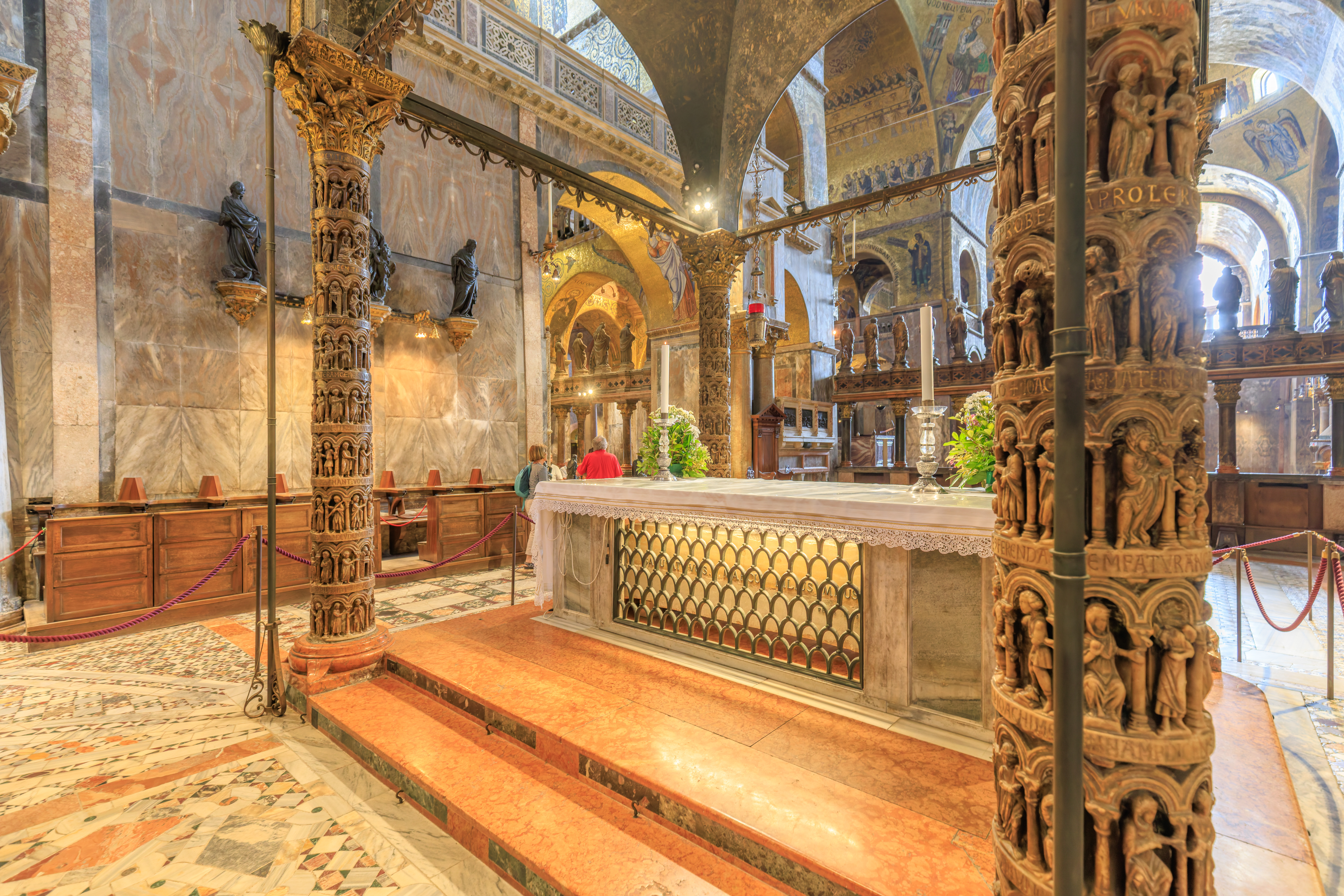
The altar below a ciborium, as seen from the rear after walking away from the Pala d’Oro.
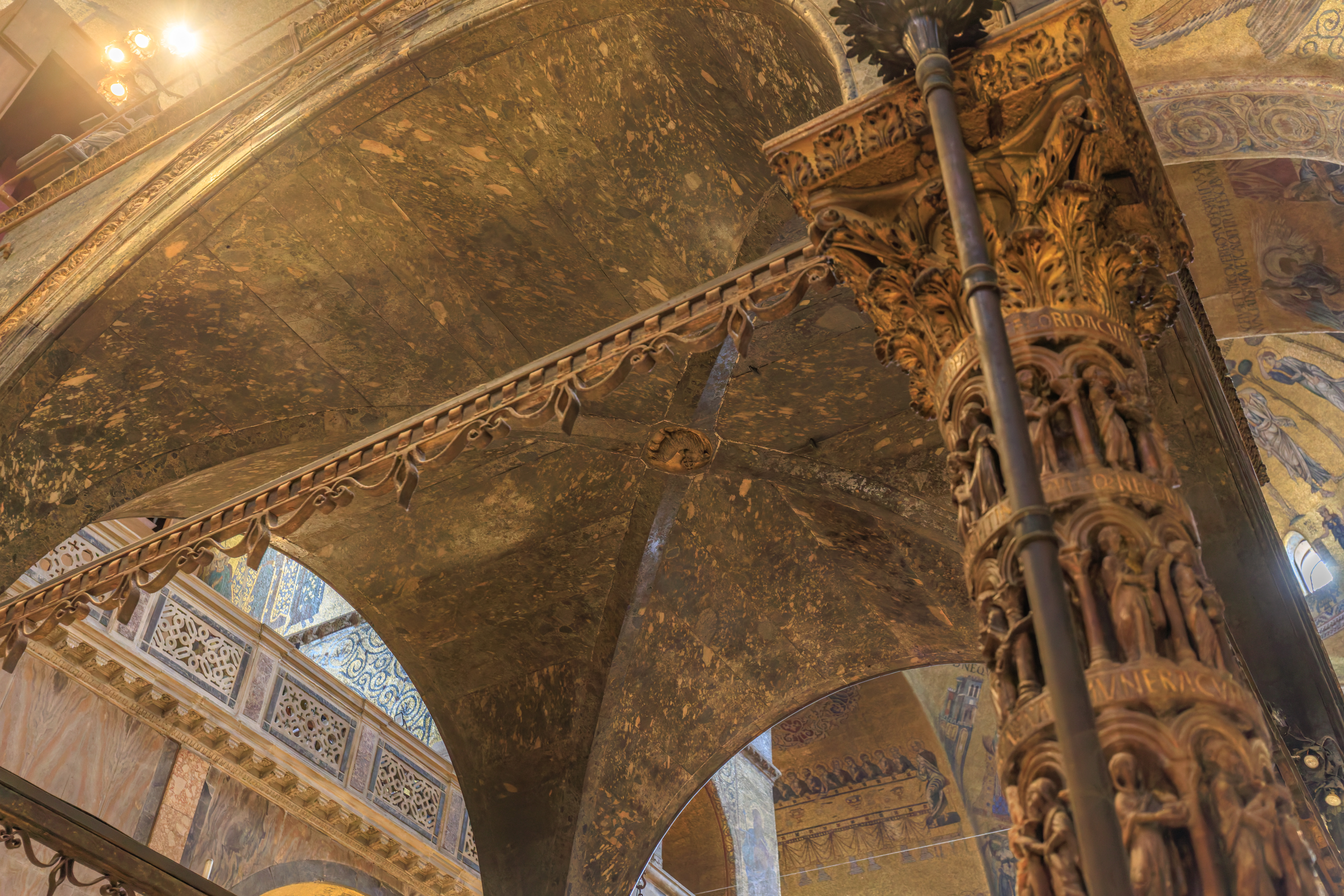
The view looking upwards at the ciborium.
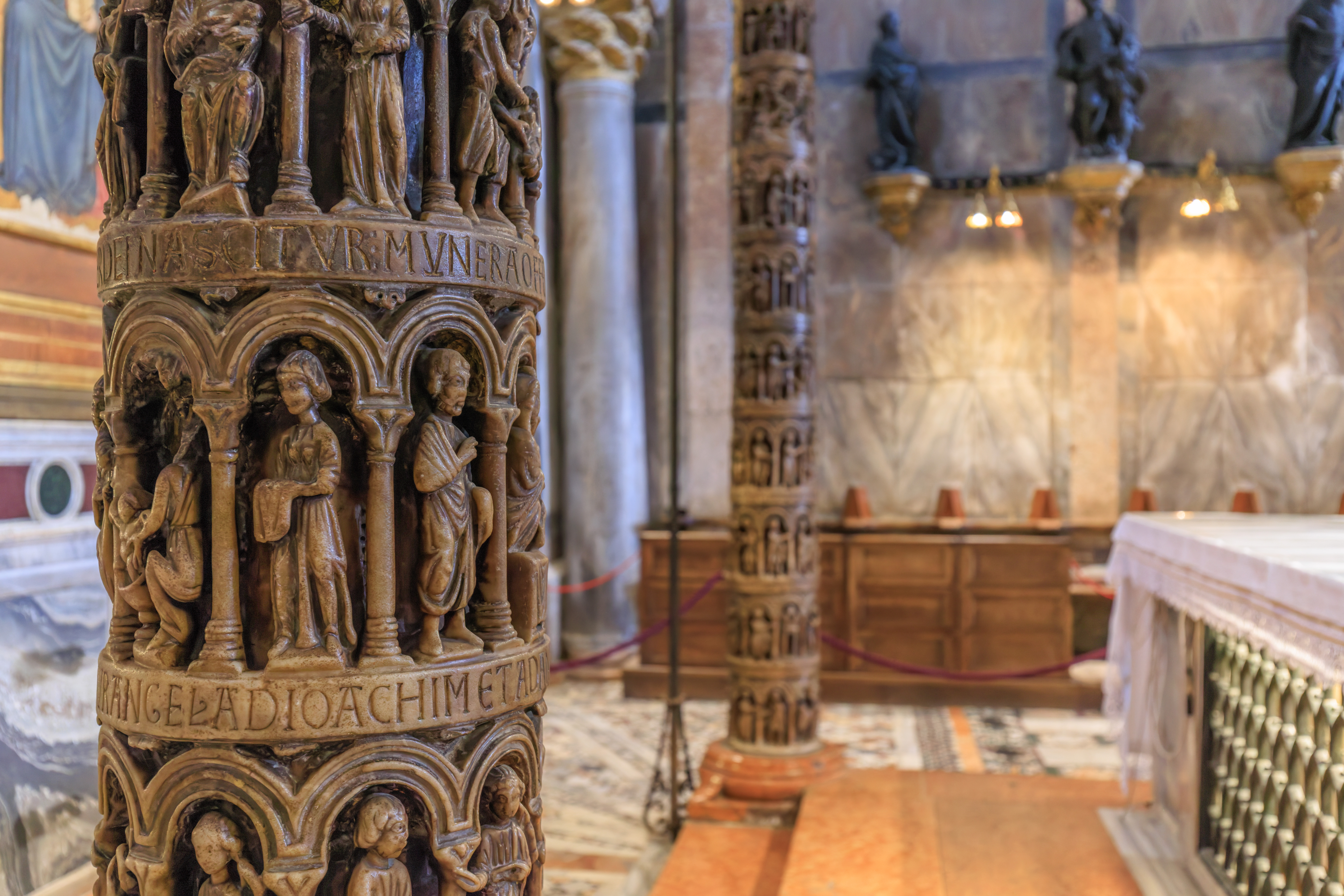
The columns of the ciborium are intricately carved with many figures depicted upon them.
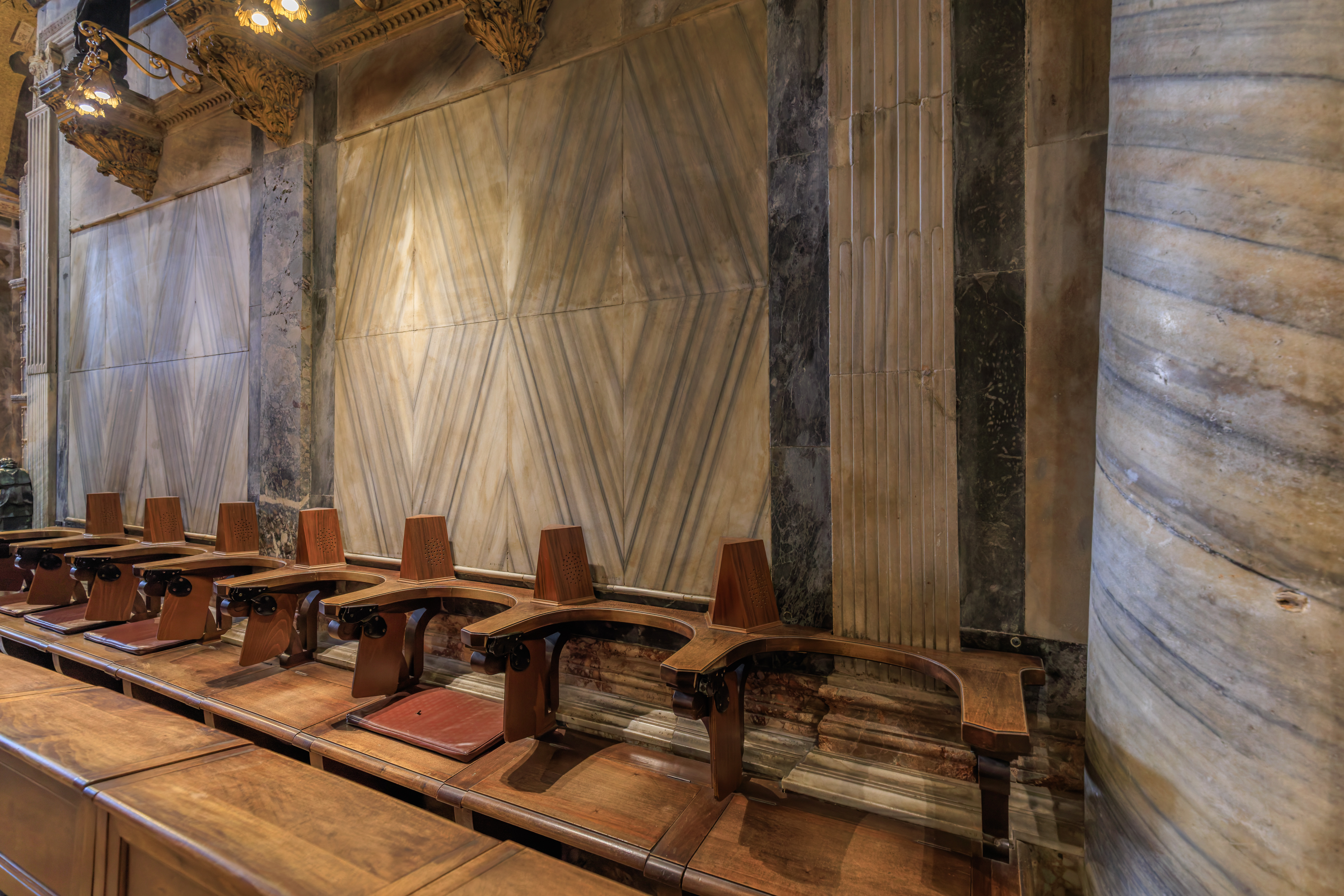
Would these seats on the side of the altar be considered the quire?
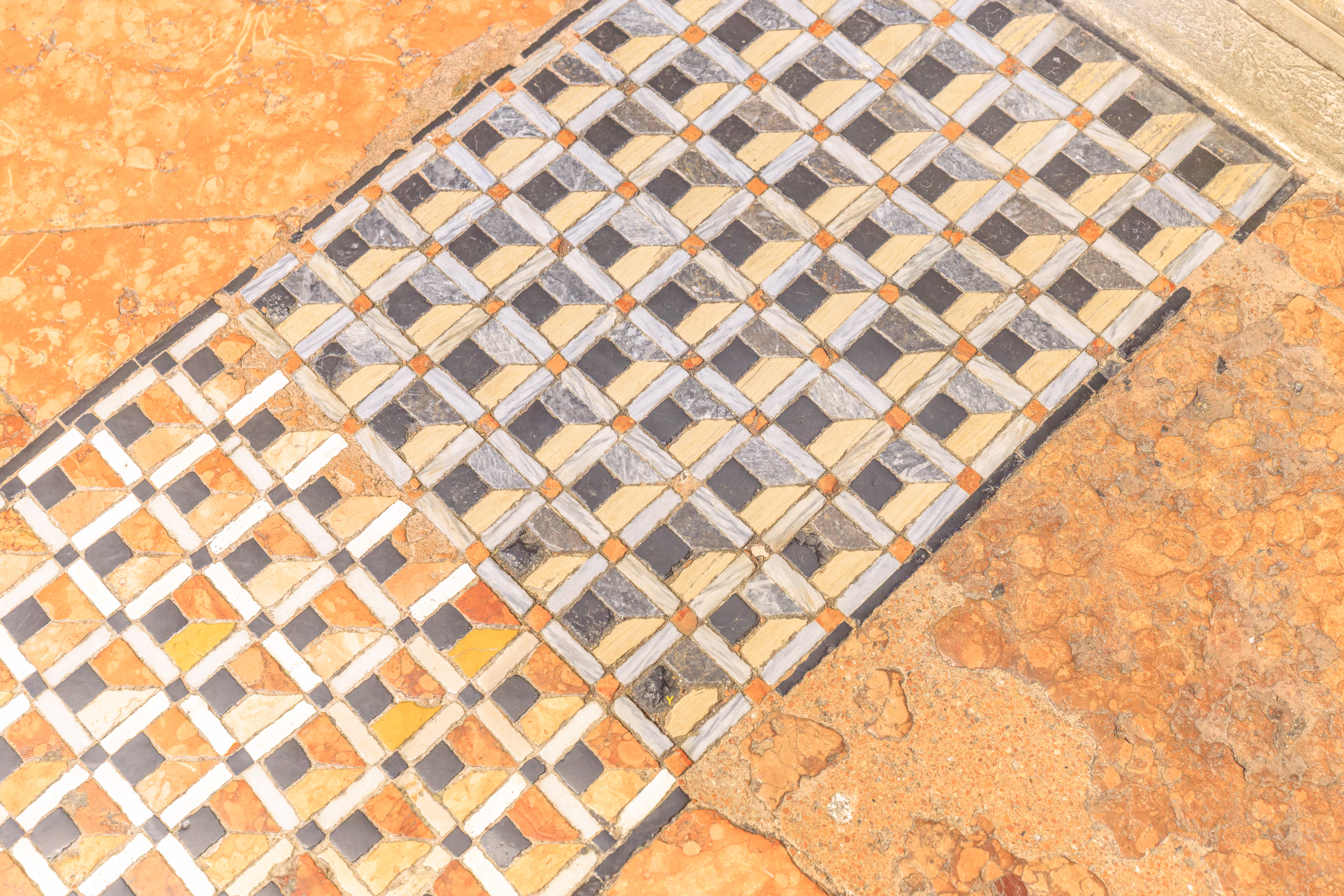
We noticed these three dimensional looking patterns on the floor in parts of the basilica.
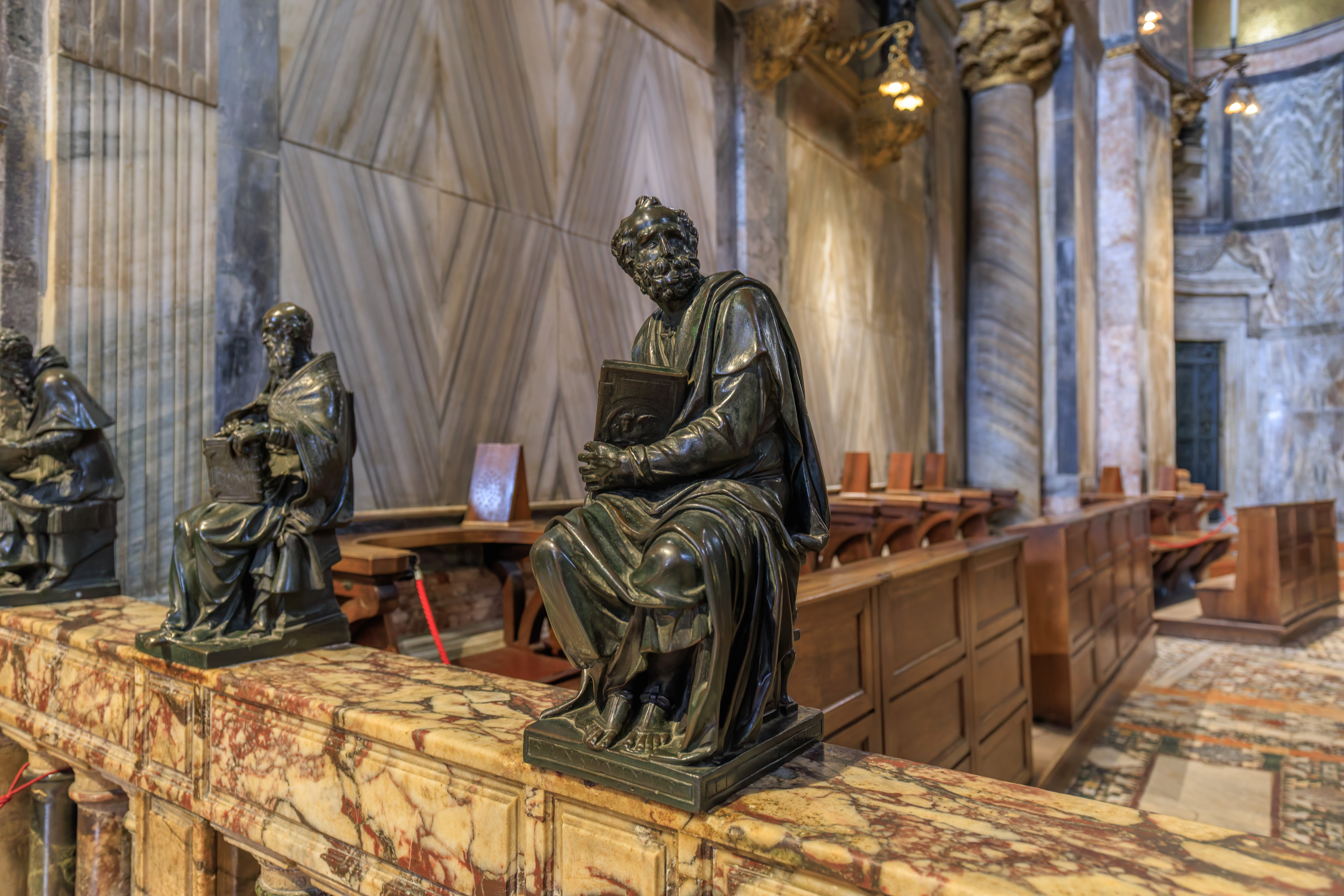
These small sculptures were on a marble divider in front of the altar.
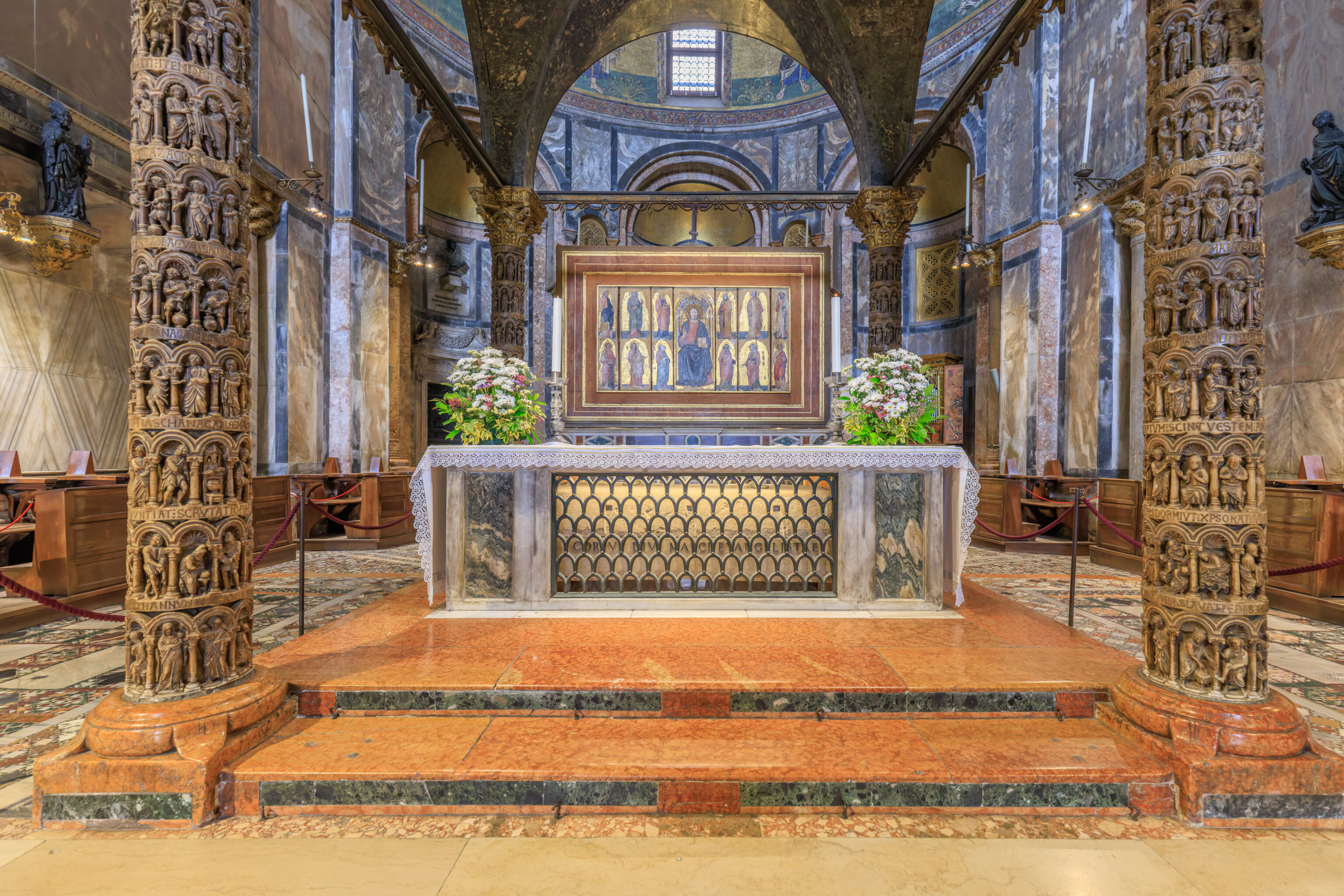
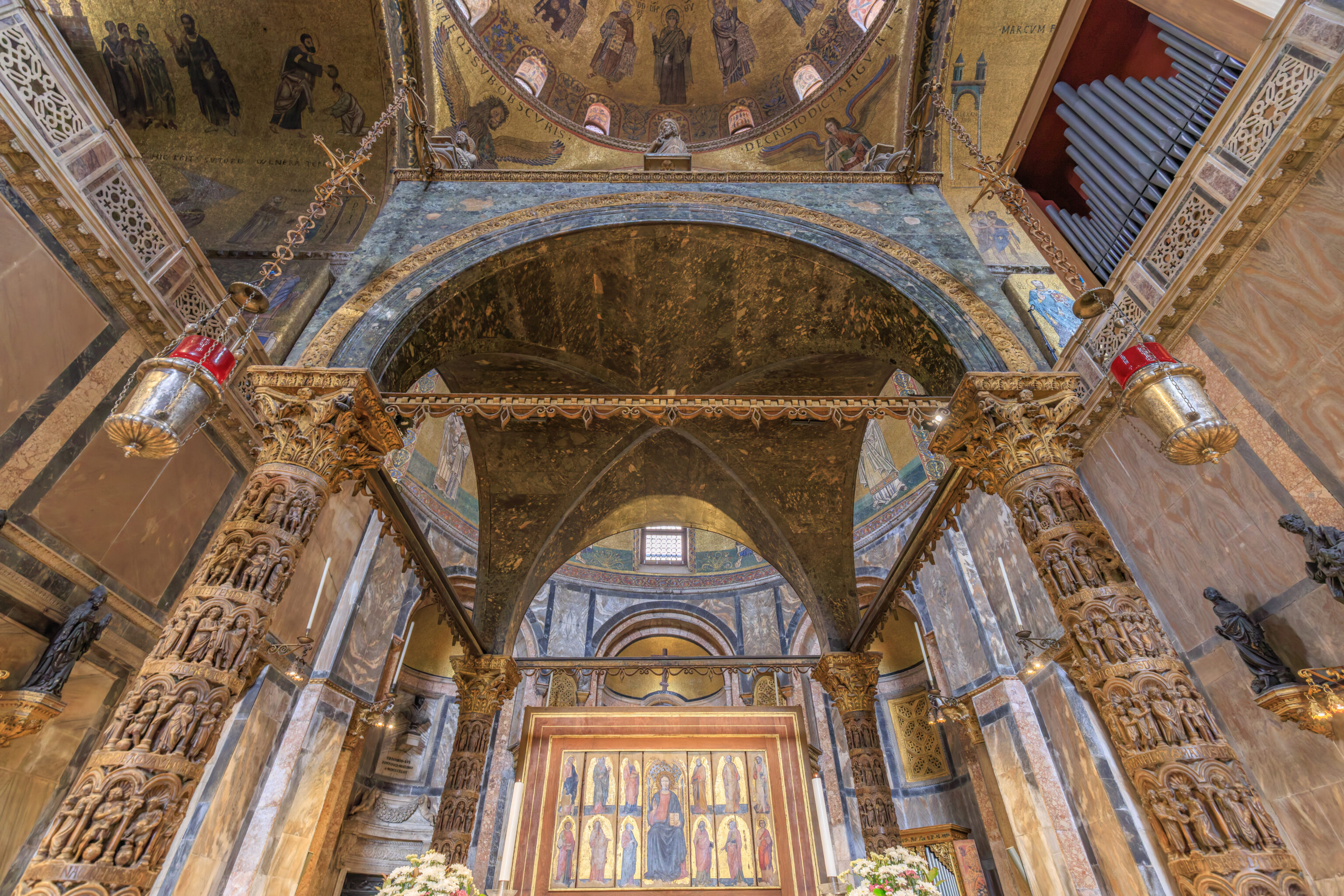
The altar, as seen from the front, with the rear of the Pala d’Oro behind it. The remains of Saint Mark are contained here within the altar.
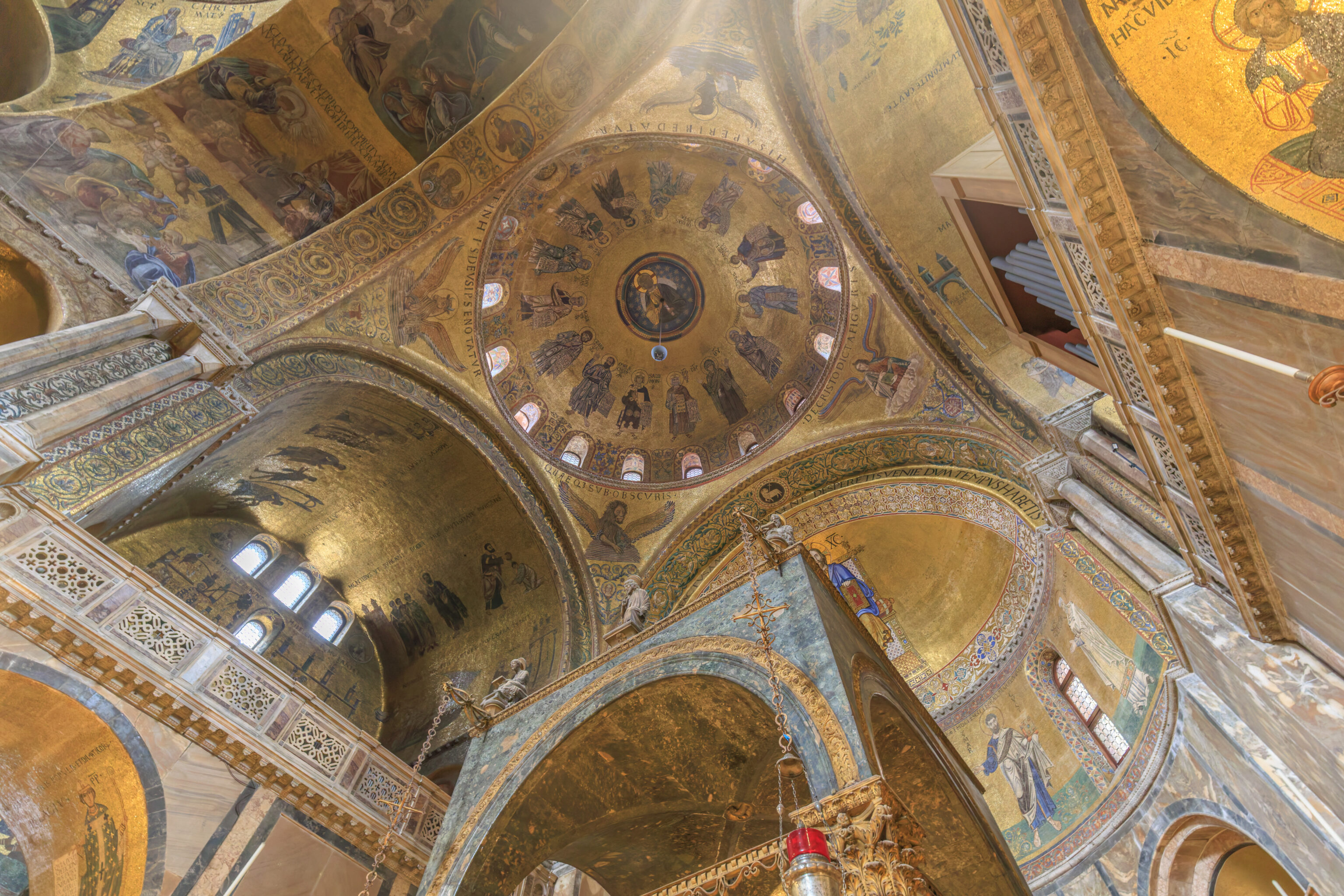
An upwards view from a bit further away.
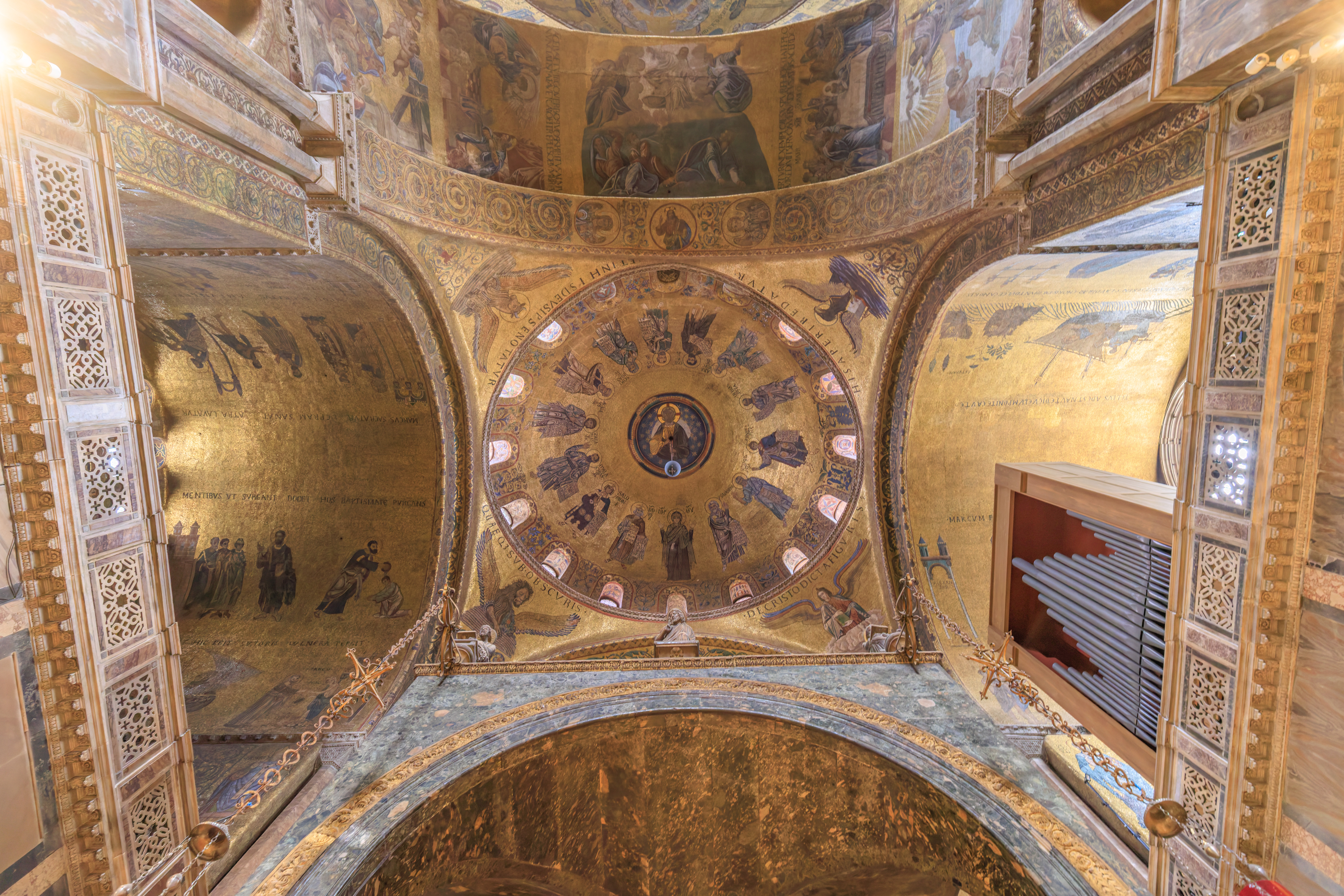
The view looking more or less directly up.
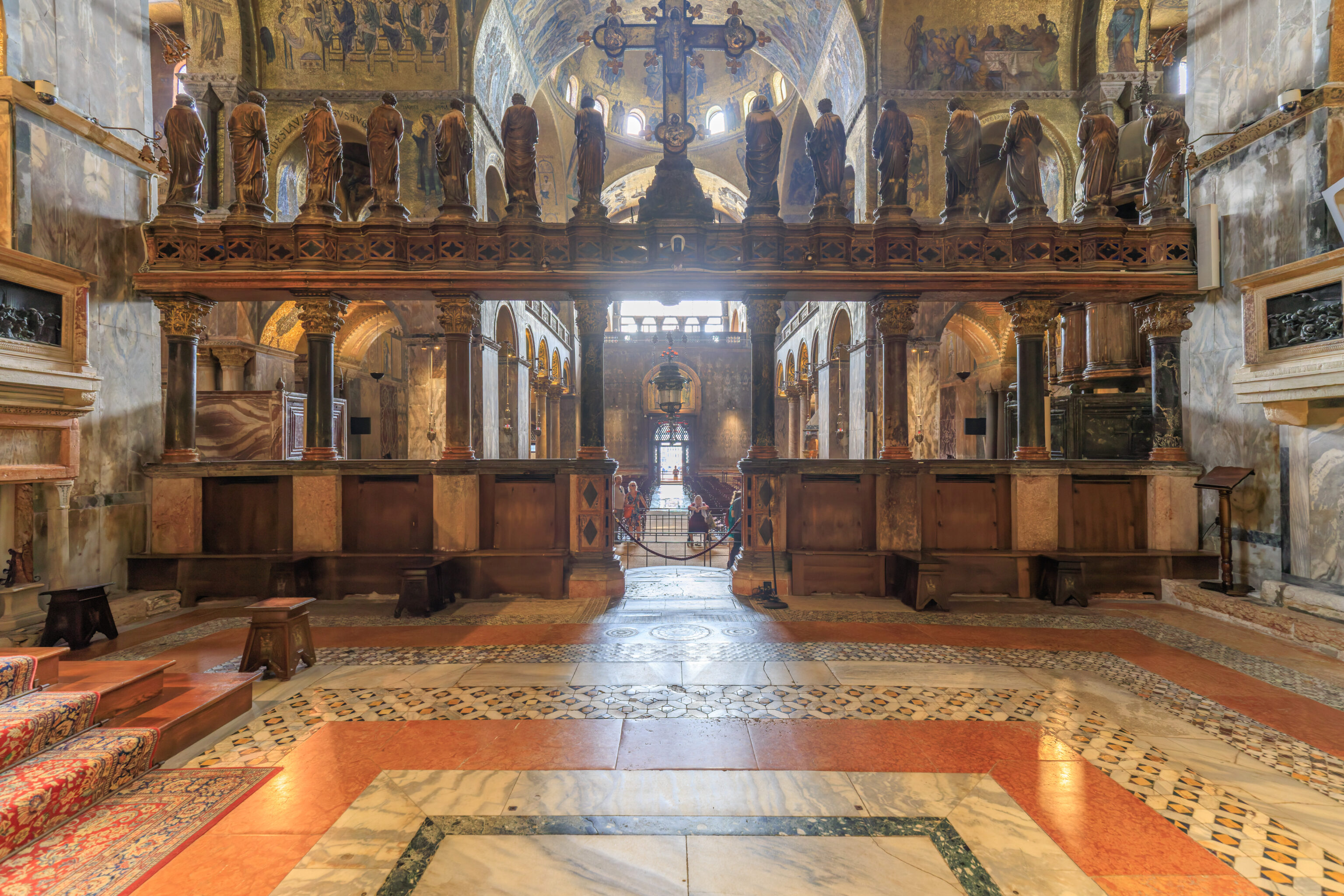
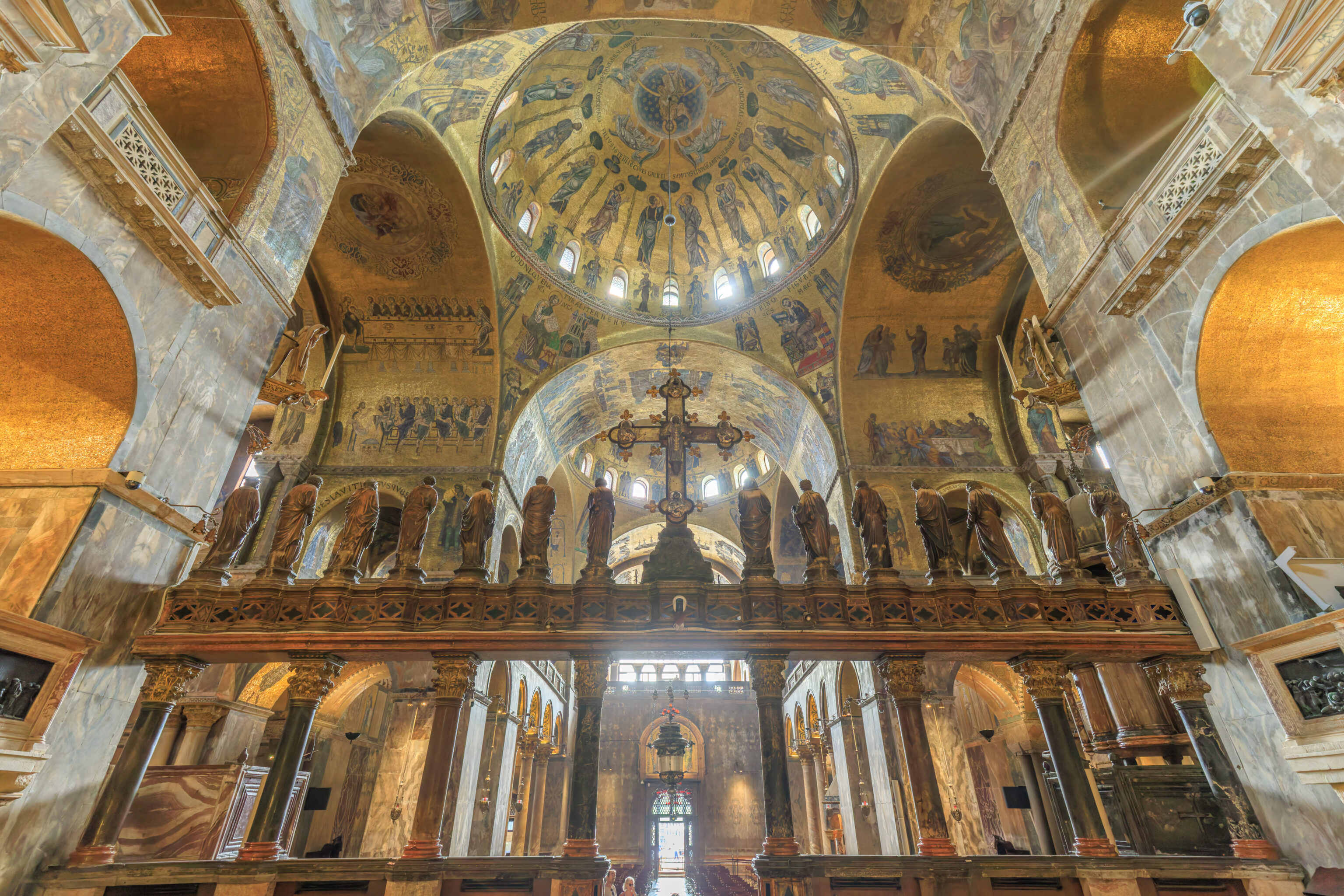
This larger divider is described as the iconostasis. It separates the nave, the main part of the church where the worshipers would sit, and presbytery, the area near the altar, of the basilica. The figures depict the twelve apostles, Virgin Mary, and Saint Mark.
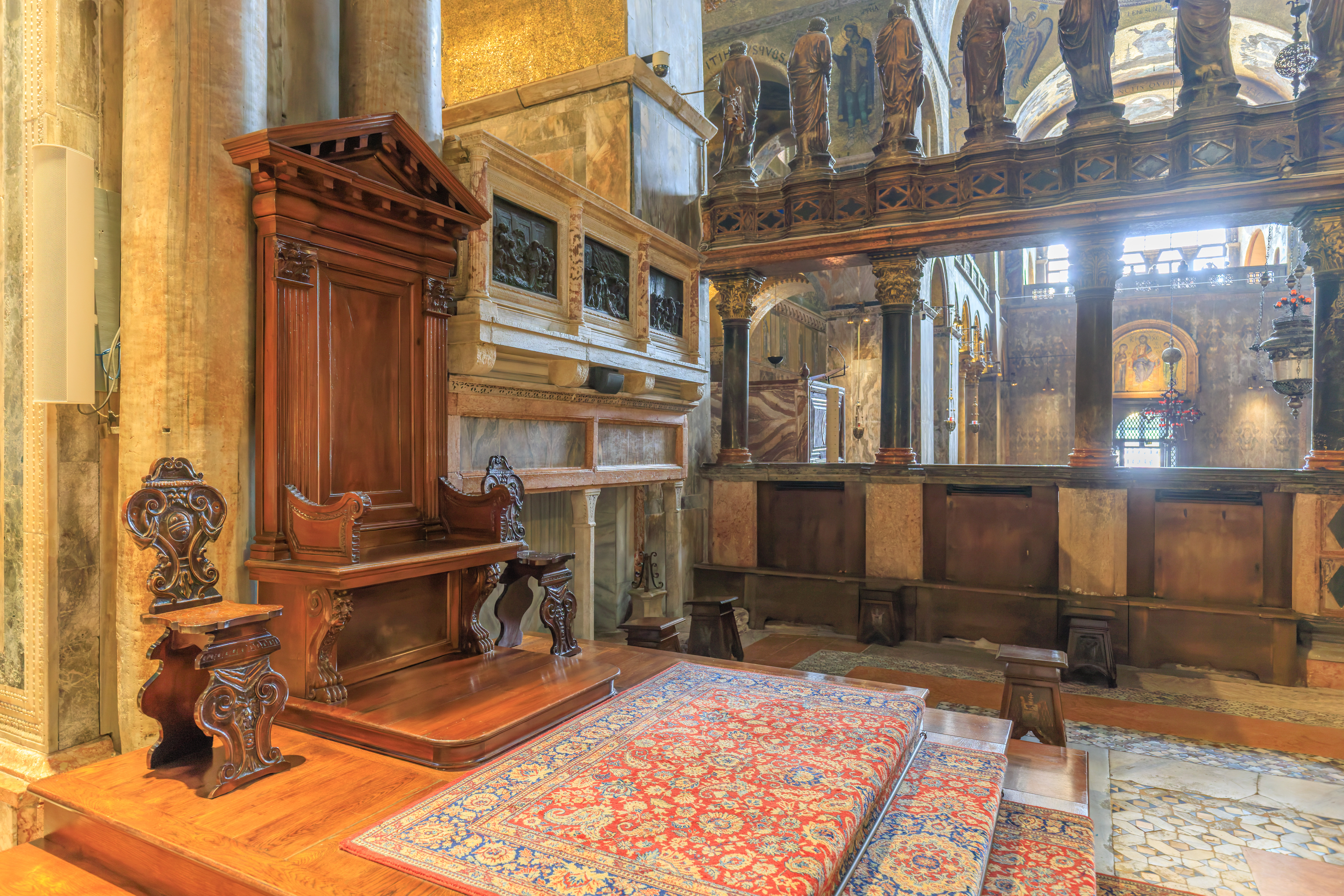
This seat off to the side on an elevated platform seemed important. Is this where the head of this basilica, the Patriarch of Venice, would sit?
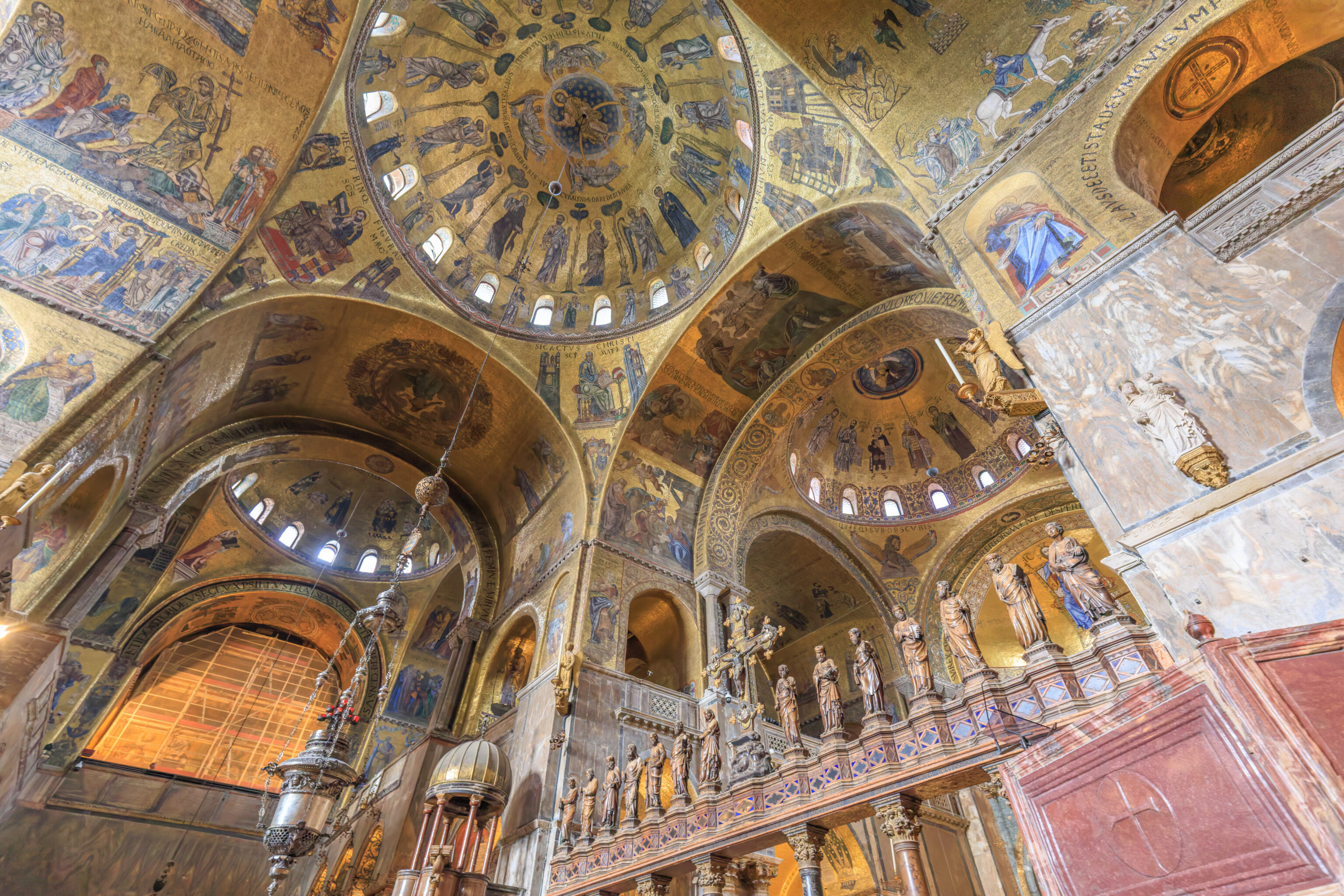
Some additional views from the other side of the here looking up.
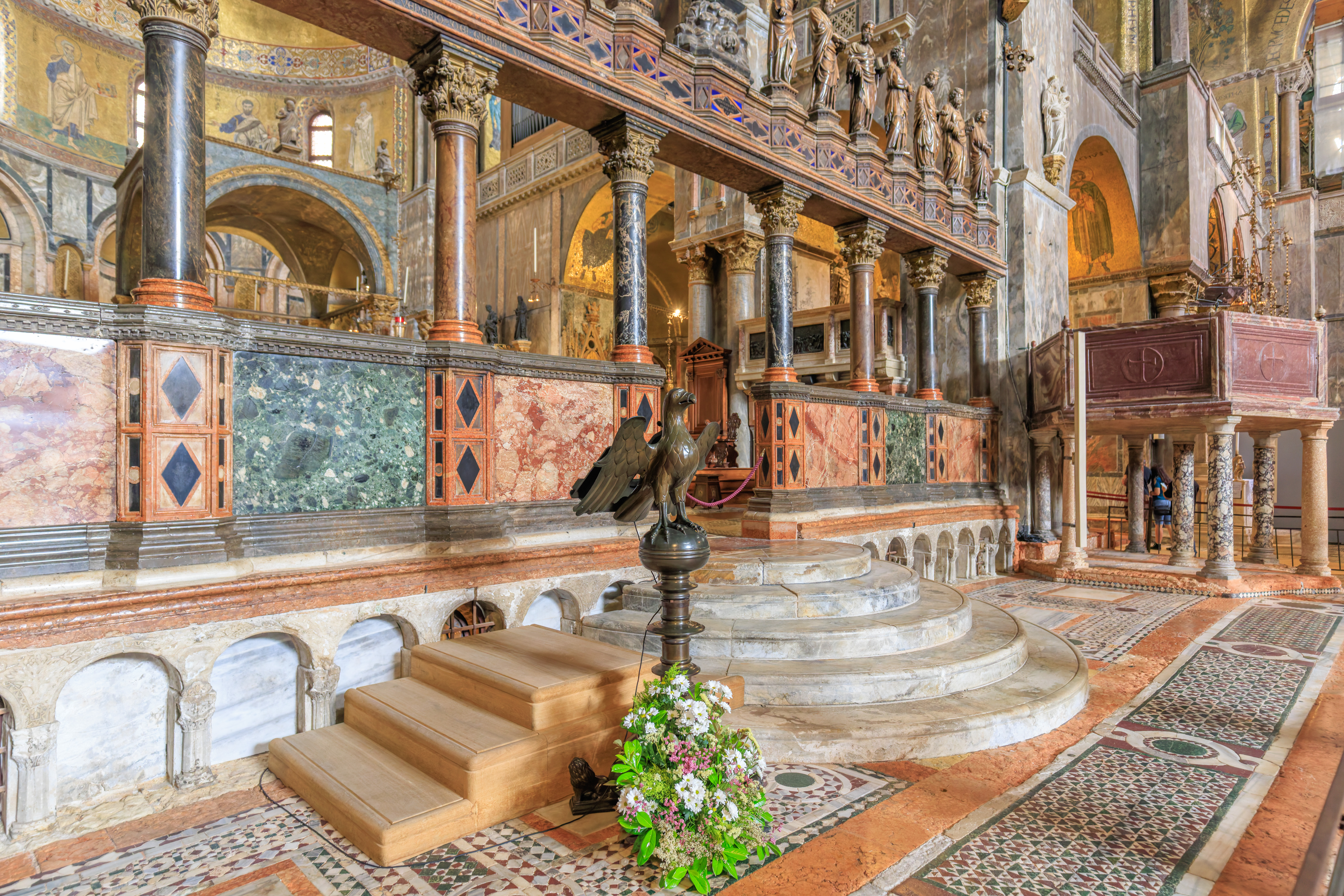
This appears to be an eagle lectern.
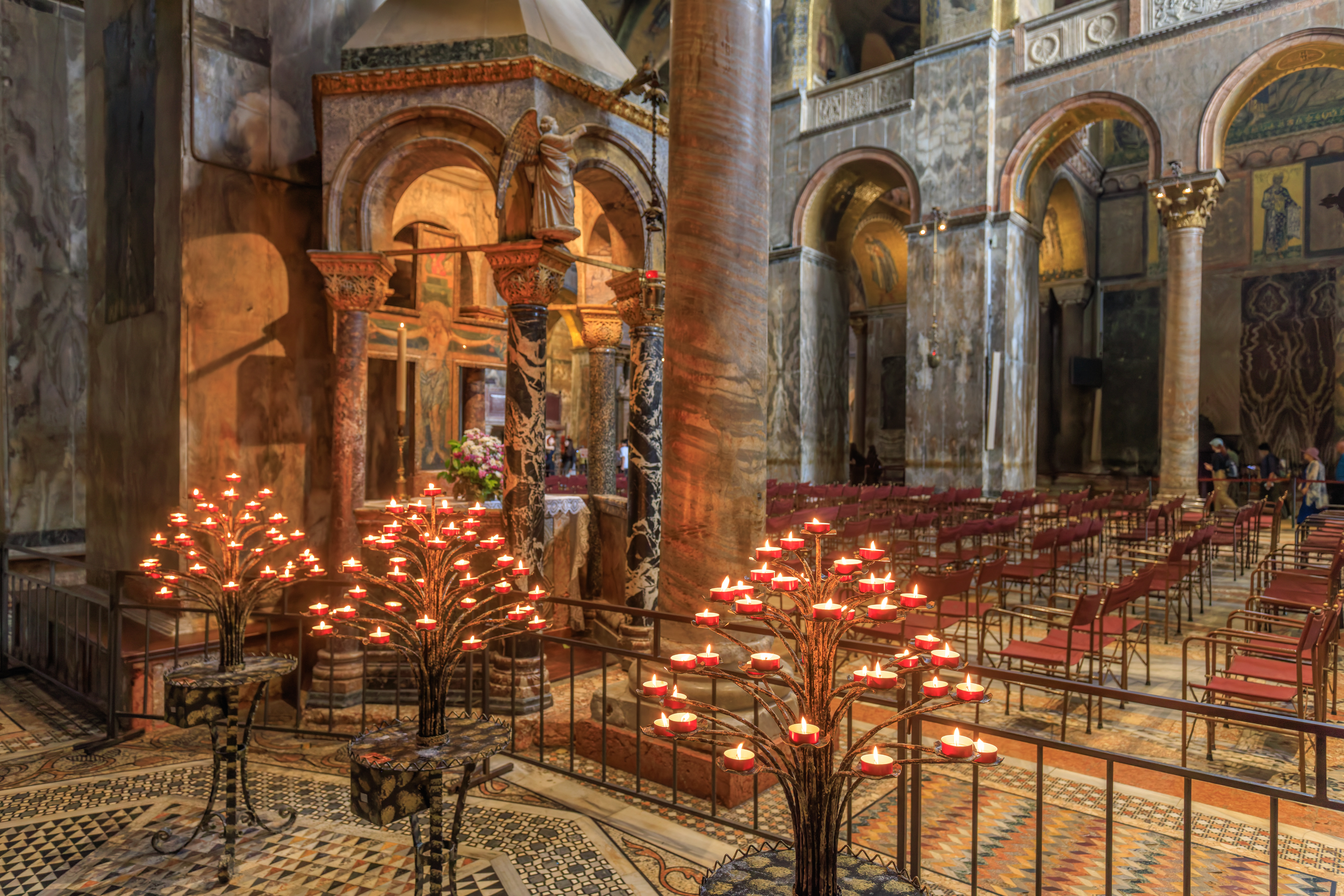
As we started to head back out, we passed by many lit votive candles.
A short video of the candles.

We found more three dimensional geometric shapes on the floor as we headed out.
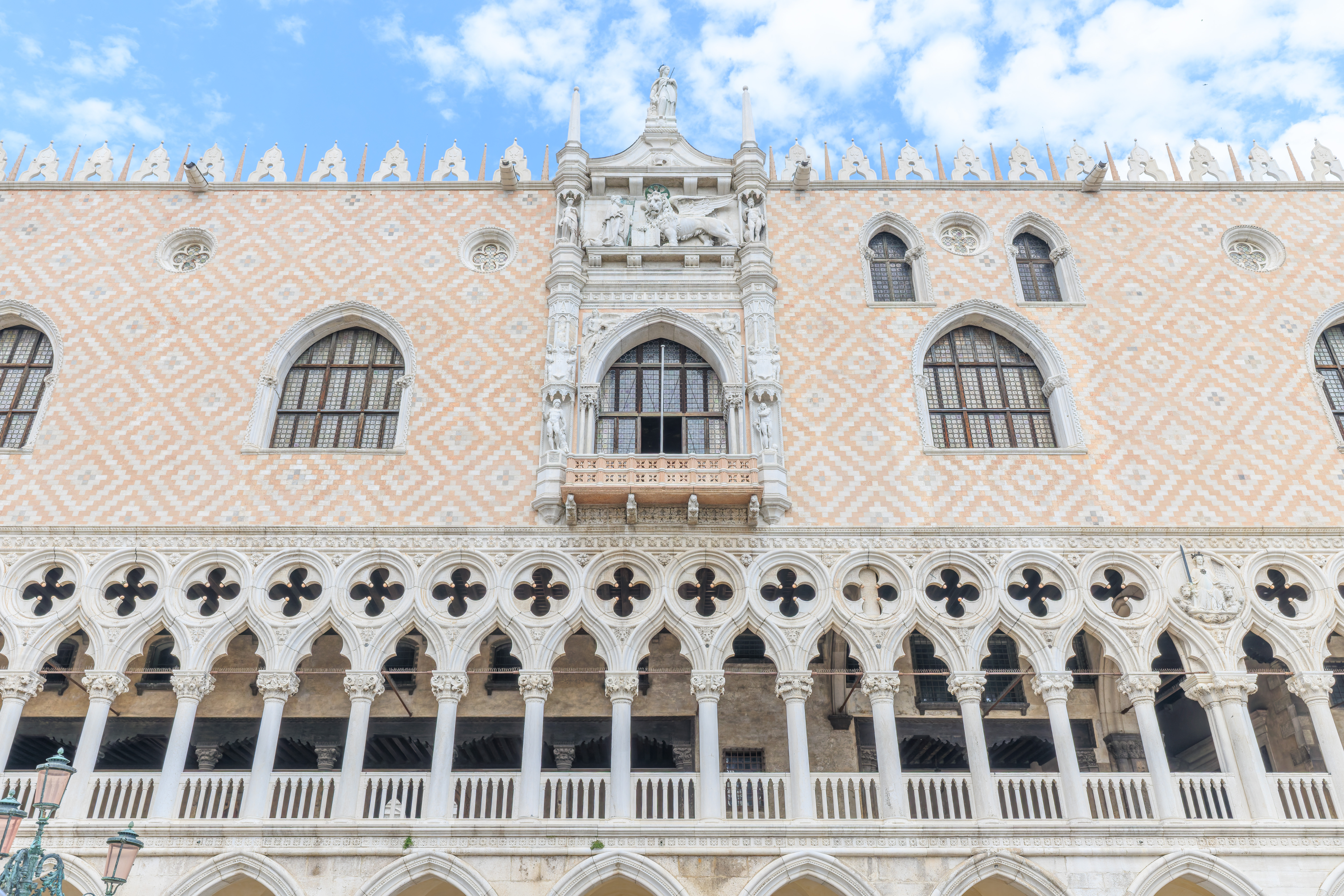
We walked by the Palazzo Ducale as we headed to the S. Marco-San Zaccaria quays.
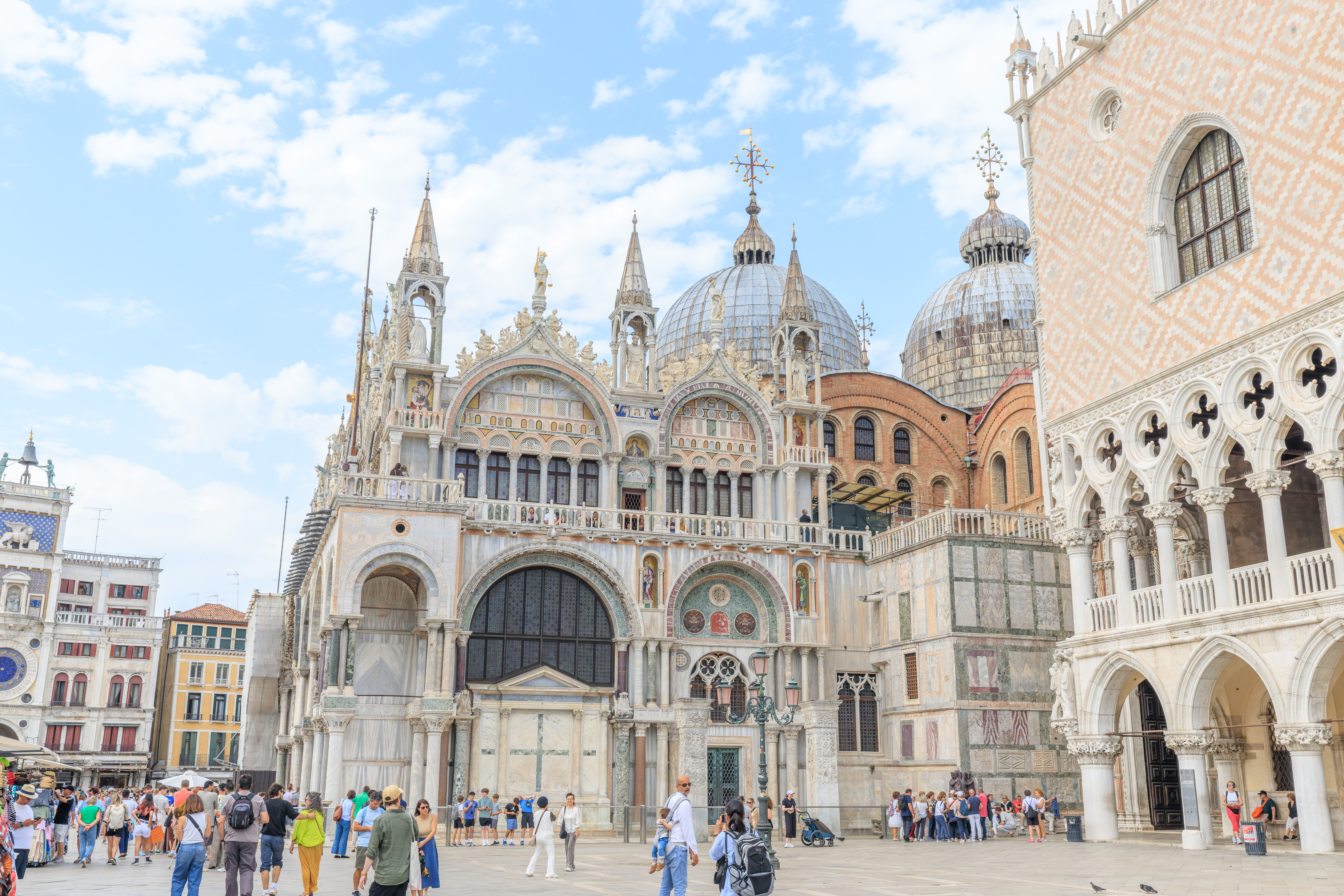
We glanced back at the Basilica di San Marco as we walked away. The queue is pretty short now at around 4pm.
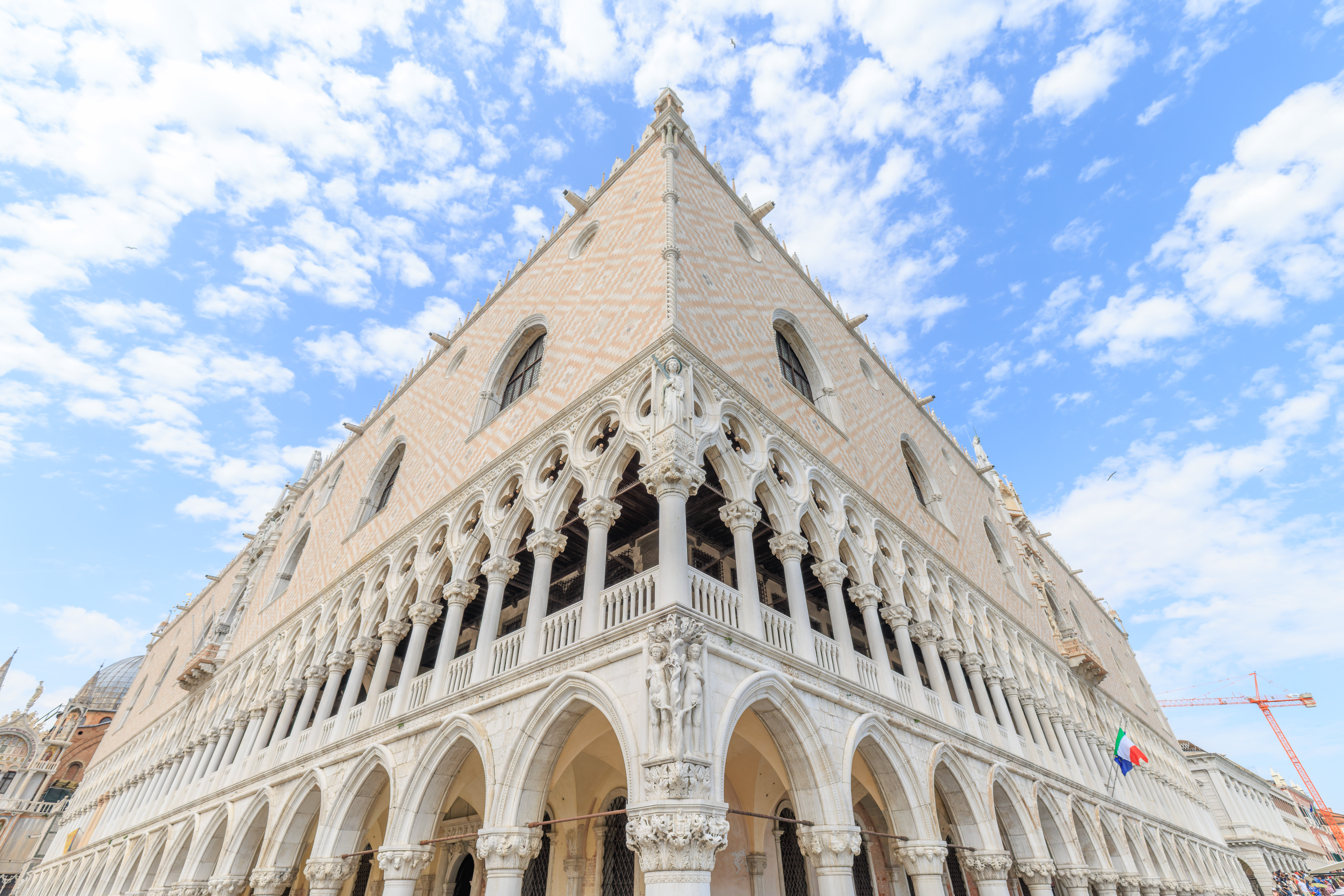
The southwest corner of the Palazzo Ducale.
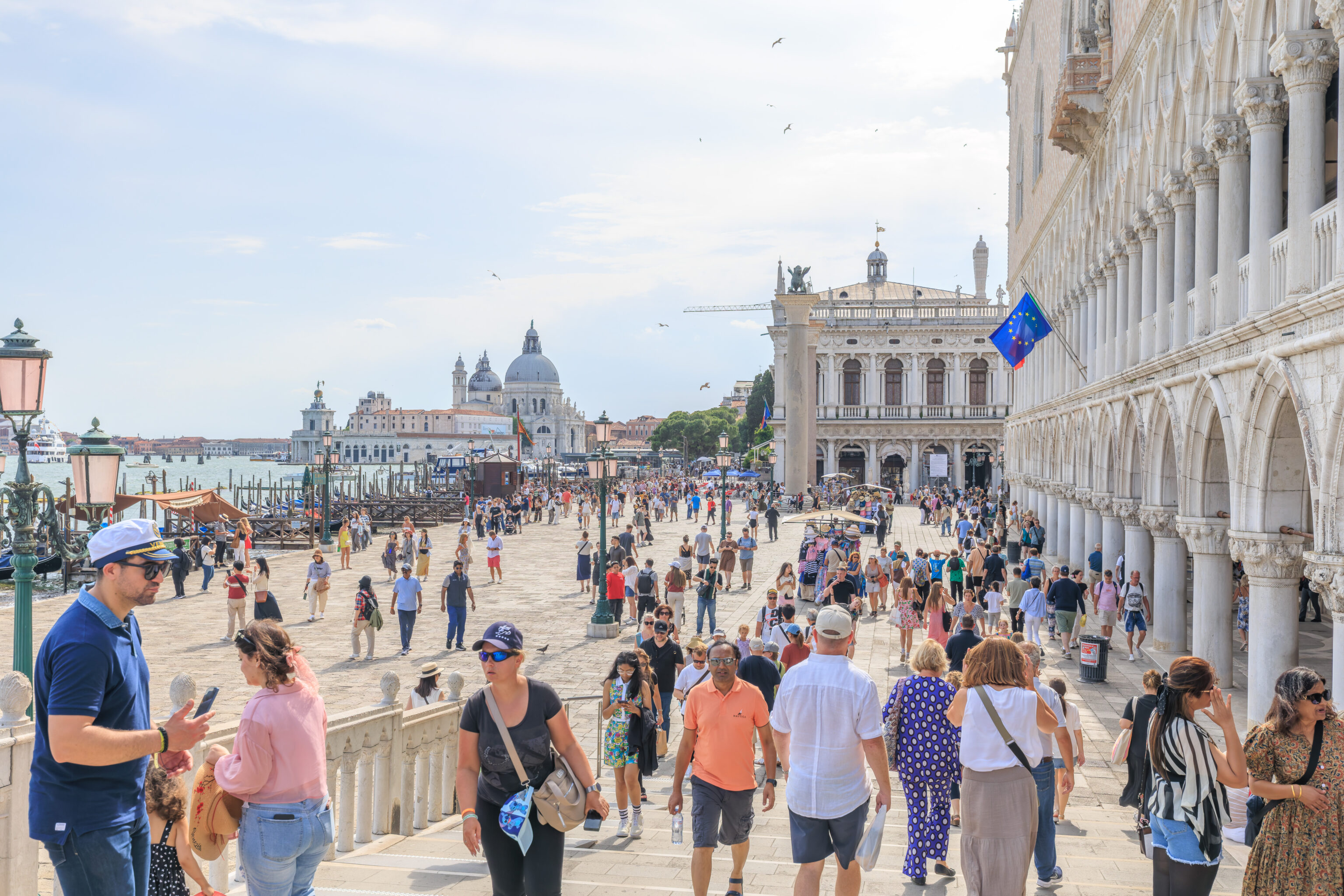
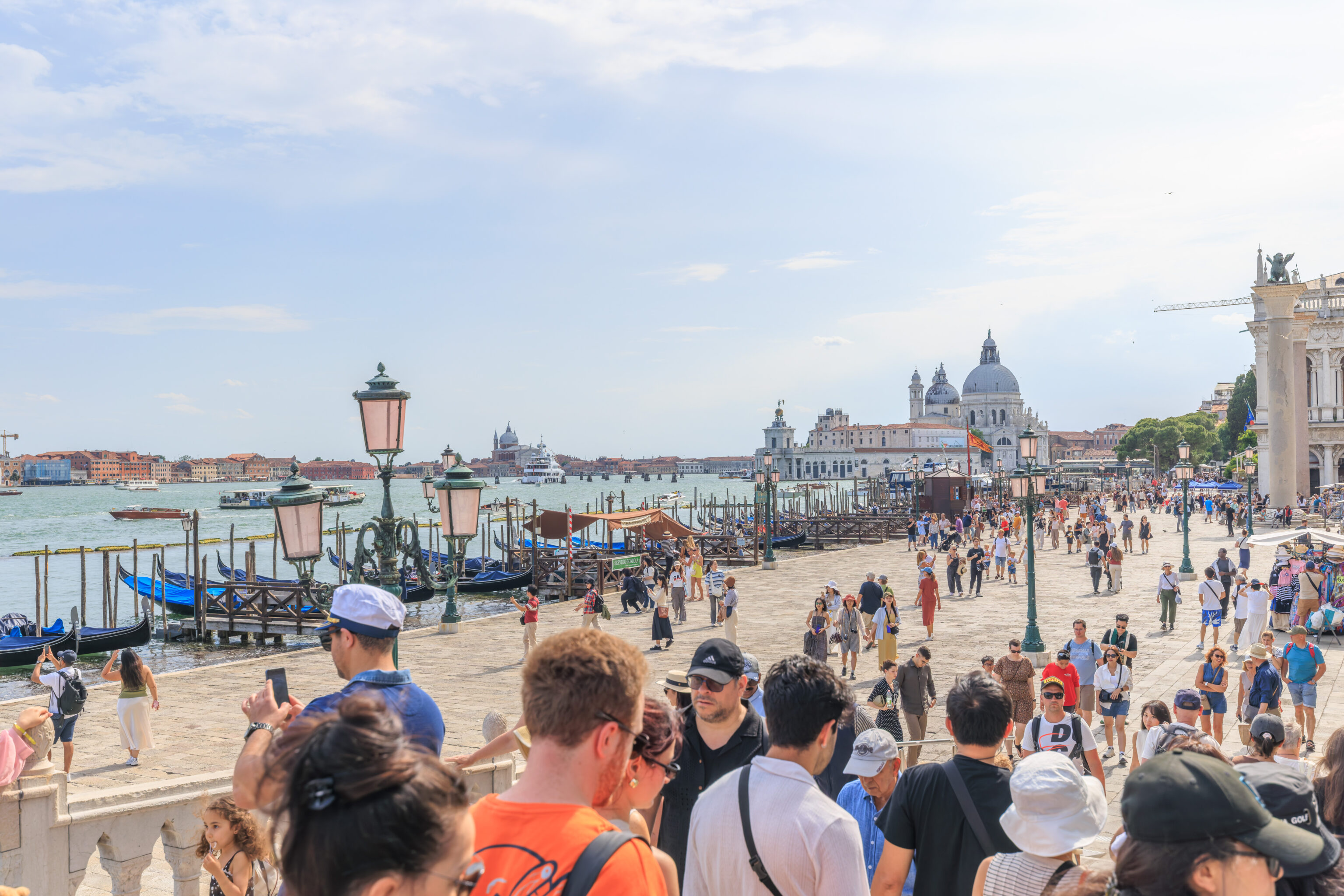
The view from the west side of the Ponte della Paglia, which we crossed.
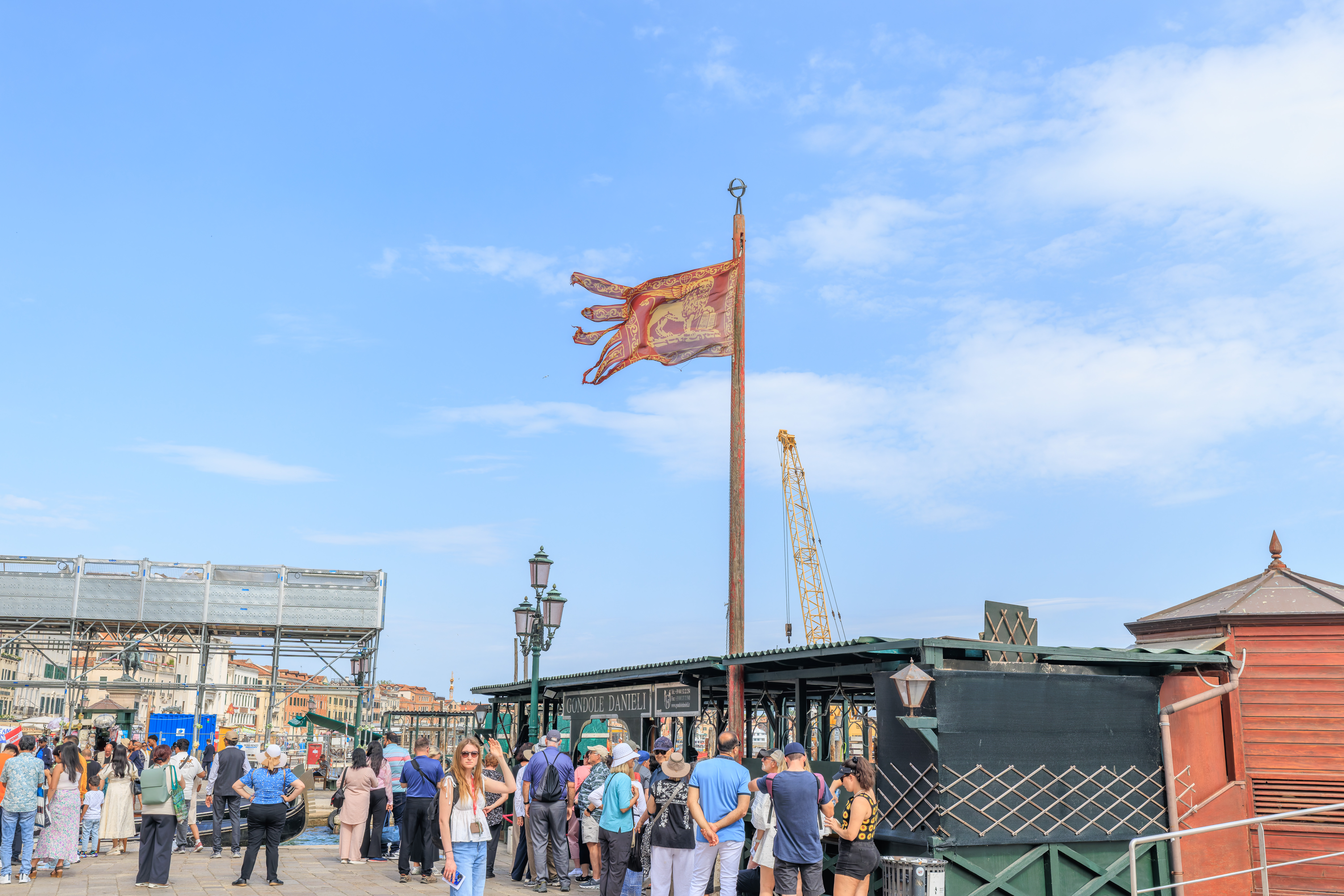
The flag of the former Republic of Venice, flying above the Danieli gondola piers. This seems to be one of the larger places where one can board a gondola.
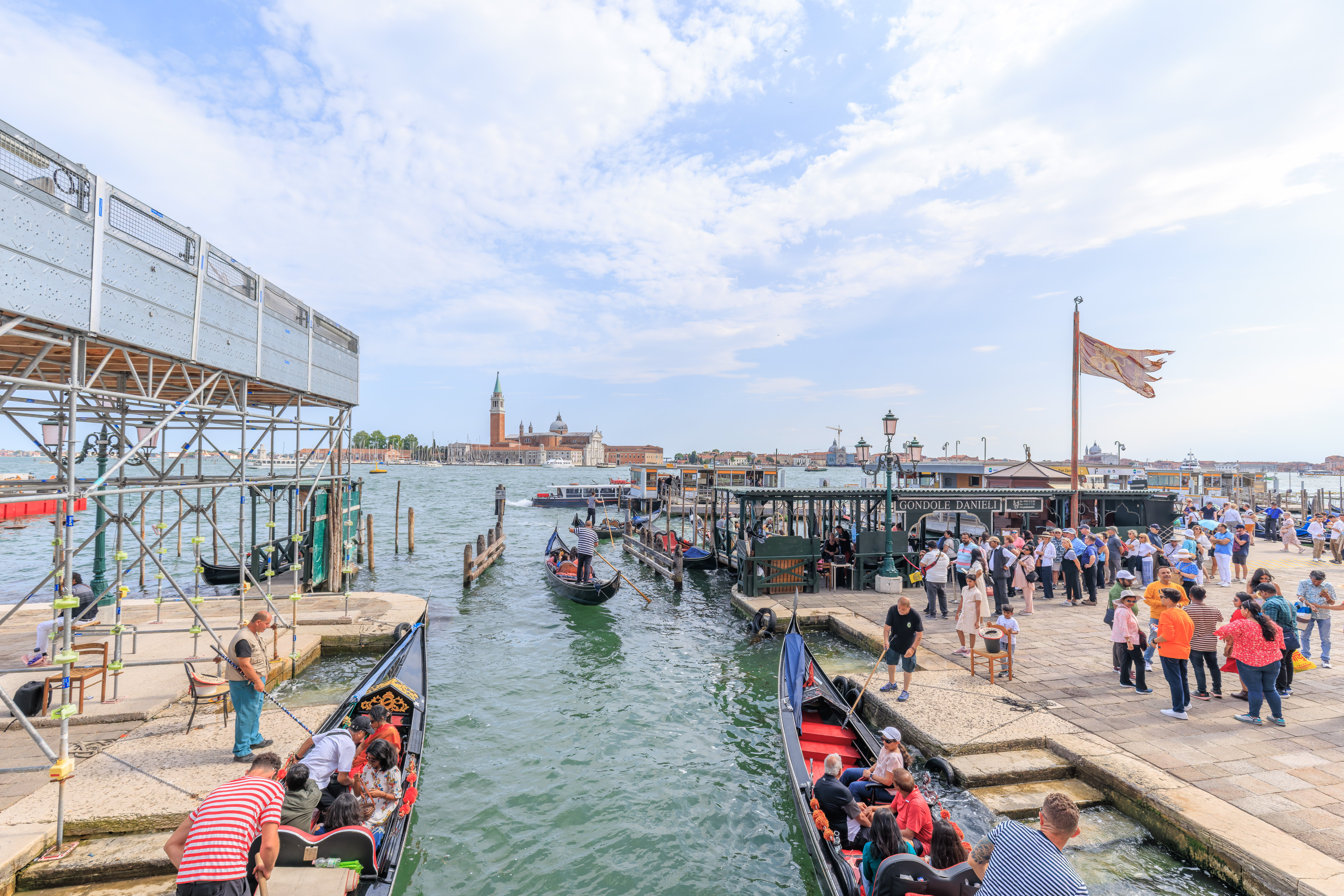
The view from the west side of the next bridge, the Ponte del Vin.
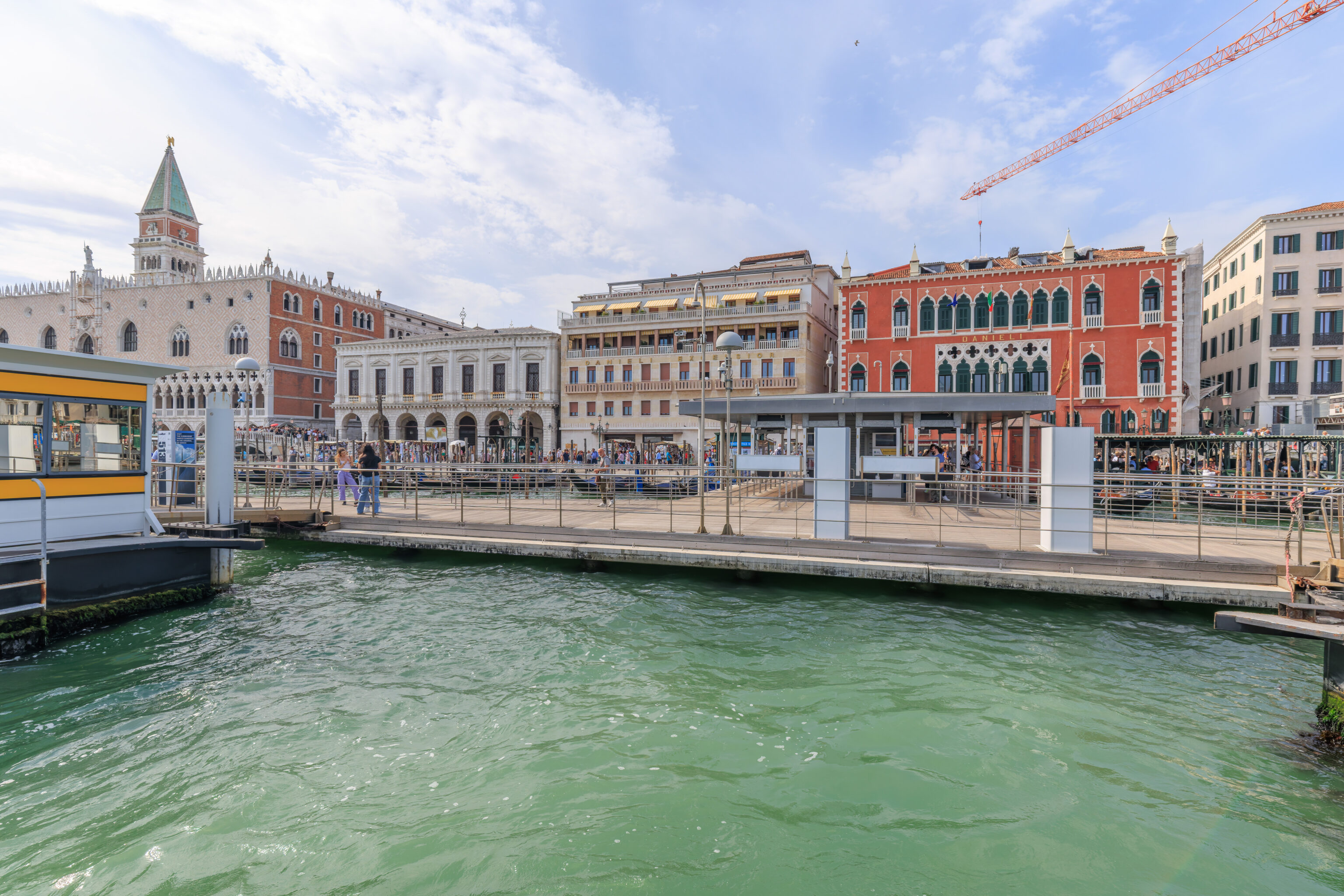
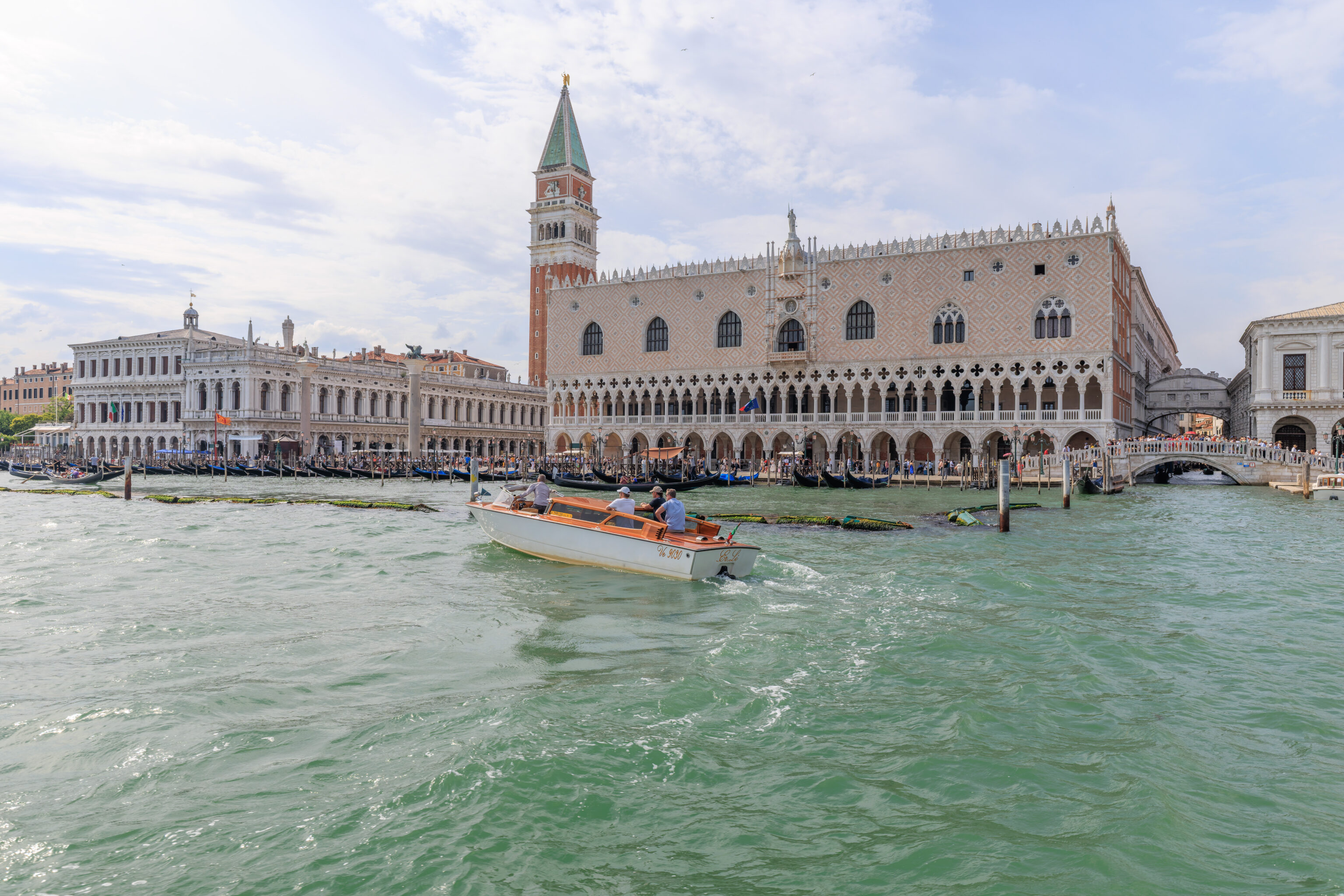
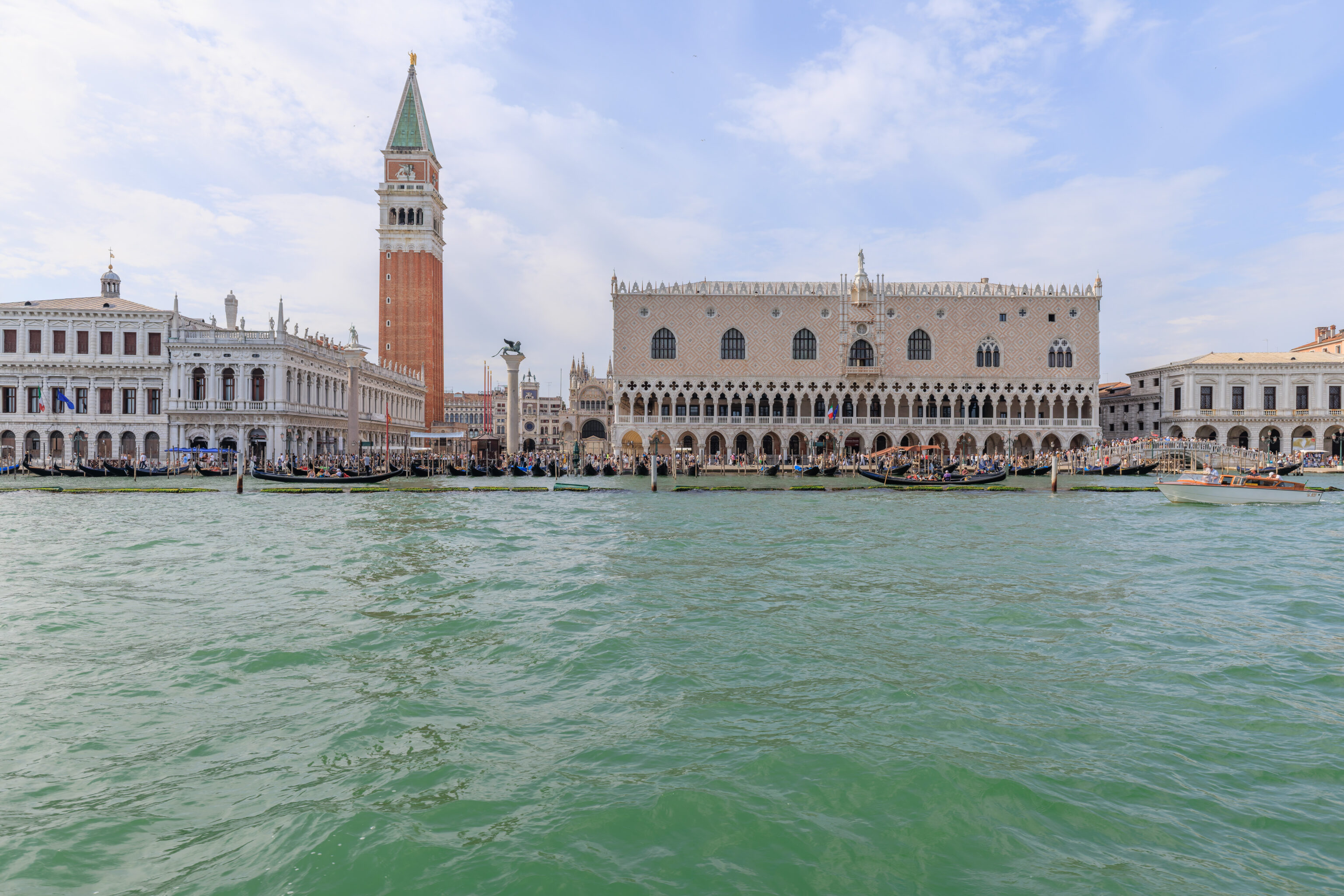
We boarded the next vaporetto that was going west via the Grand Canal. Both Line 1 and Line 2 go via this route.
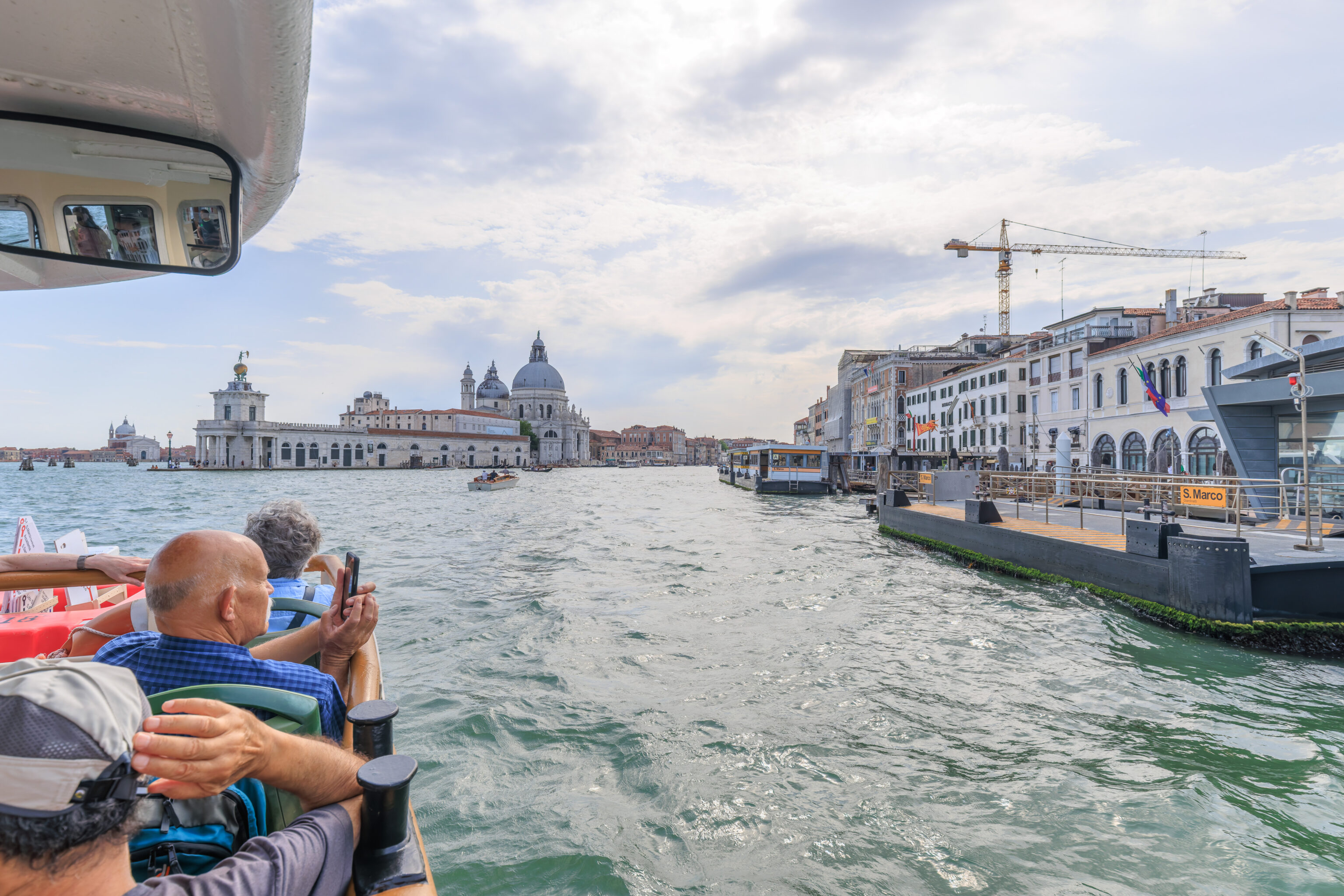
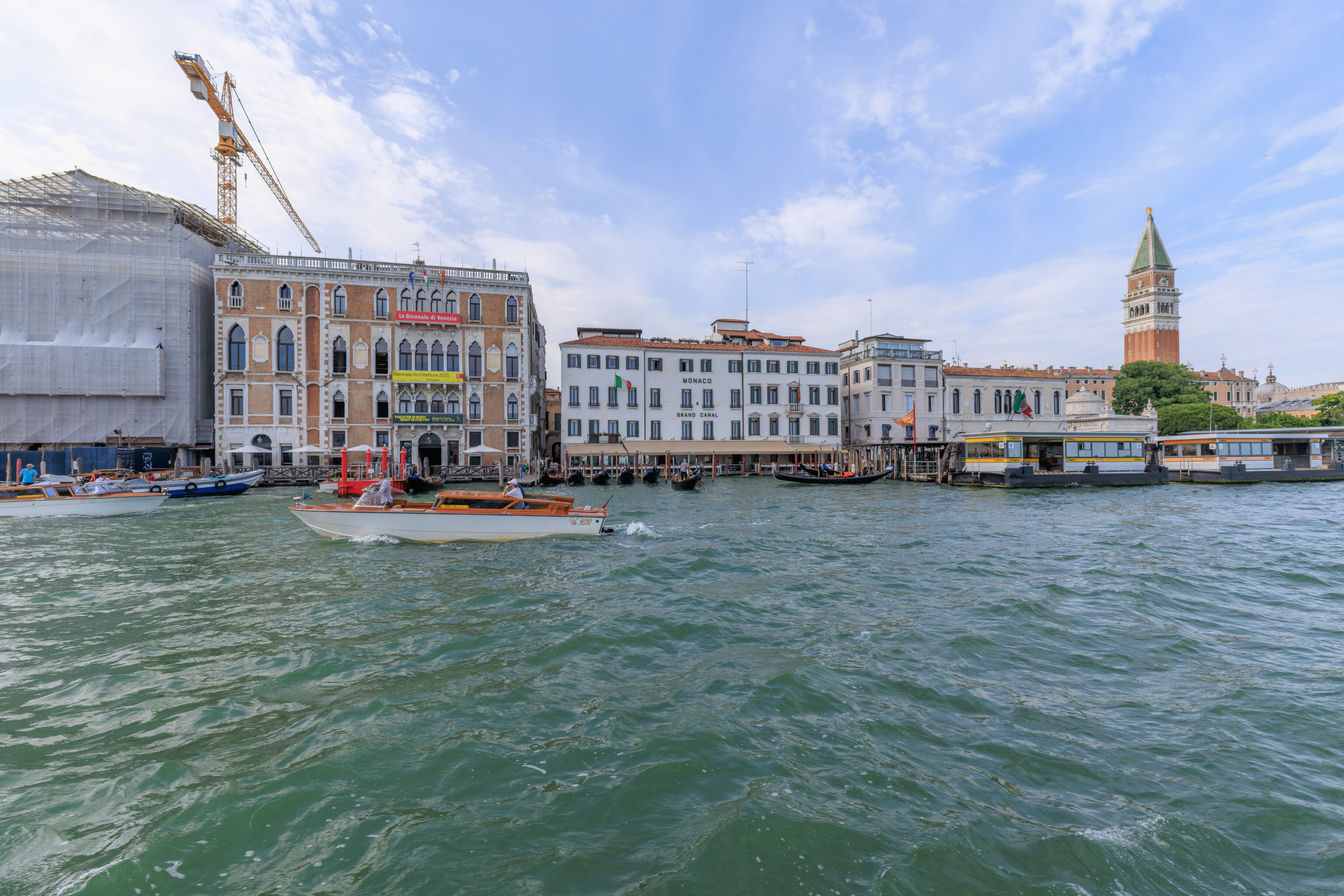
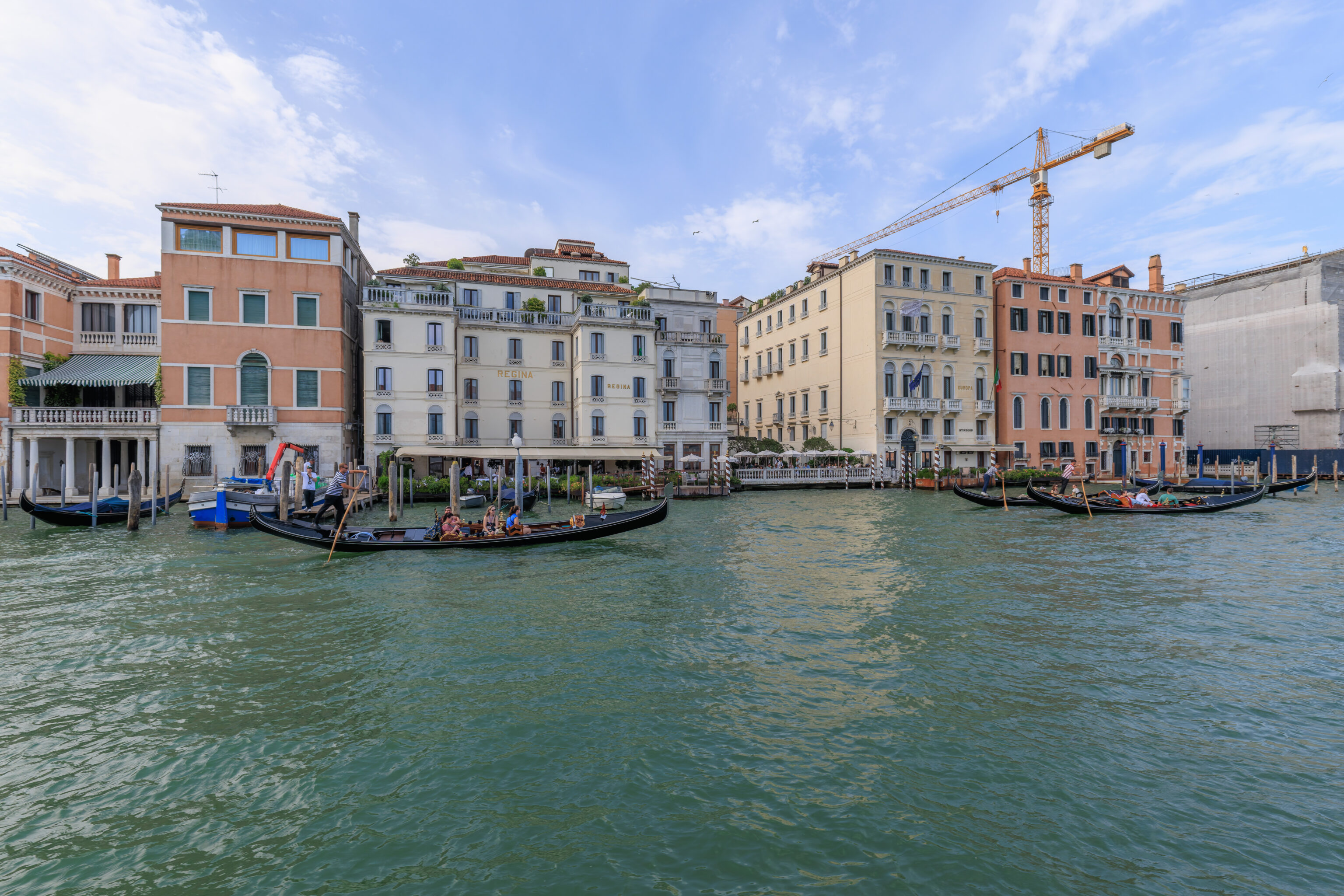
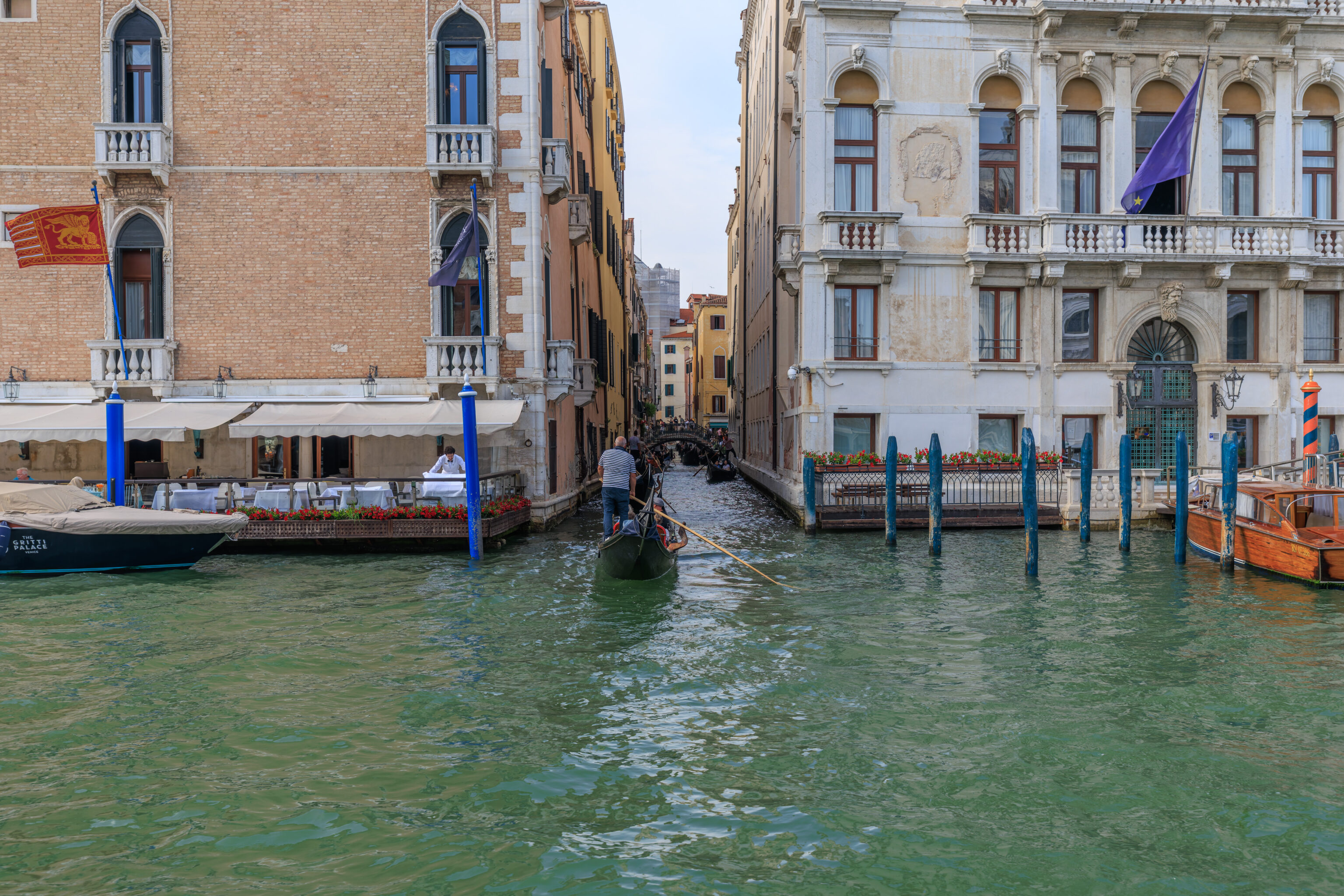
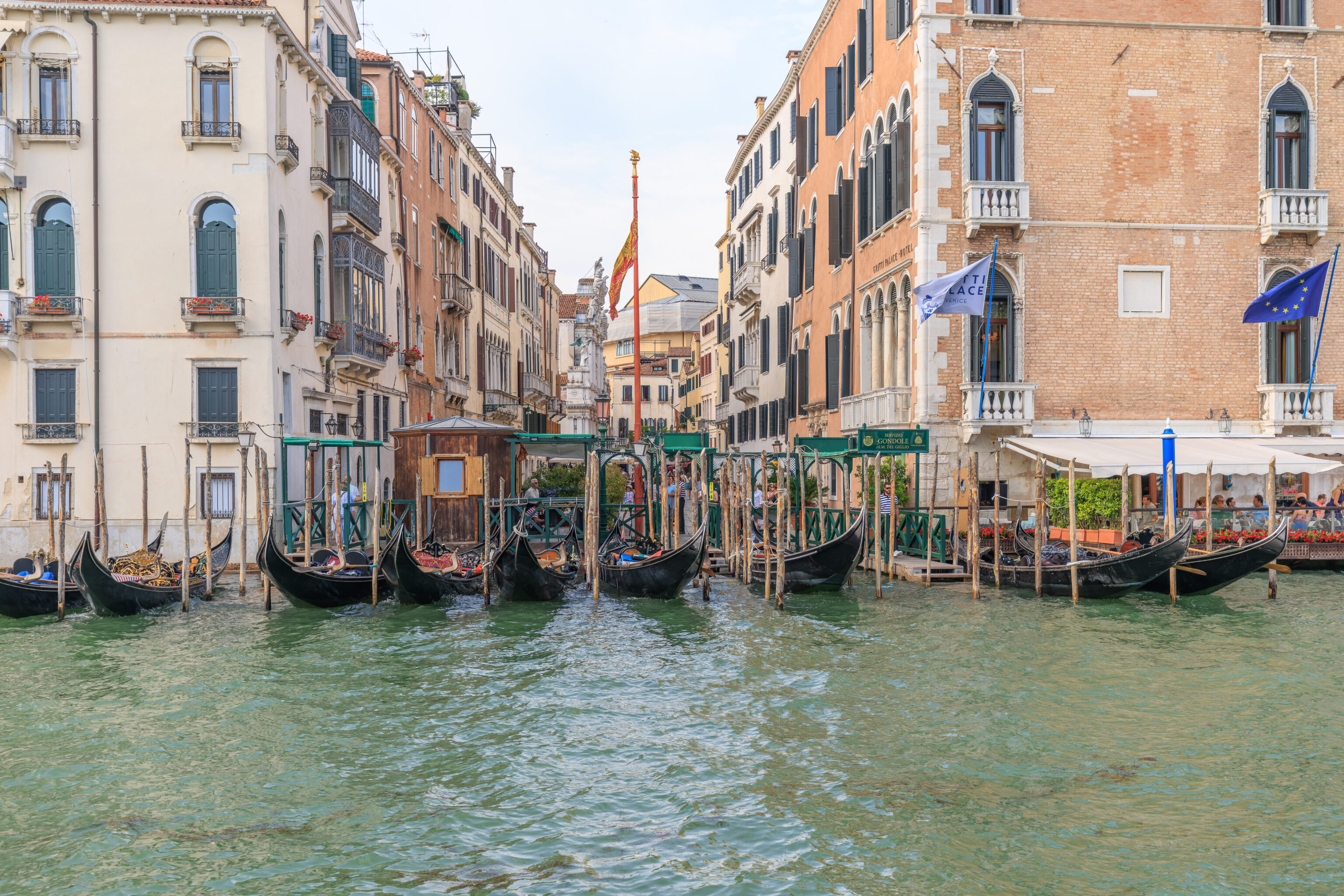
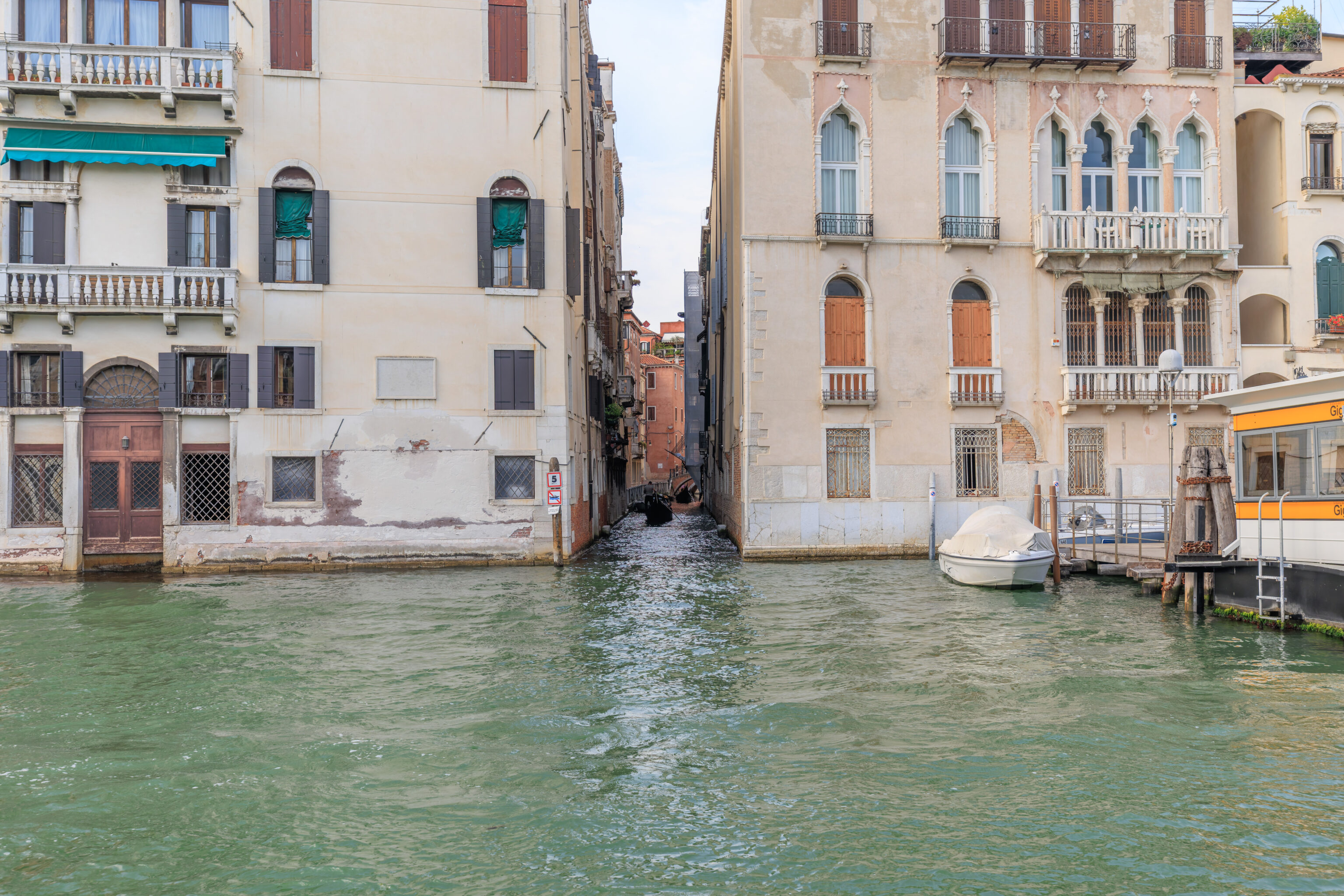
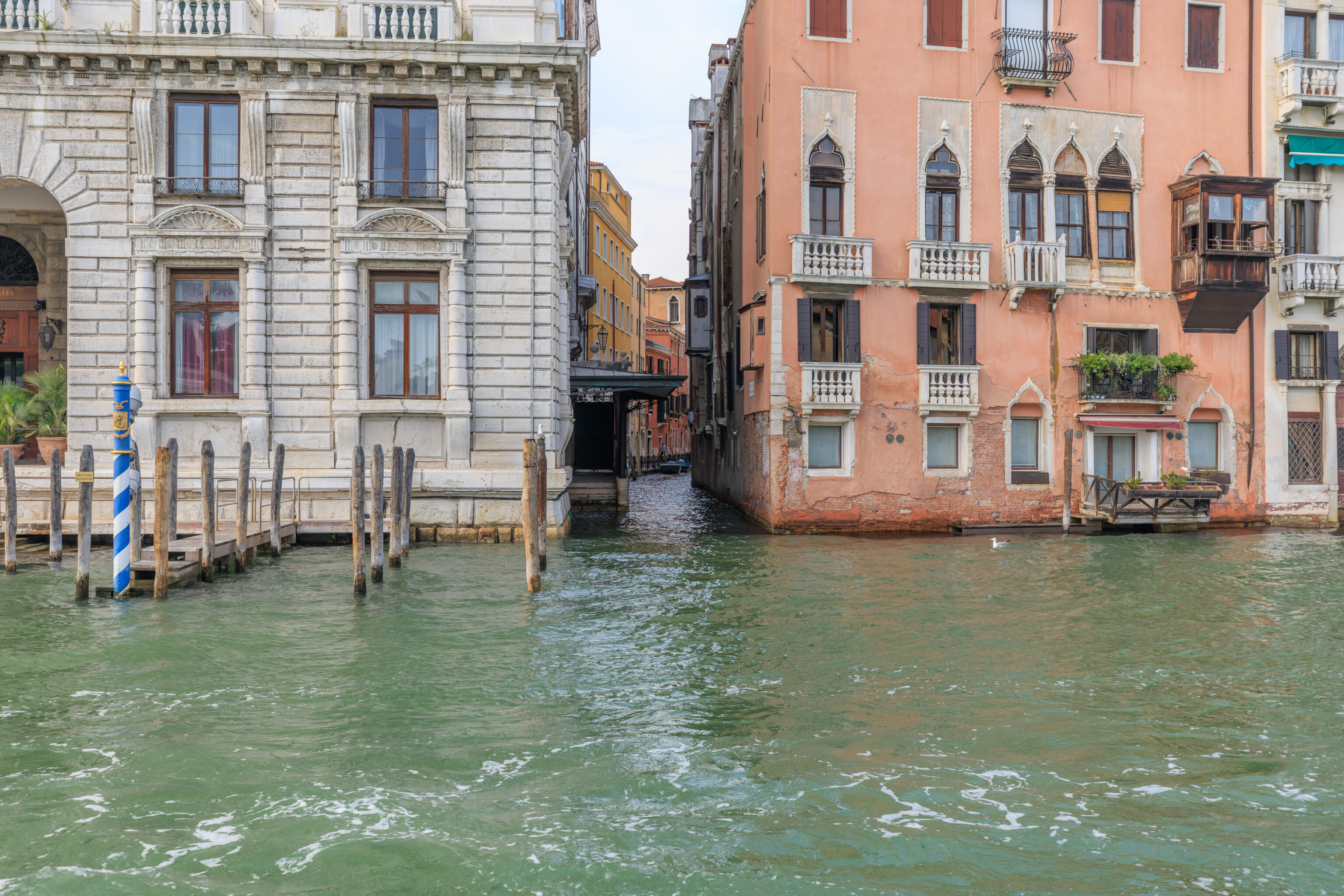
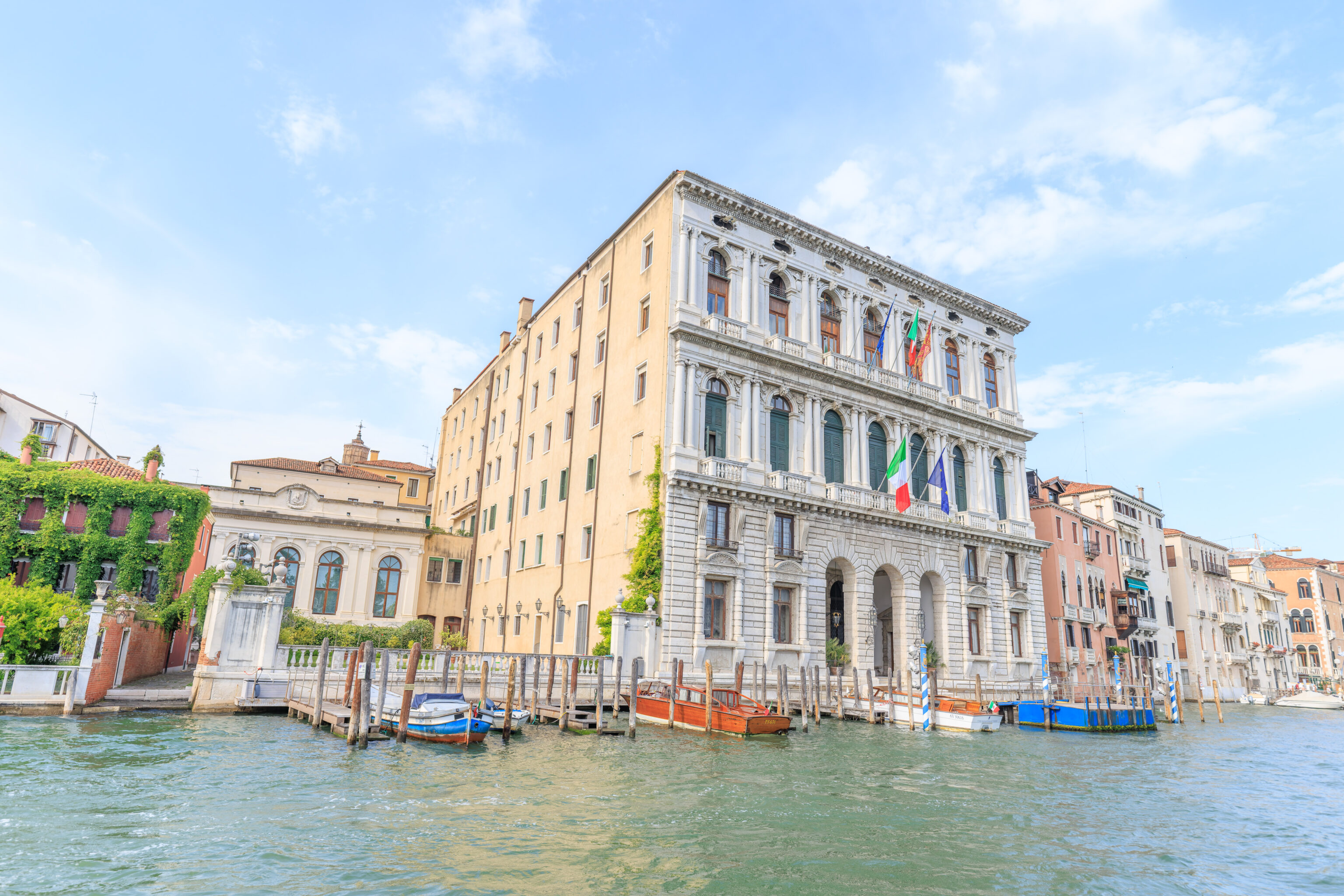
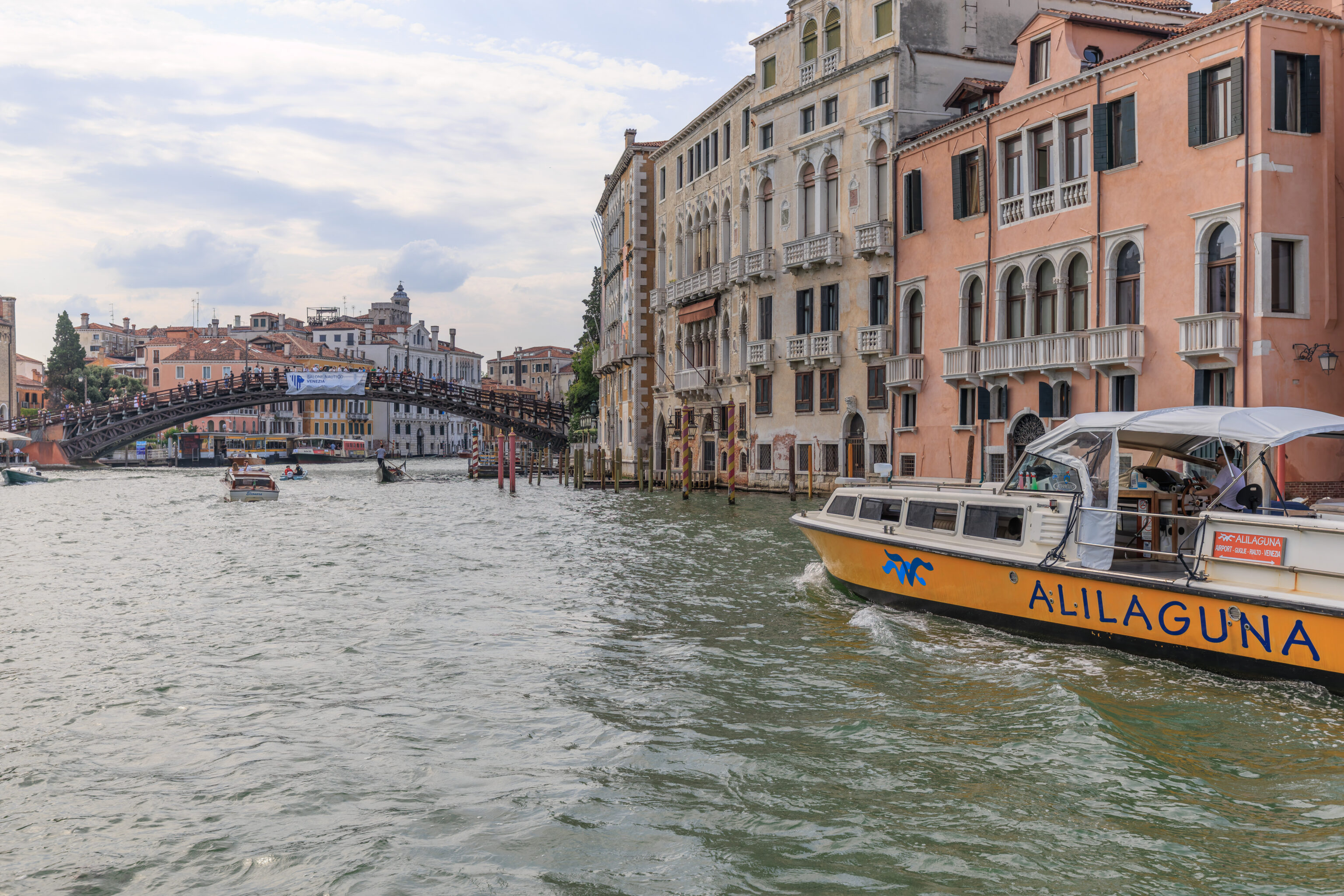
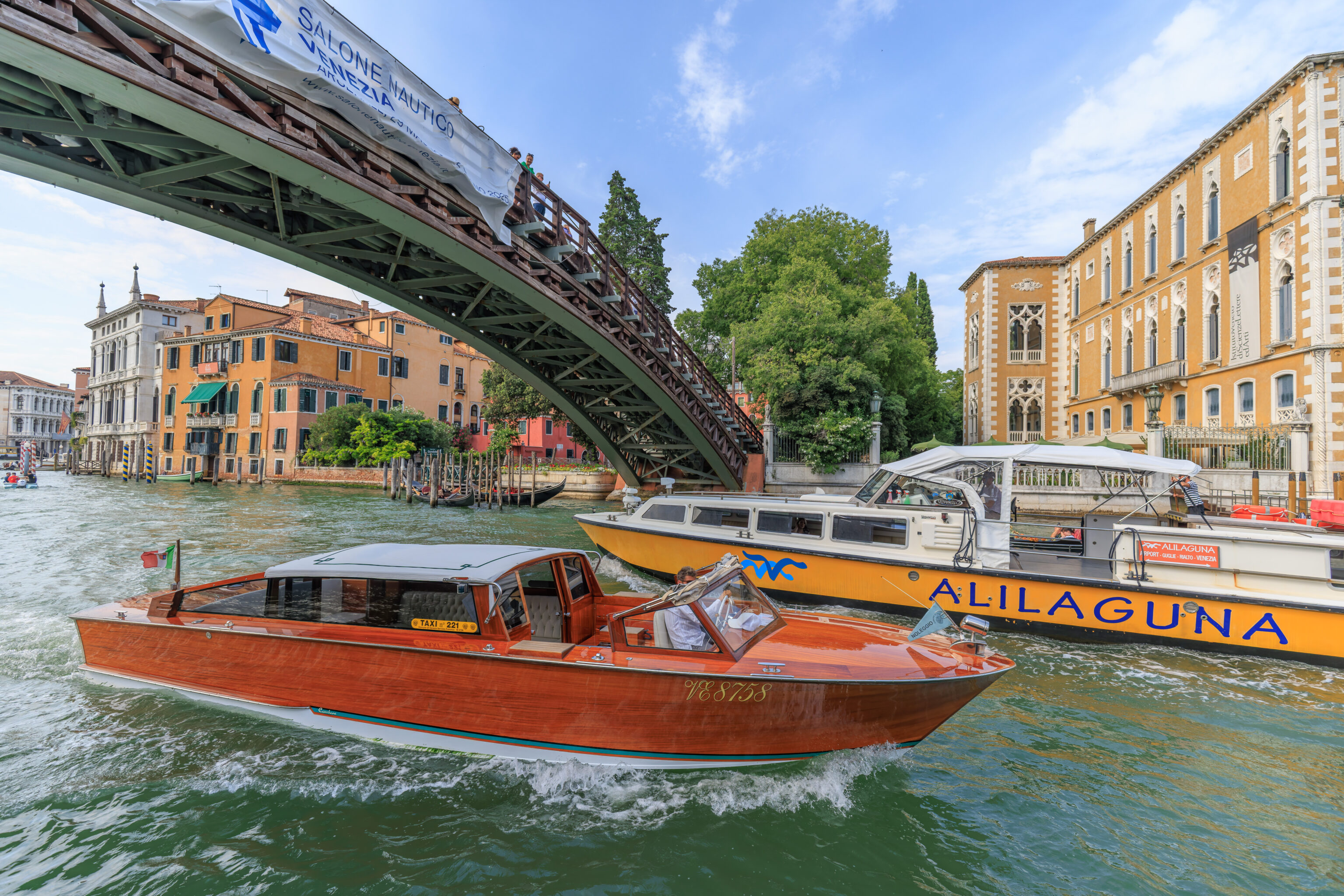
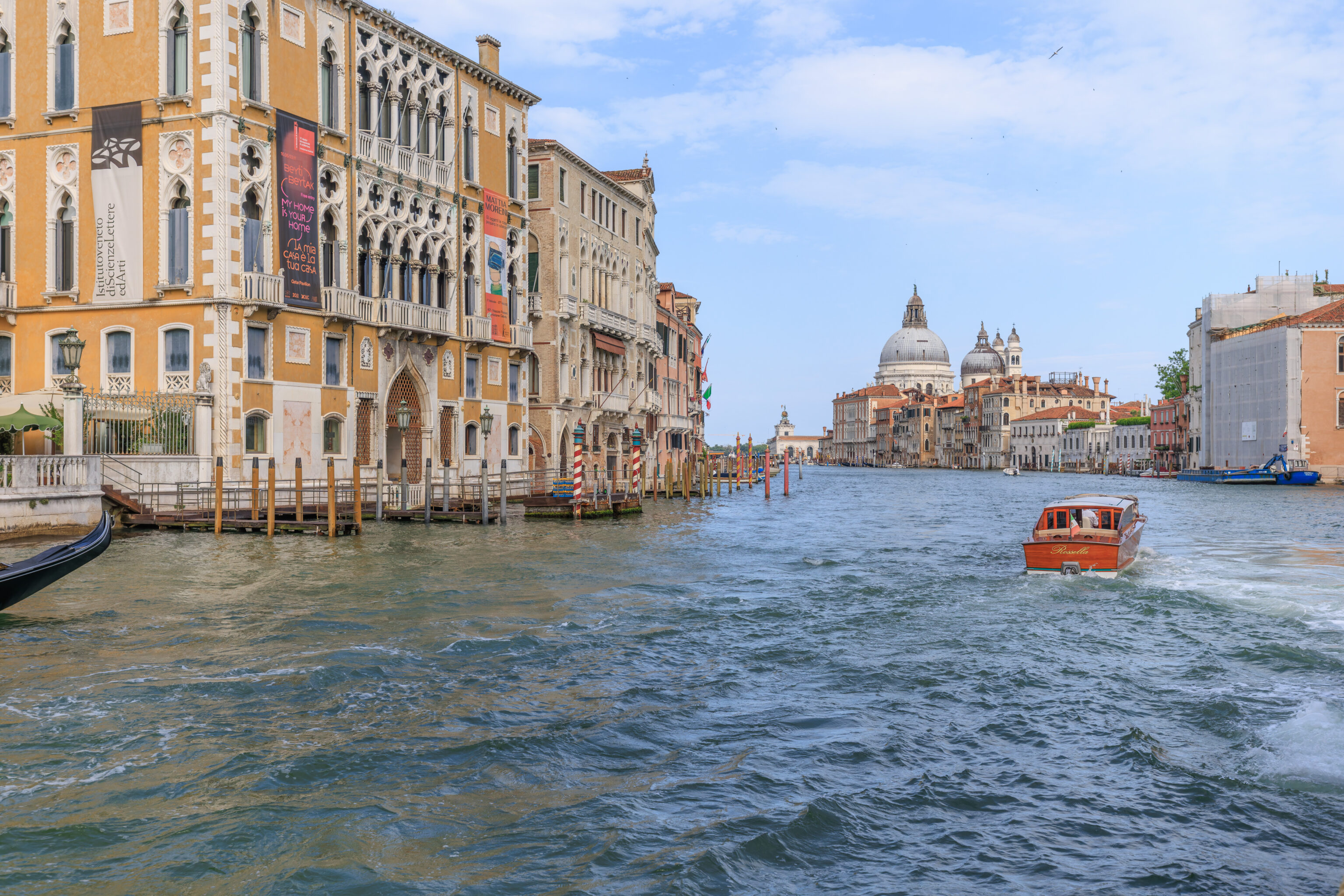
We enjoyed the view as the vaporetto moved through the canal.
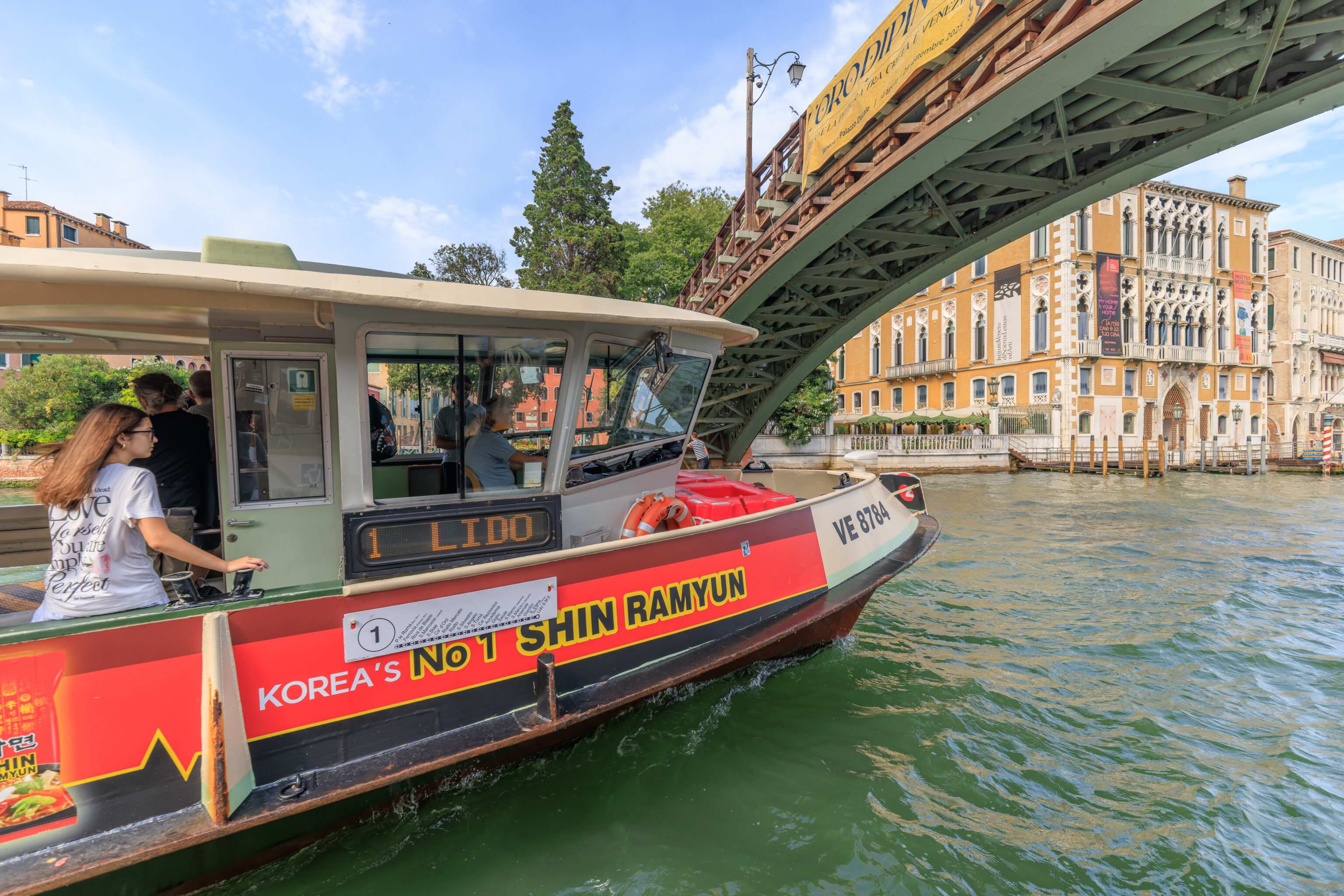
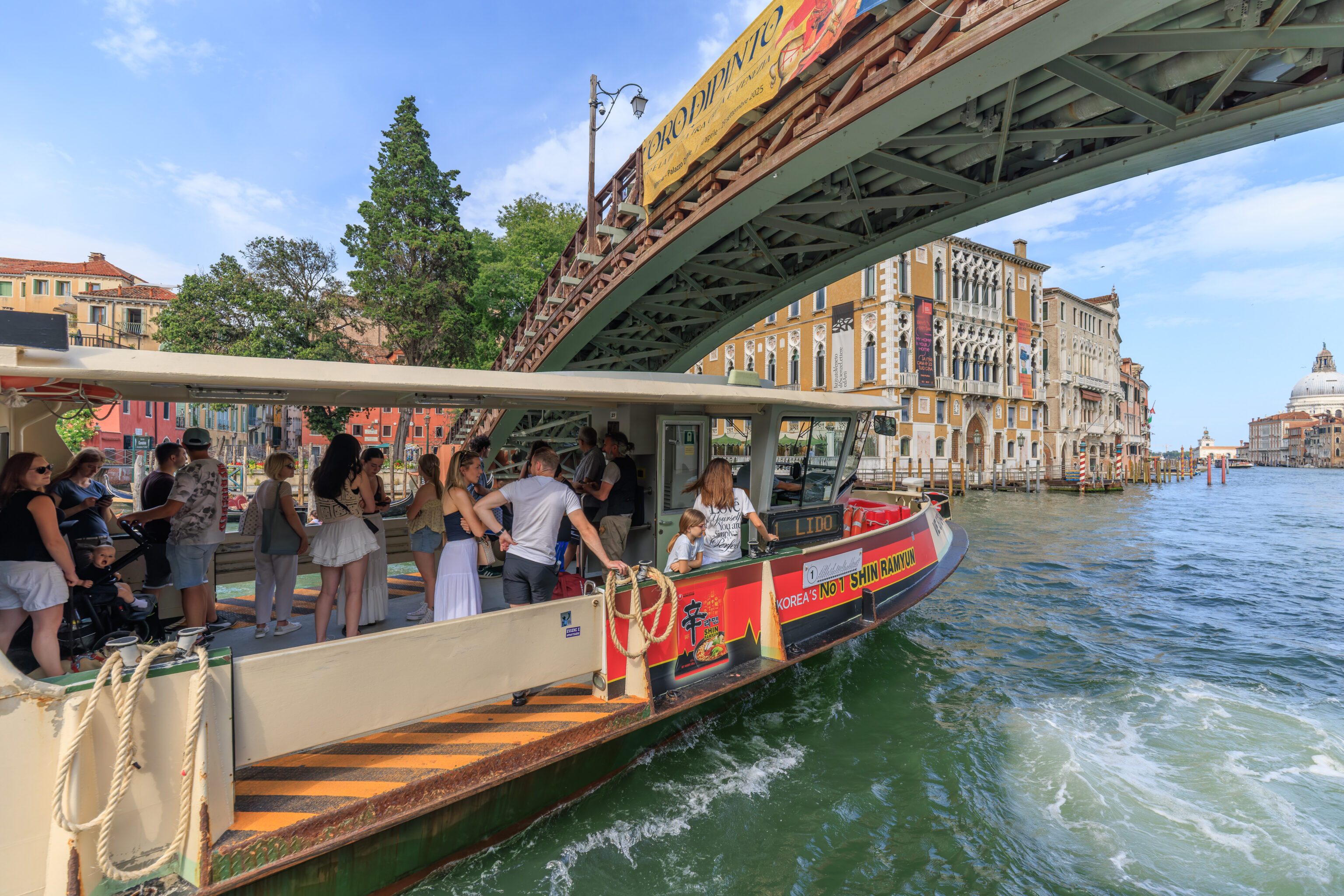
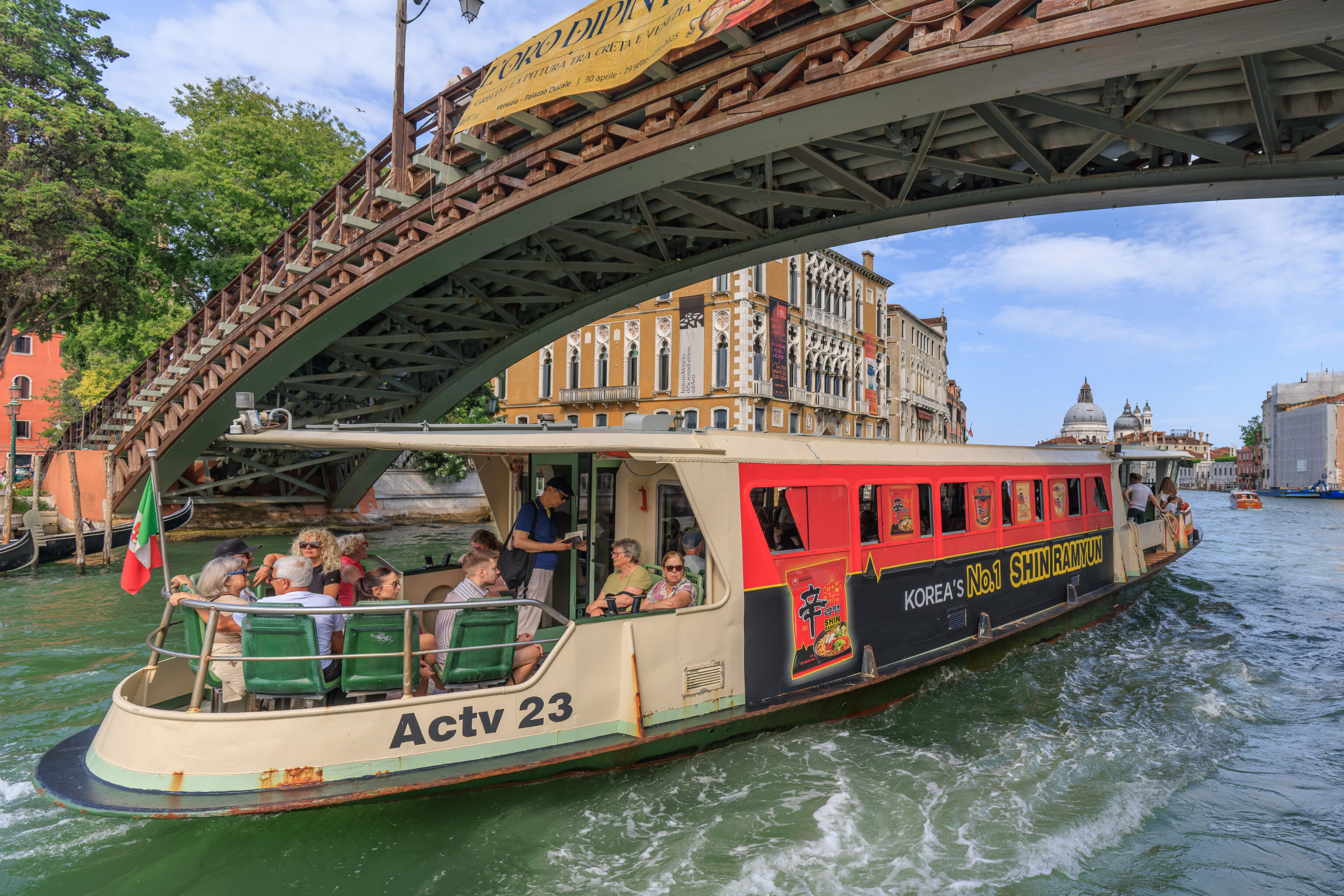
We once again spotted the Shin Ramyun boat! It is currently operating on Line 1. We’re not sure if it always operates that route? We did notice that the vaporettos like the one we are on as well as the Shin Ramyun boat are a bit larger than the ones that go to Murano.
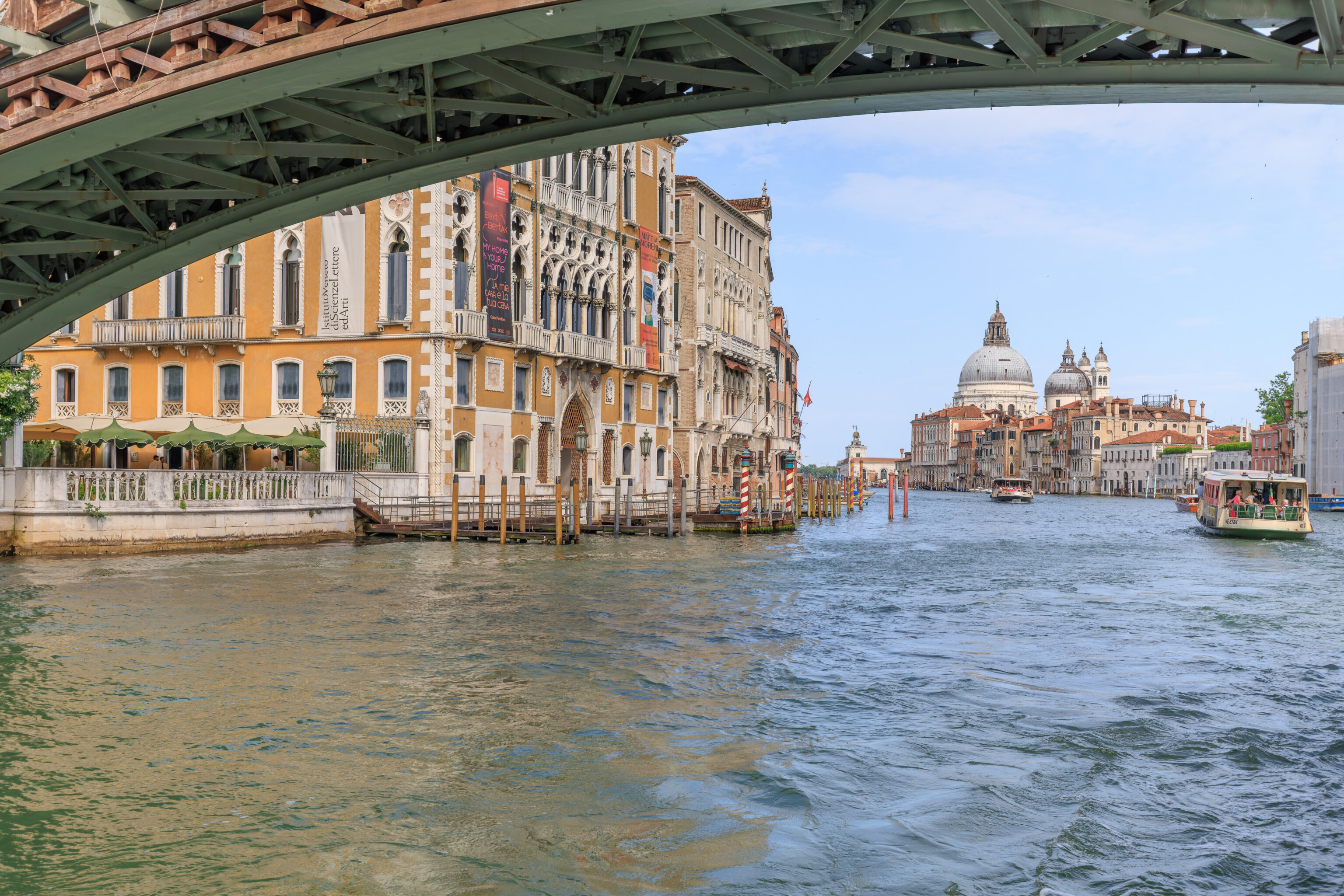
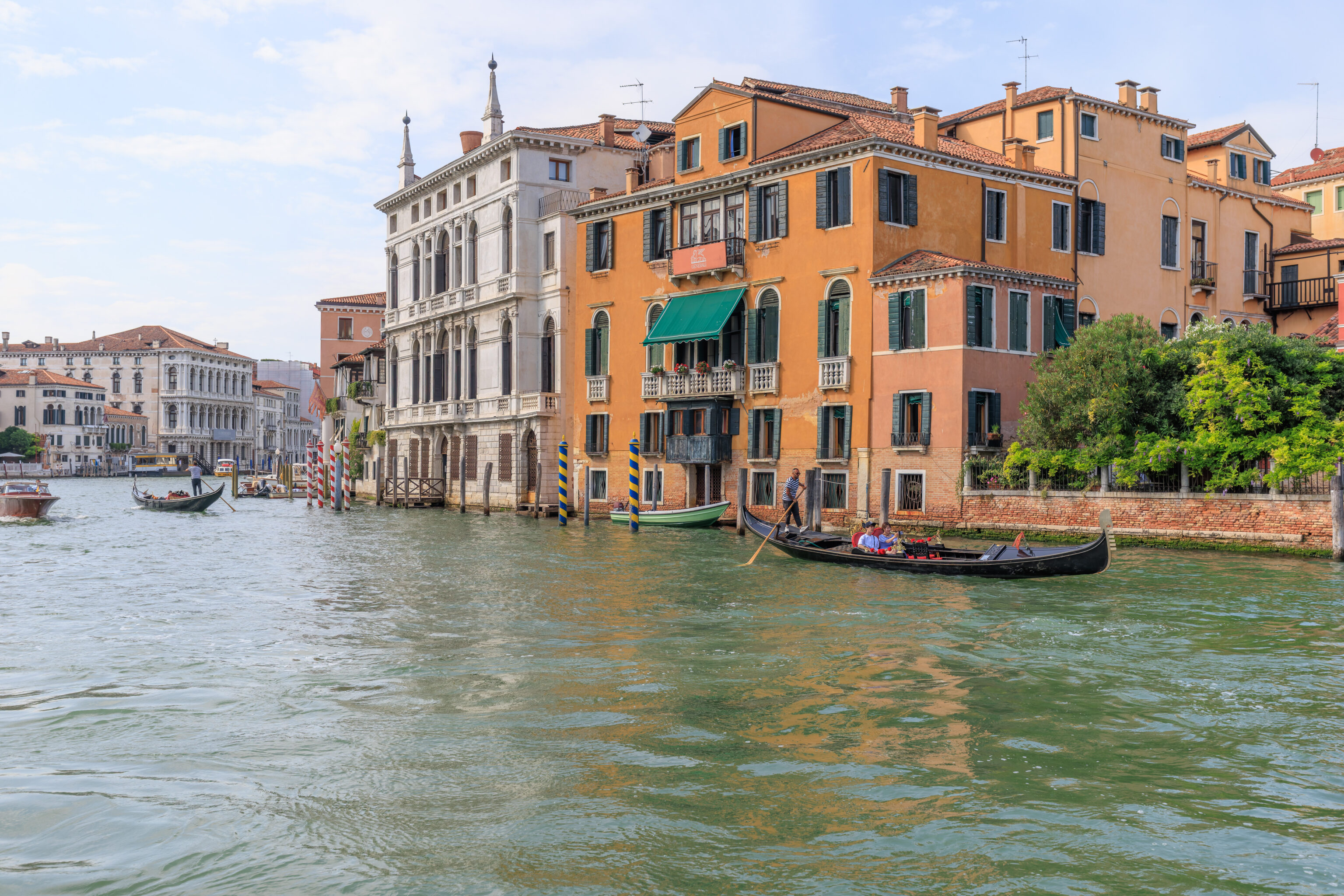
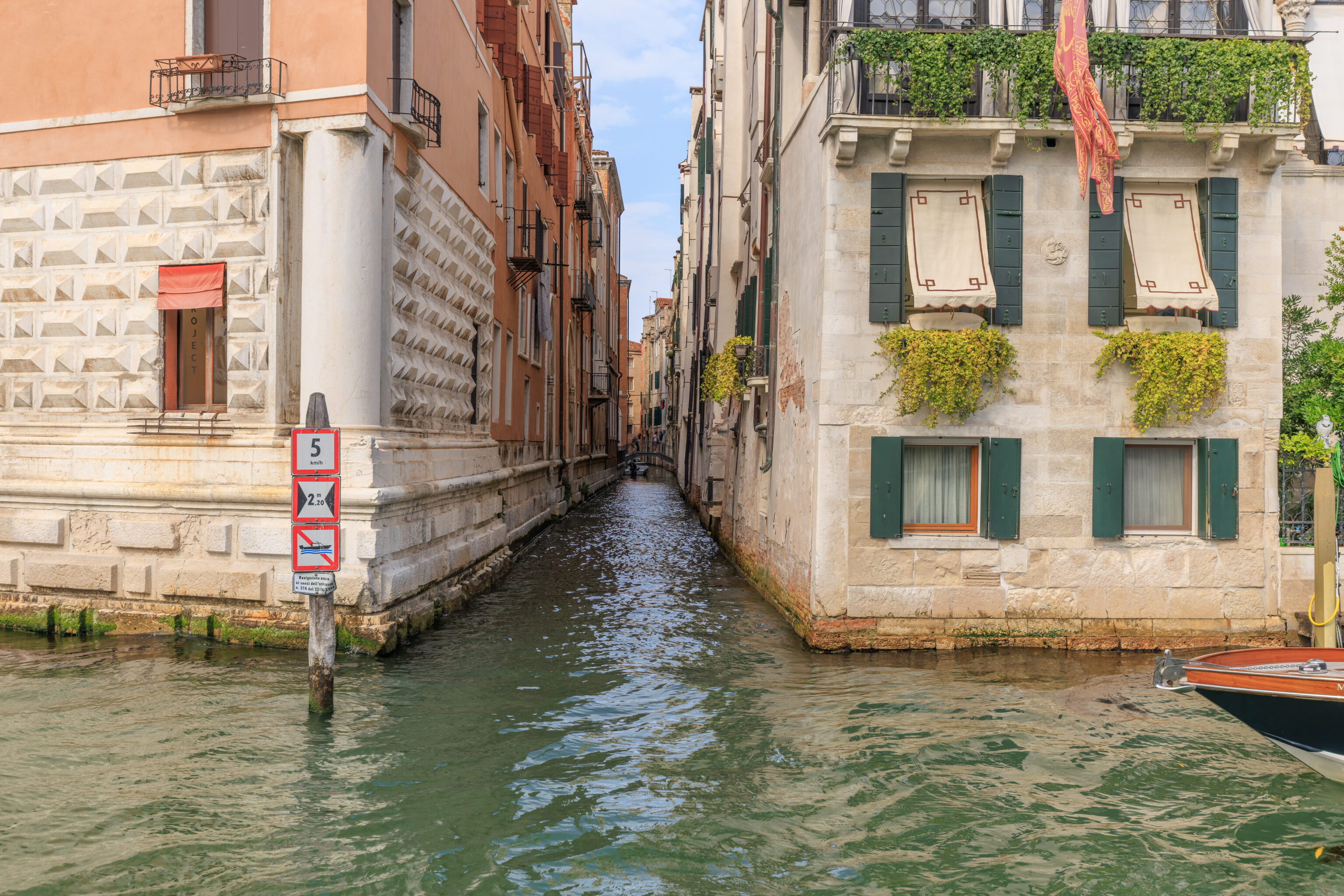
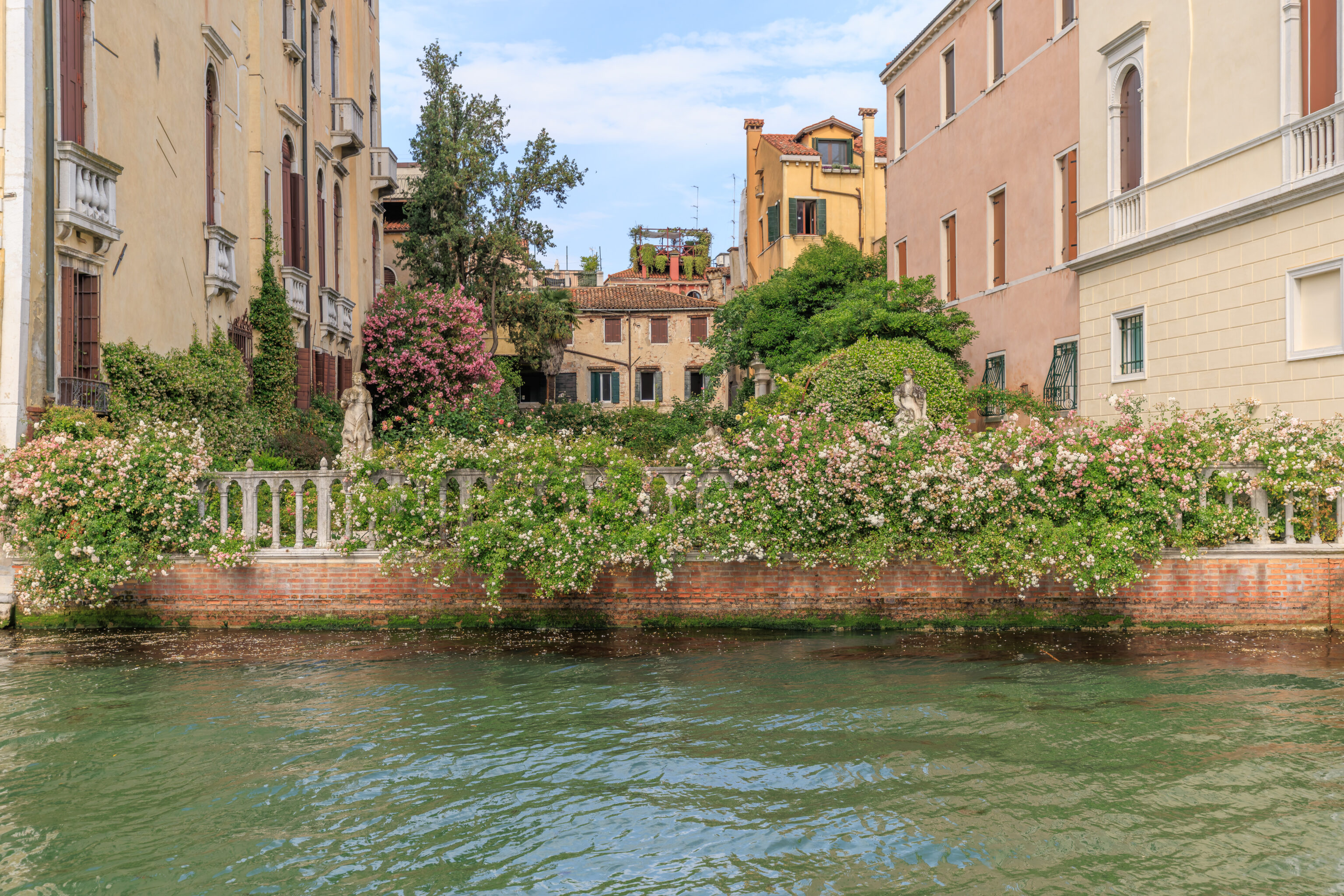
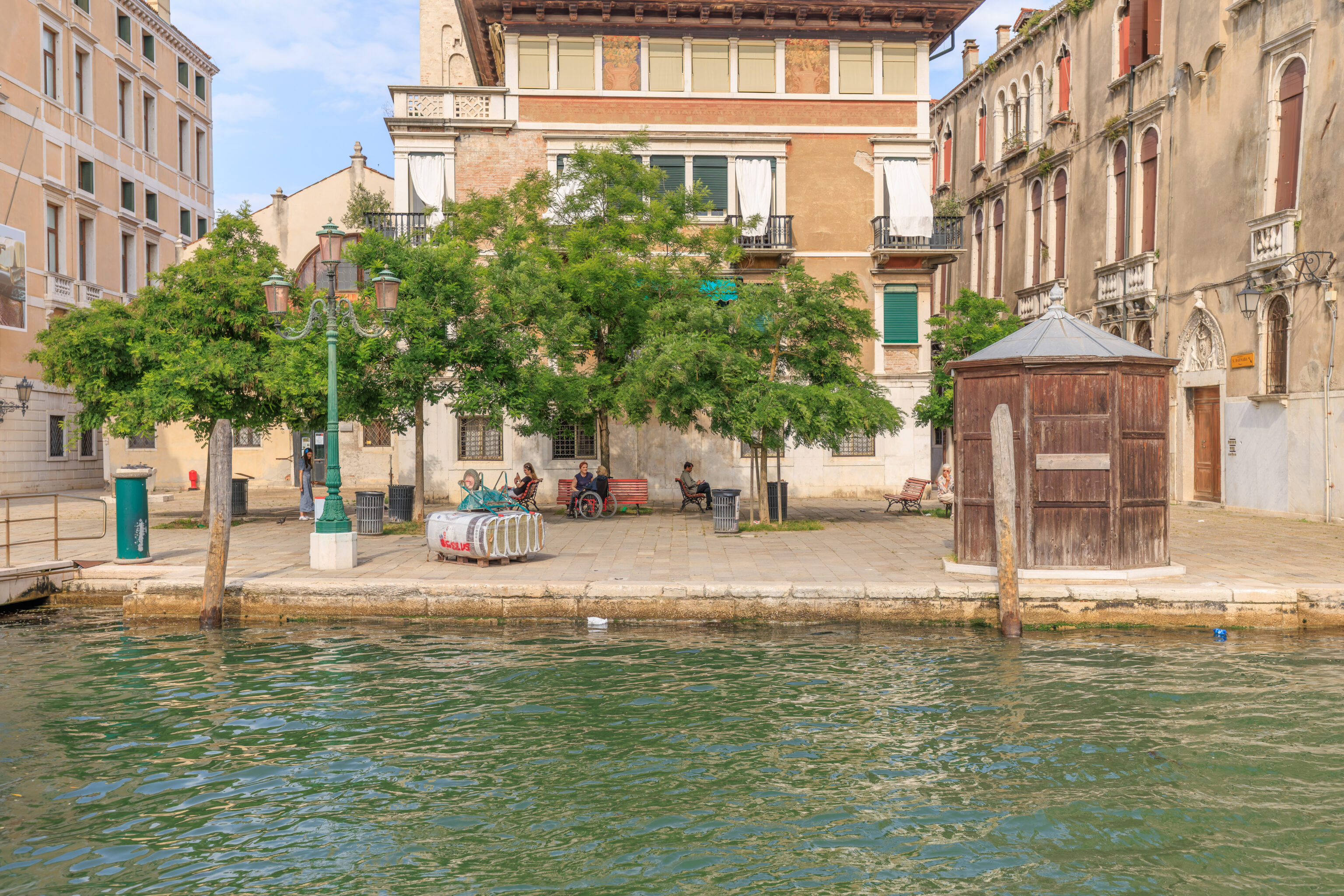
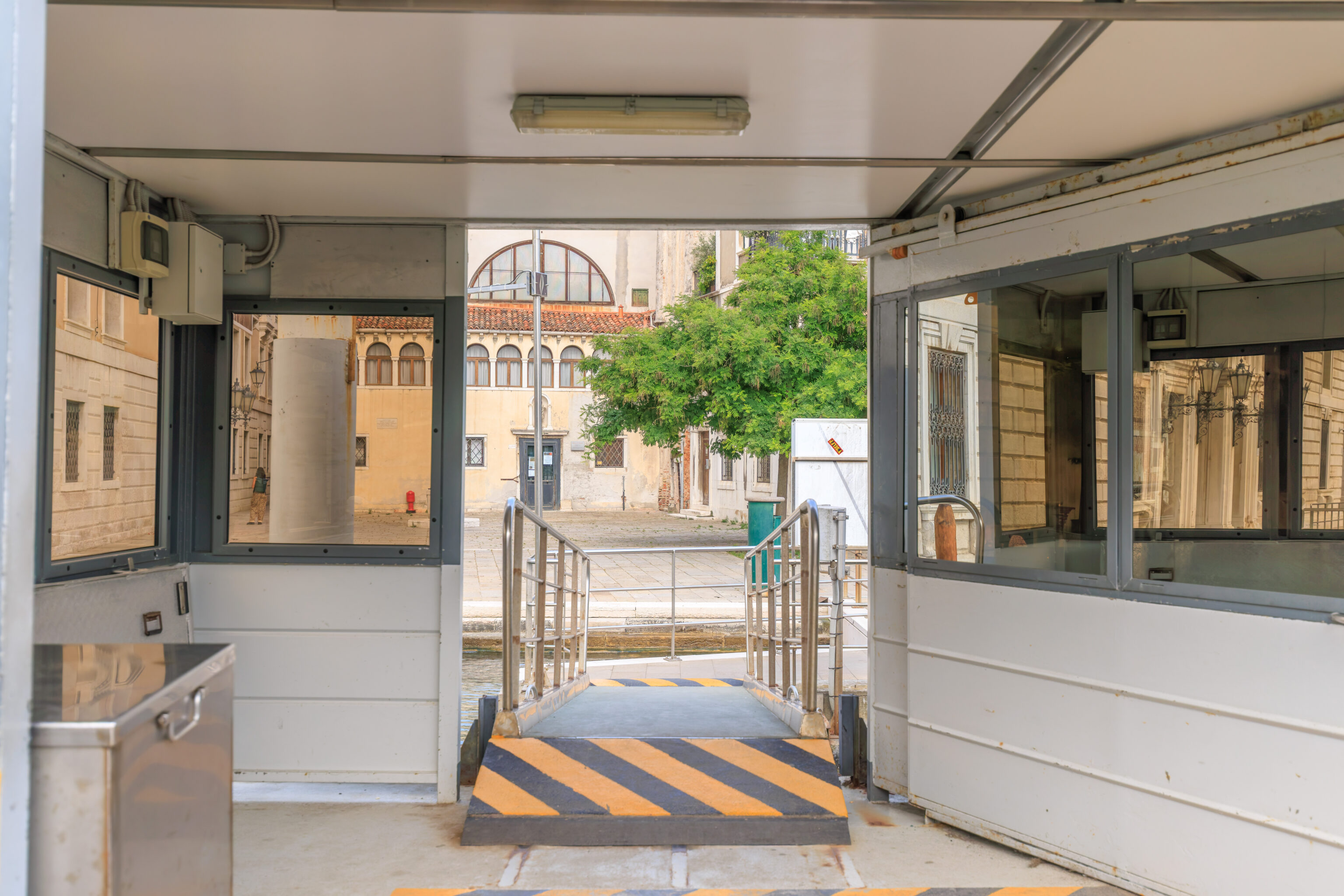
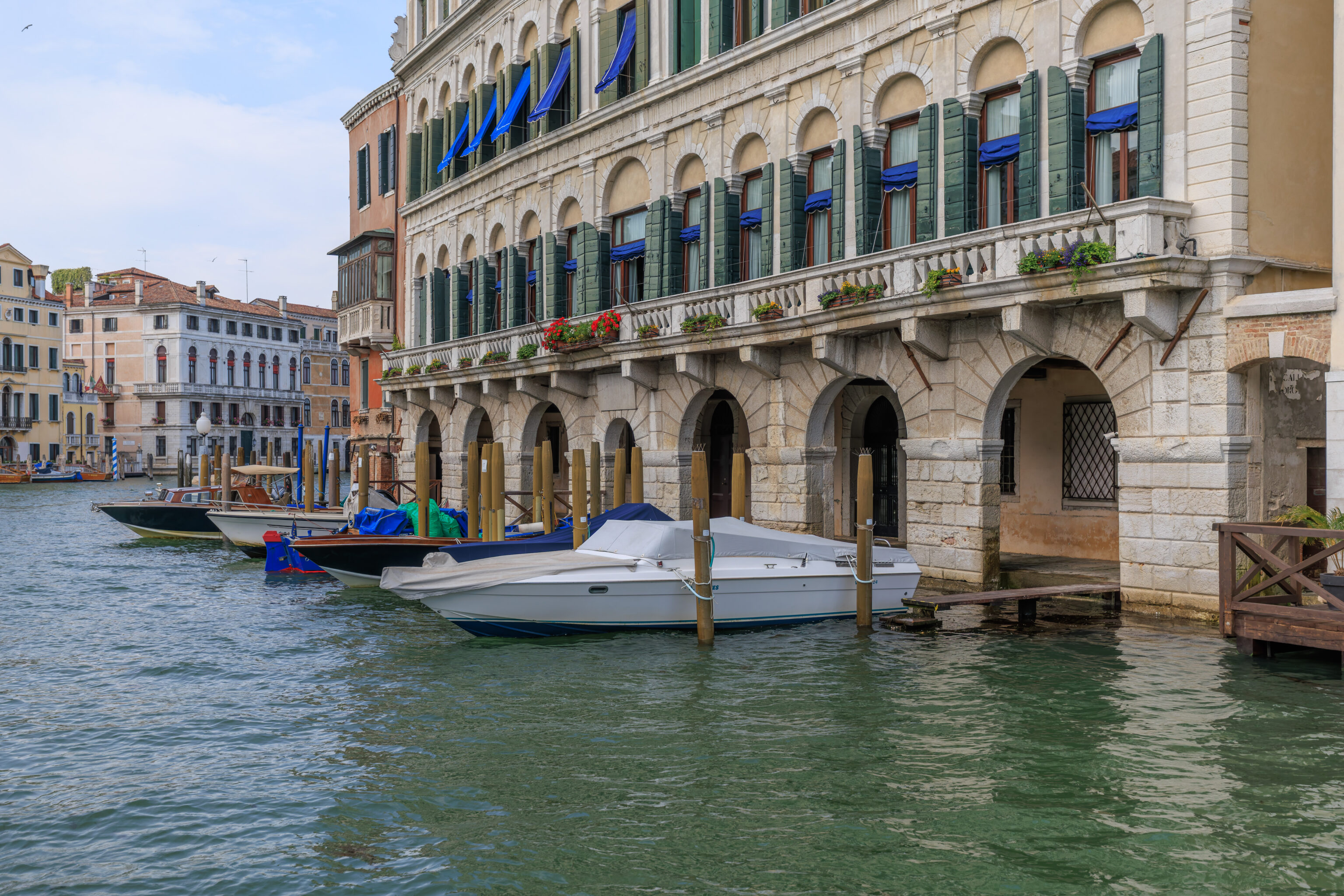
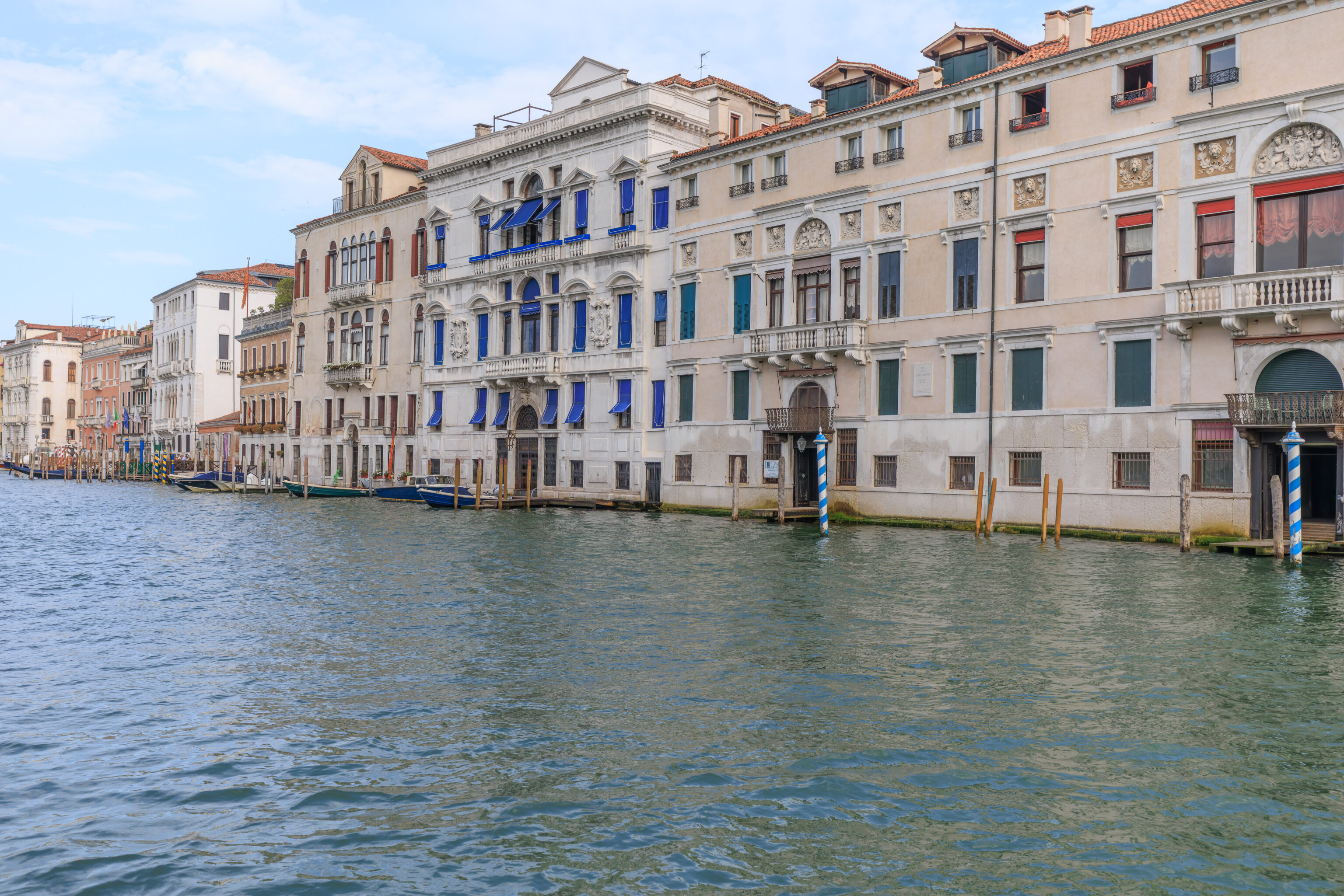
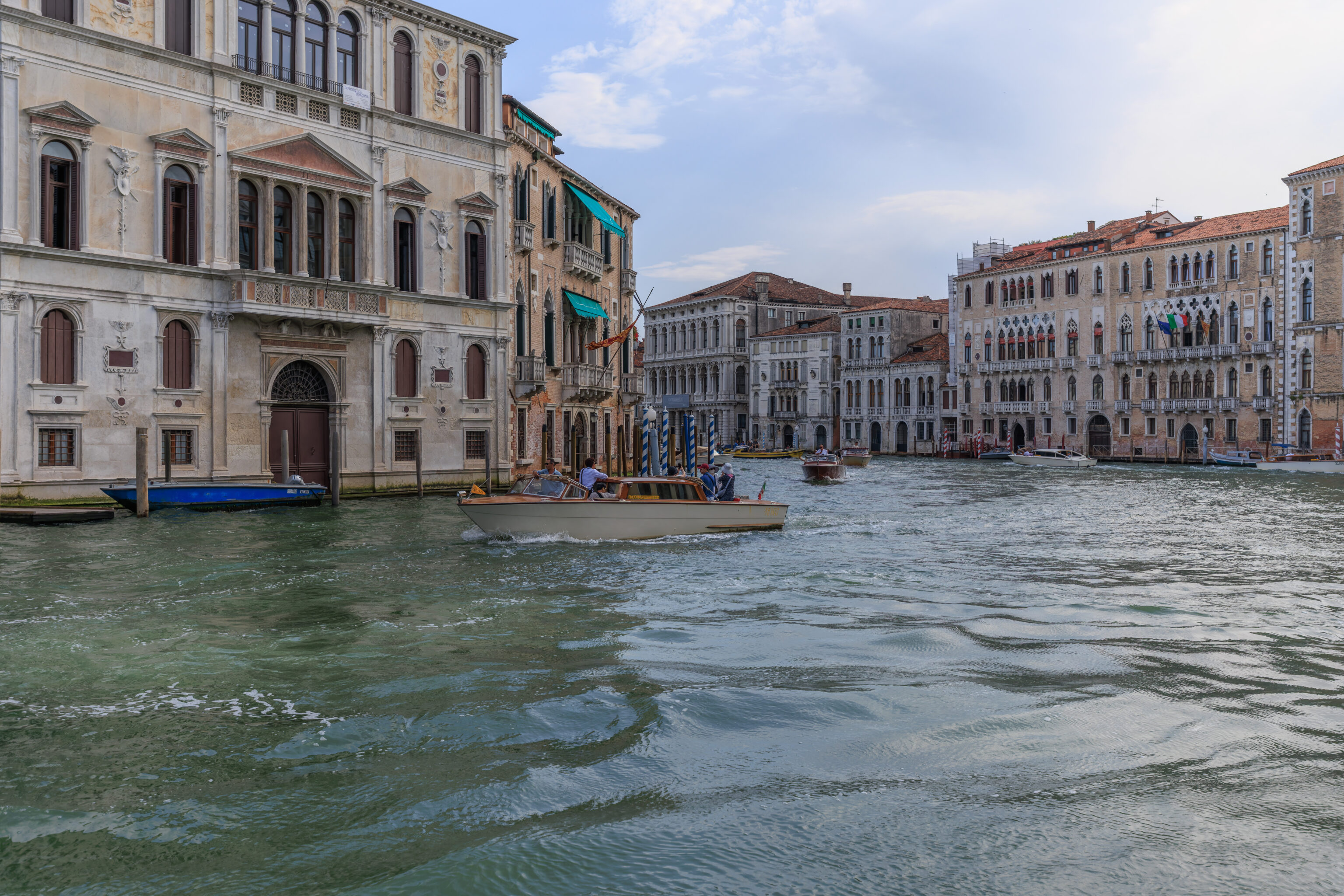
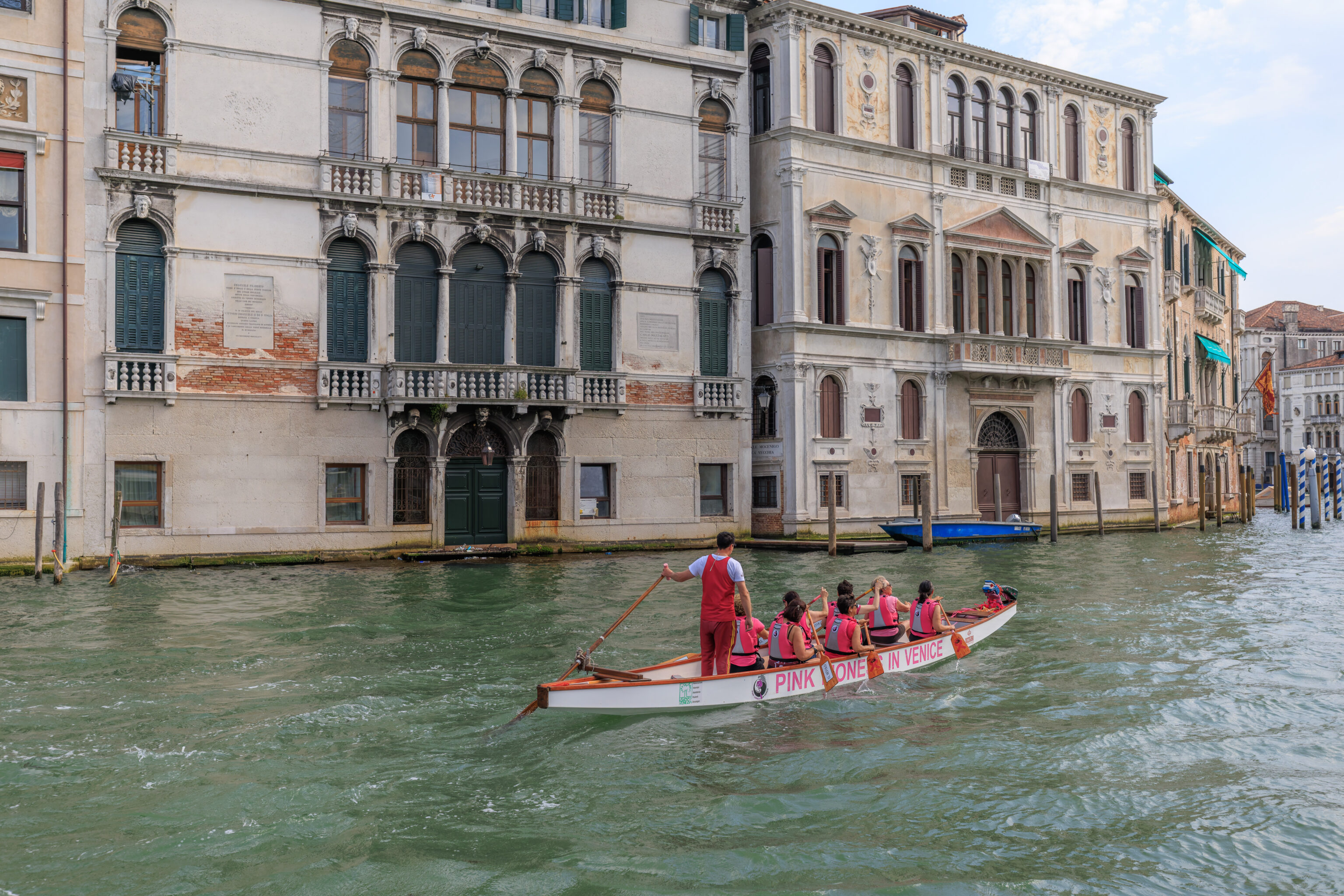
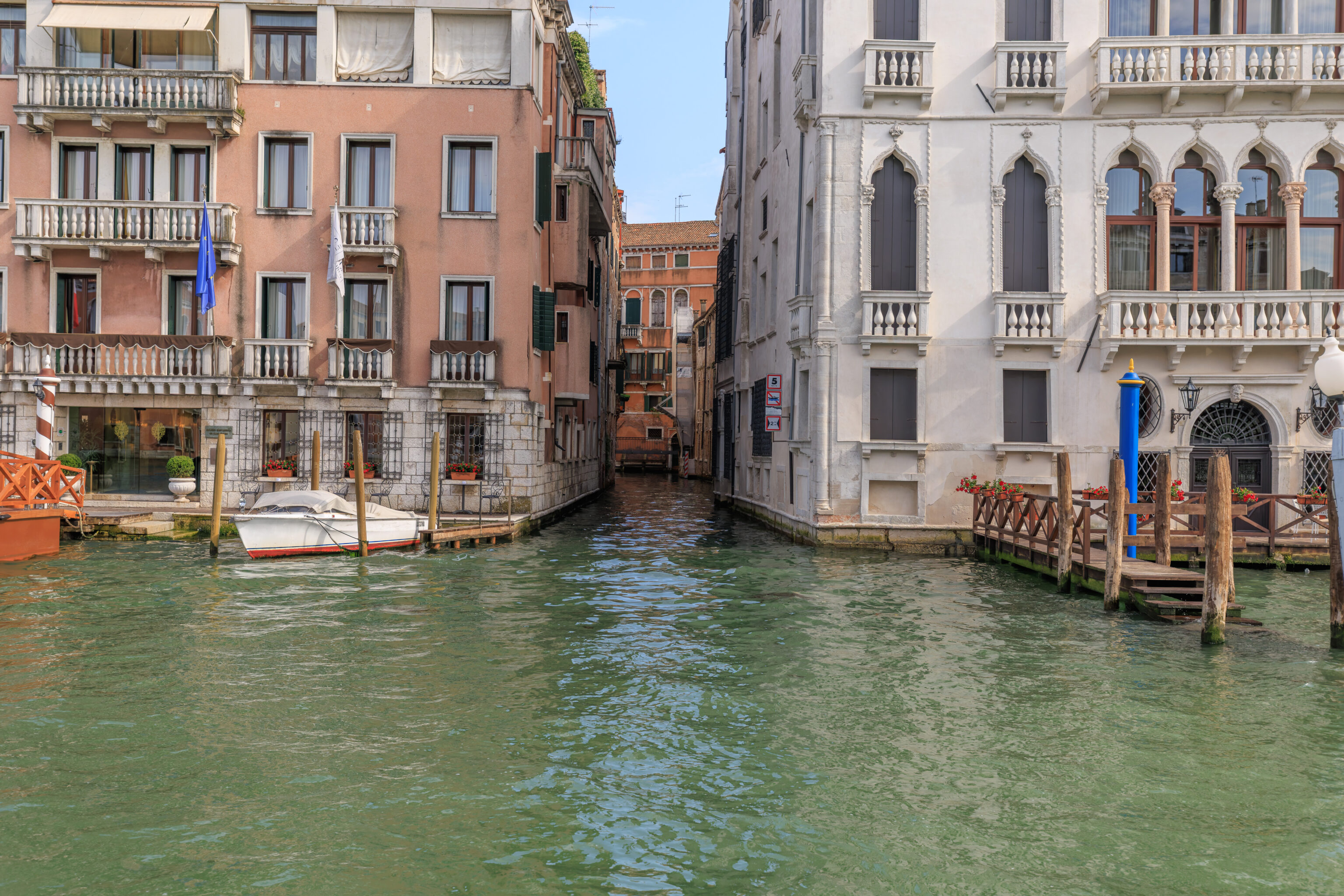
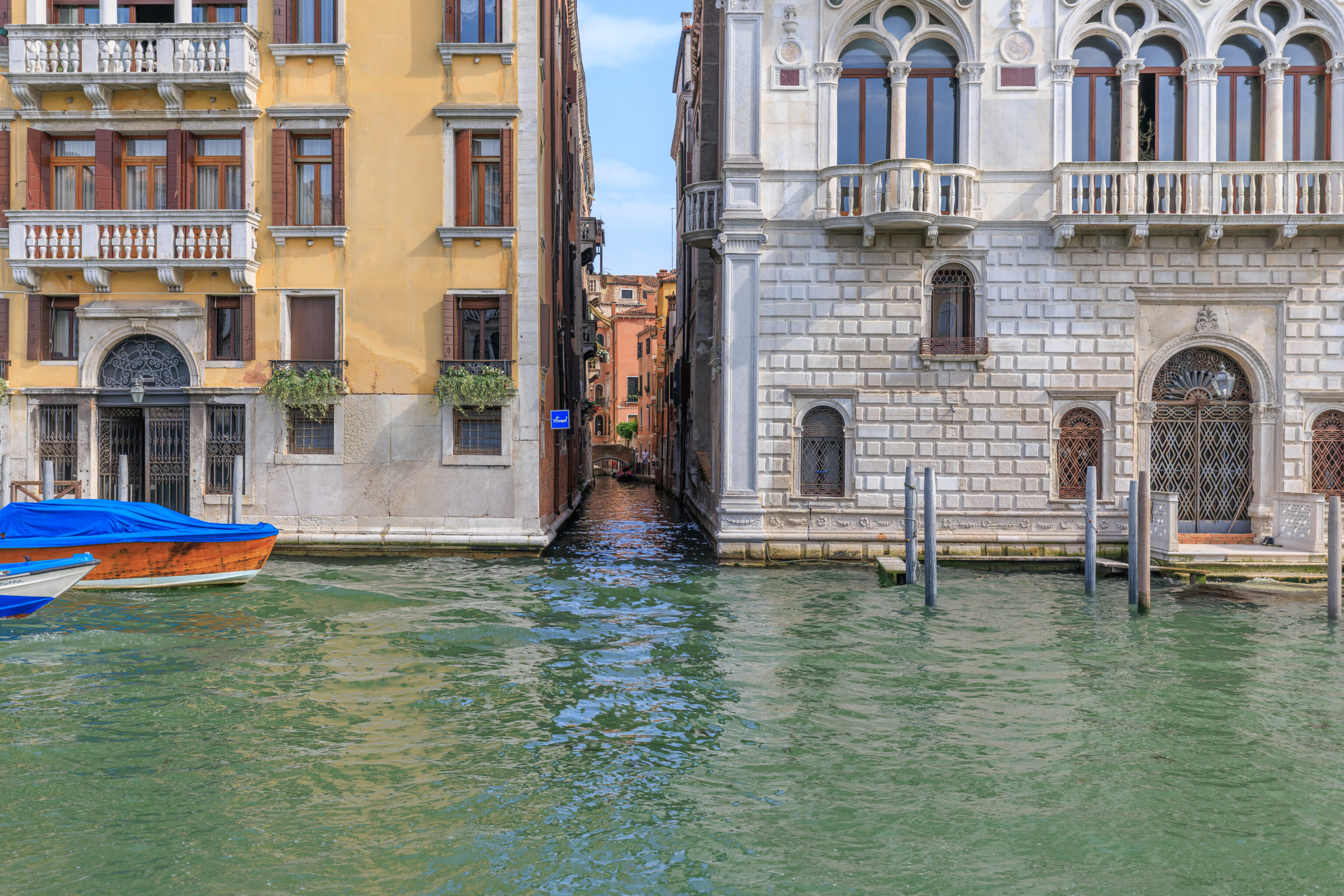
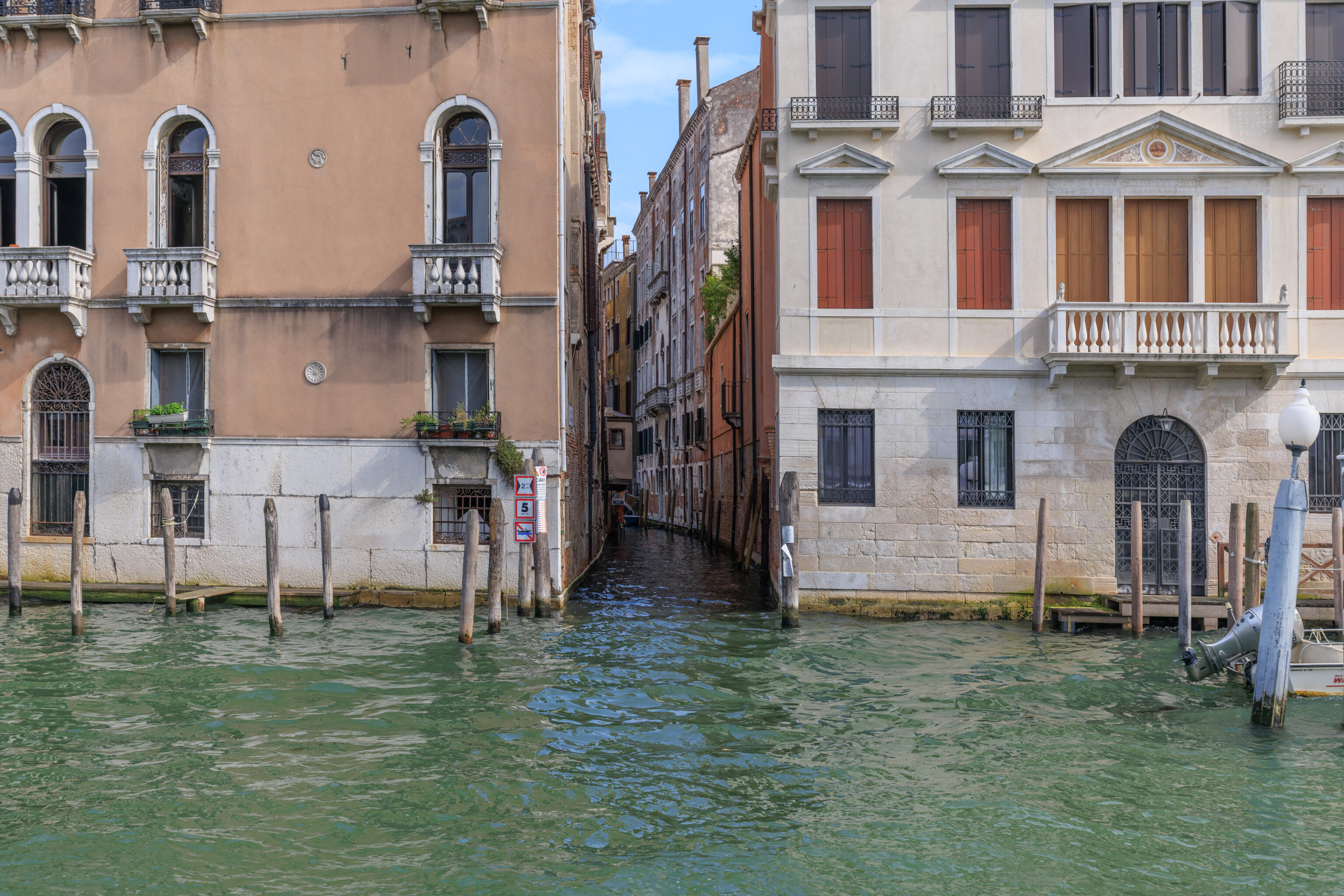
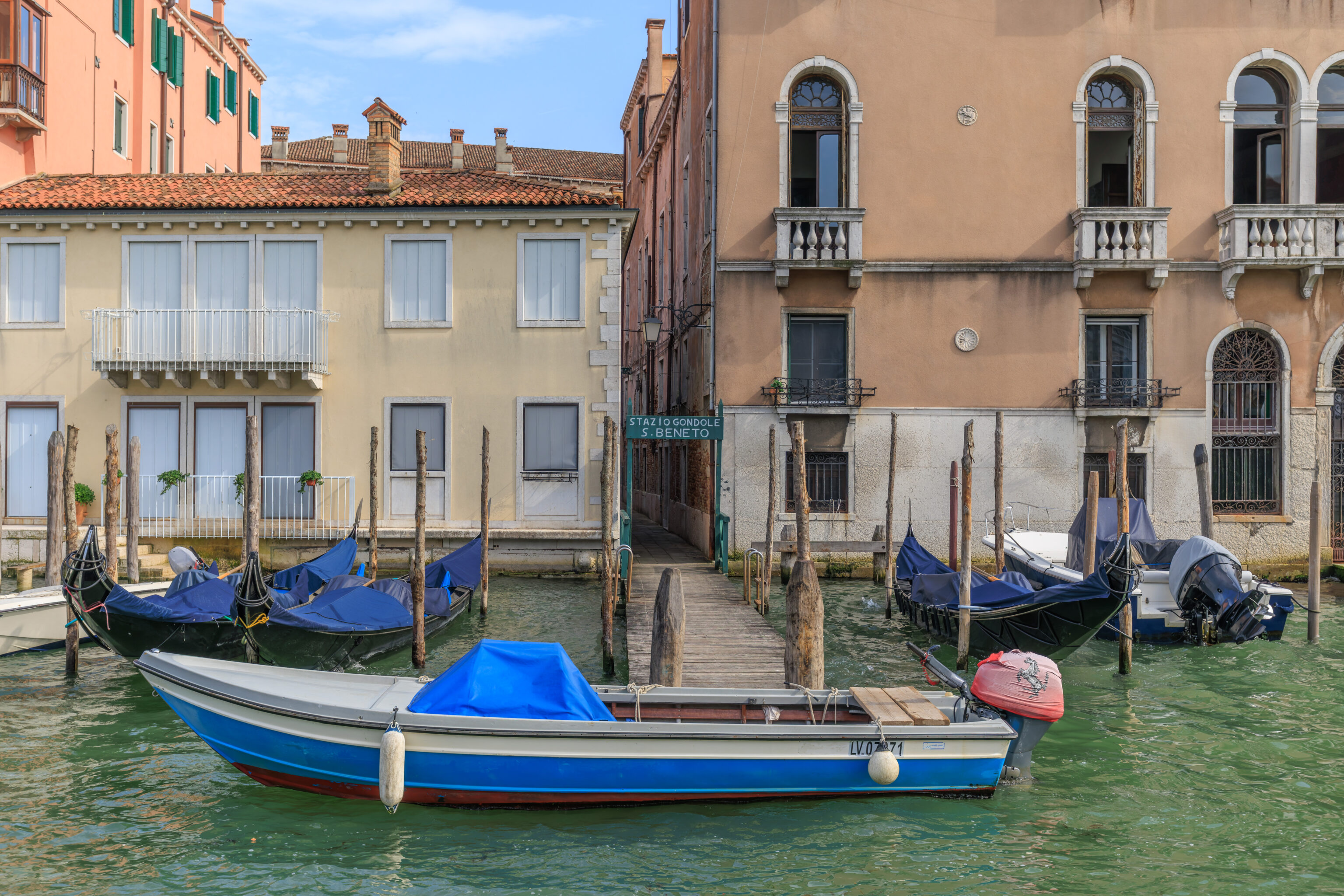
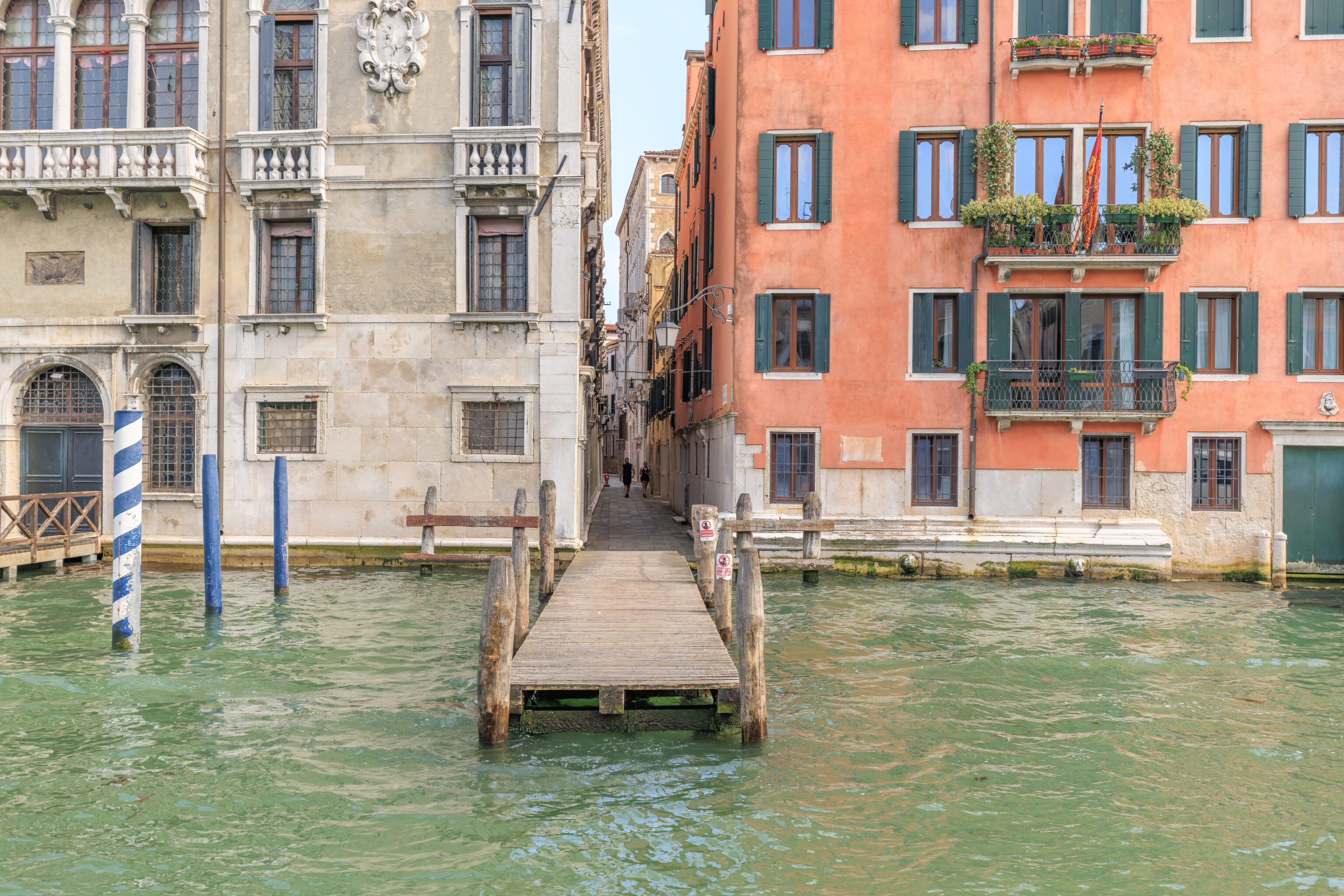
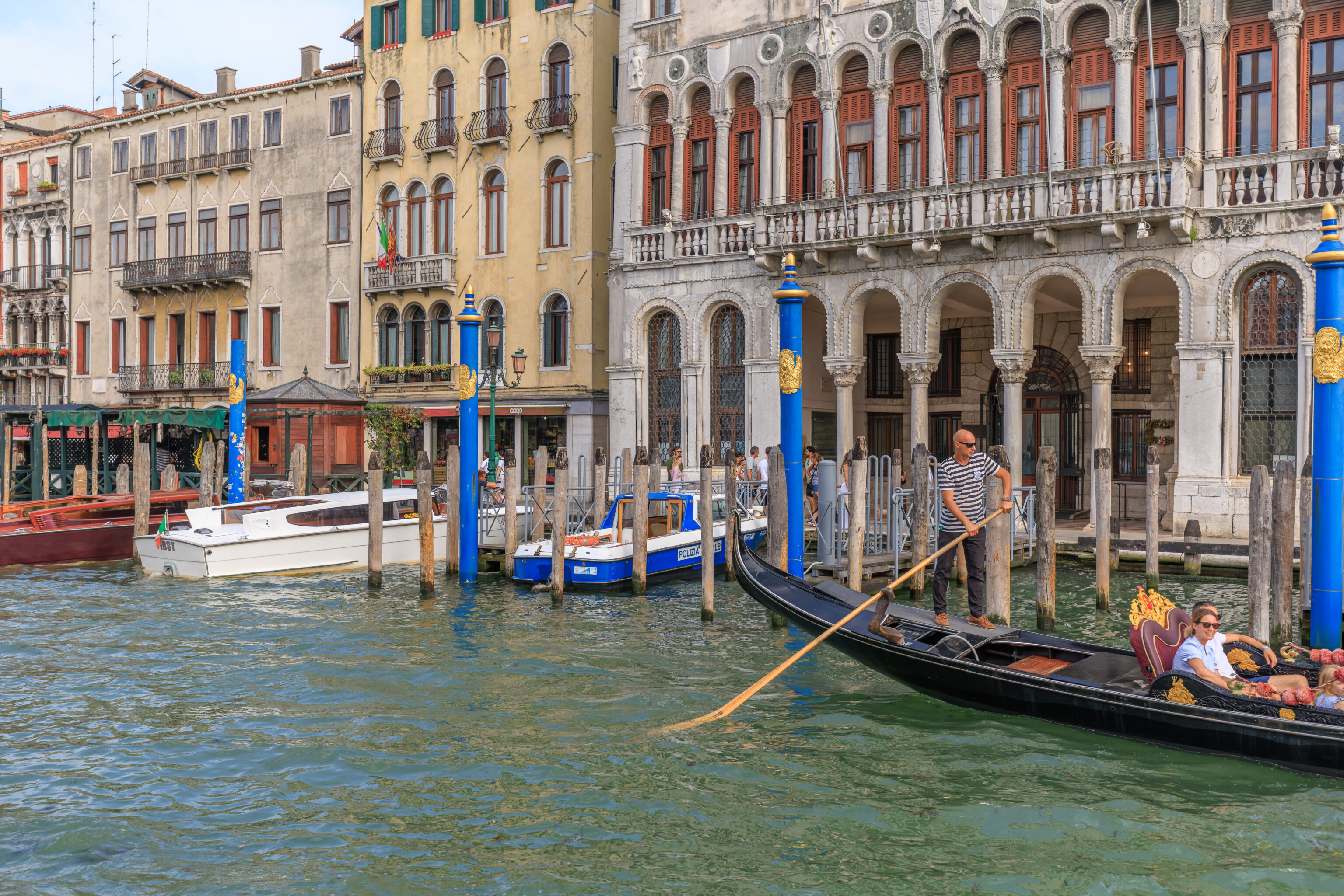
The ride through the Grand Canal does take a bit of time as there is other boat traffic, multiple stops, and the vaporettos aren’t particularly fast.
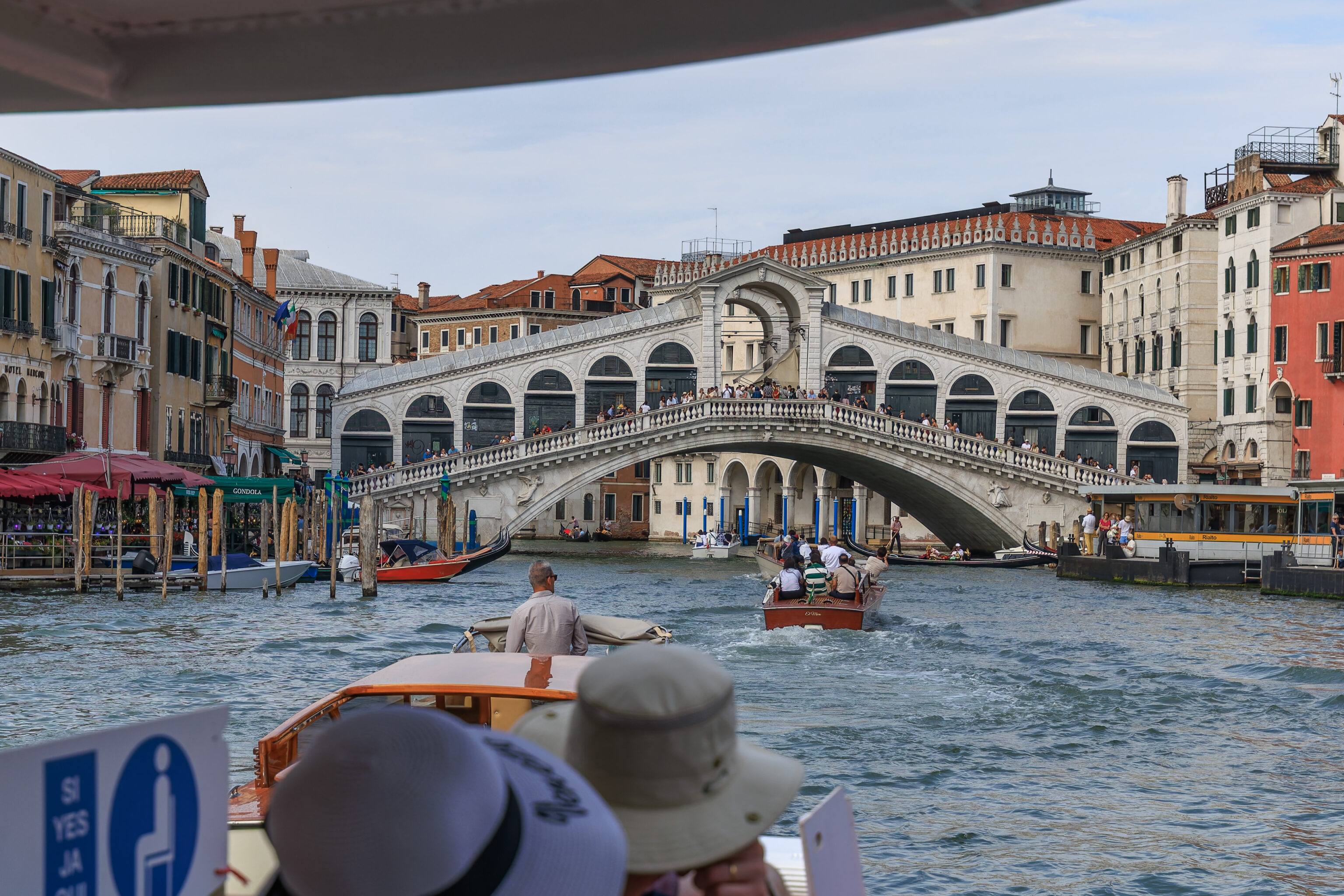
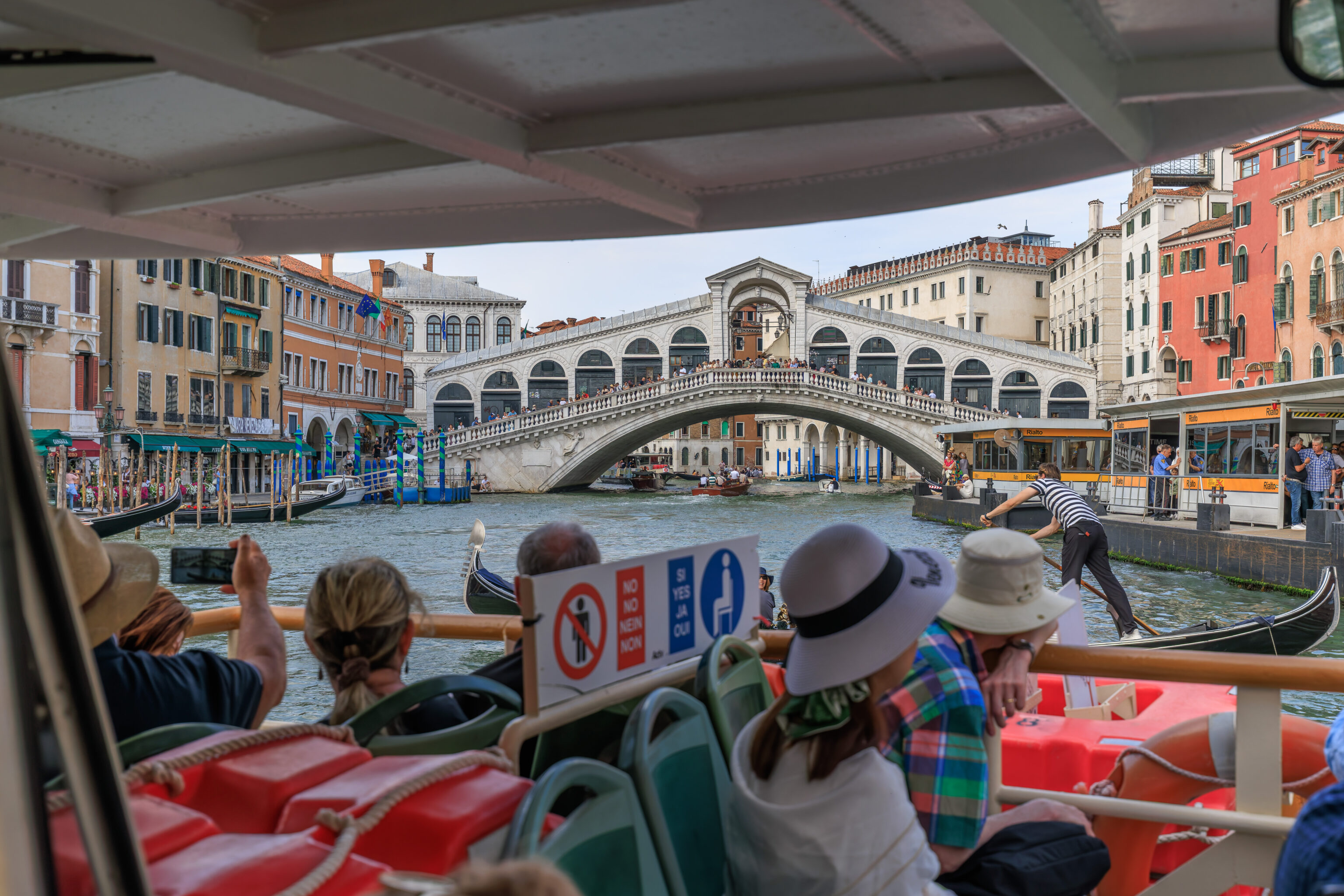
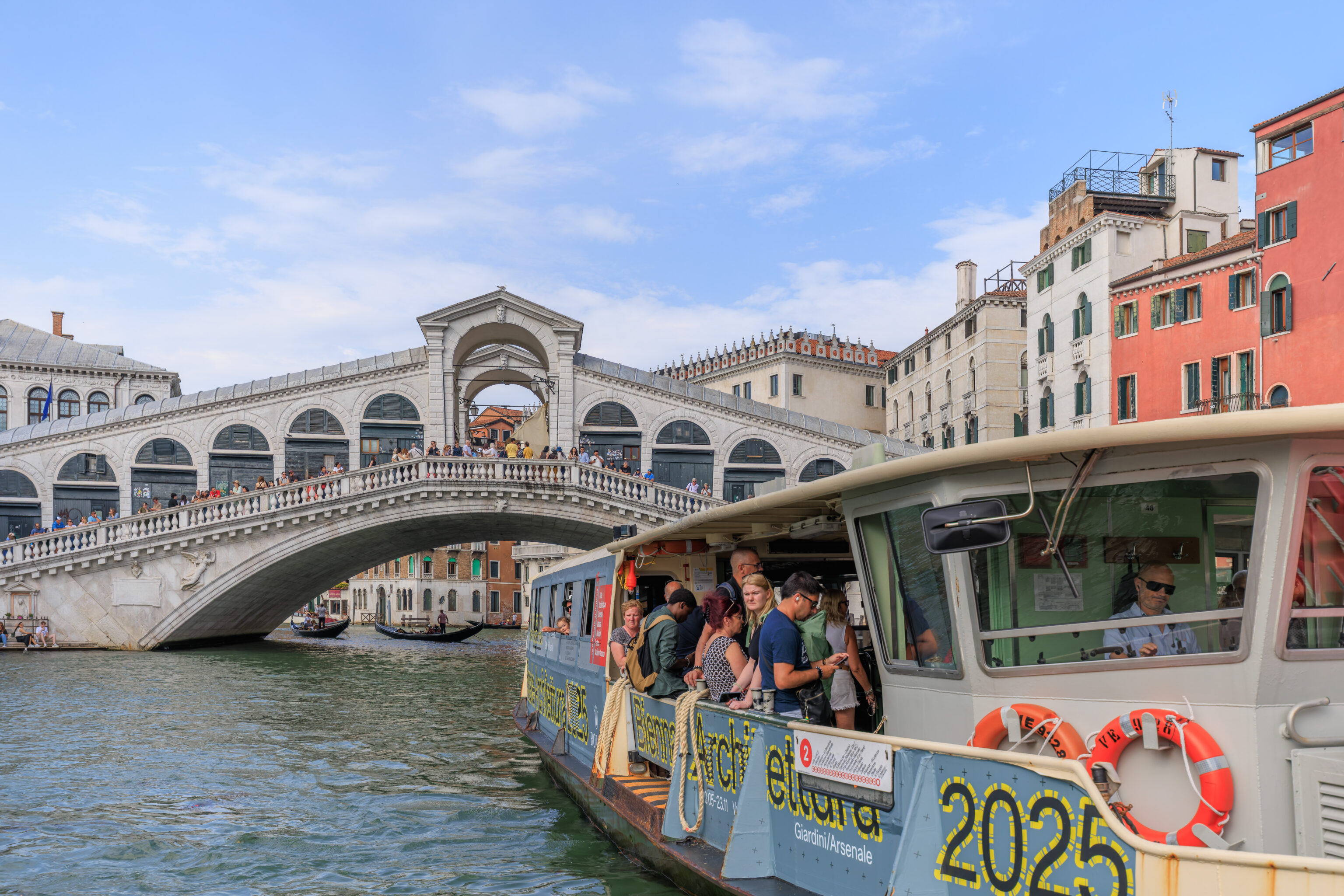
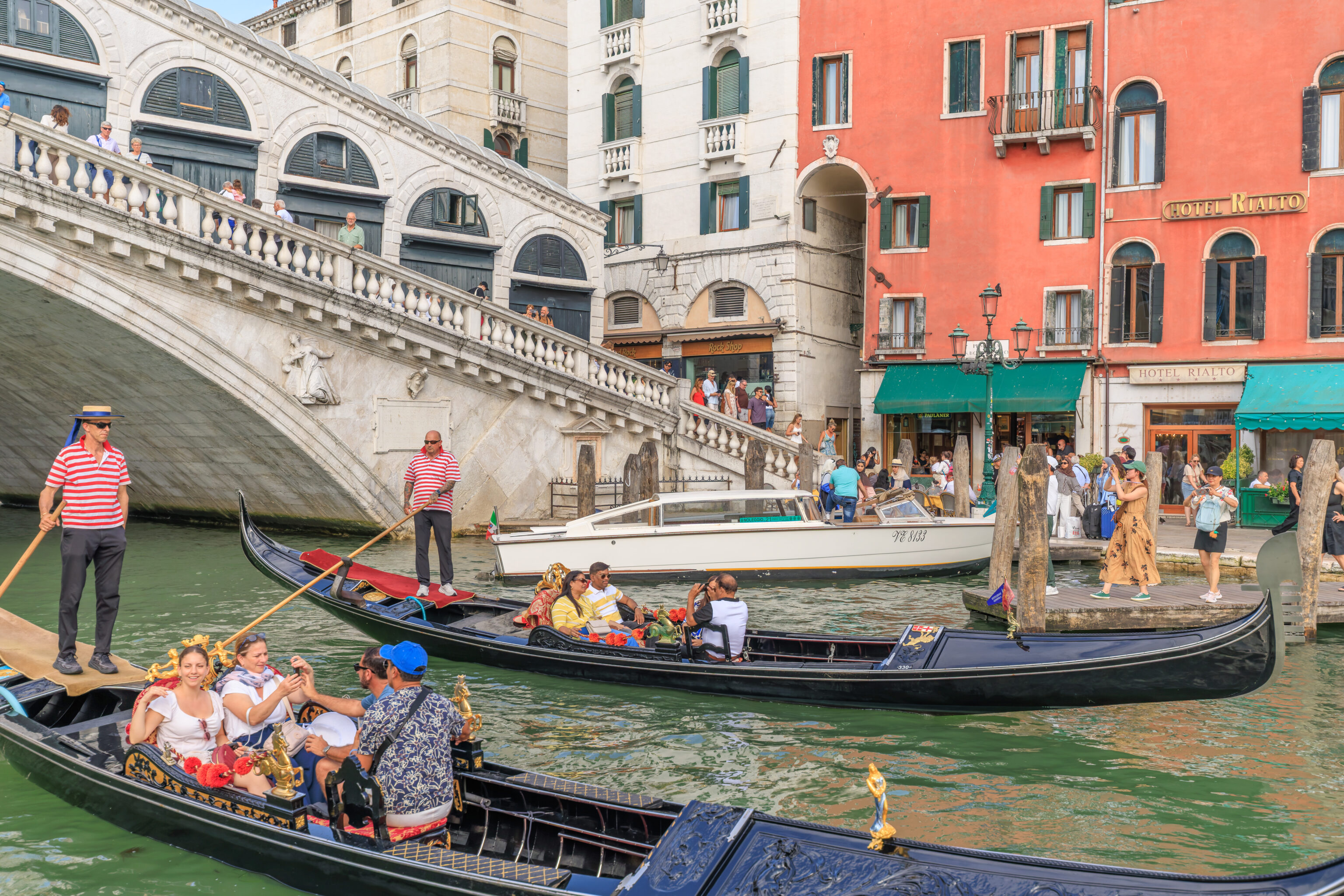
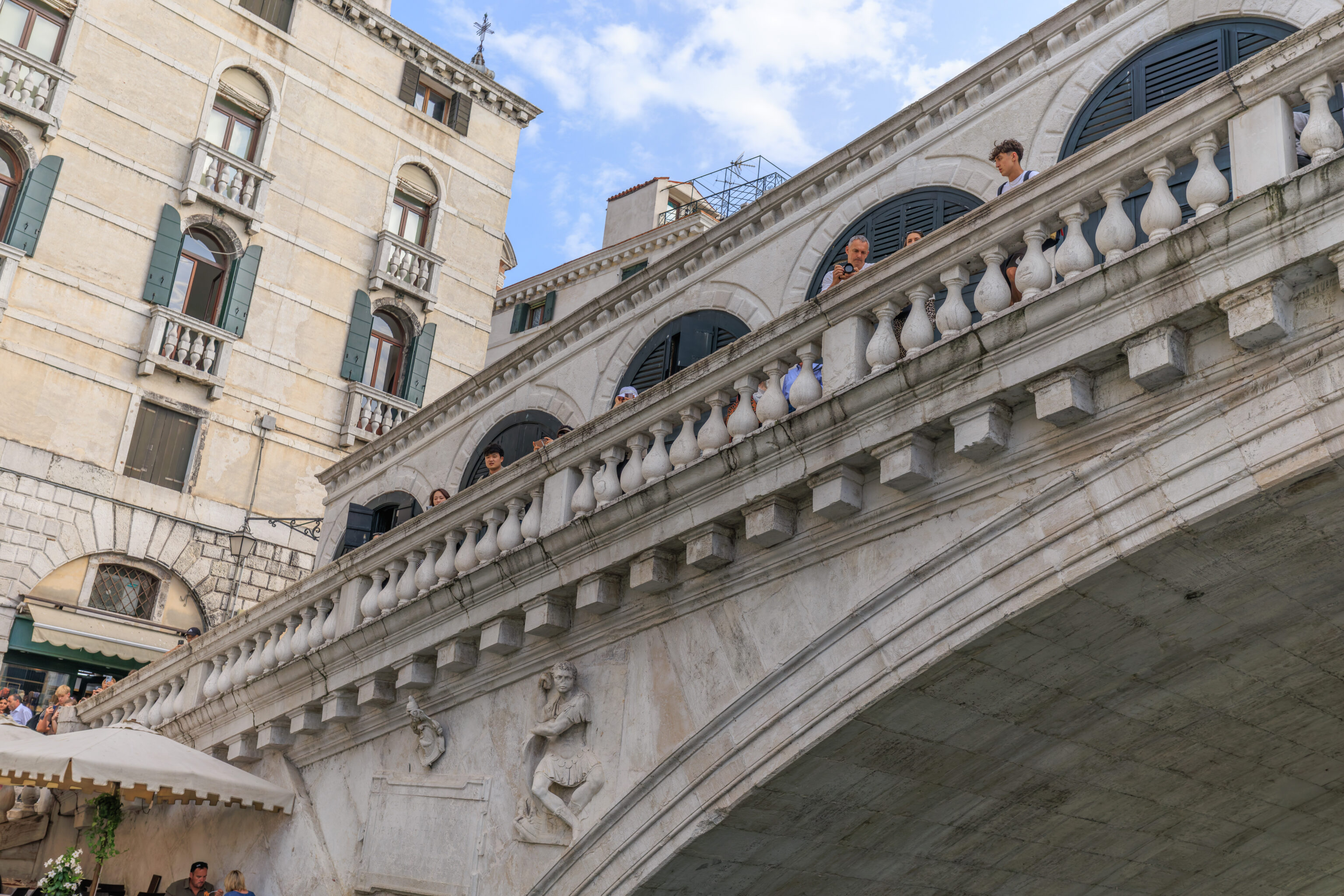
We passed under the Rialto Bridge about 15 minutes after departing.
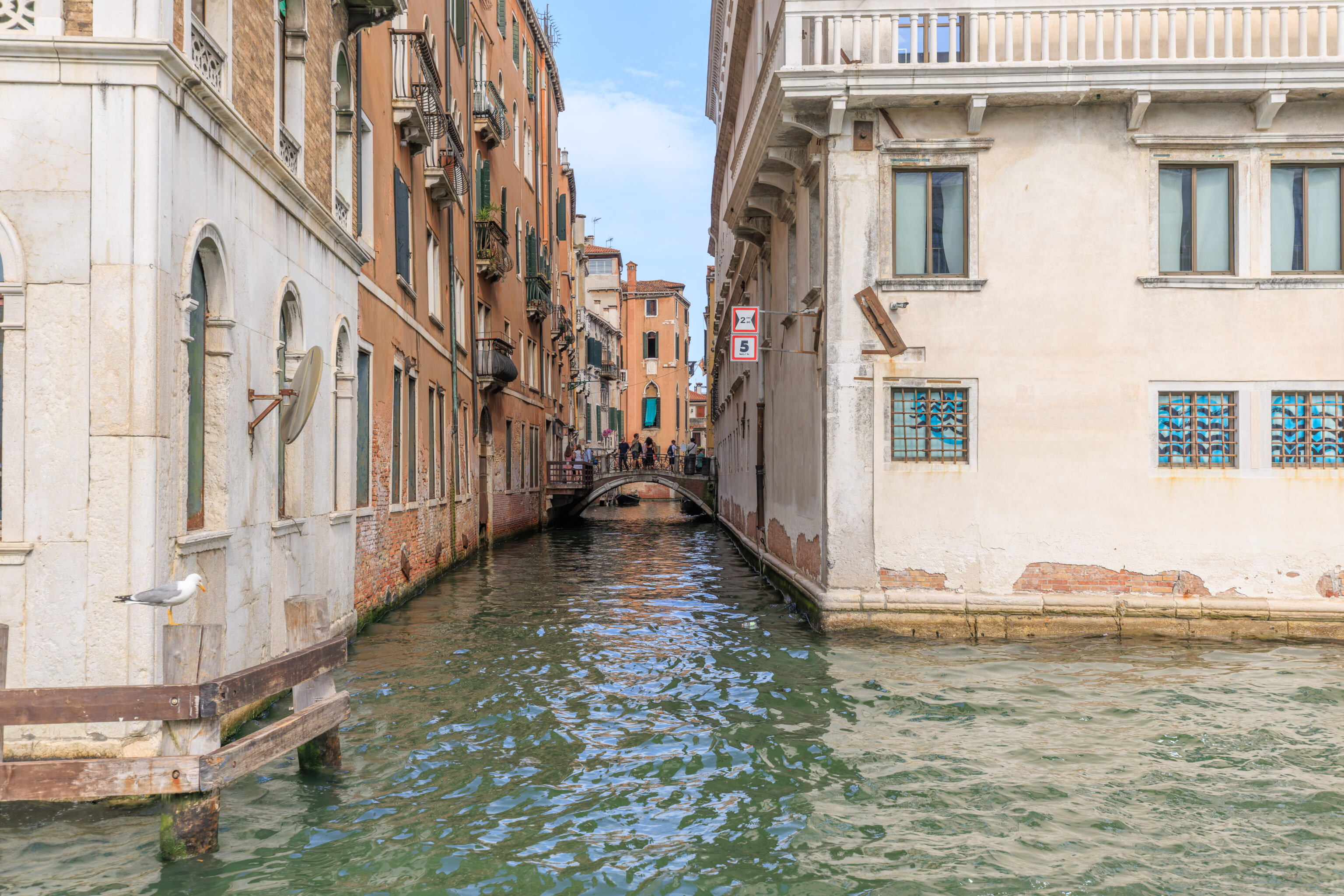
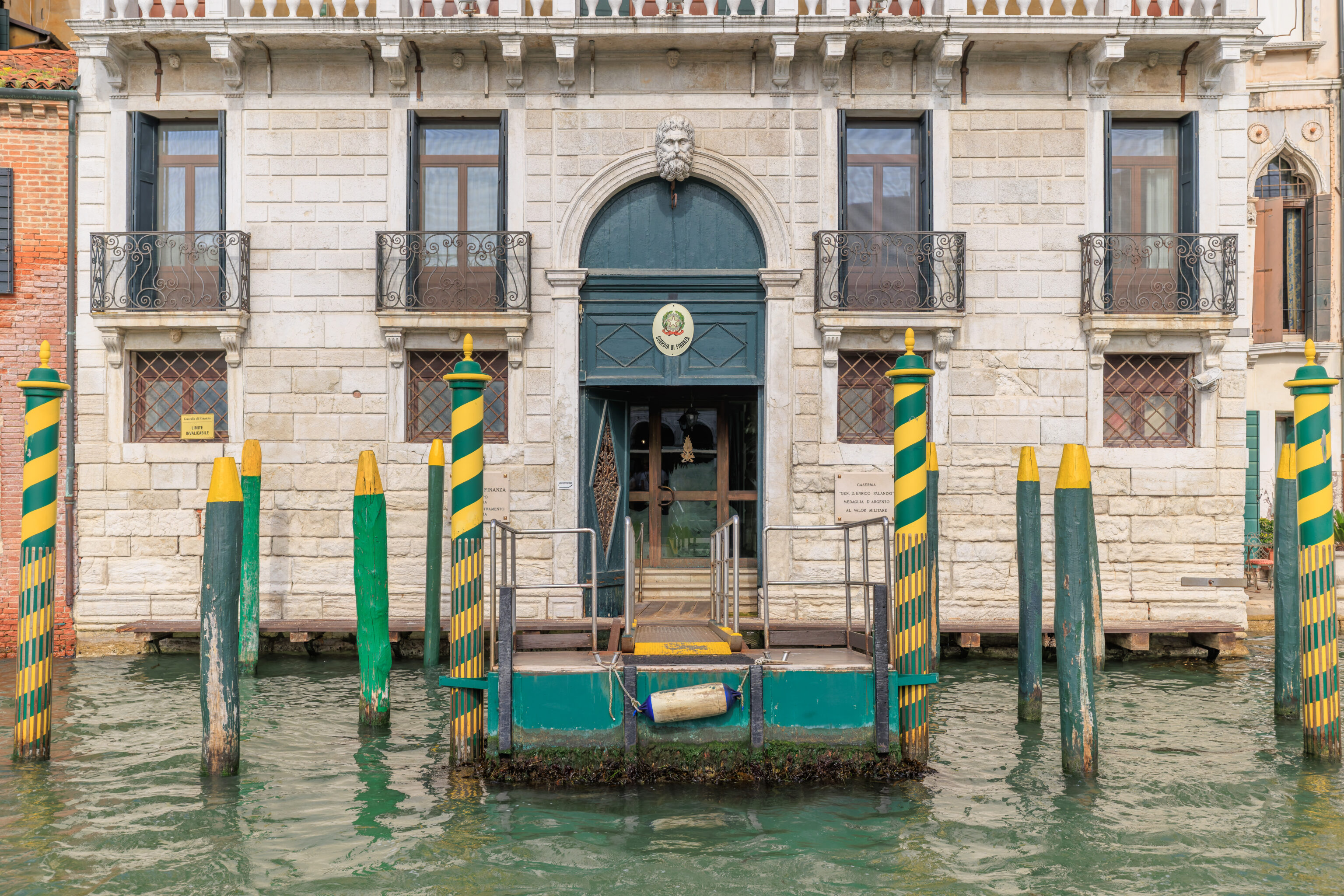
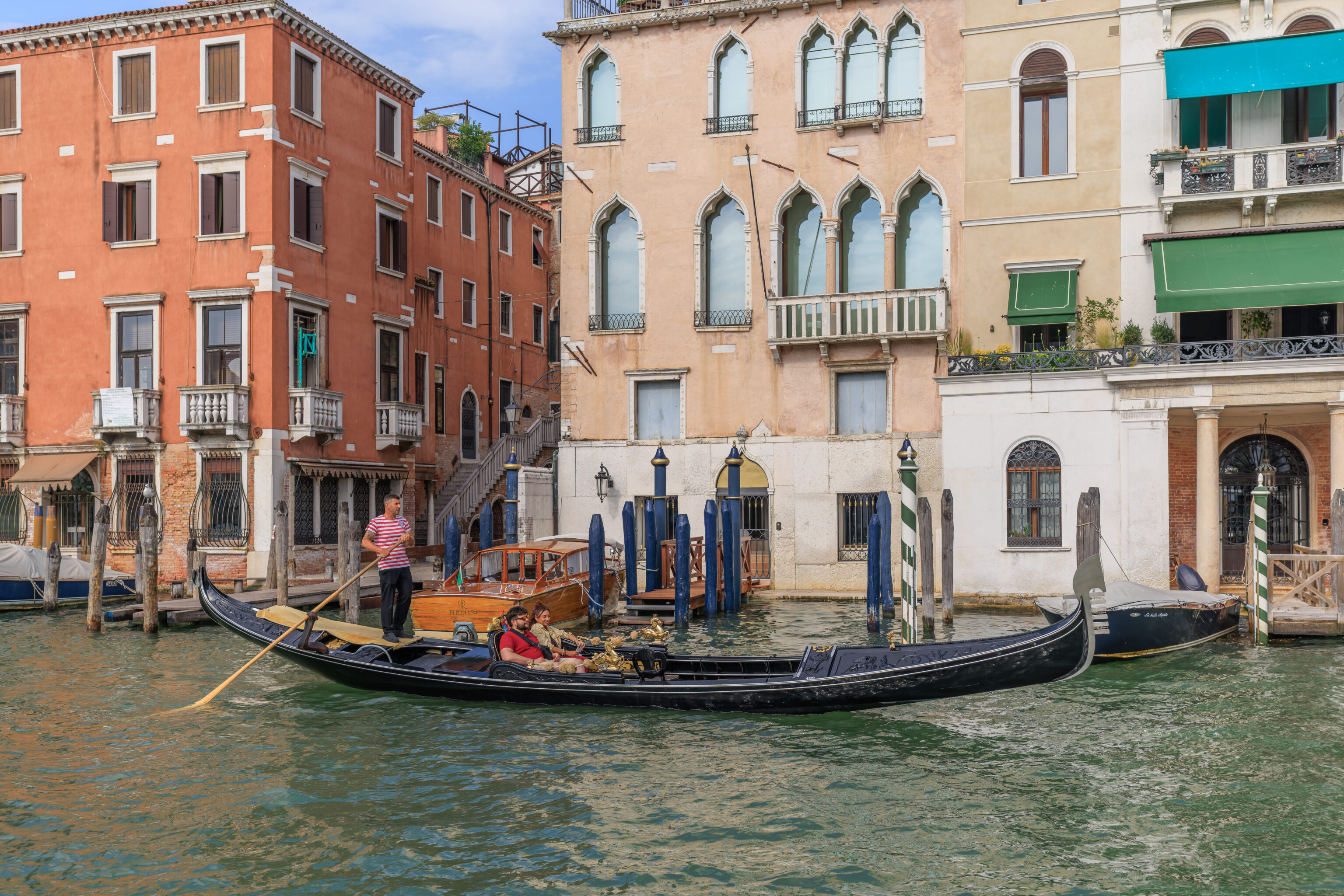
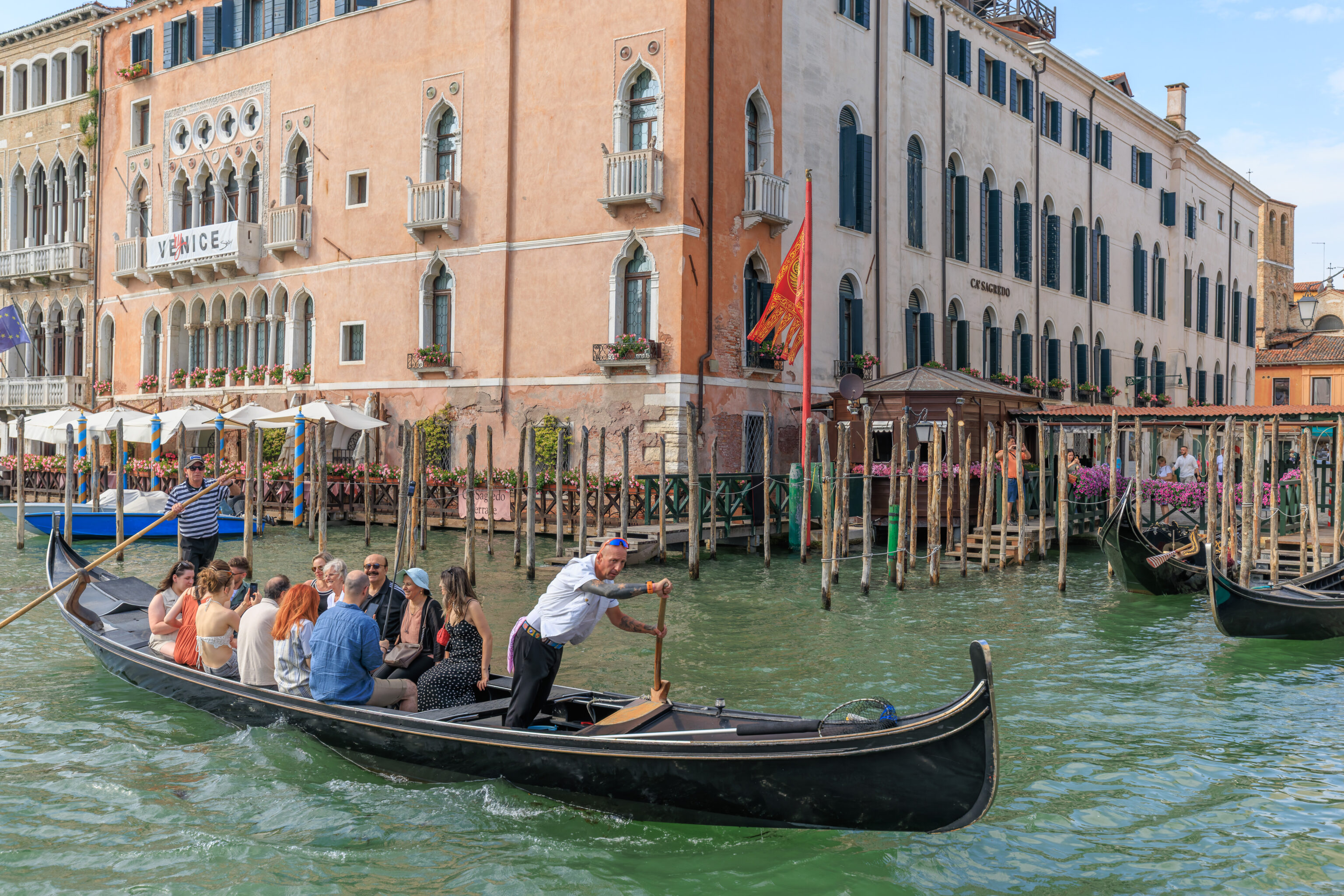
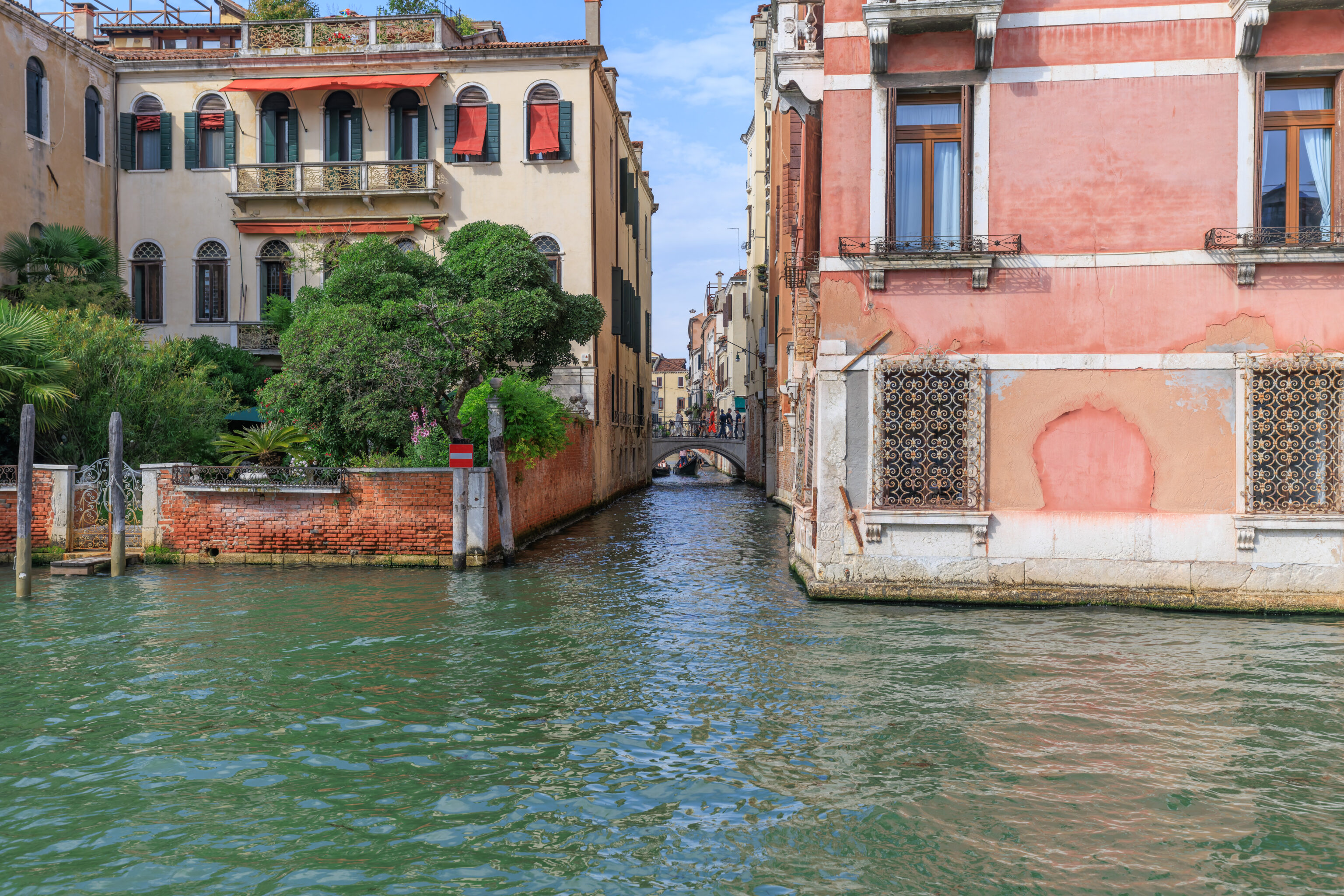
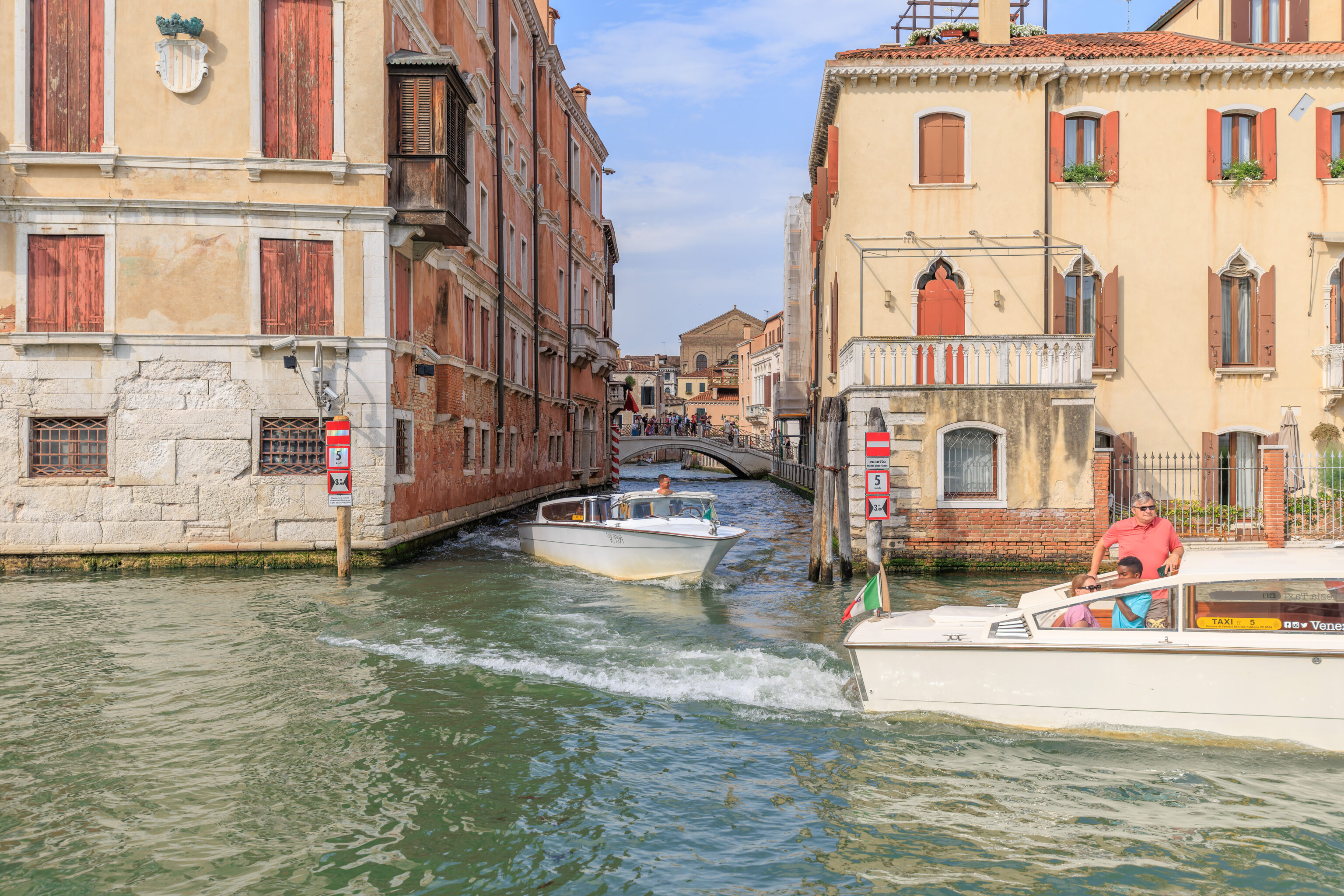
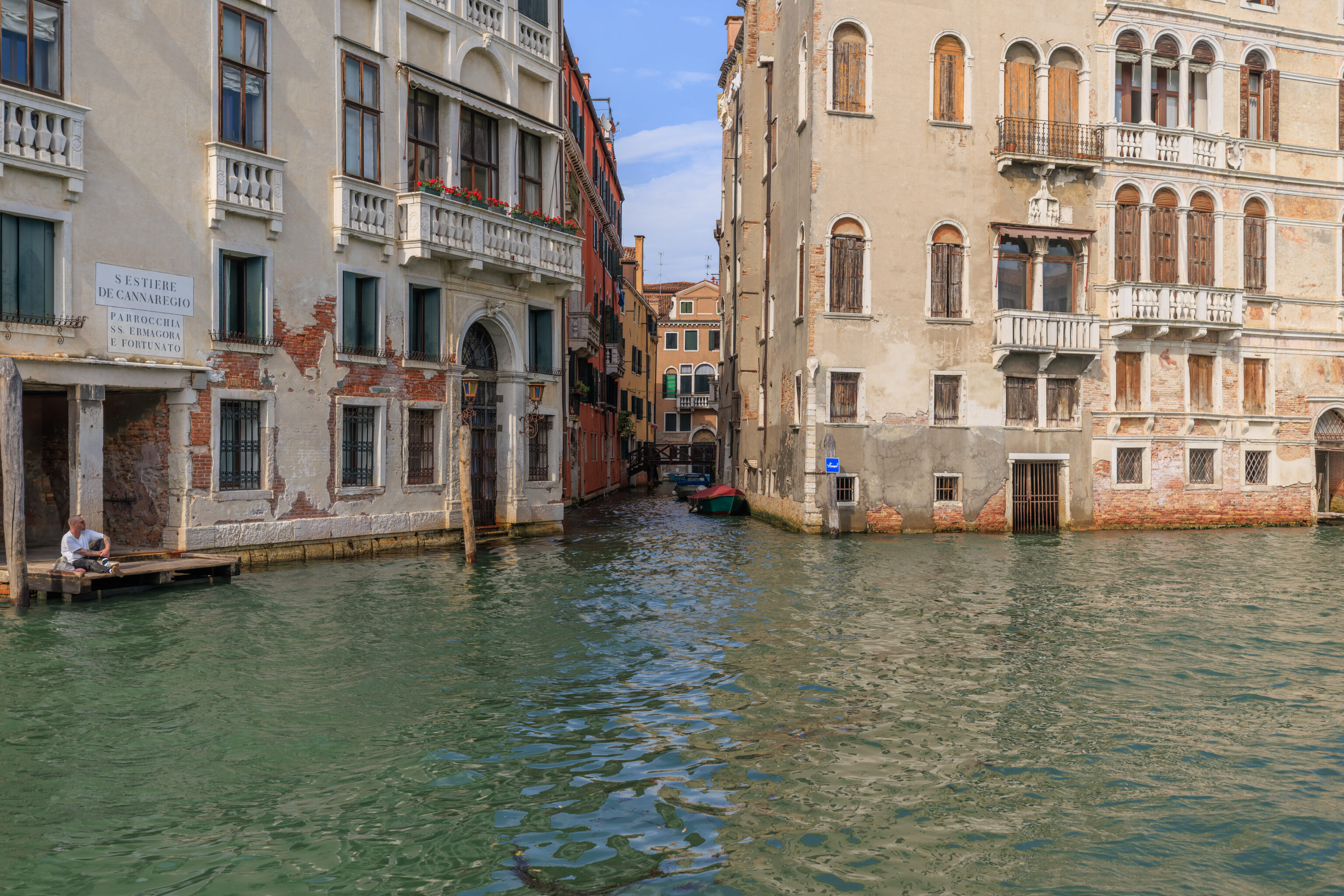
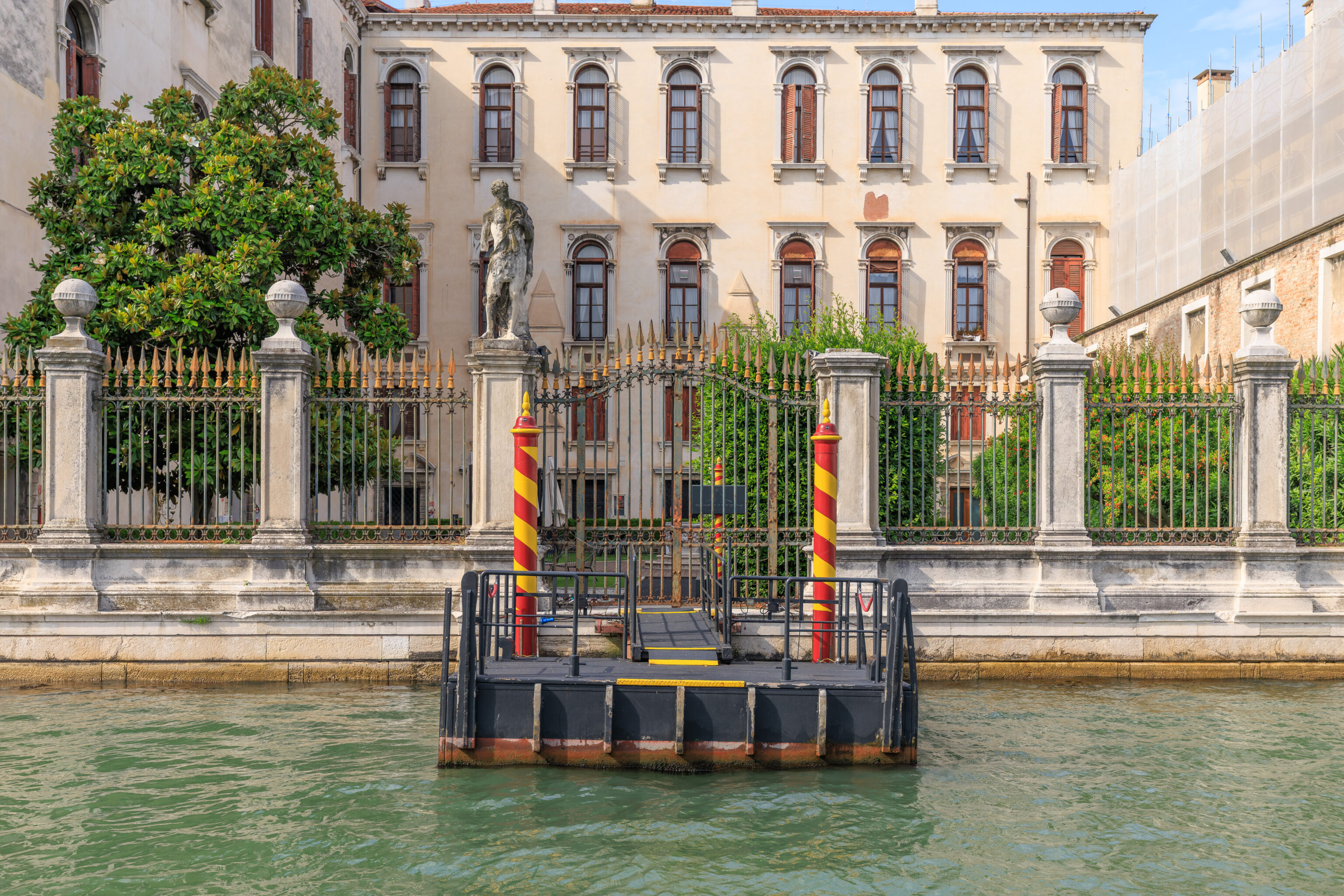
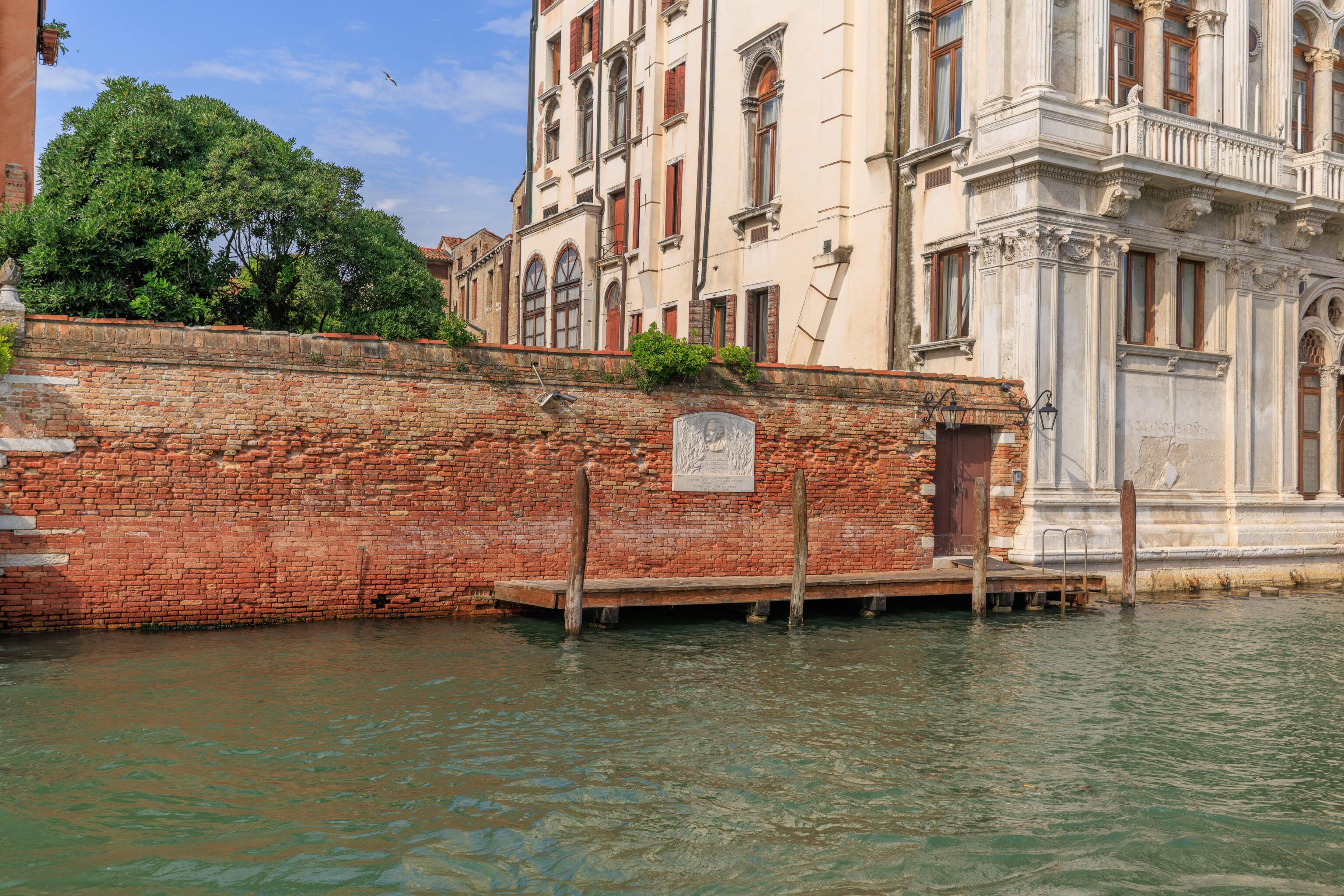
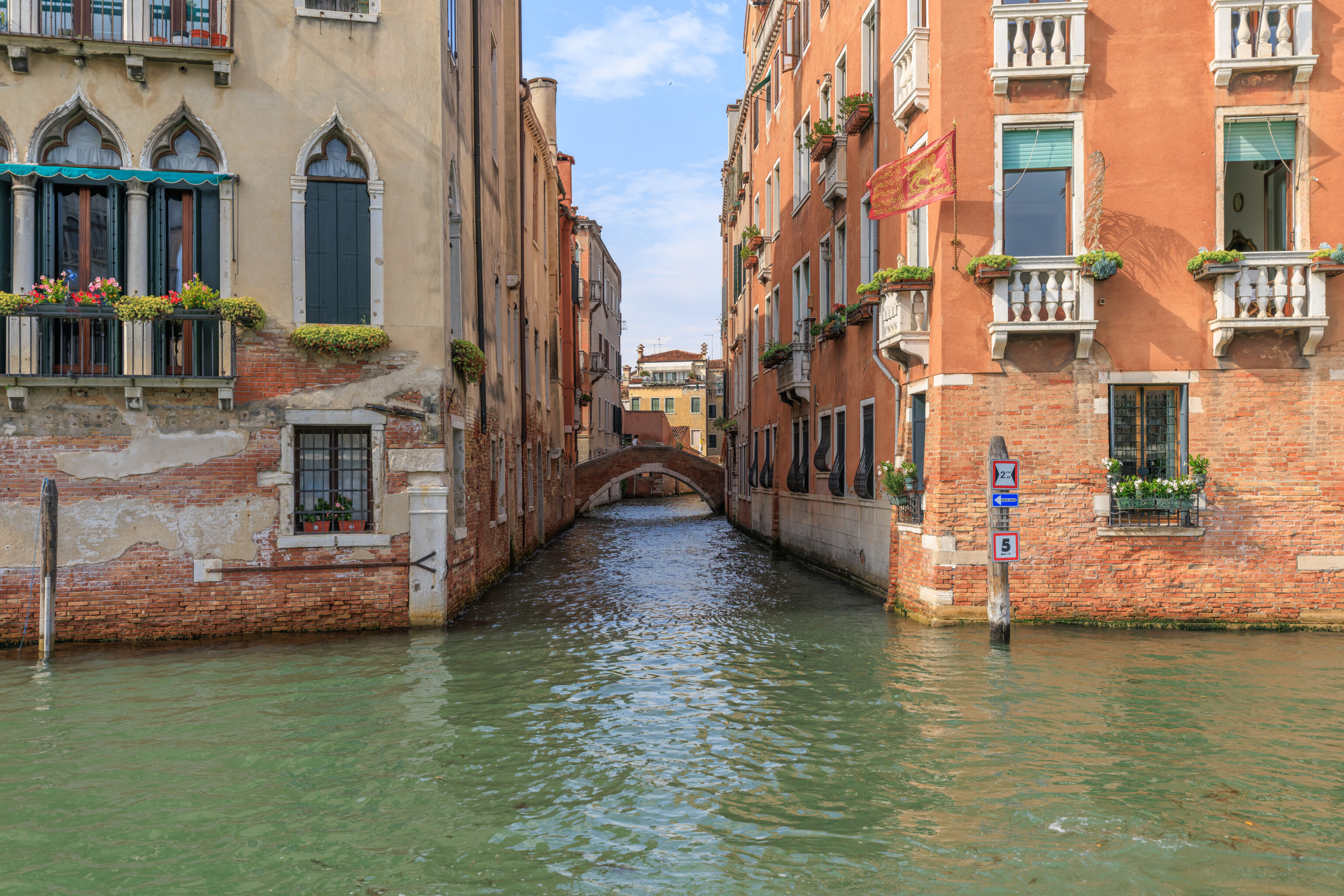
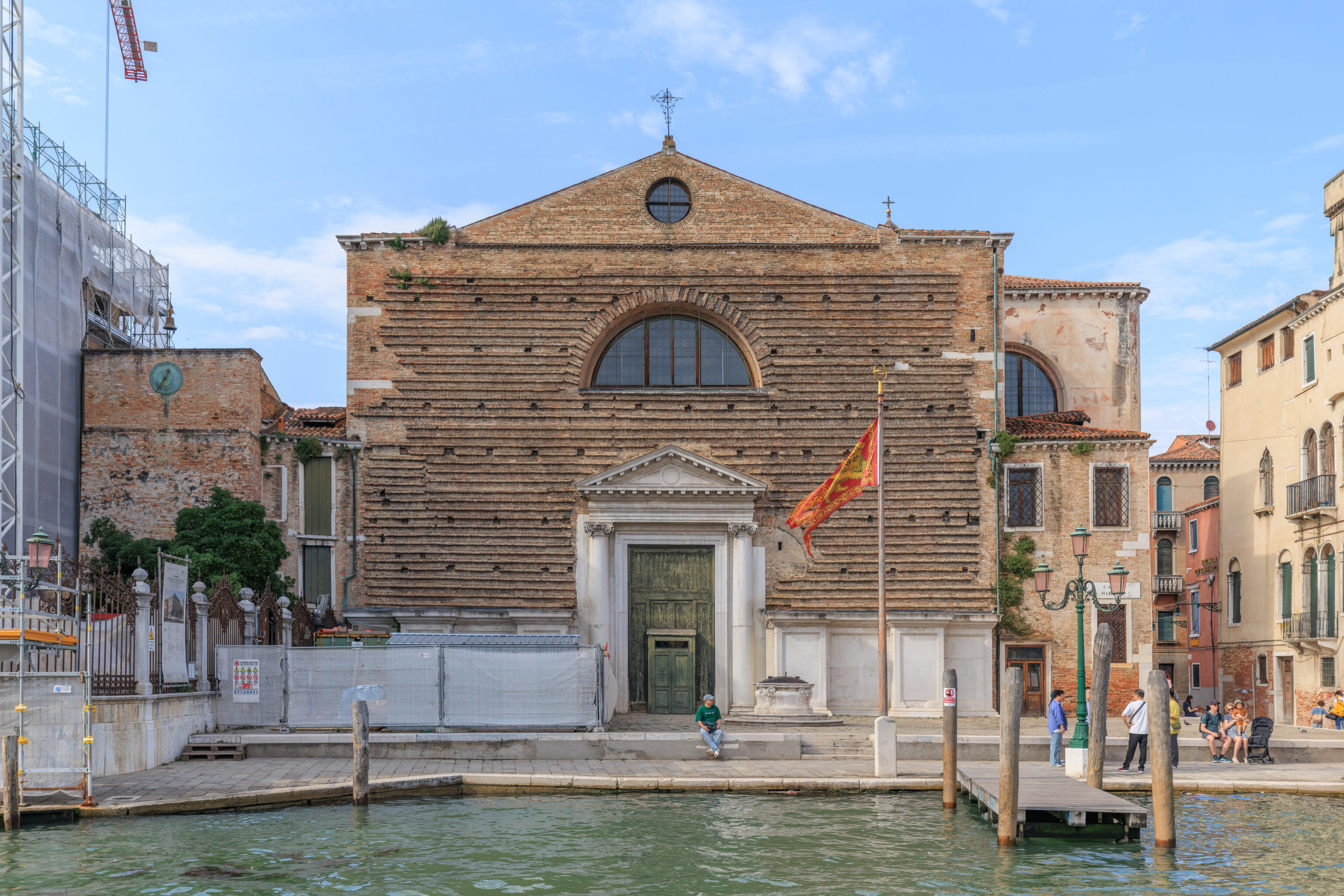
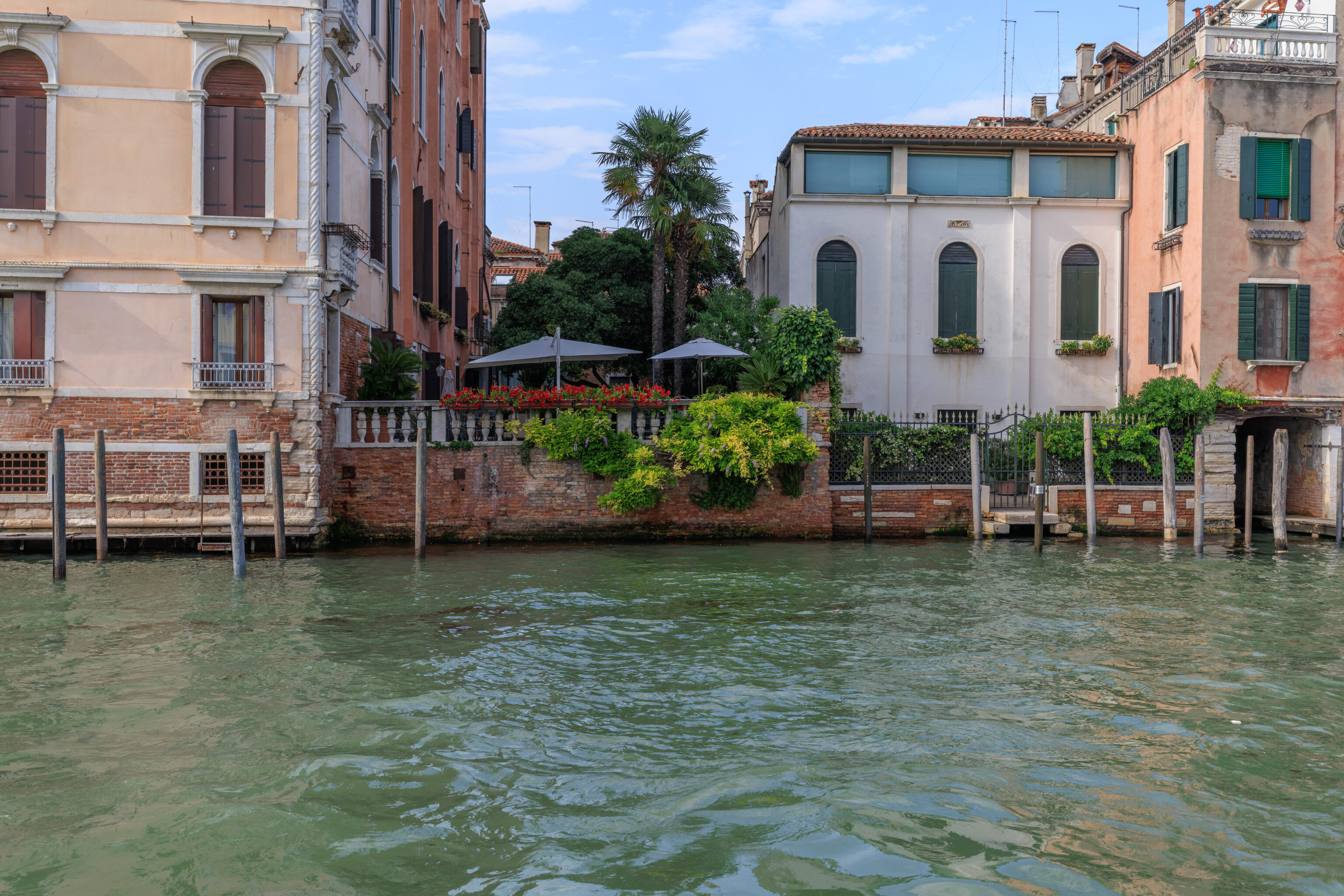
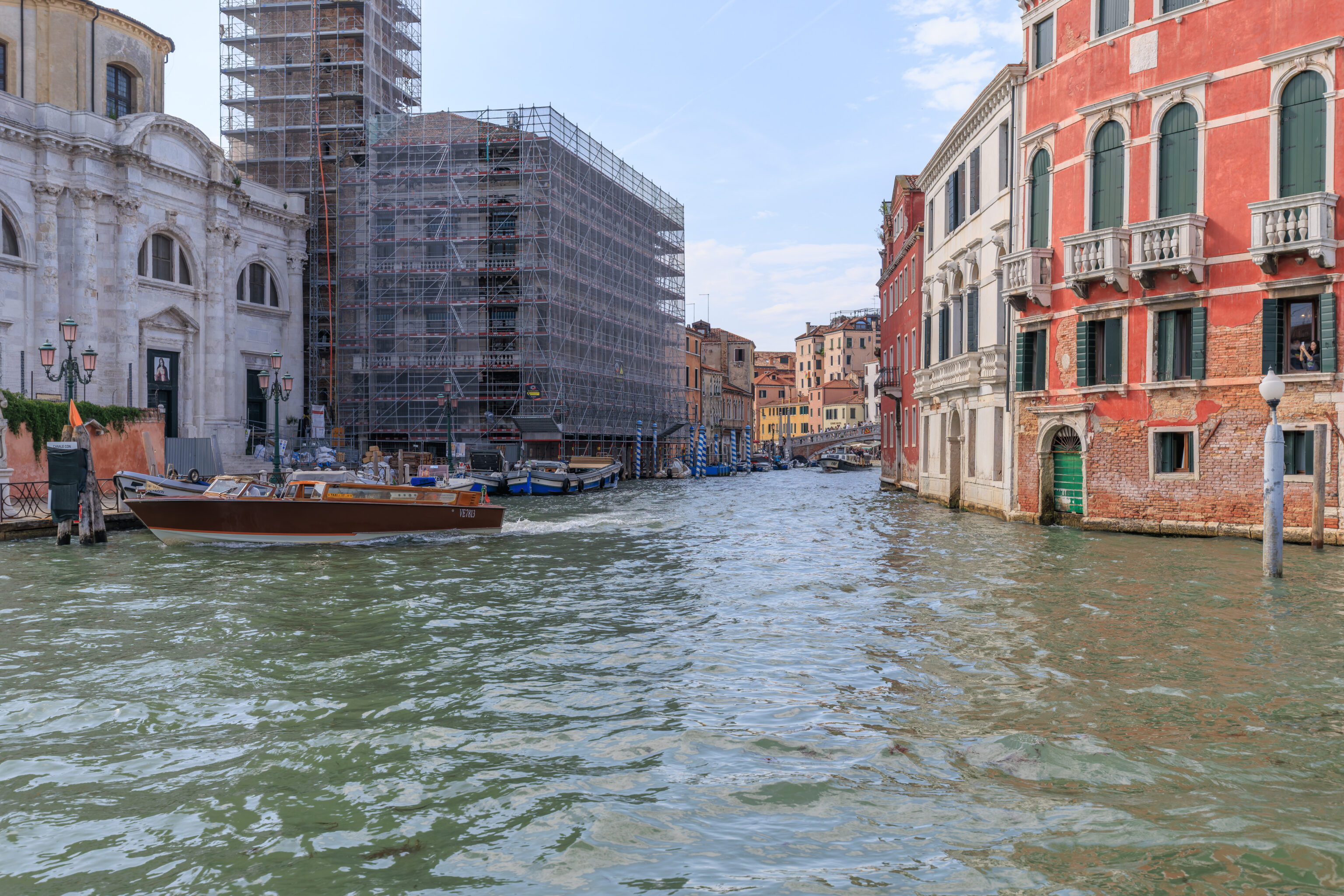
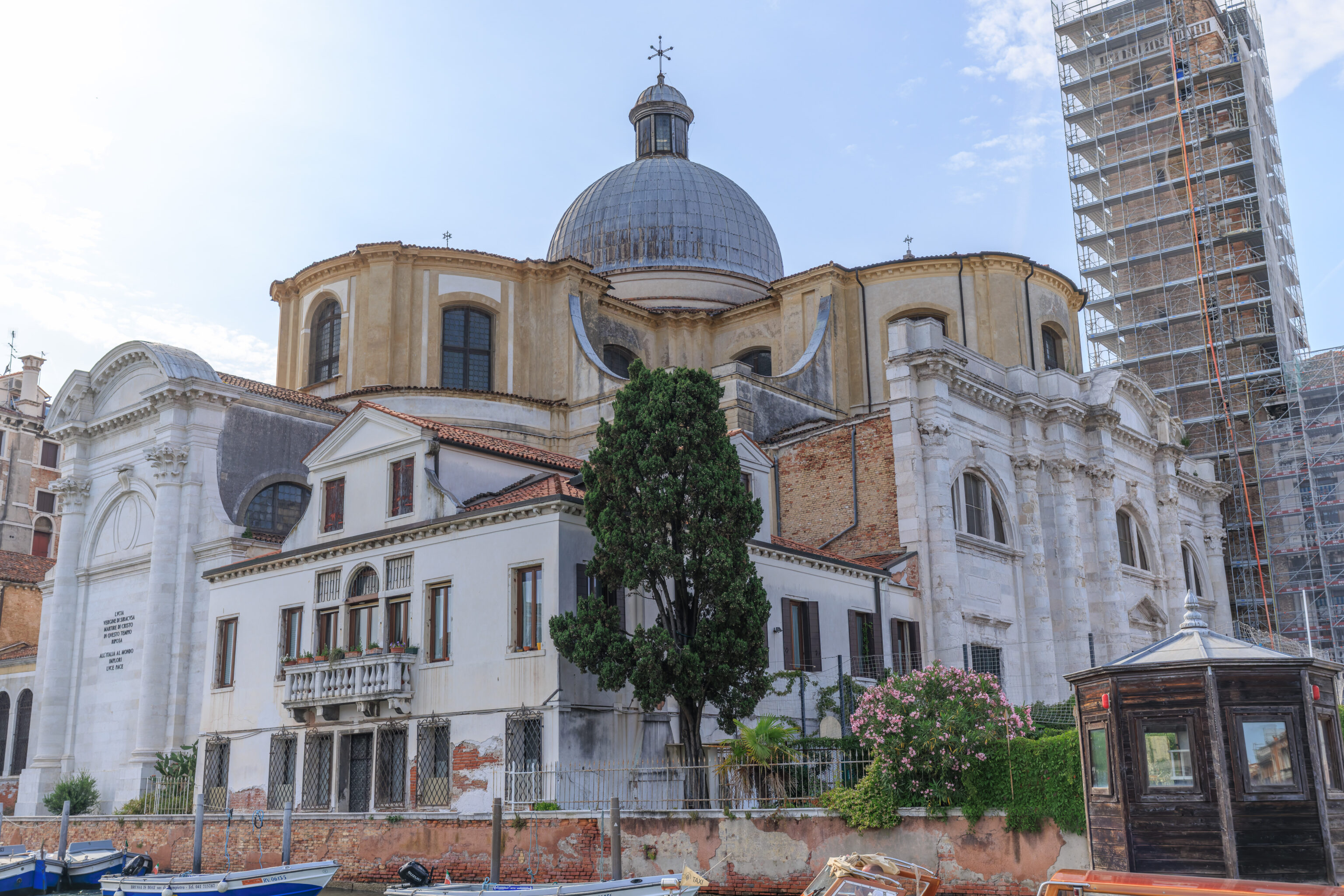
We reached this intersection by the Santuario di Lucia about eight minutes later.
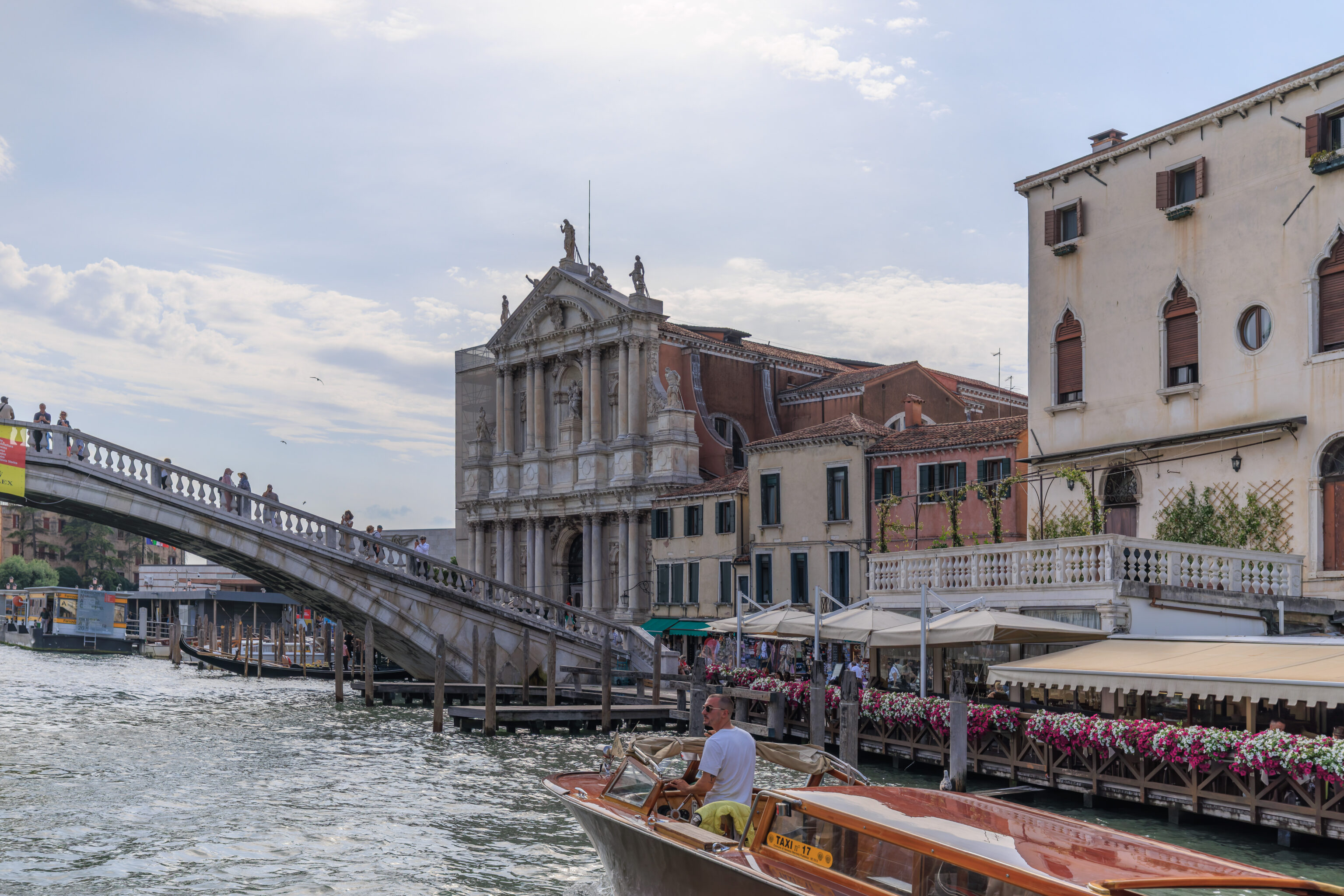
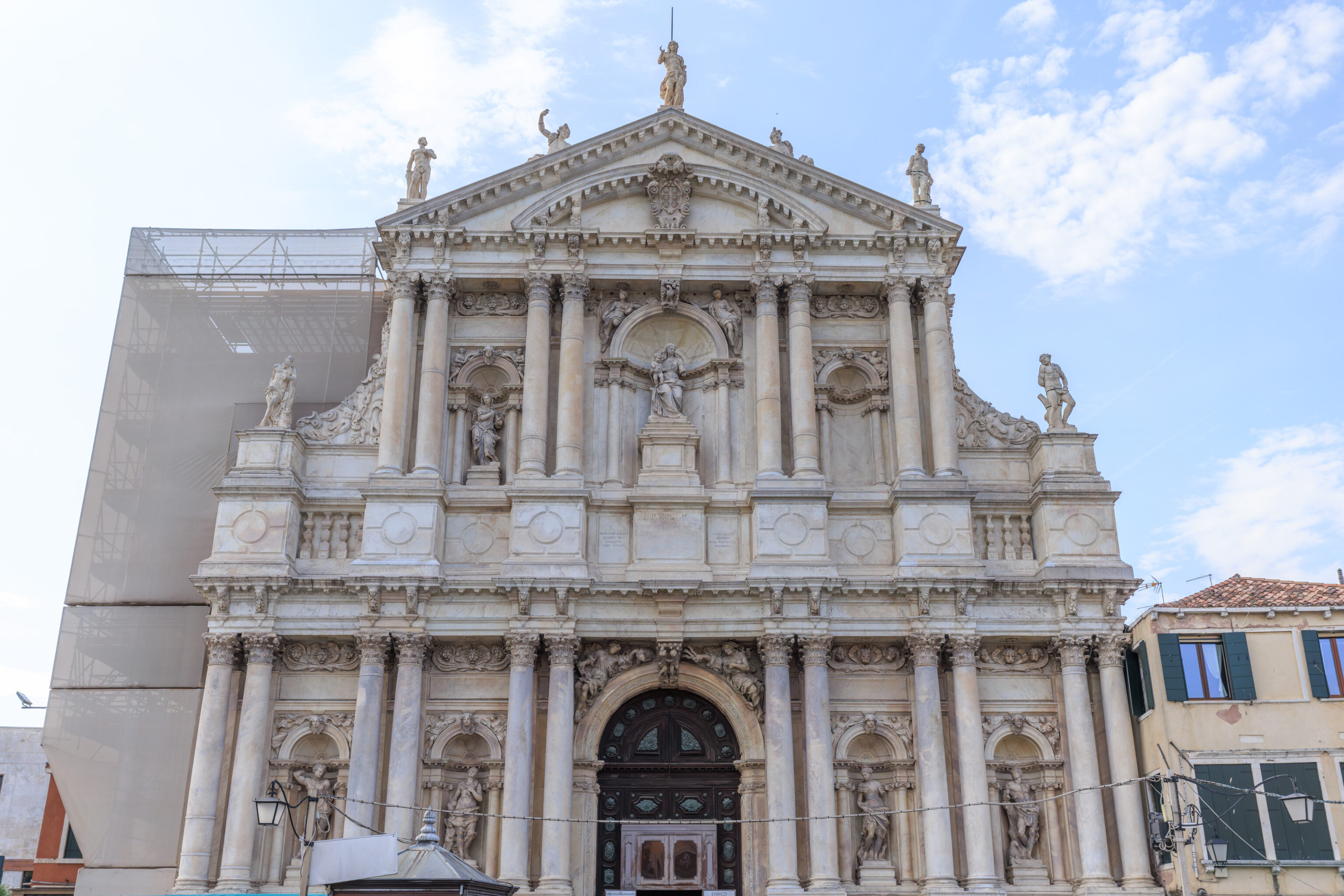
We got off at the Ferrovia quays, just past the Chiesa di Santa Maria di Nazareth.
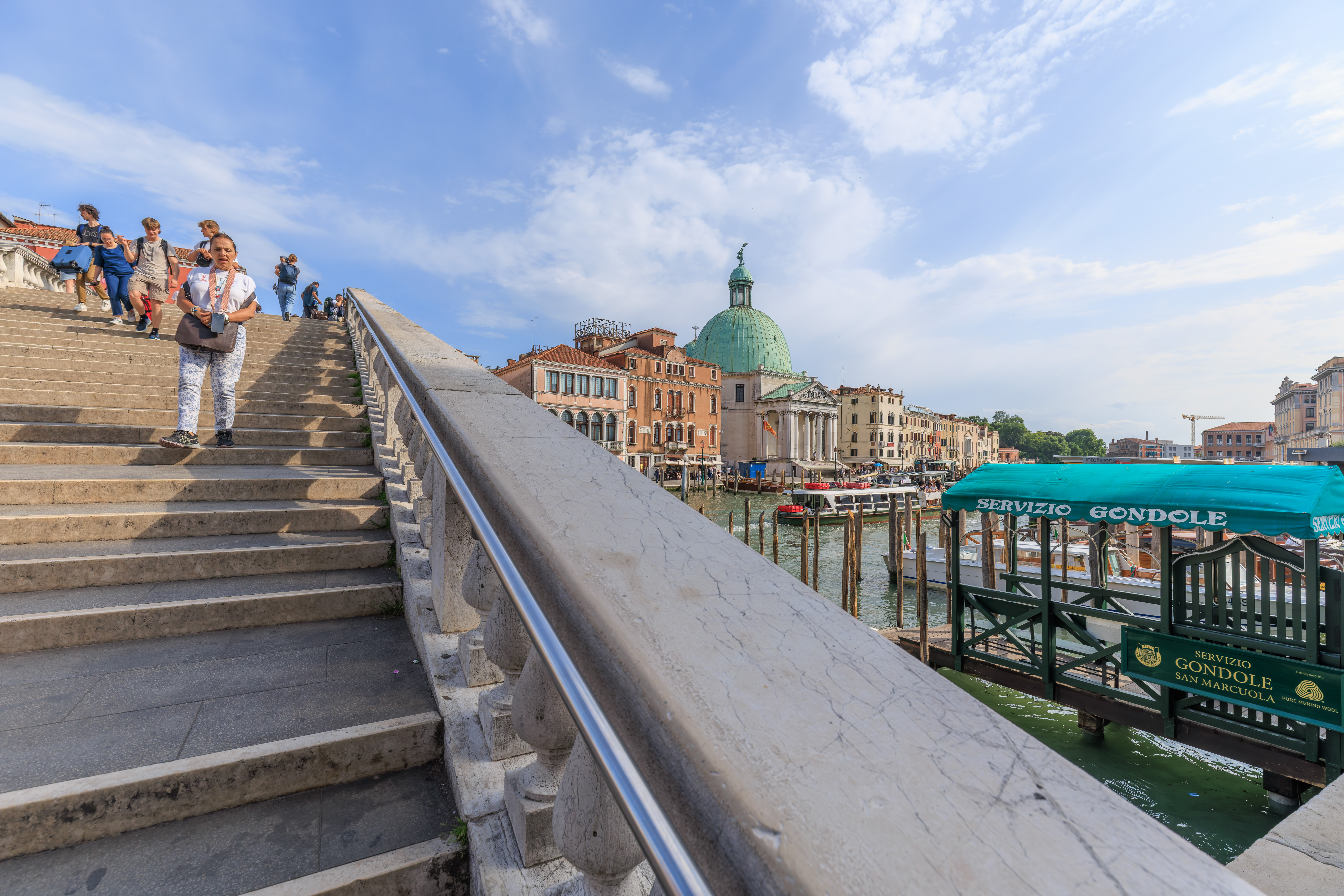
We walked up the Ponte degli Scalzi, the bridge by the church, to take a look at the view.
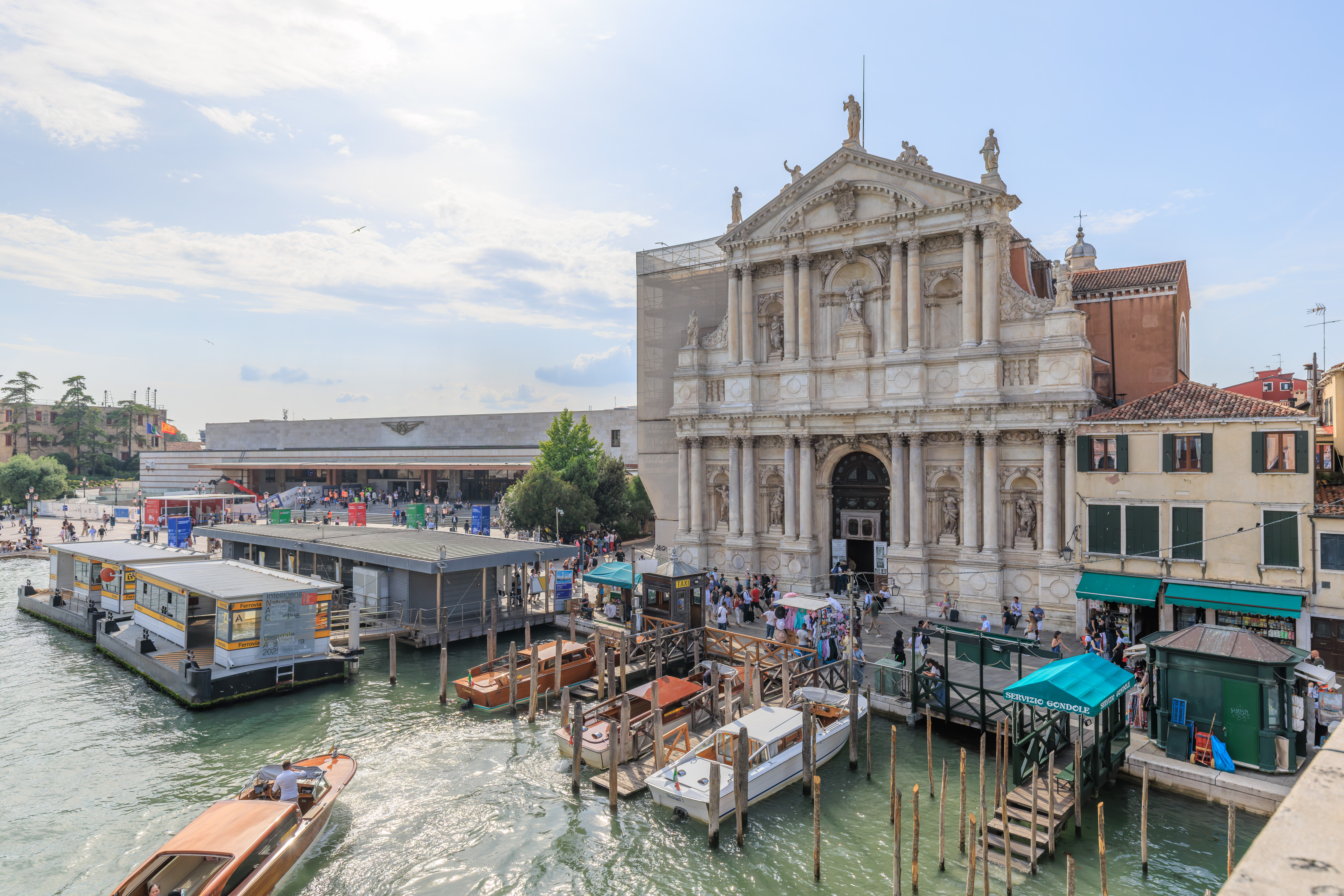
The church, as seen from the bridge, with the easternmost Ferrovia quays visible as well. And, finally, a photo that includes the modern Venezia St. Lucia train station!

The view looking west.
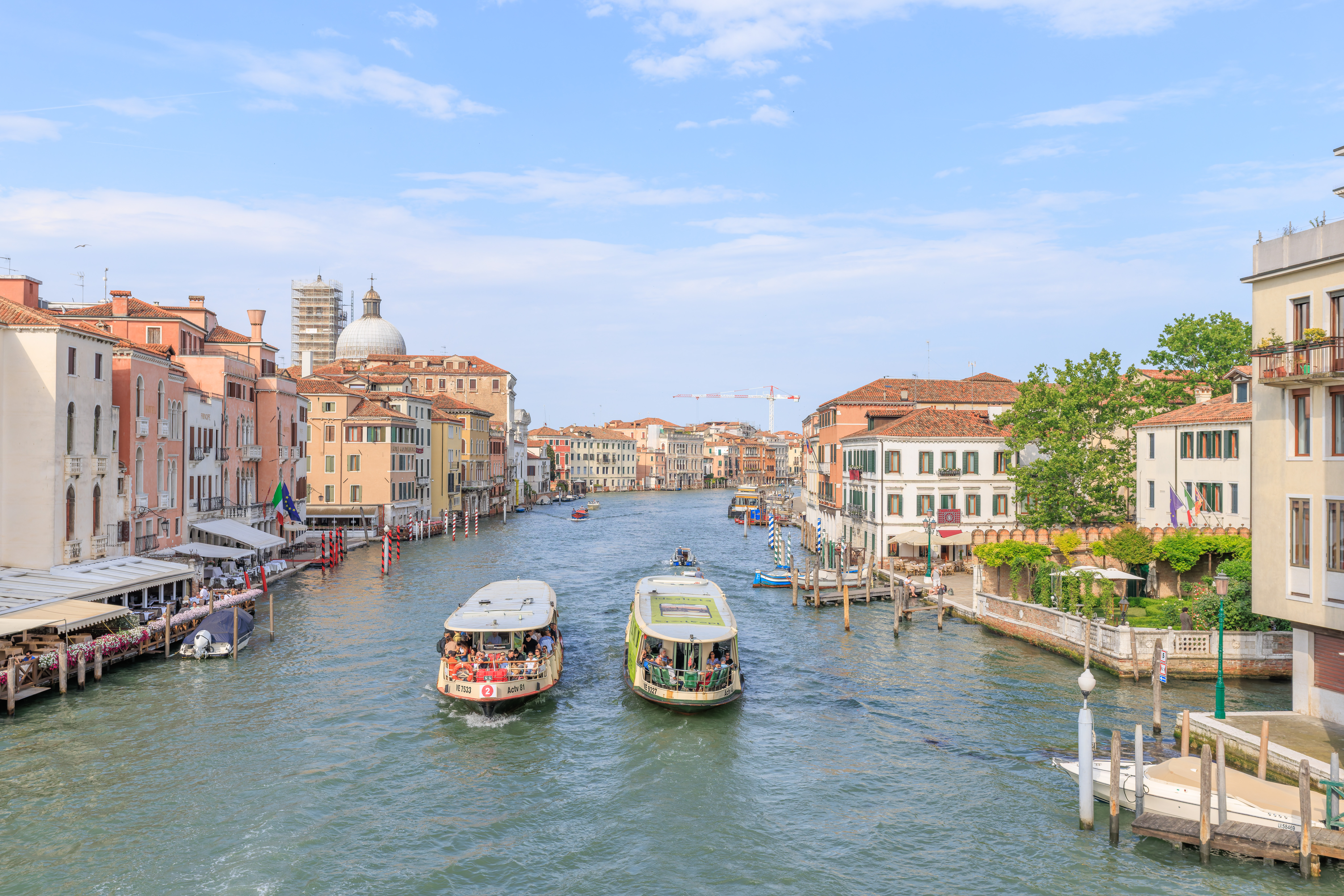
And the view looking east.
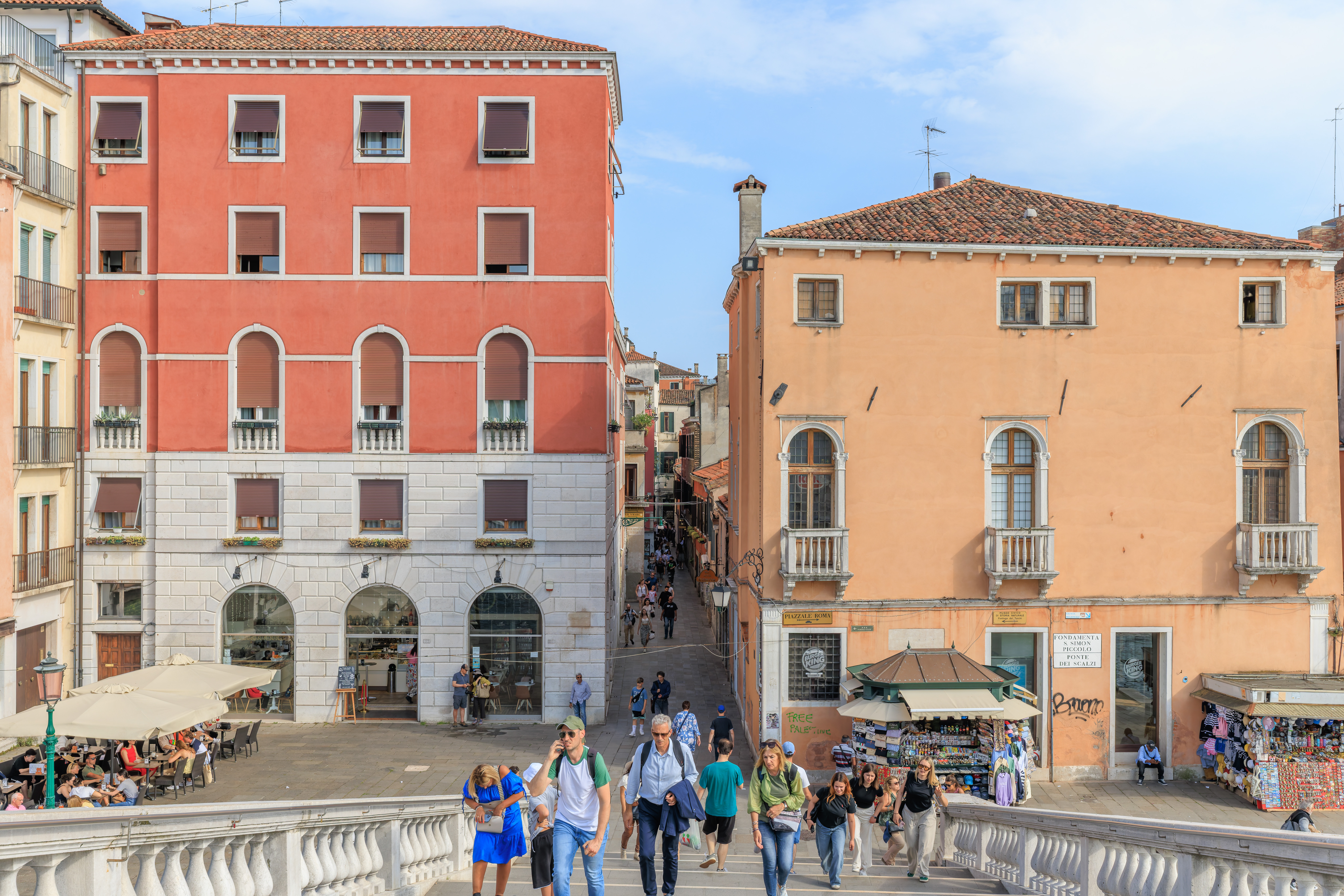
This was the view to the south, on the opposite side of the Grand Canal. We didn’t actually go down there.
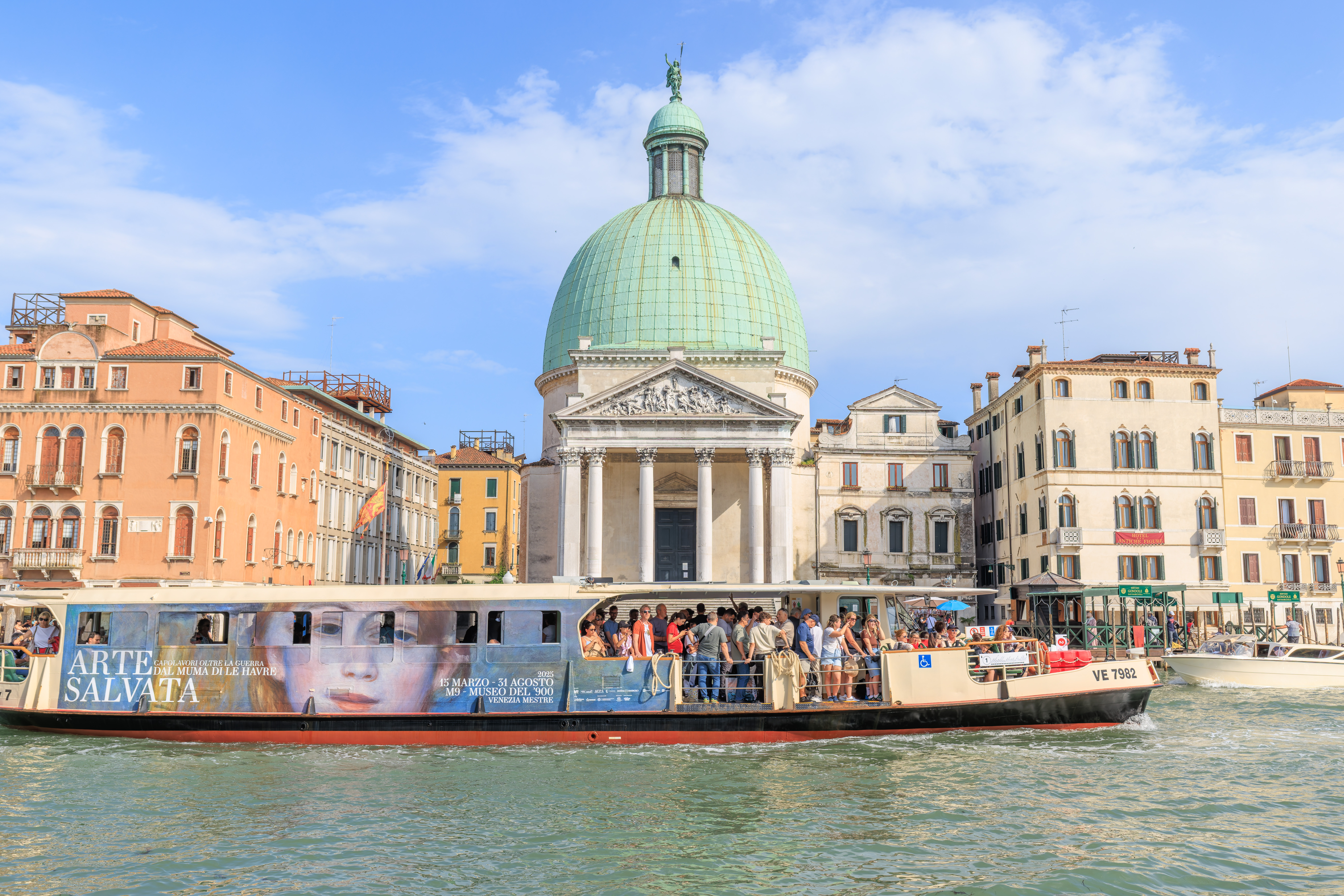
We went to find the Alilaguna ticket office as we needed to buy tickets for our trip to the airport from Murano in two days. As we searched, we looked across the Grand Canal to see the Chiesa di San Simeon Piccolo in the background.
This church is basically just a big dome! So if this church is piccolo, meaning small, there must be a larger one dedicated to Saint Simon? There is, indeed, a San Simeone Grande nearby! It doesn’t have as distinctive of an appearance though.
It took us awhile to find where to buy Alilaguna tickets. There is a small office near the Ferrovia A and B quays. This office is at the southern corner of the Chiesa di Santa Maria di Nazareth. It seems like it is actually a tourist information center but it does contain a ticket desk where one can buy Alilaguna tickets.

One way tickets to go from Murano to the airport are 10€ each. They can be used at any time, though its unclear if they do expire at some point. In addition to our tickets, we were given a huge paper map.
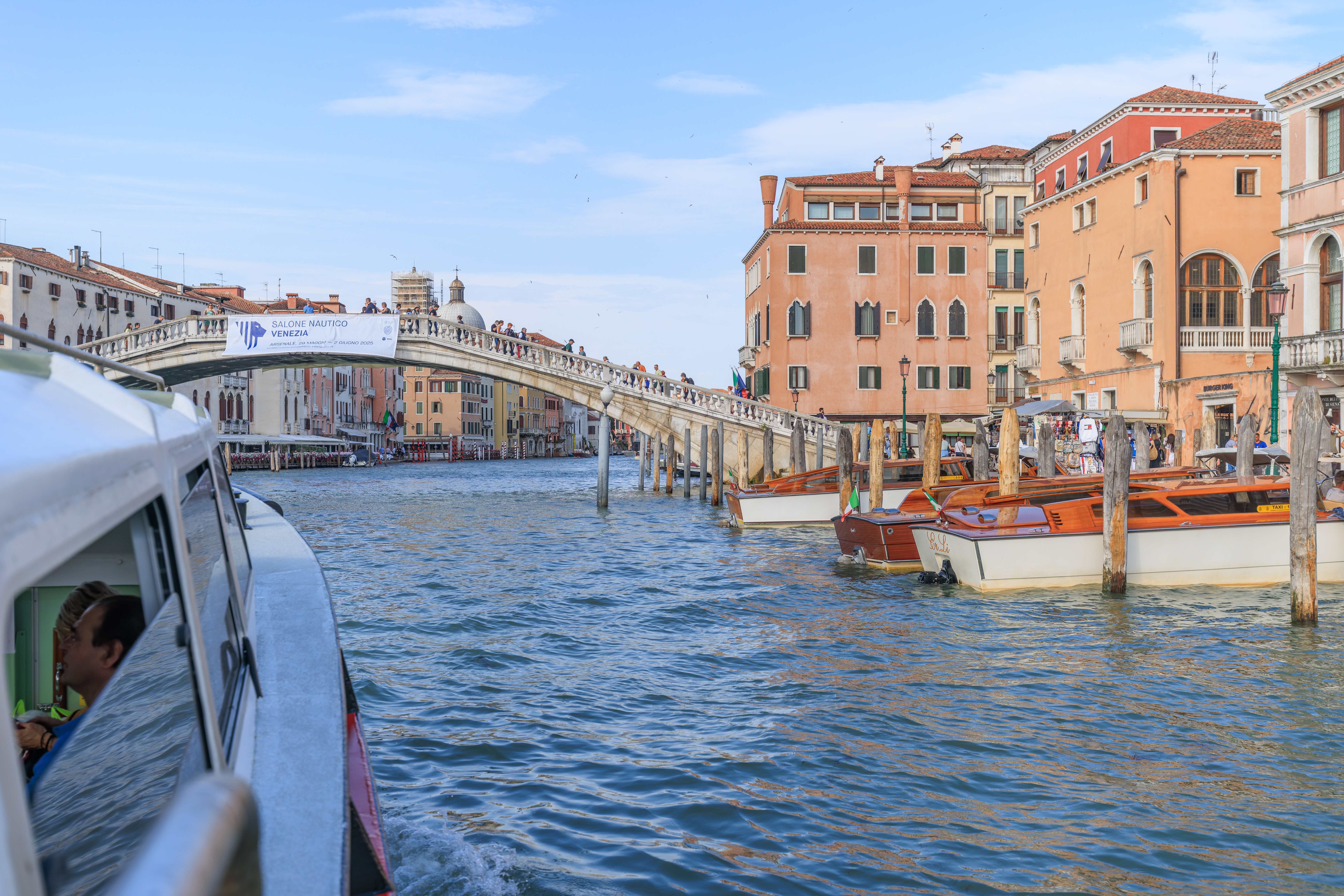
We boarded a Line 3 vaporetto to return to Murano.

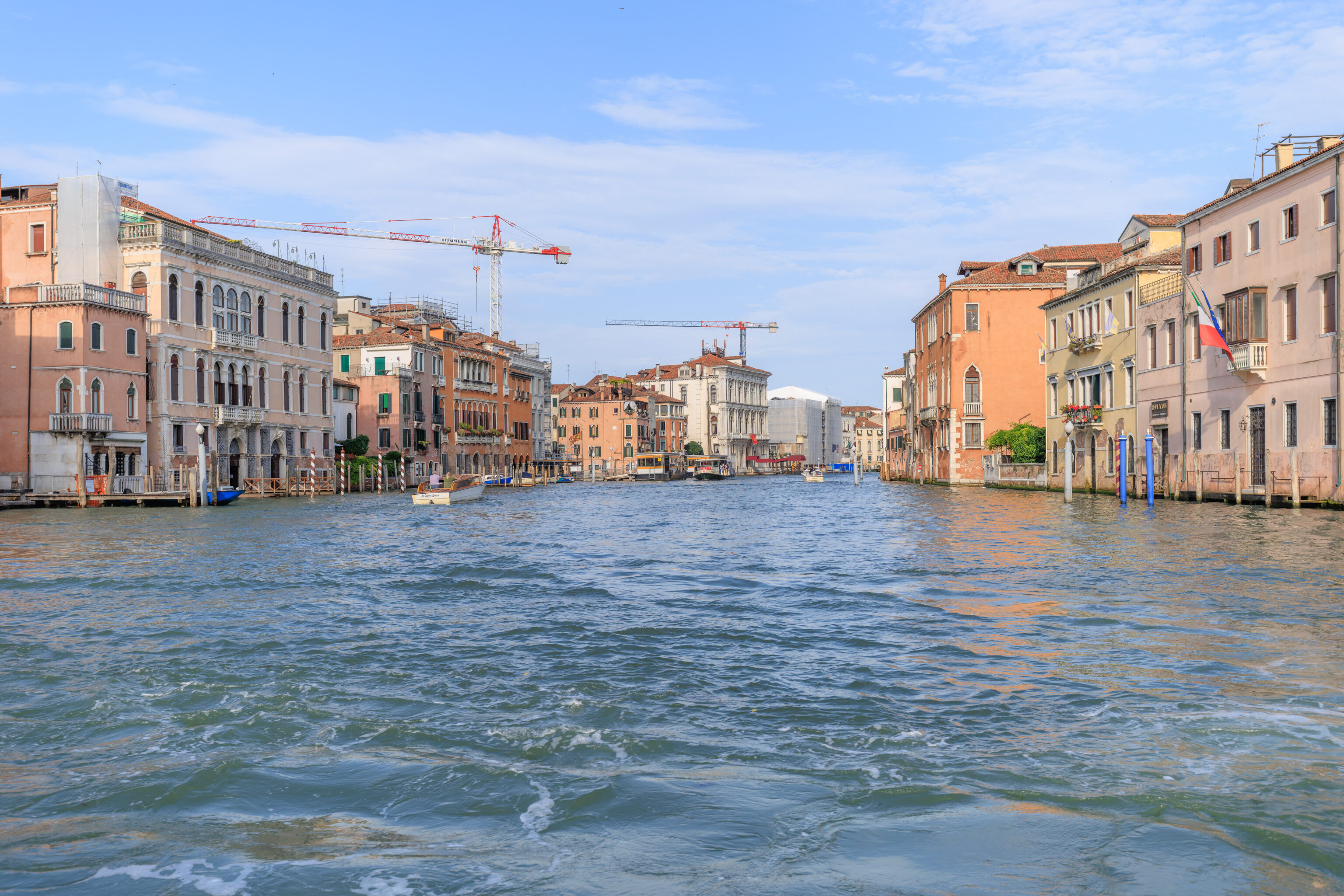
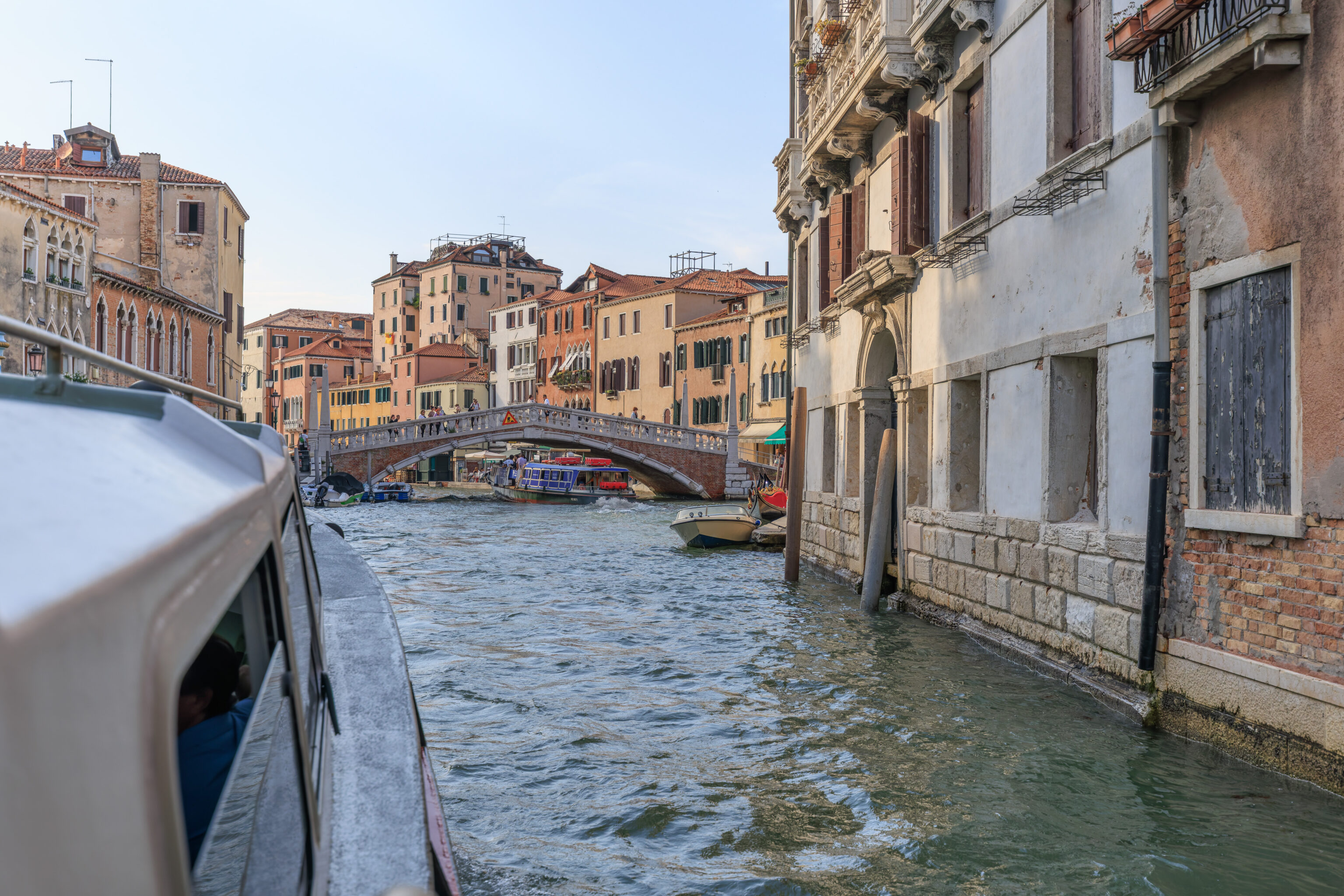
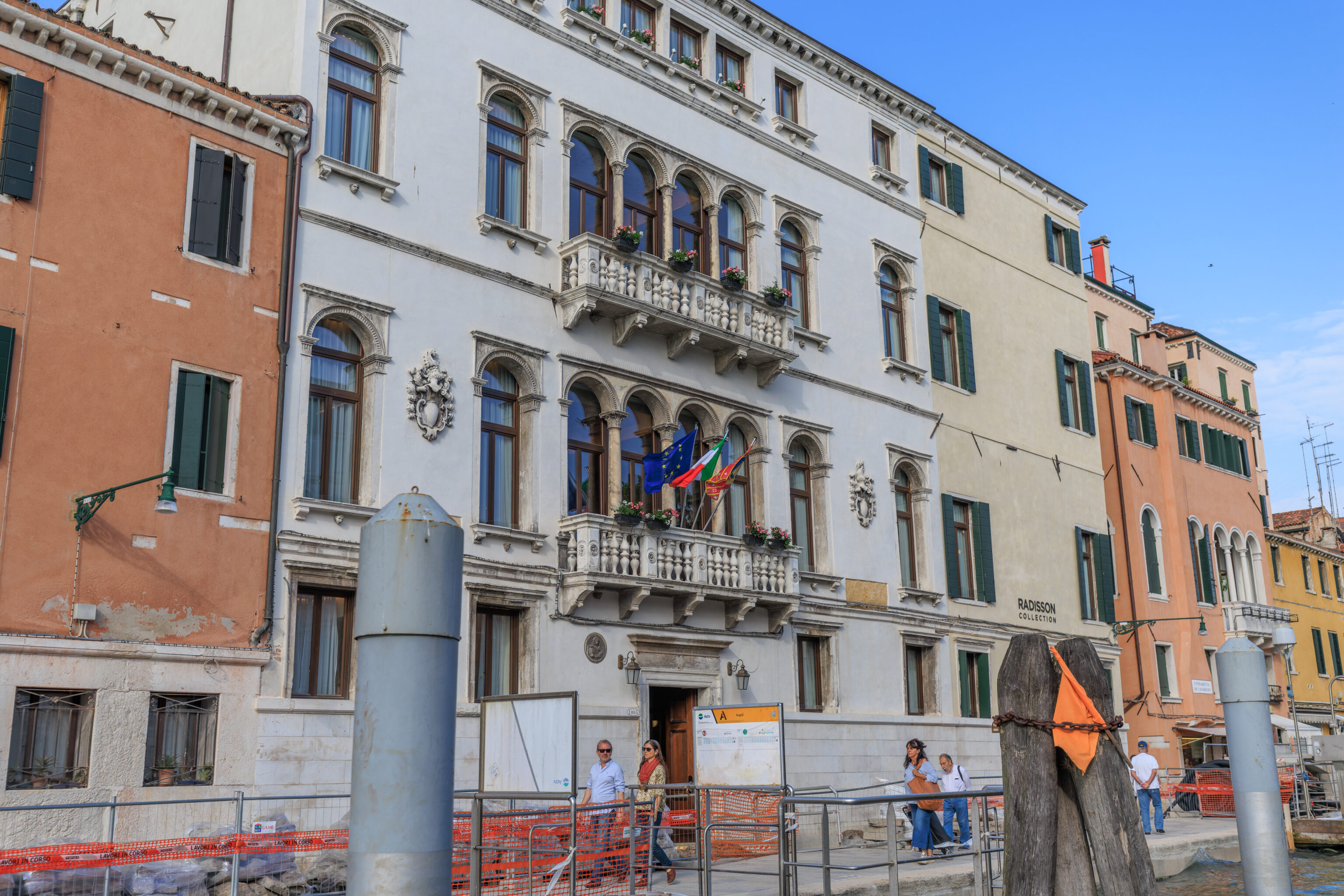
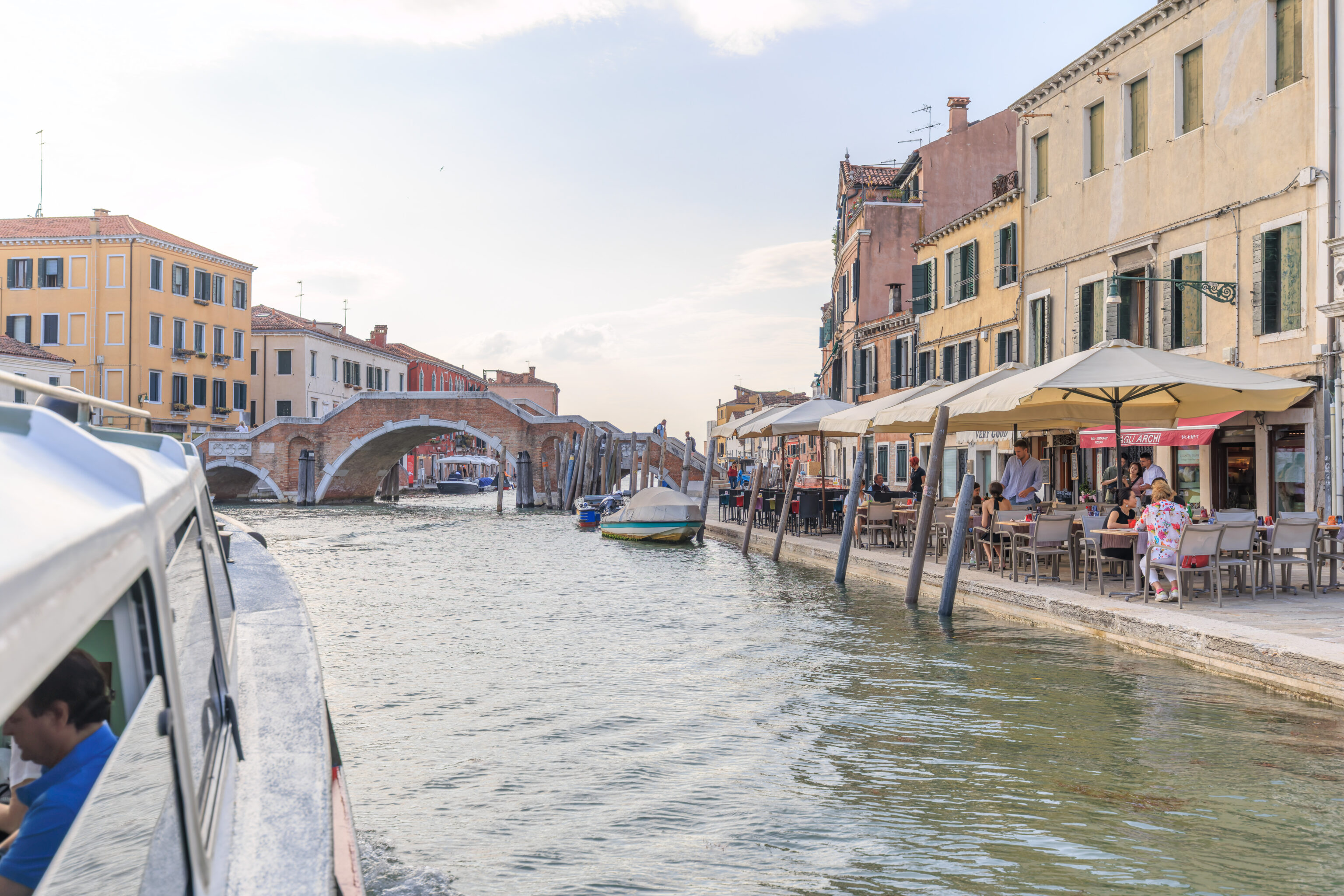
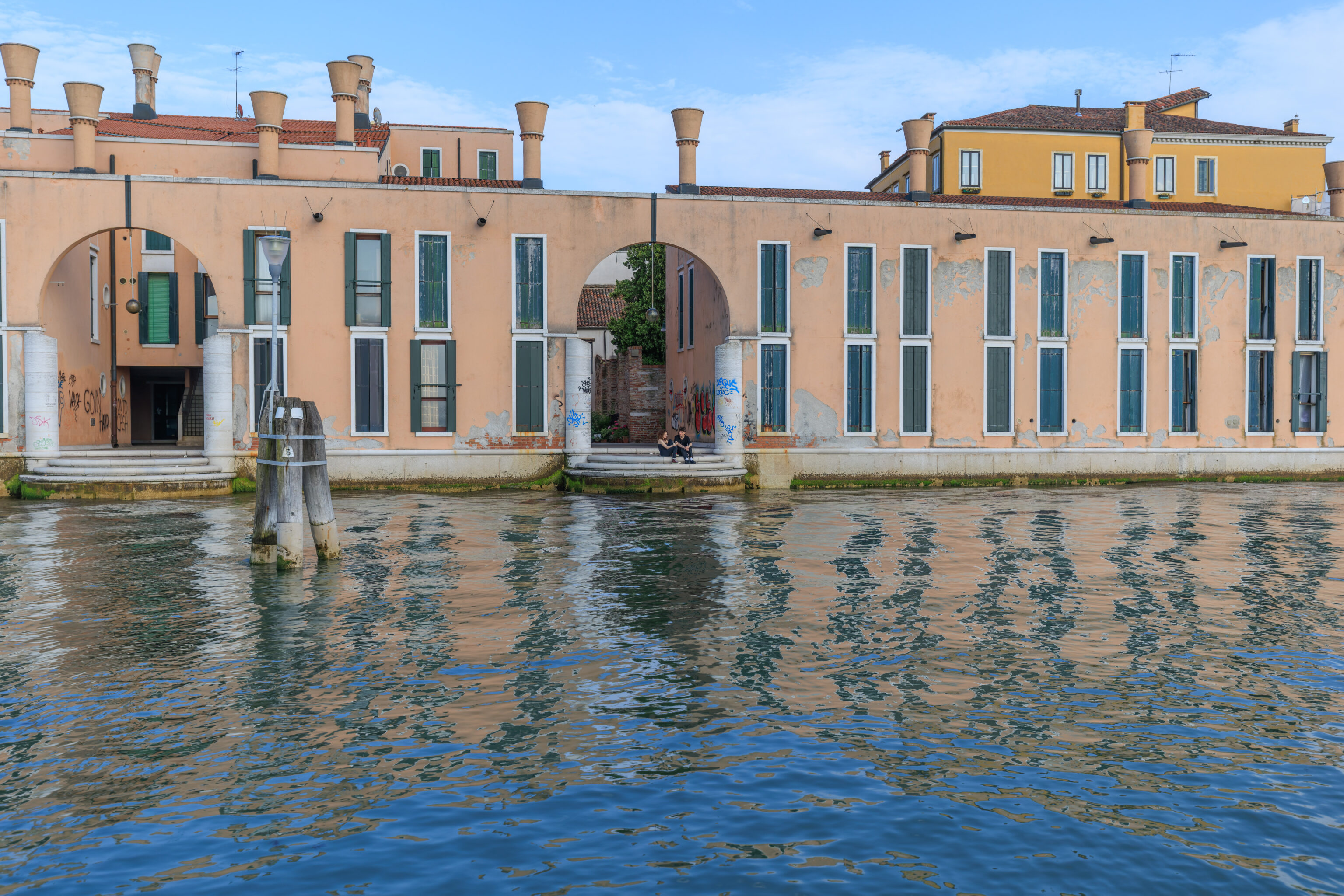
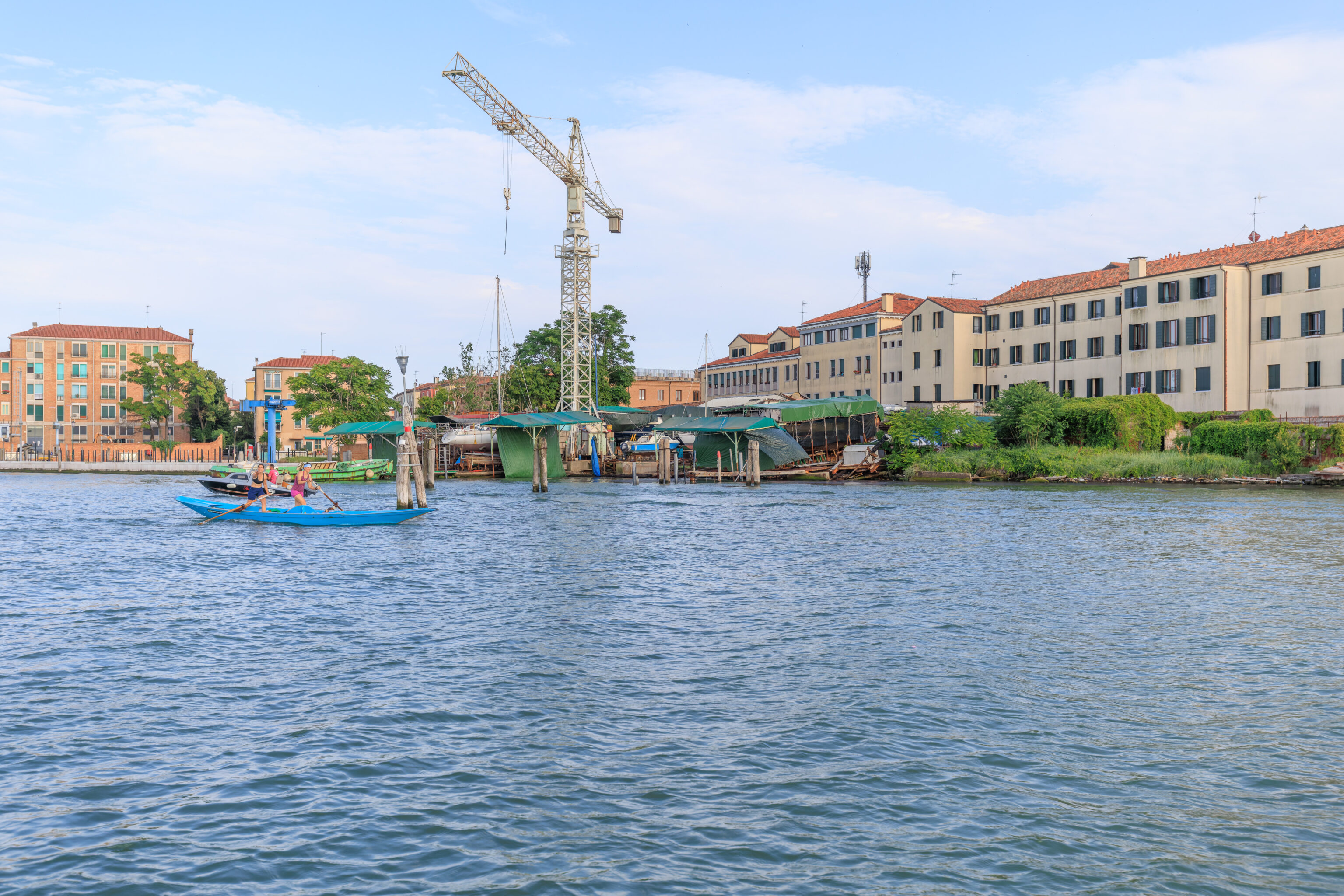
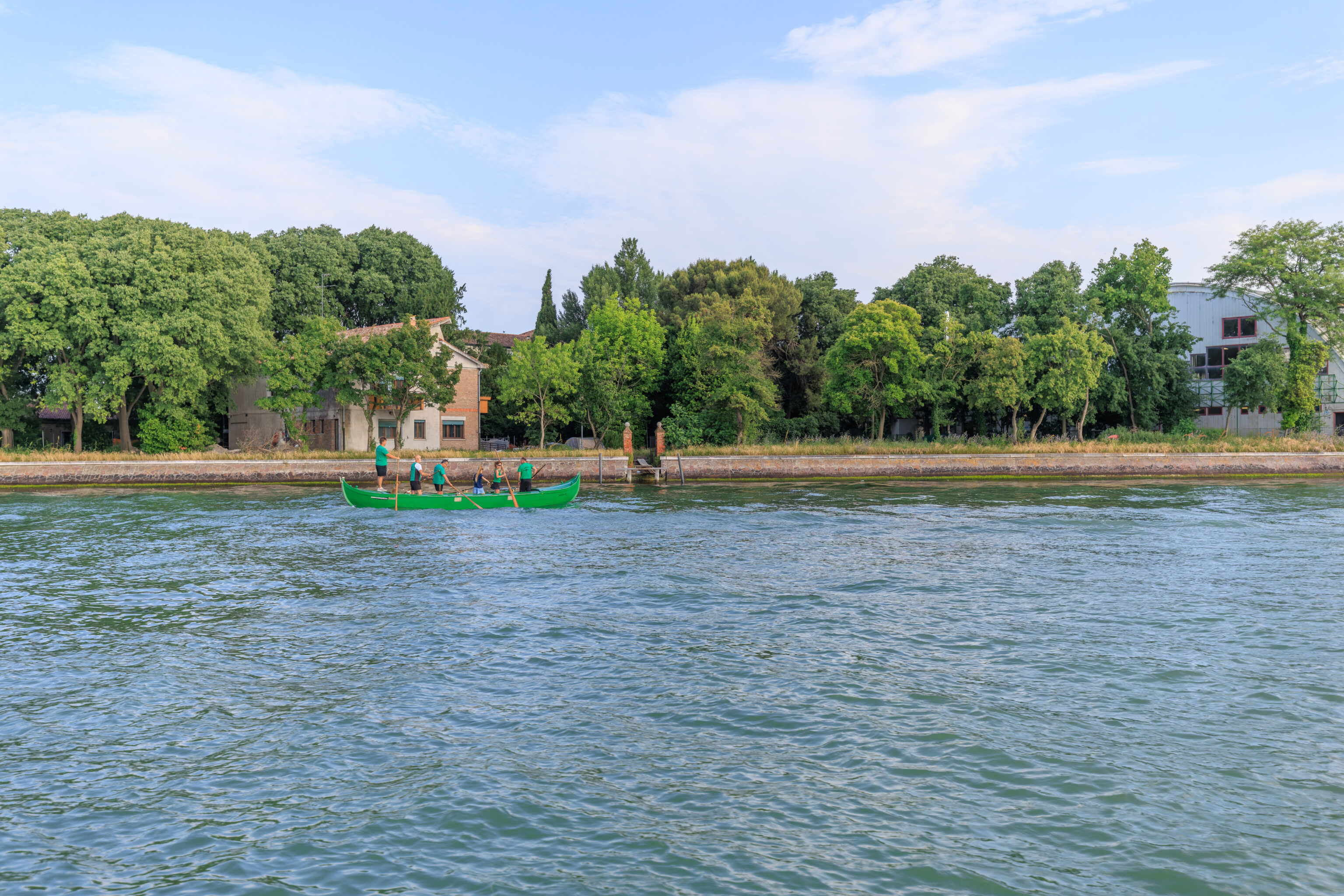
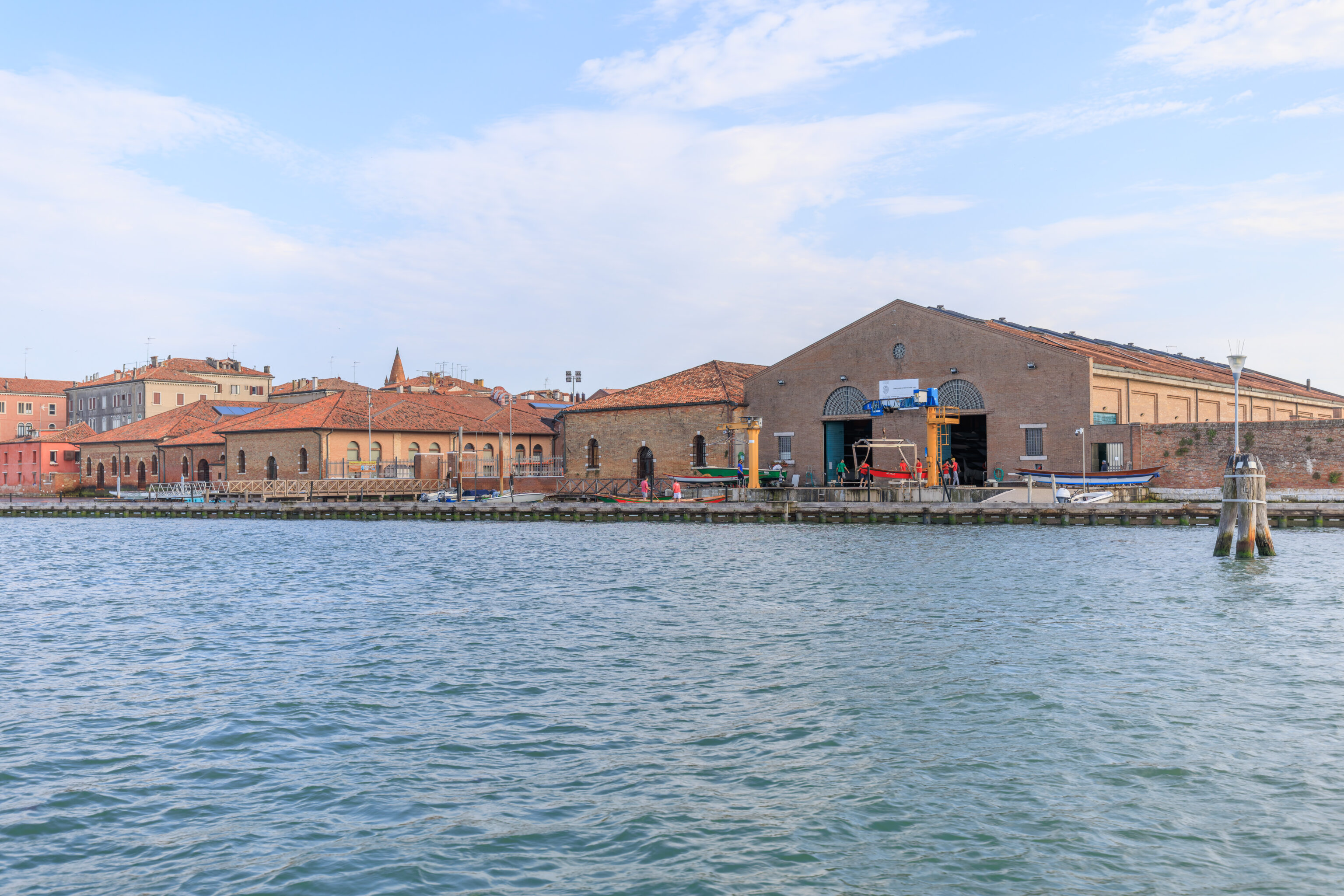
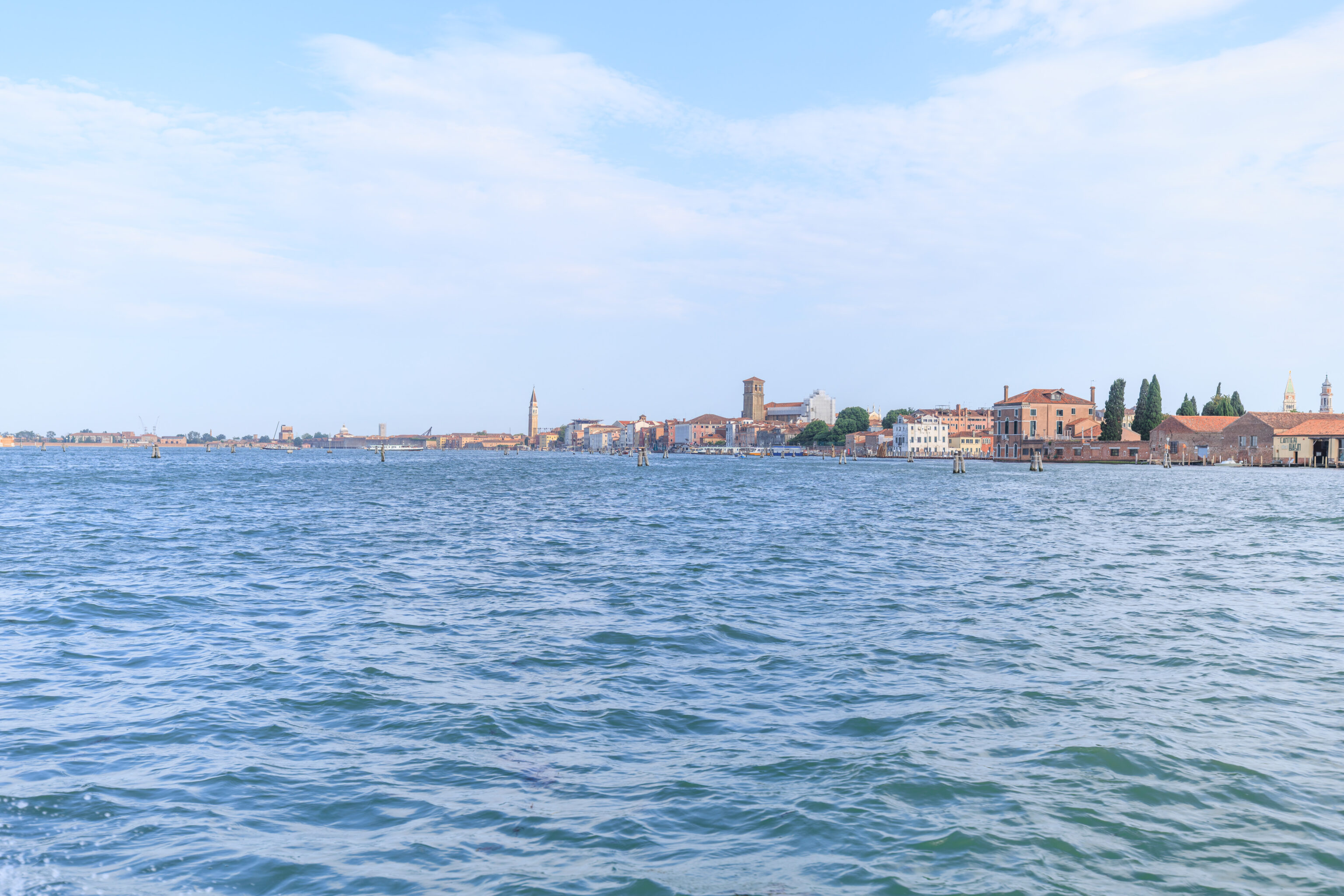
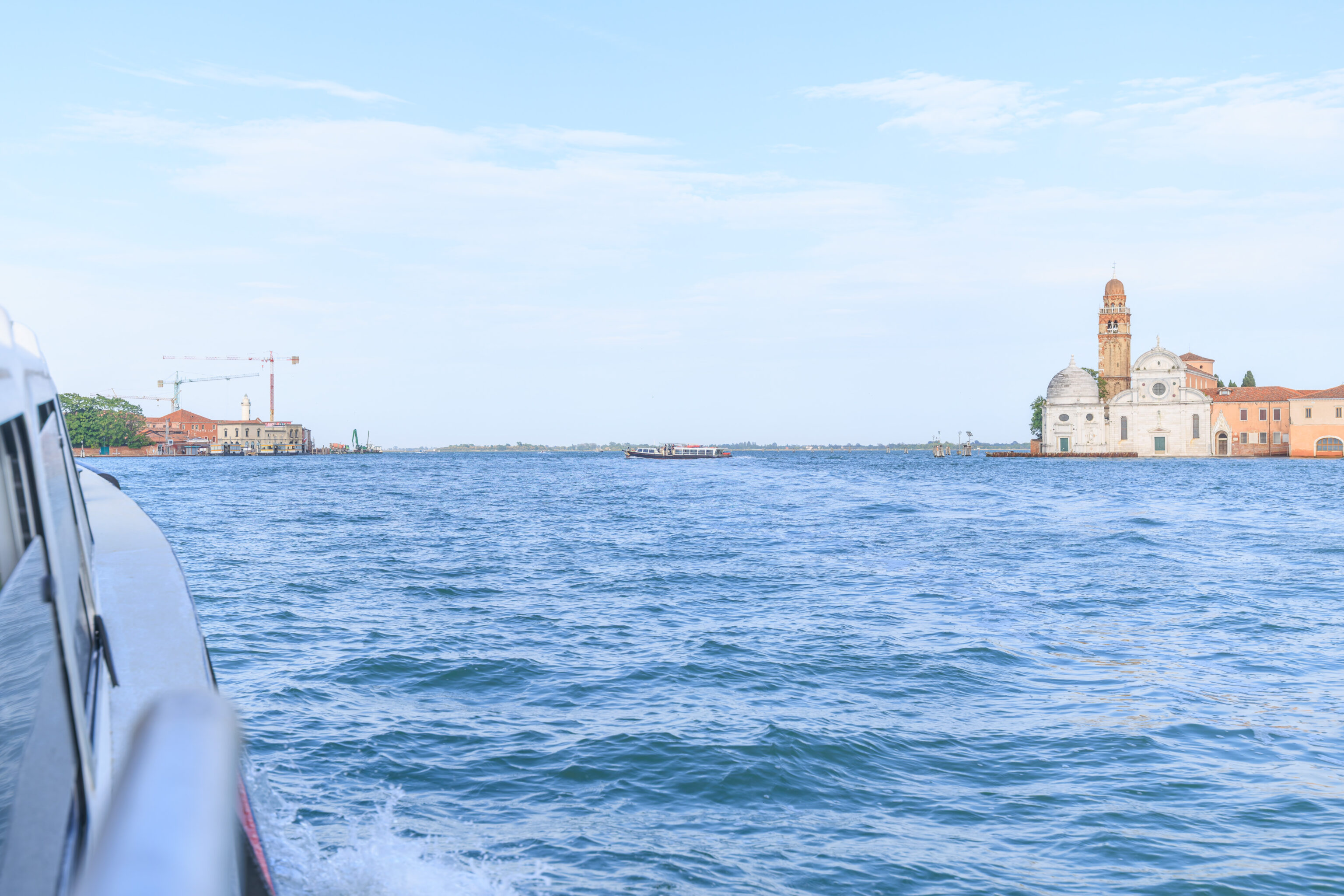
The view was very familiar!
We recorded a short video as we passed the Isola di San Michele.
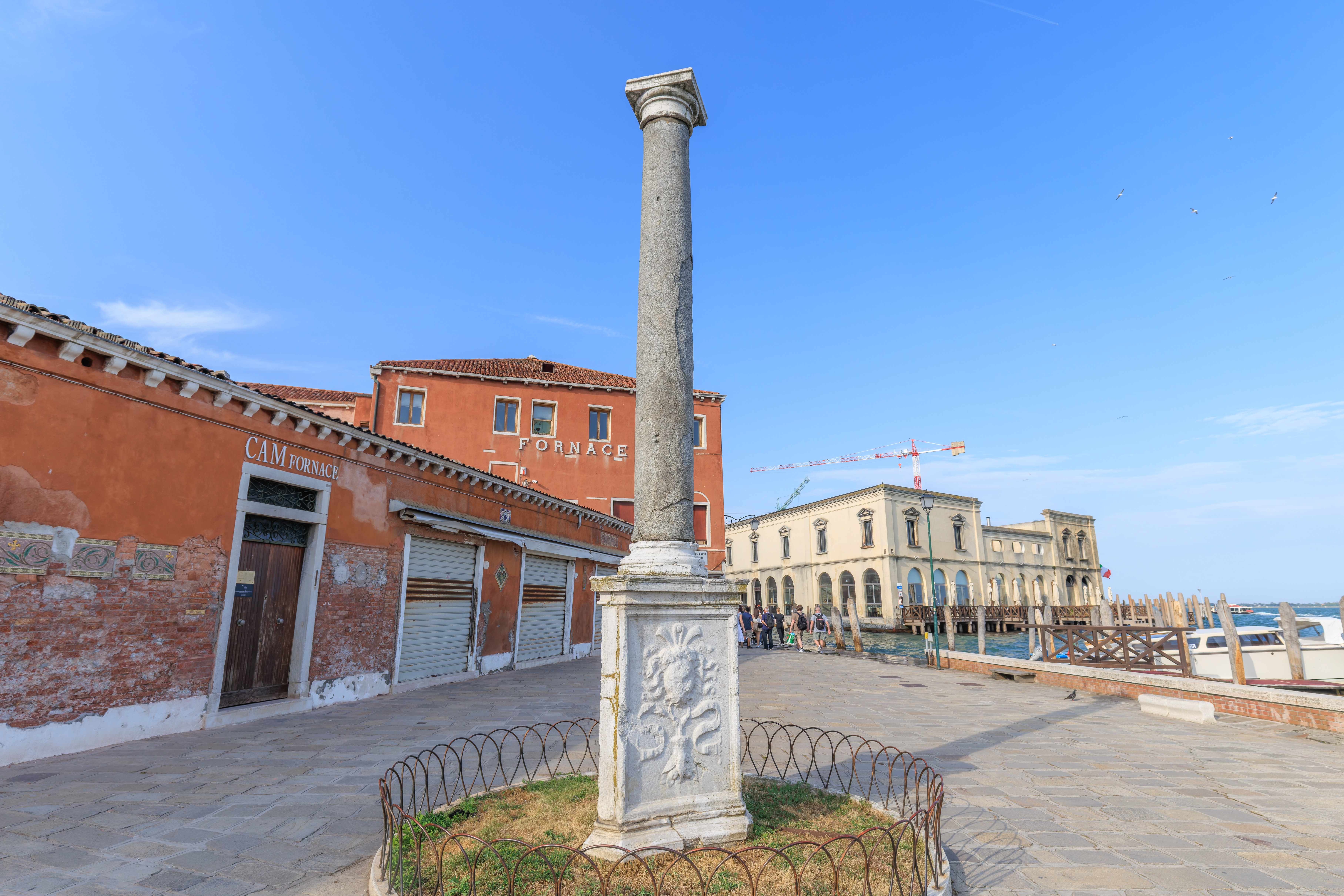
We decided to get off at Murano Colonna as the weather was nice and we wanted to walk this route again as the last time we were carrying heavy bags!
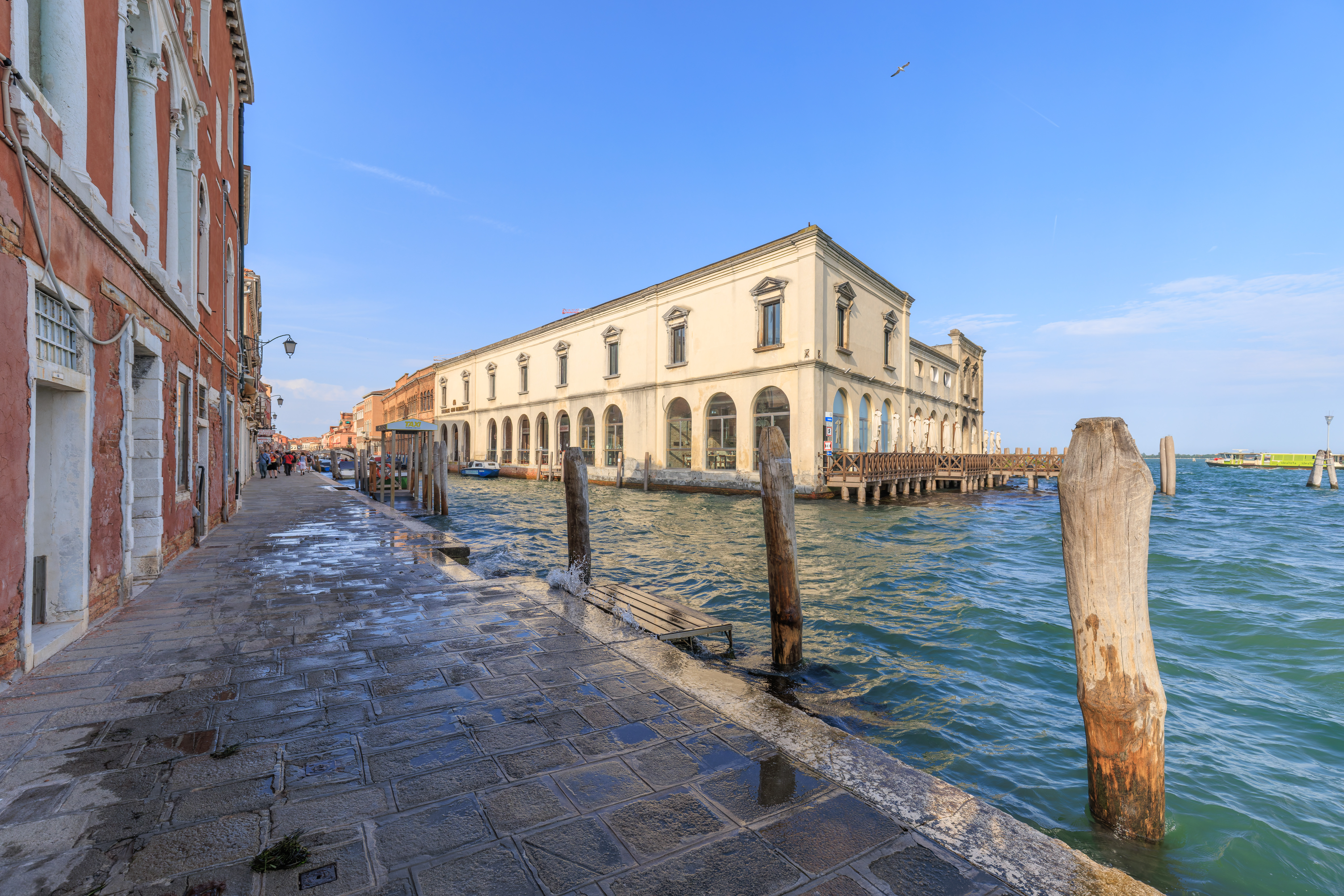
It must have been high tide as there was some water splashing up onto the sidewalk. Actually, what would one call this path? Perhaps sidewalk is appropriate as the canal is basically like a road!
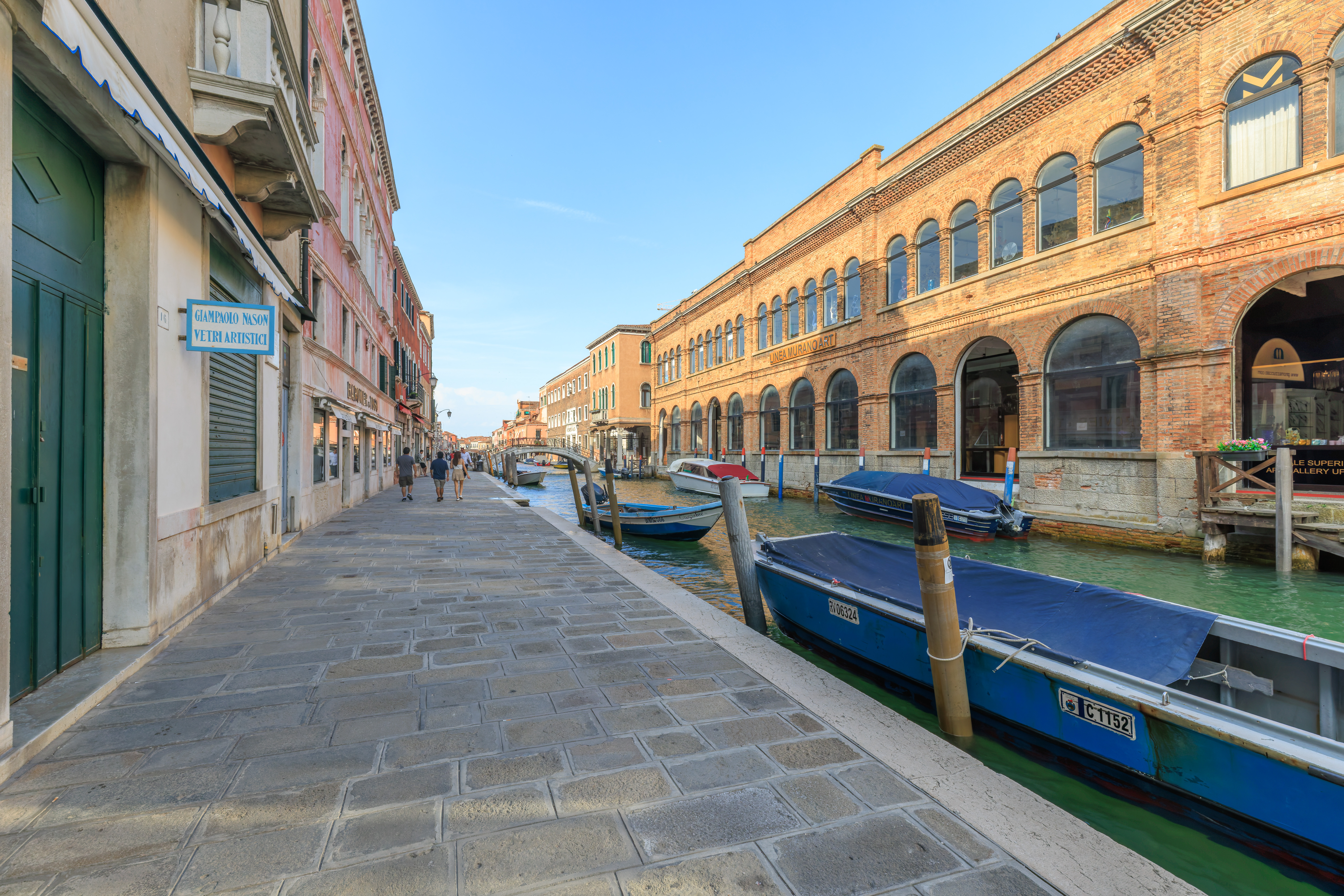
It was pretty quiet and most of the businesses seemed to be closed.
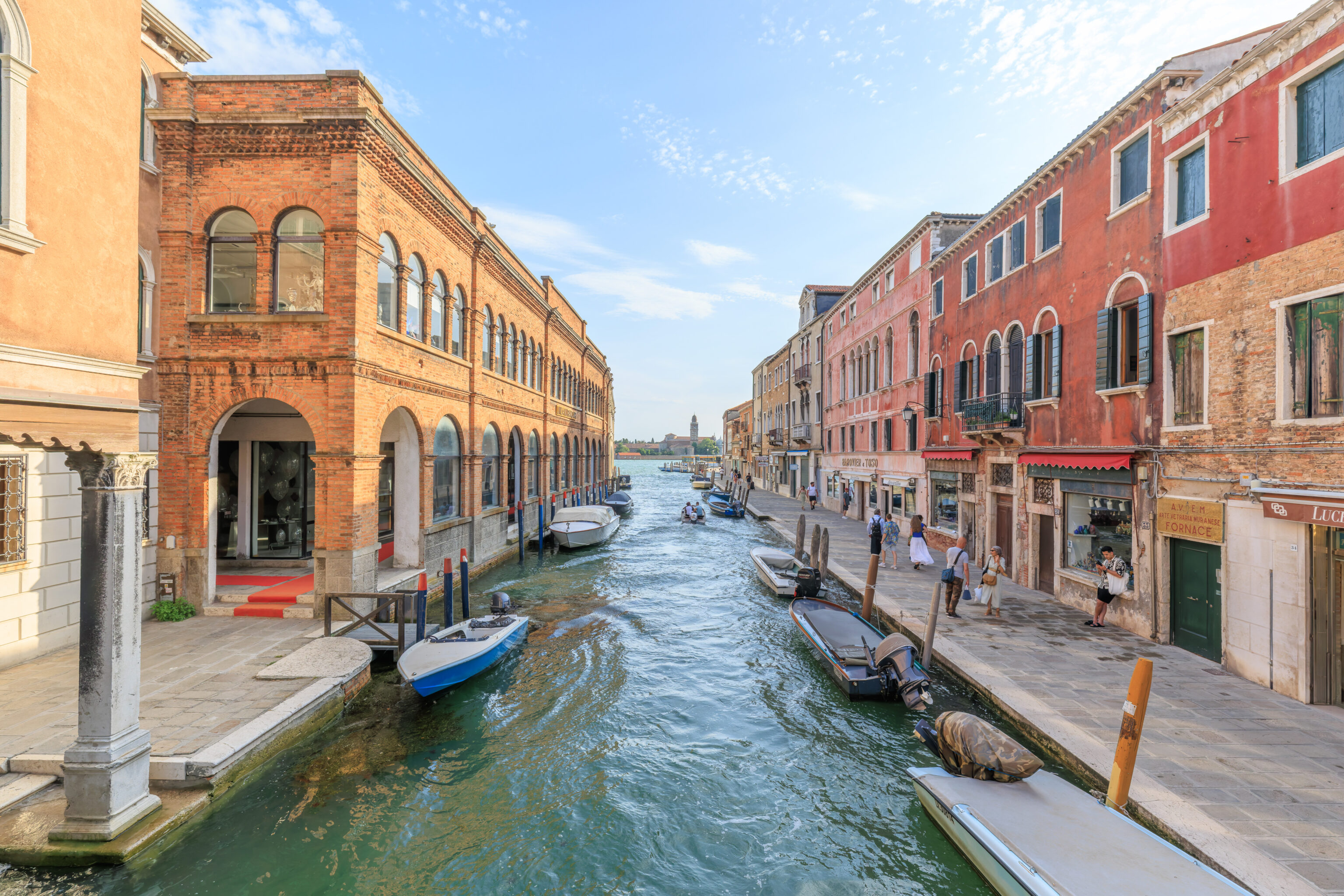
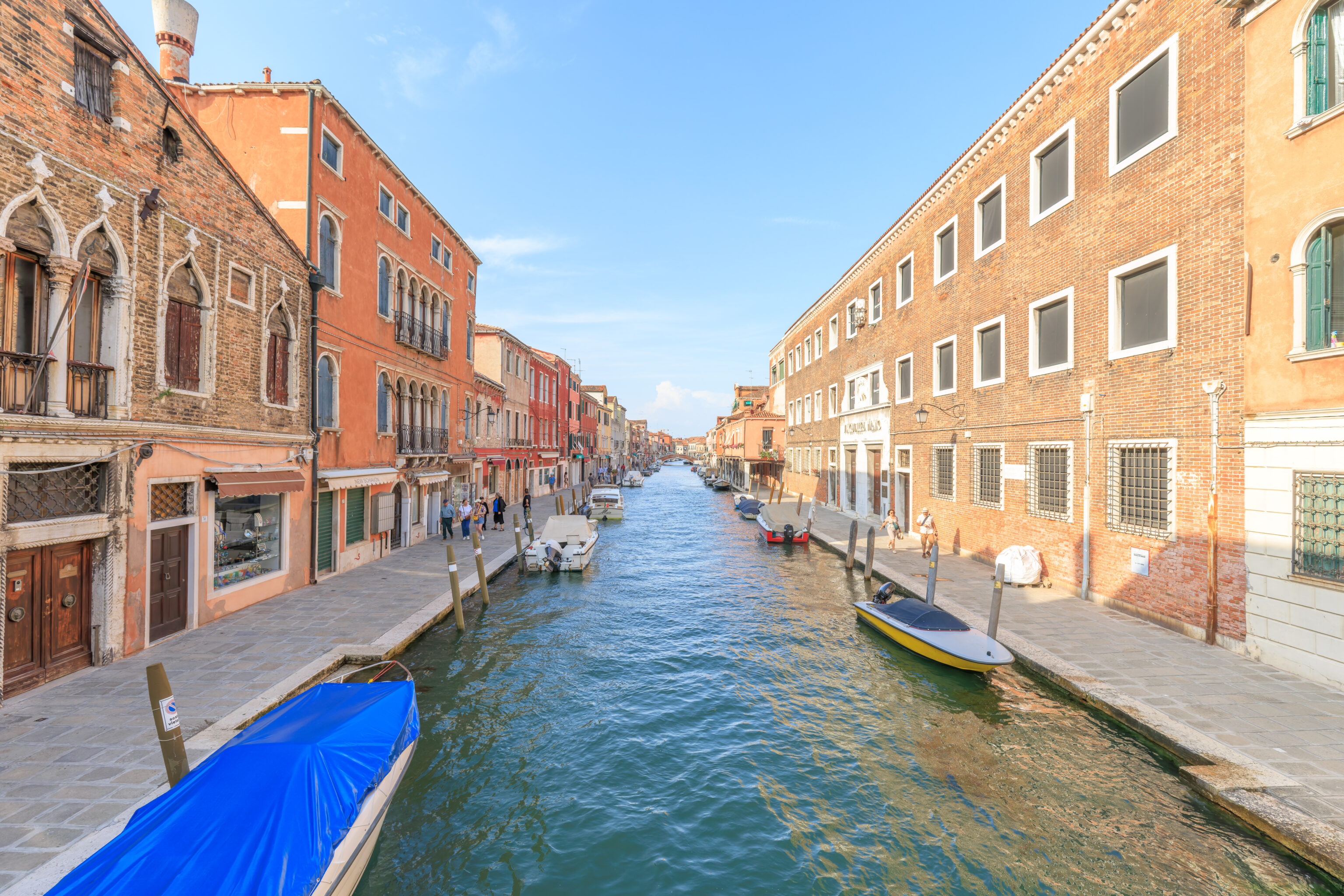
We walked up onto the first bridge over the canal here to take a look in both directions. It was nearly 6:15pm at this point.
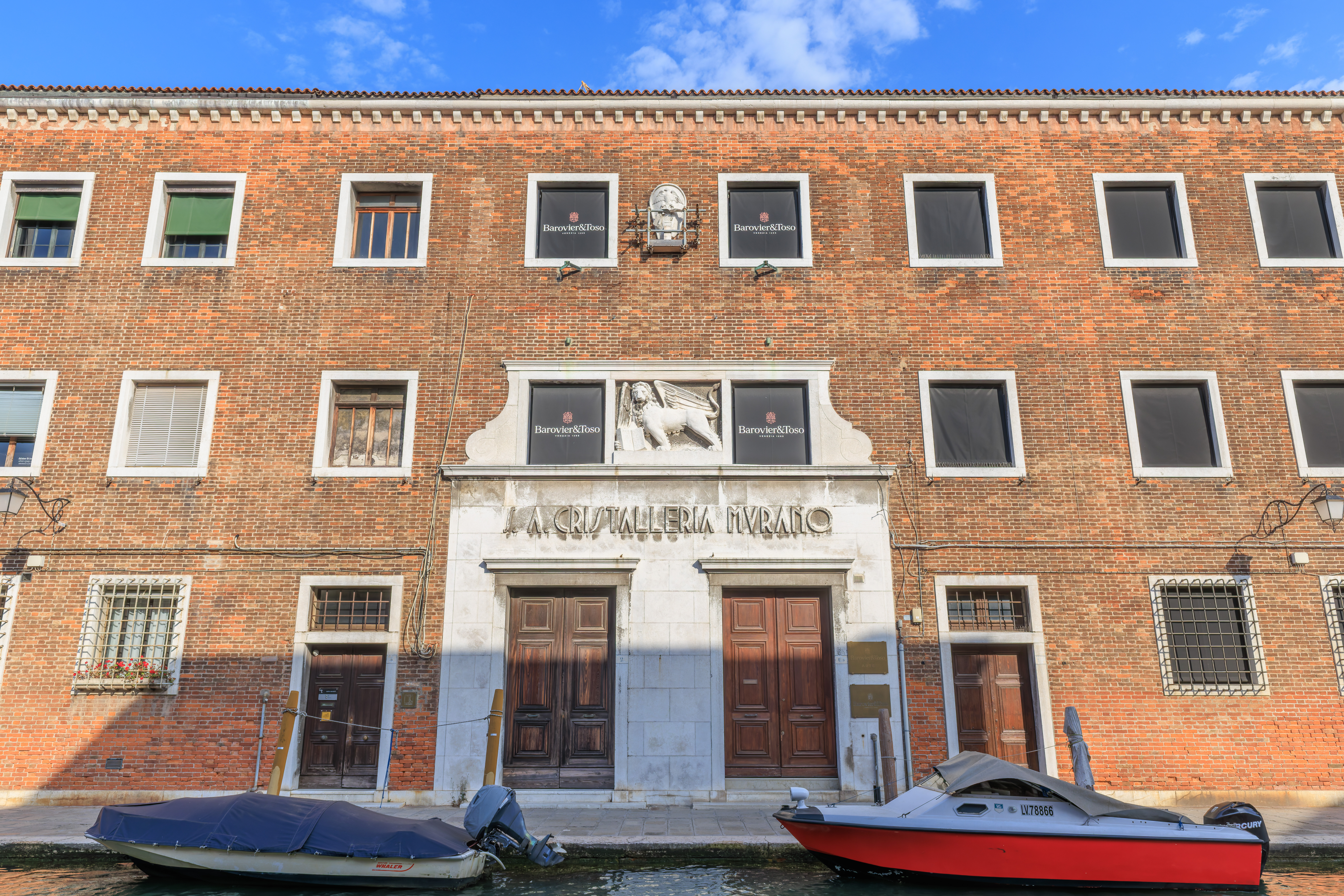
A large glass making business on the other side of the bridge.
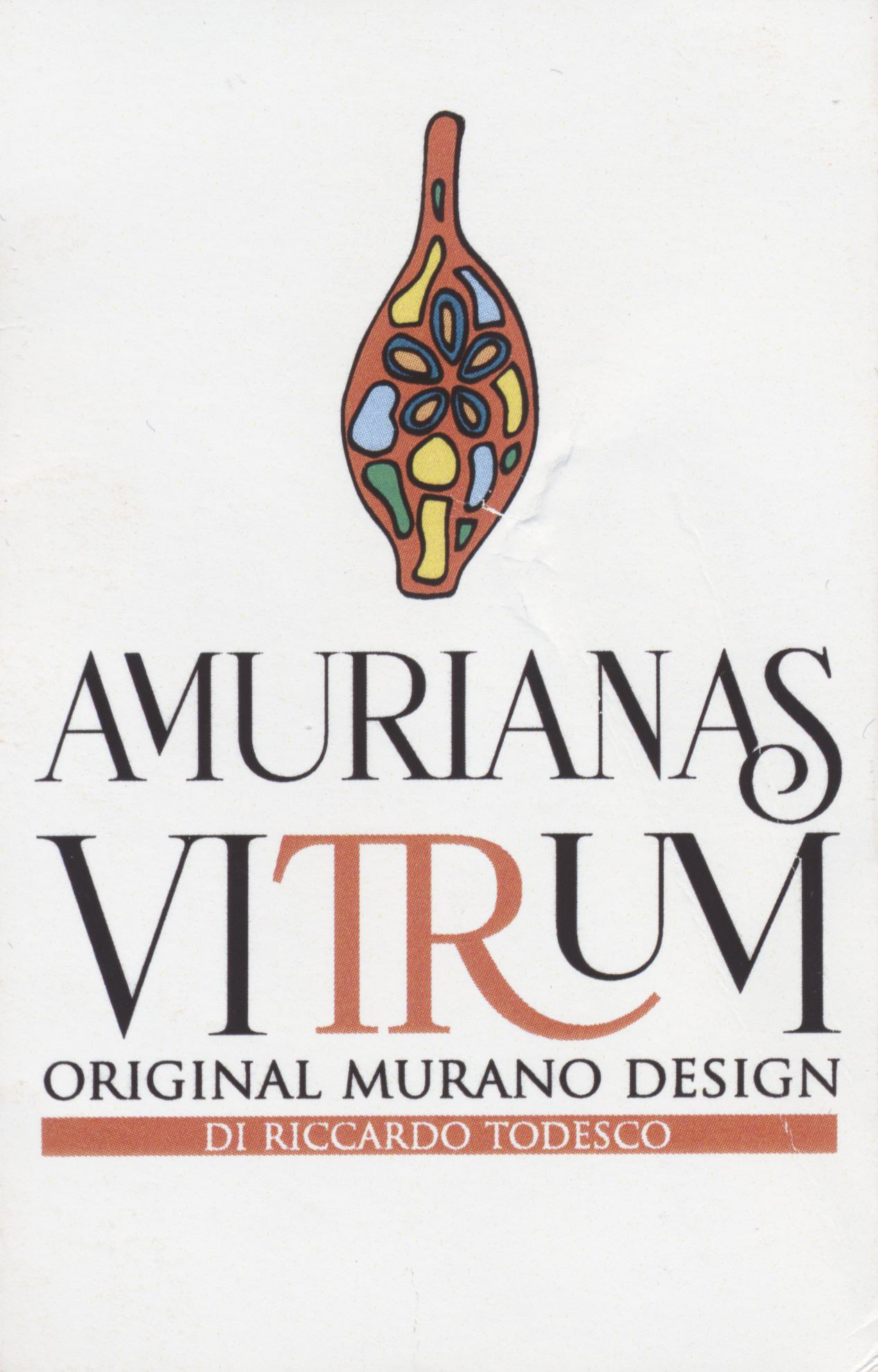
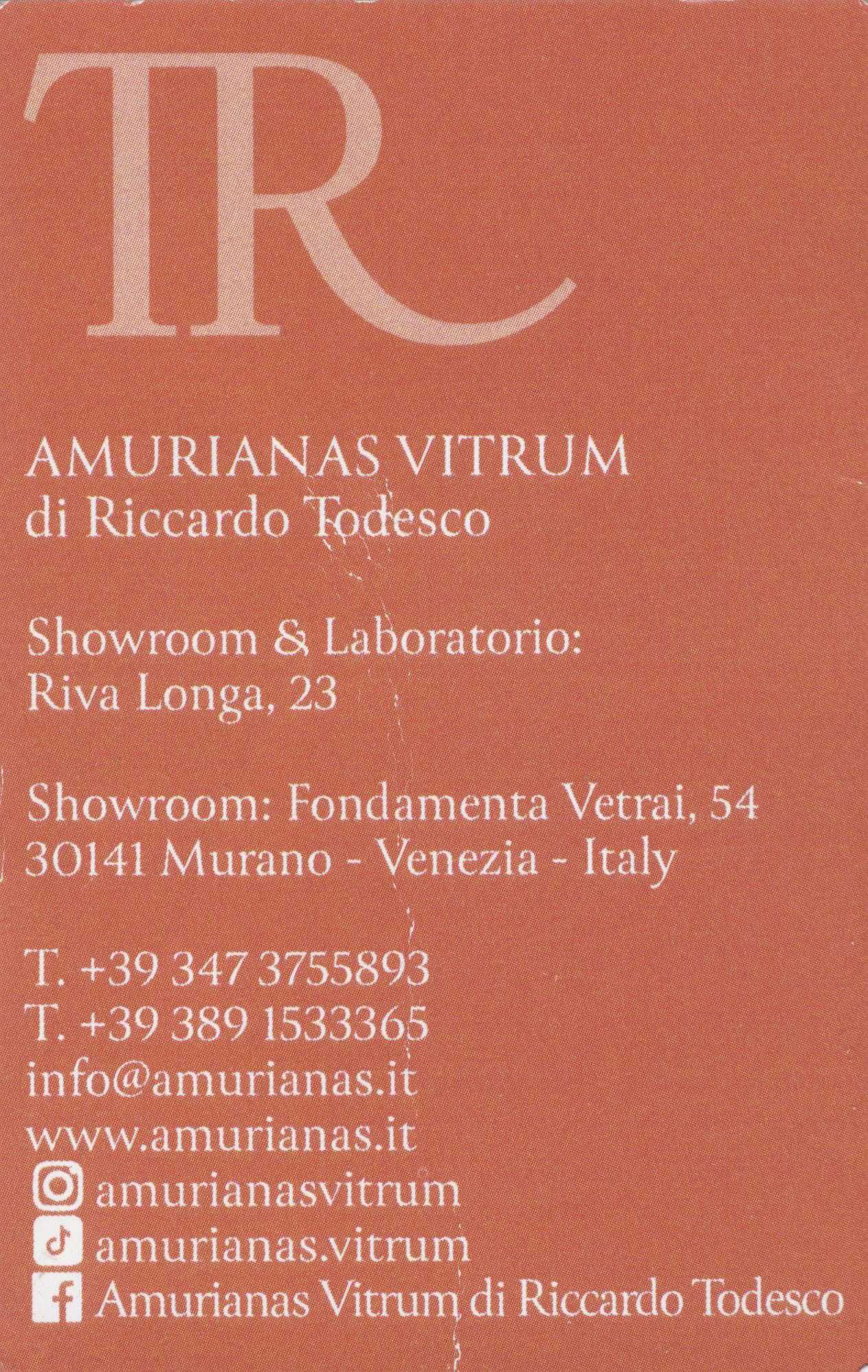
We did pop into a much smaller glass shop not far past this point. The shop was a family glass making business, Amurianas Vitrum. The father was the shopkeeper during our visit. They seemed to have some nice products. We do plan on buying some Murano glass but will need to shop around more tomorrow and of course visit the Murano Glass Museum, which is by our hotel!
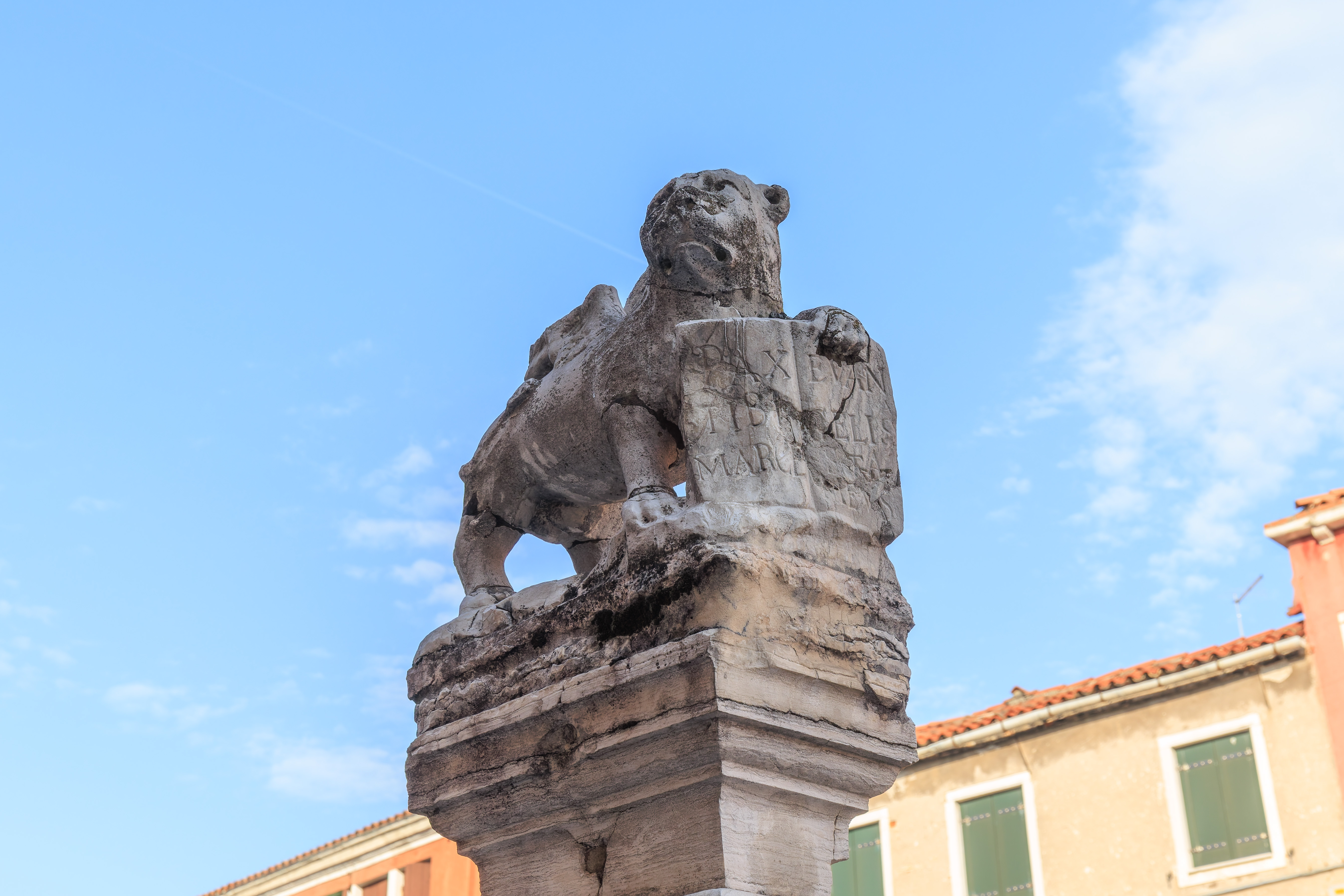
This dog on a column was at the next bridge. Possibly a winged dog?
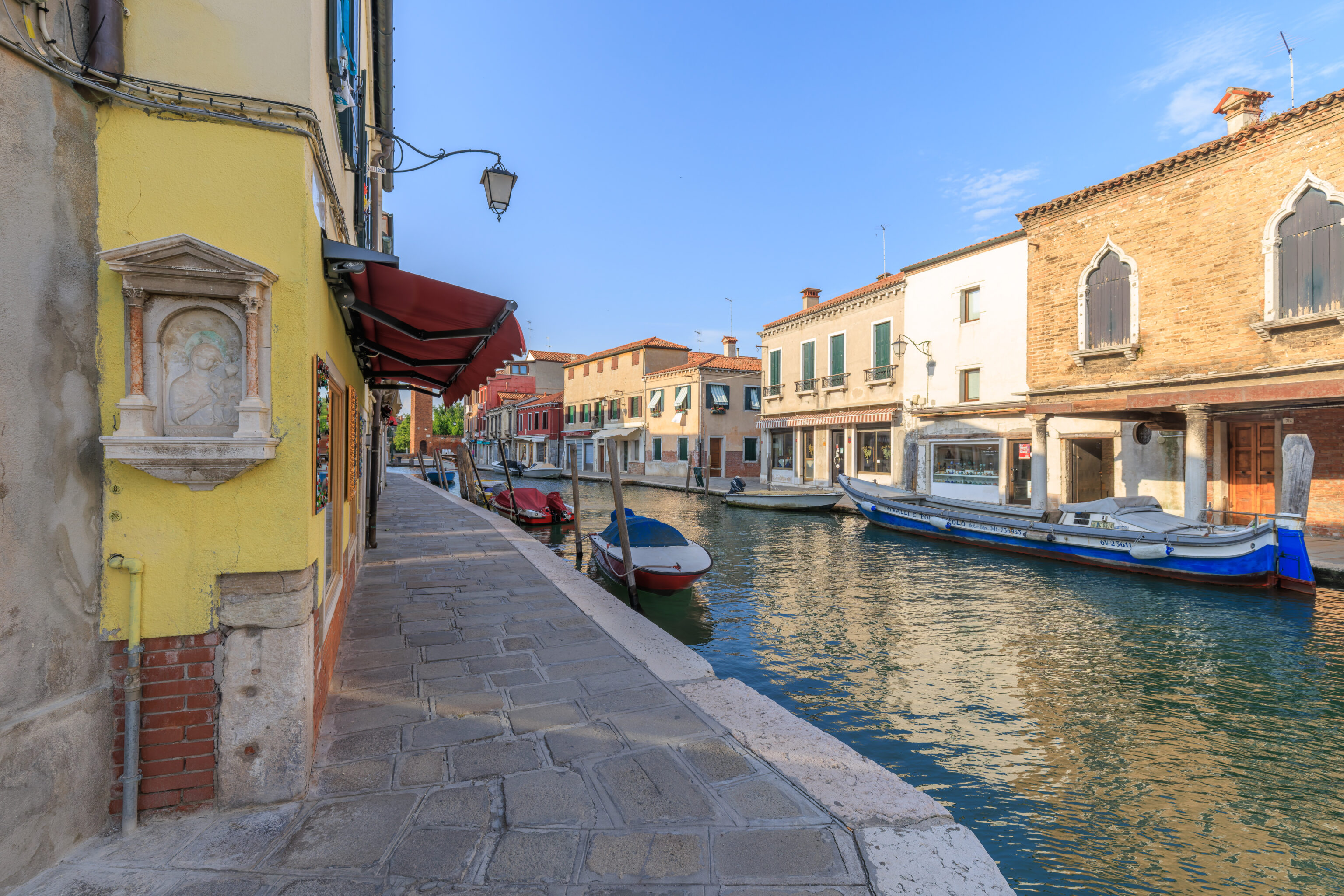
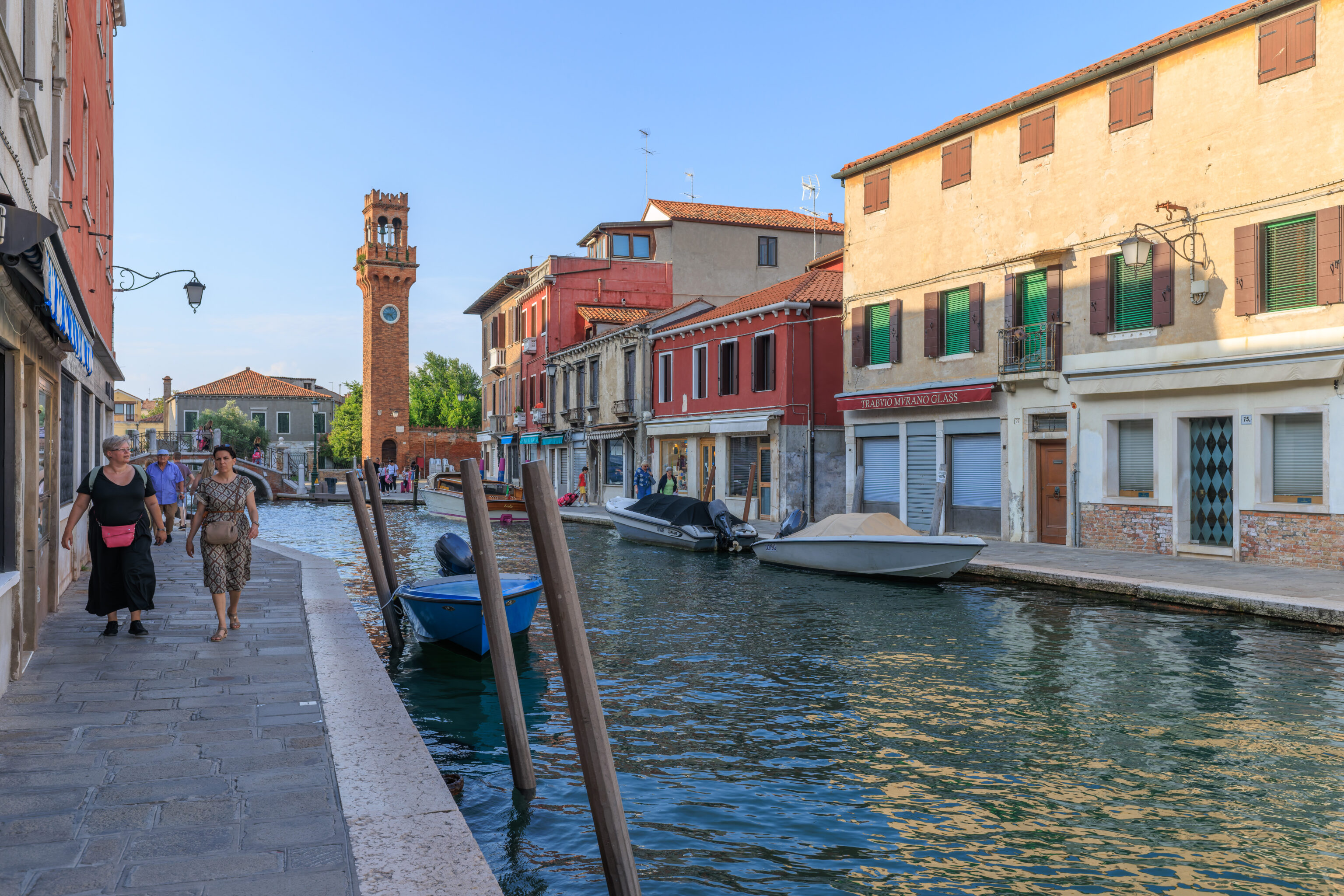
We continued on. We were actually a bit hungry for a snack but didn’t see many options. We didn’t really want to have a full meal.
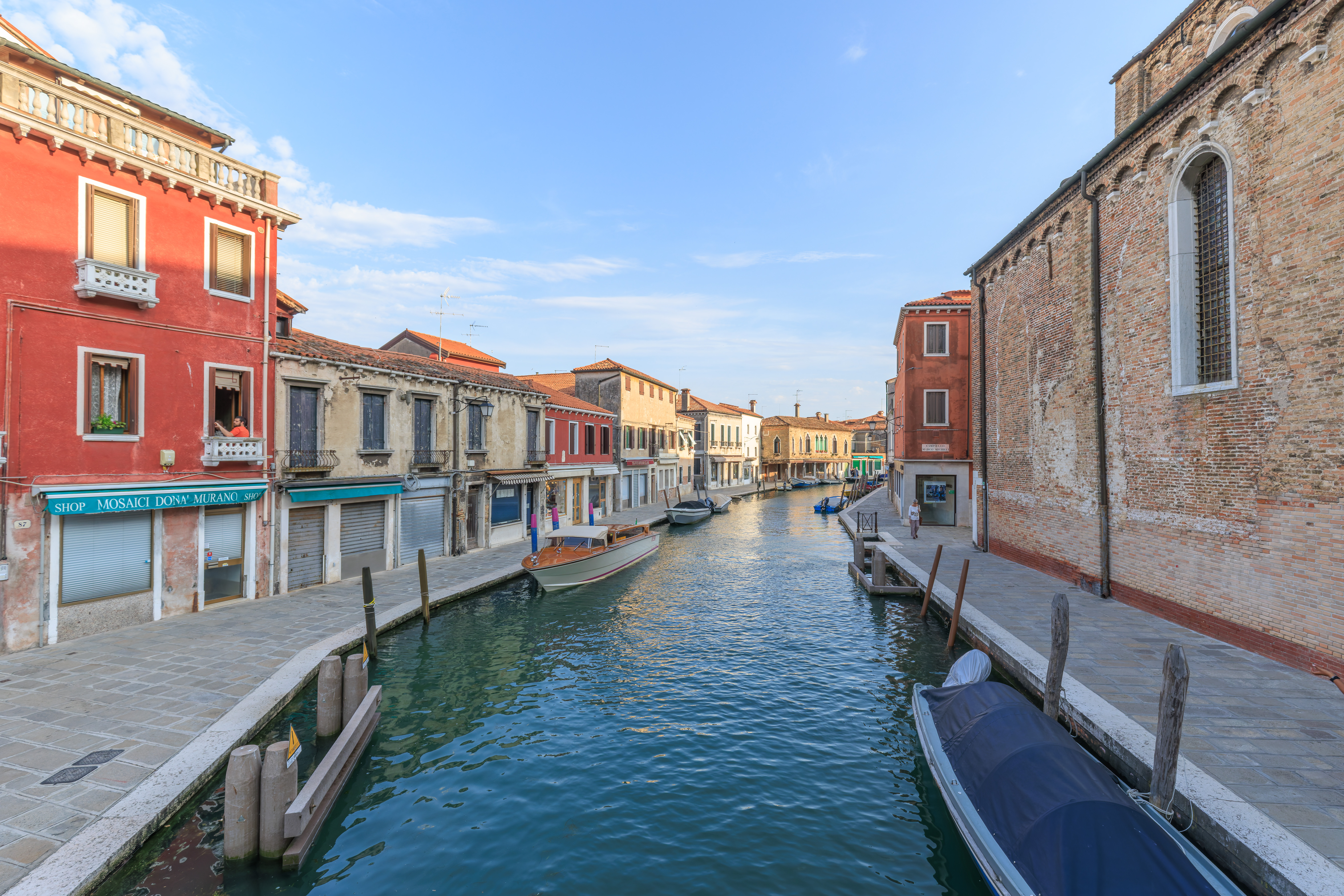
We walked across the final bridge before there is a T intersection at the end of this canal. Not in this direction though, this is to the south, where we came from.

This was the view to the north, where the intersection is located. There is piazza on the other side, though like the rest of the area, was not busy.
We wanted to visit Il Bocconcino, which is at this corner, as they seem serve panninis and such. But, they were closed.

The canal that goes east/west here is actually roped off at the moment as the bridge to the west is being reconstructed. That bridge, which we apparently have not photographed yet, is closed and a temporary bridge has been put in place next to it.
The Murano Museo quay, the one in front of the Hyatt Centric, is actually visible here in the background.
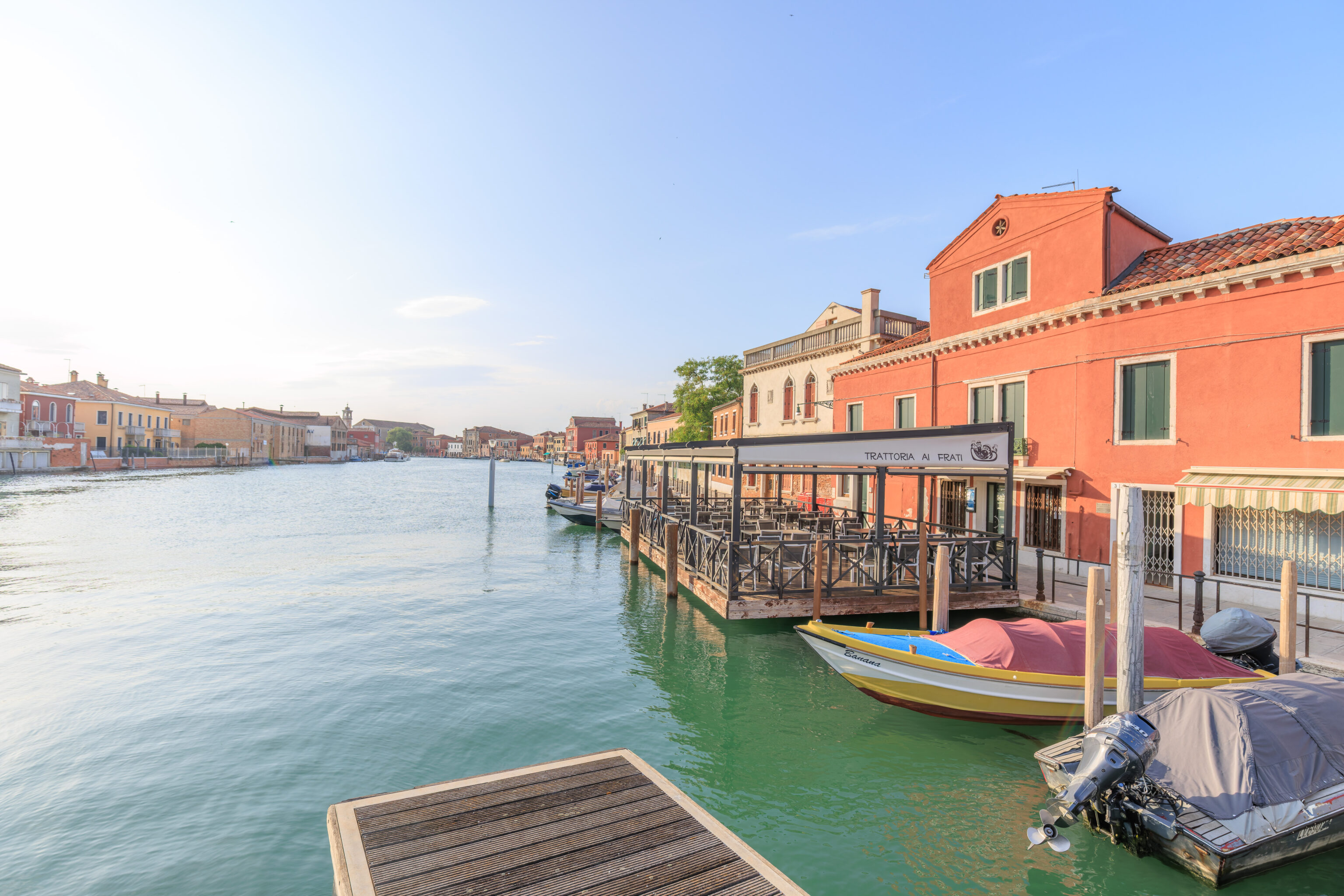
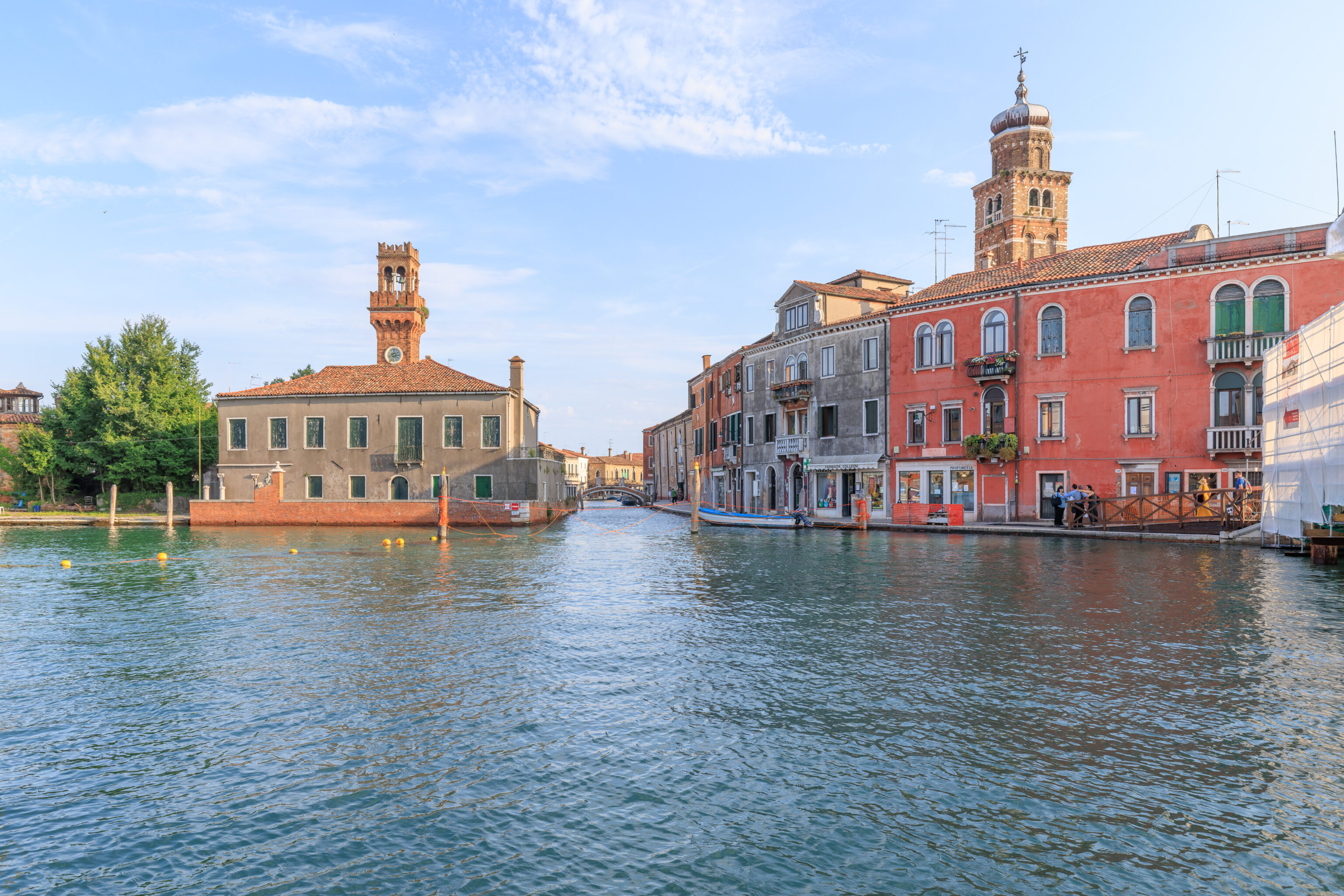
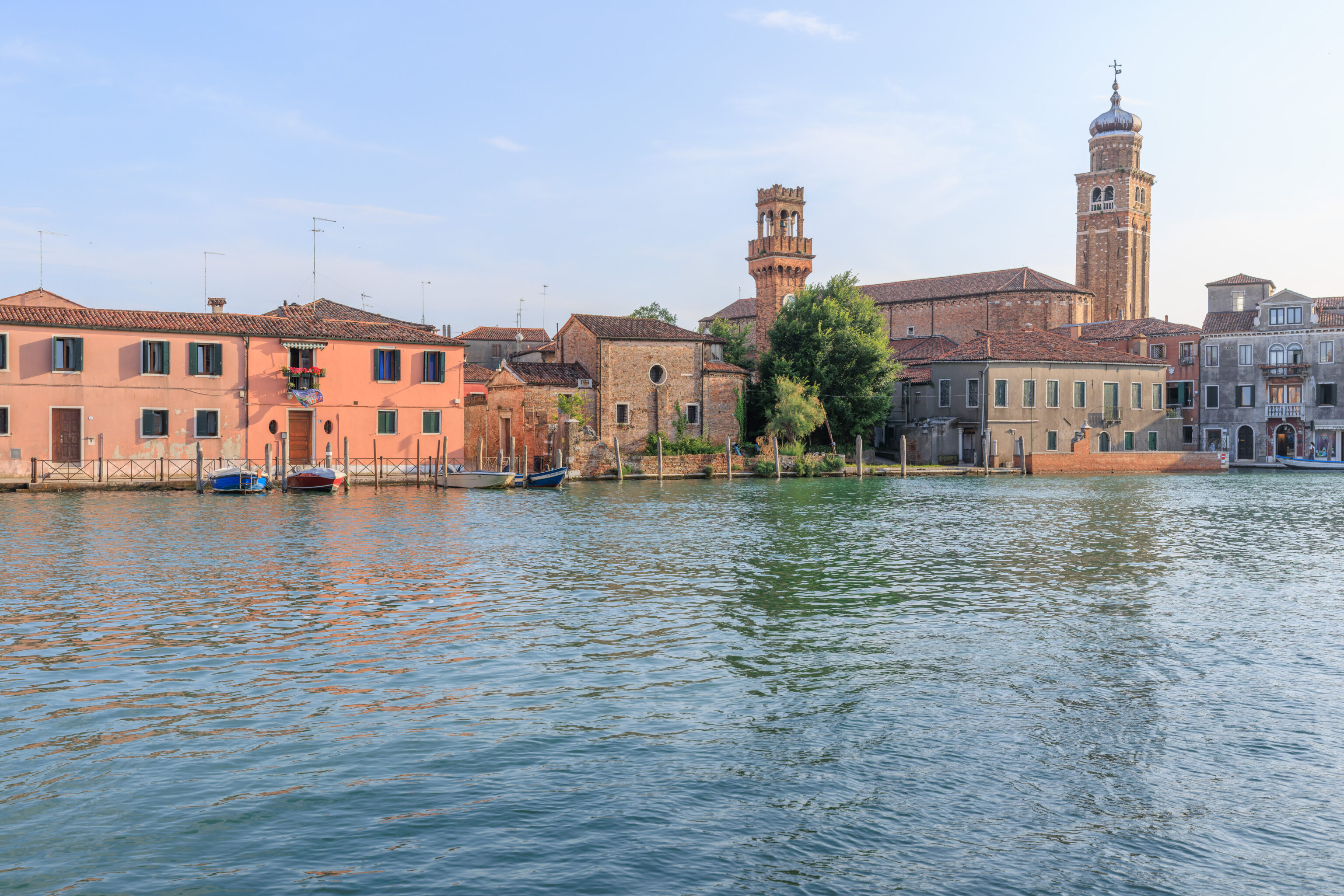
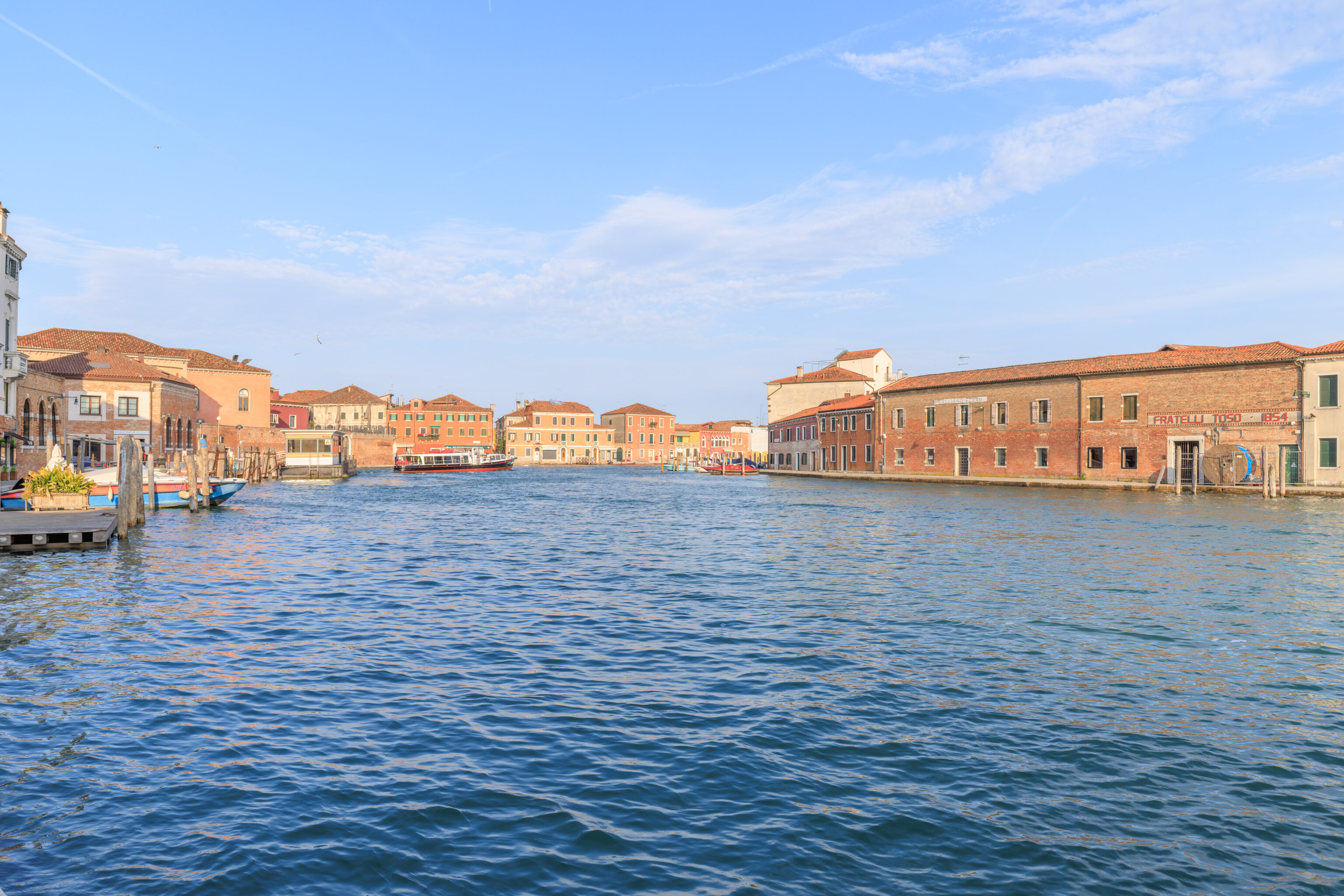
We continued on to return to the Hyatt Centric. But, we made a slight detour. We visited the small Coop supermarket which is very close to the hotel. We don’t know if the Coop here is the same as the Coop in Switzerland, however, other than some color differences in the logo the branding seems the same.
We ended up just getting some snacks – potato chips from Milano and a liter of apple juice.
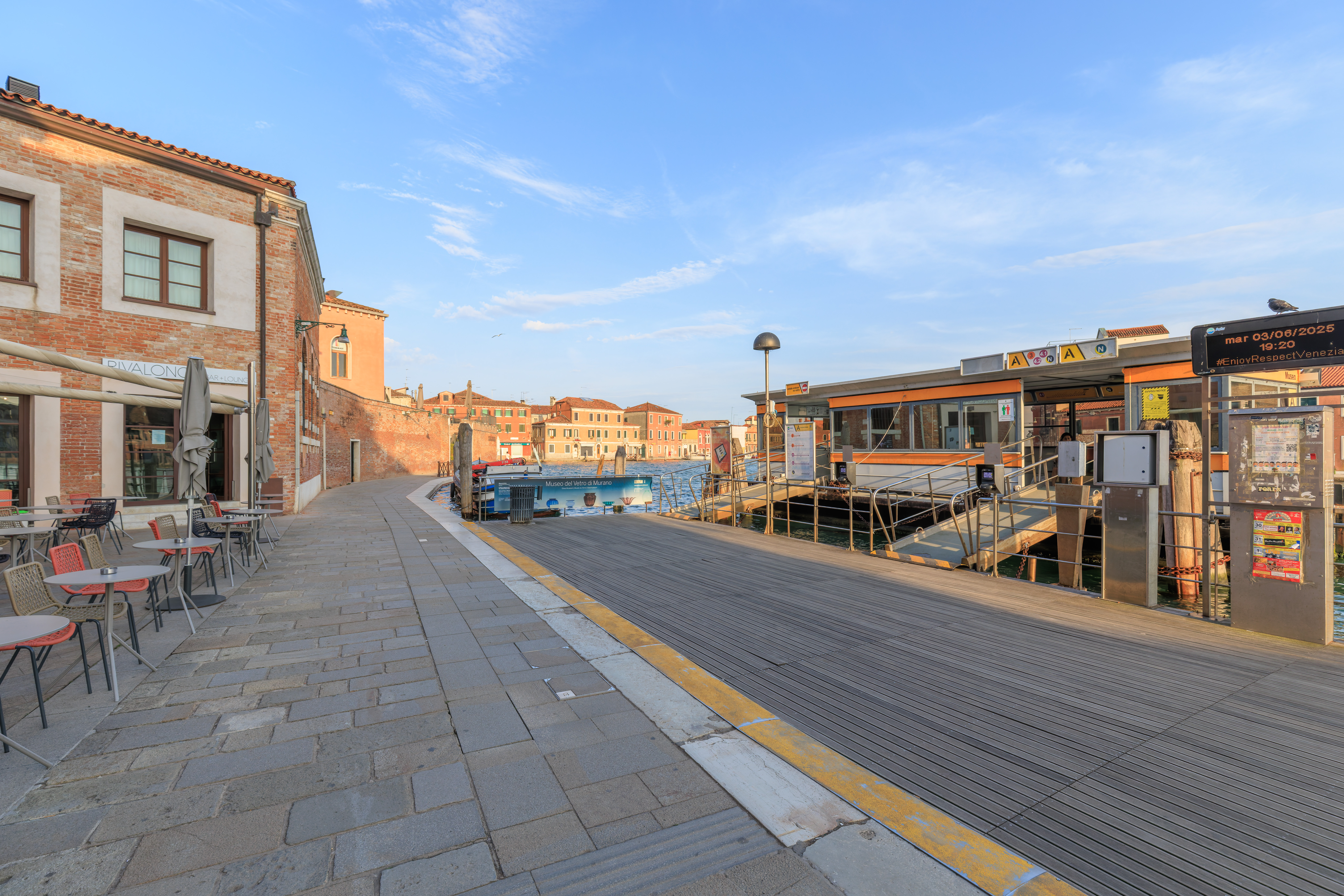
We then headed back to the Hyatt Centric to eat our snacks and to end the day. This was the view to the east as we entered with the Murano Museo quays to the right and the Hyatt Centric to the left.
